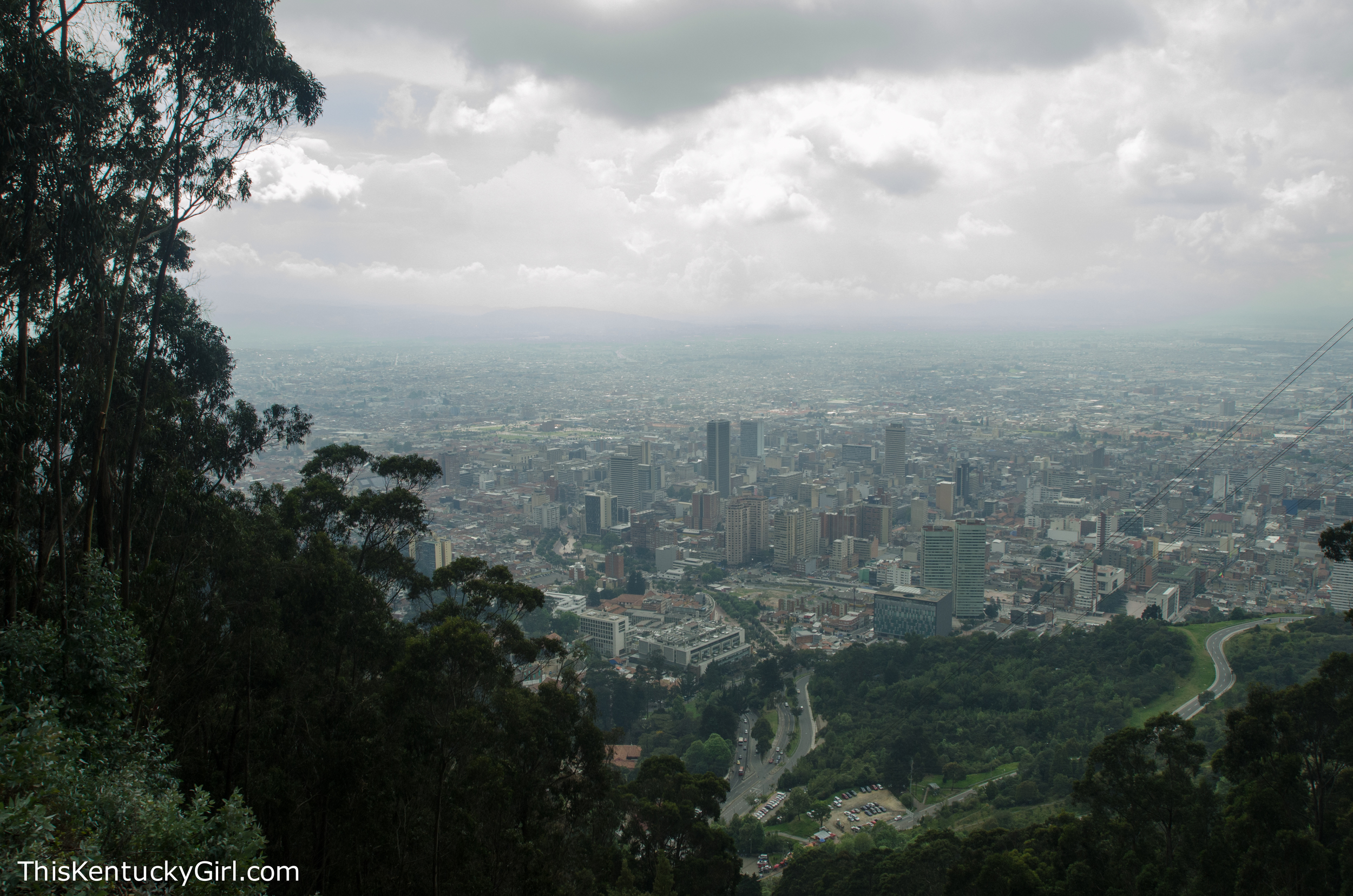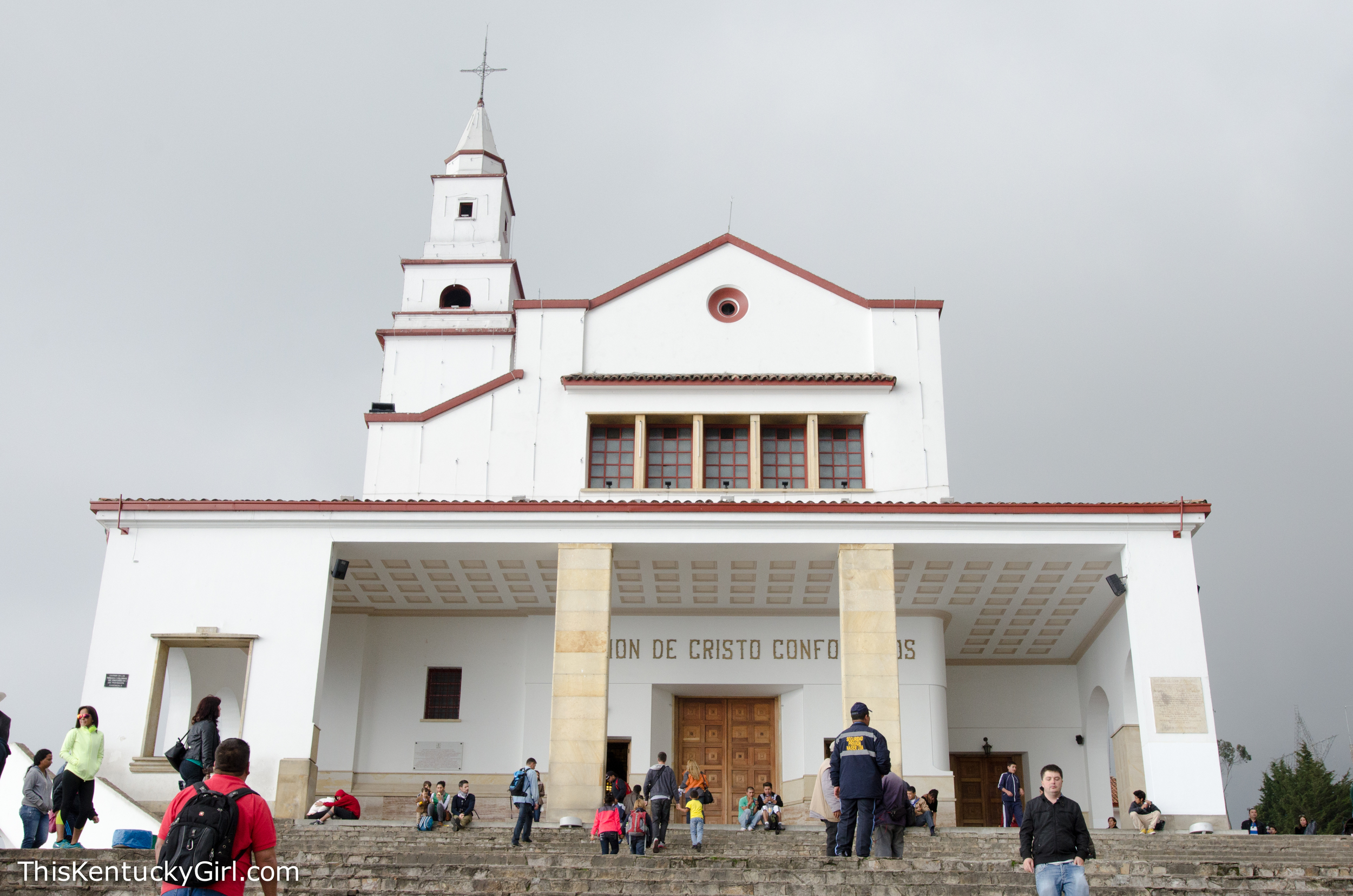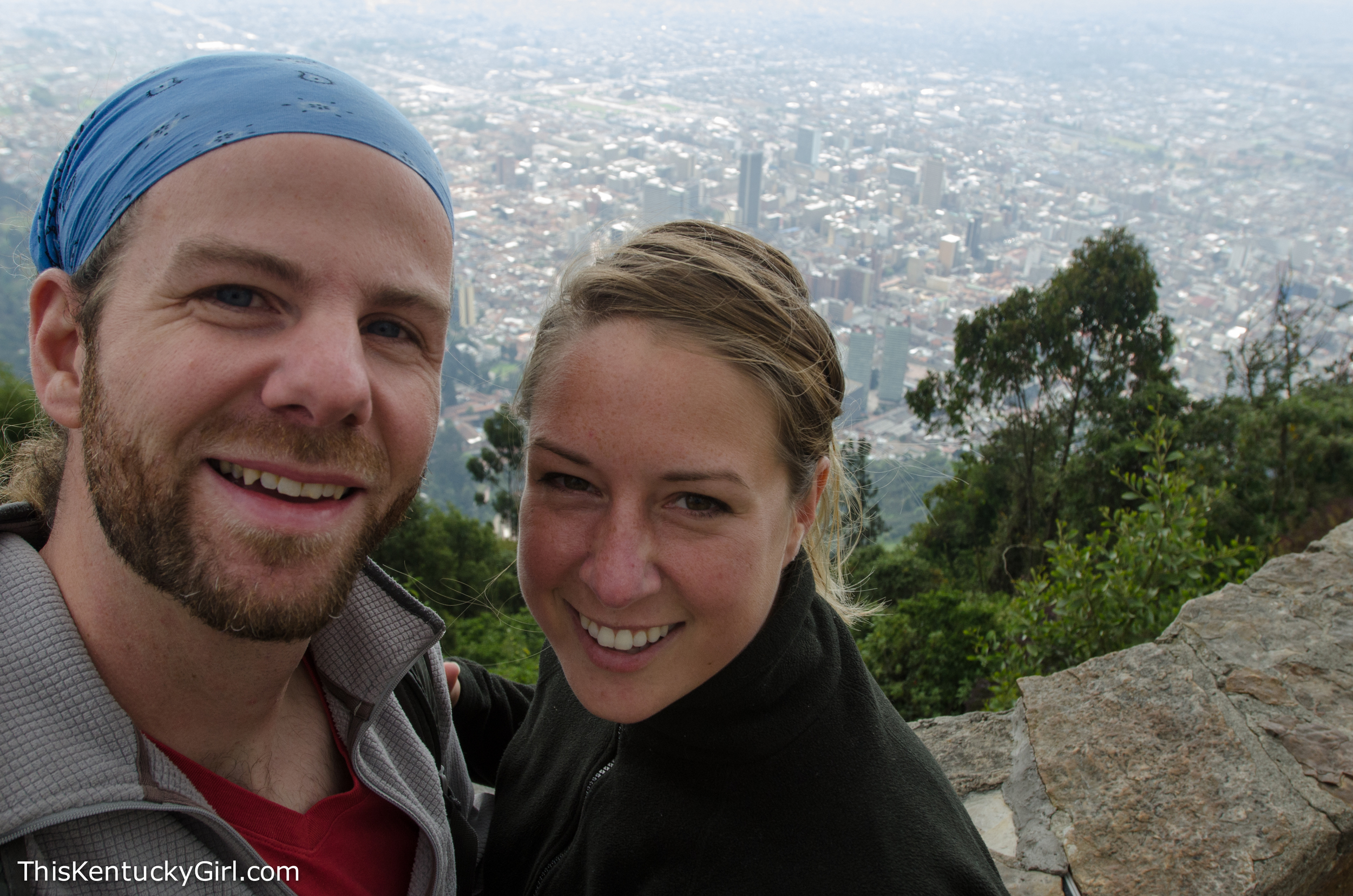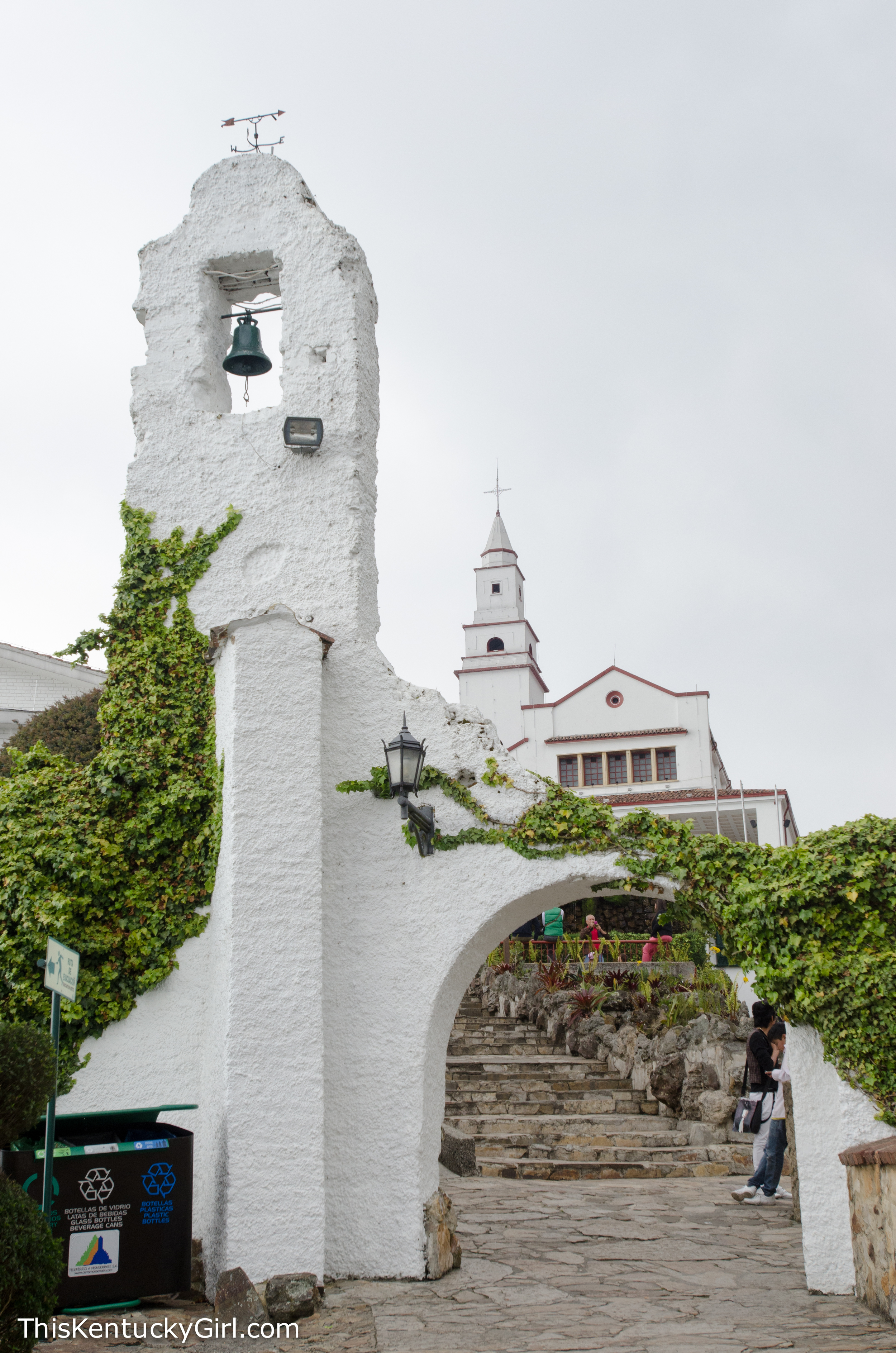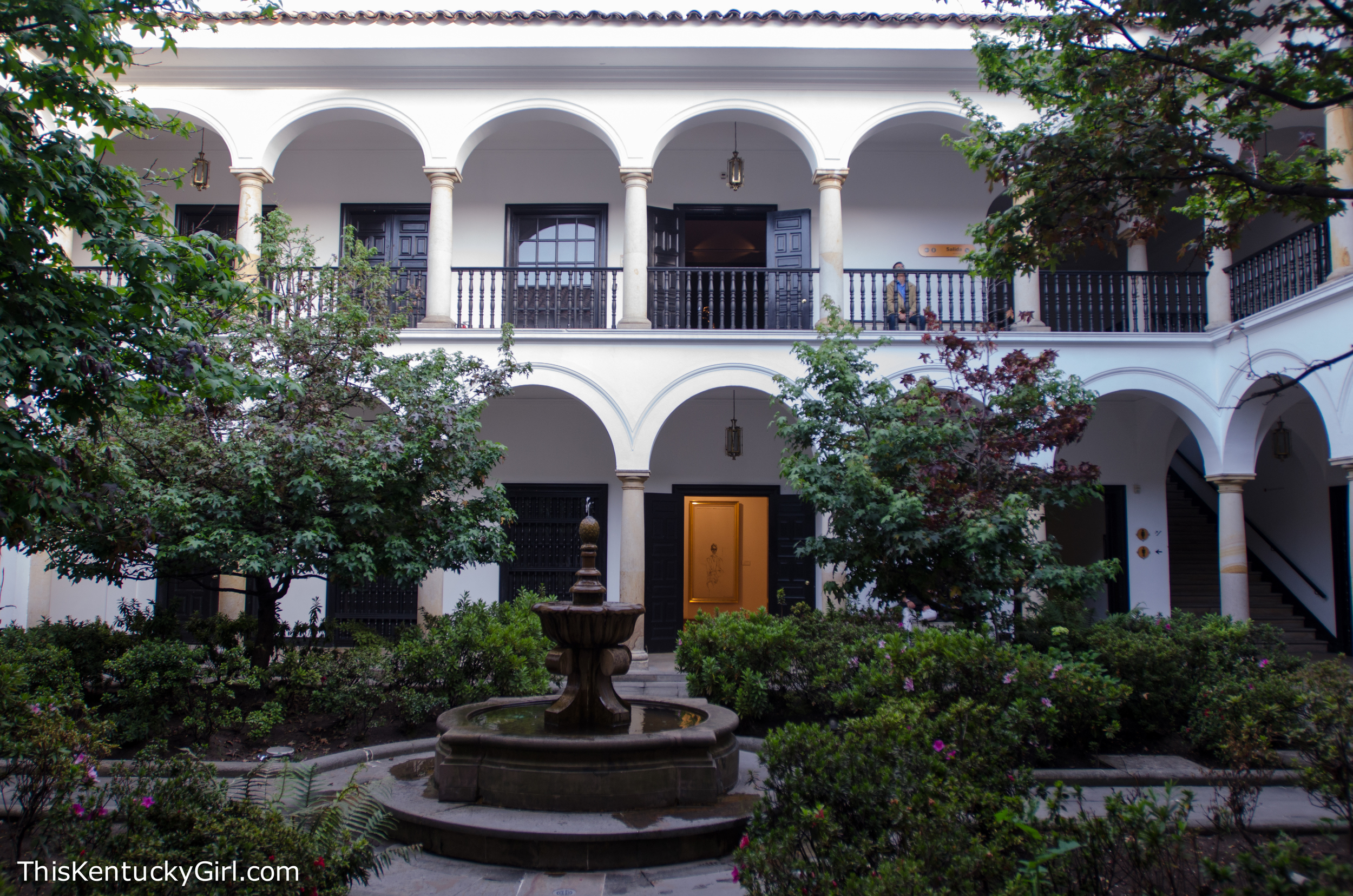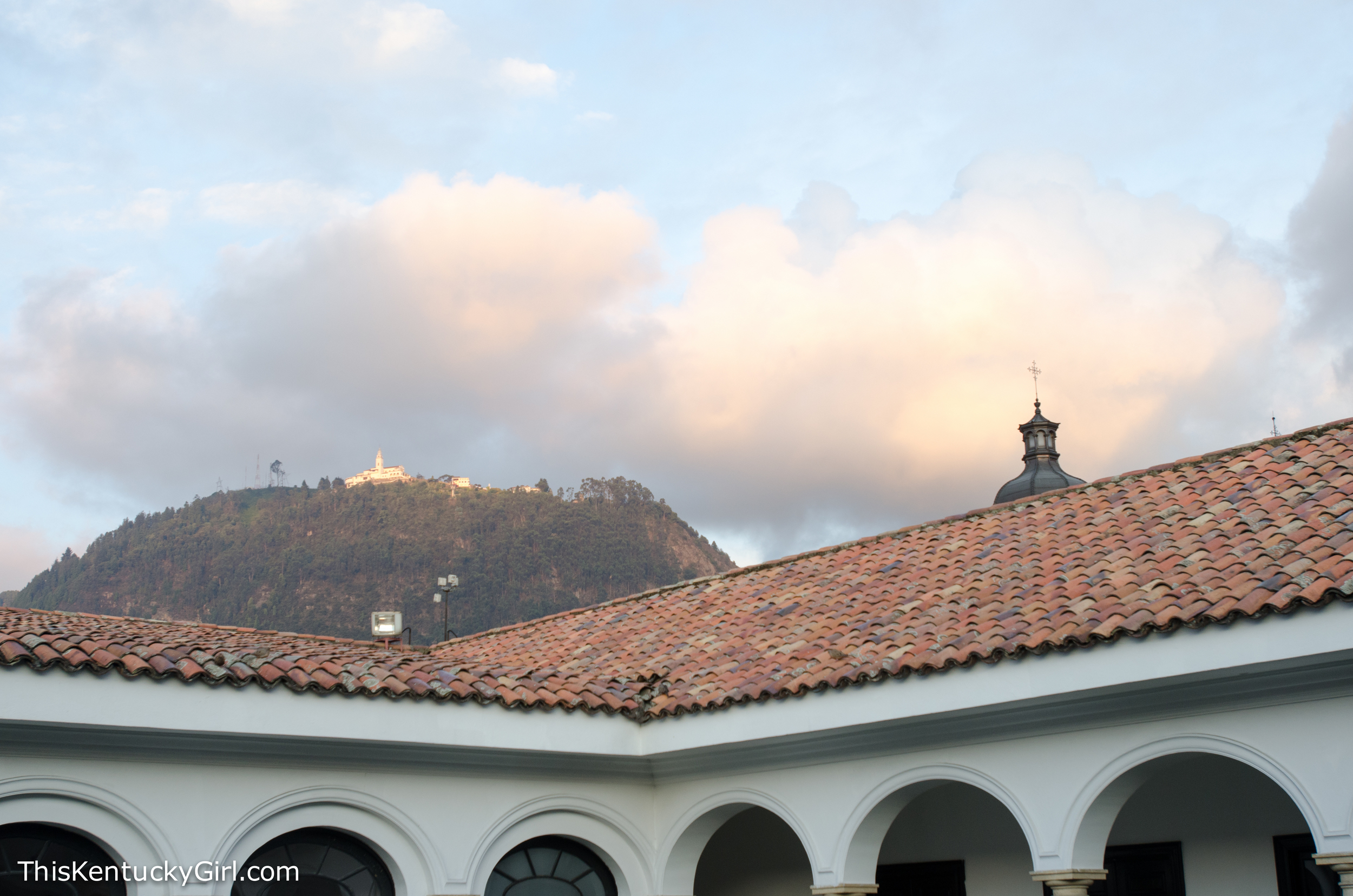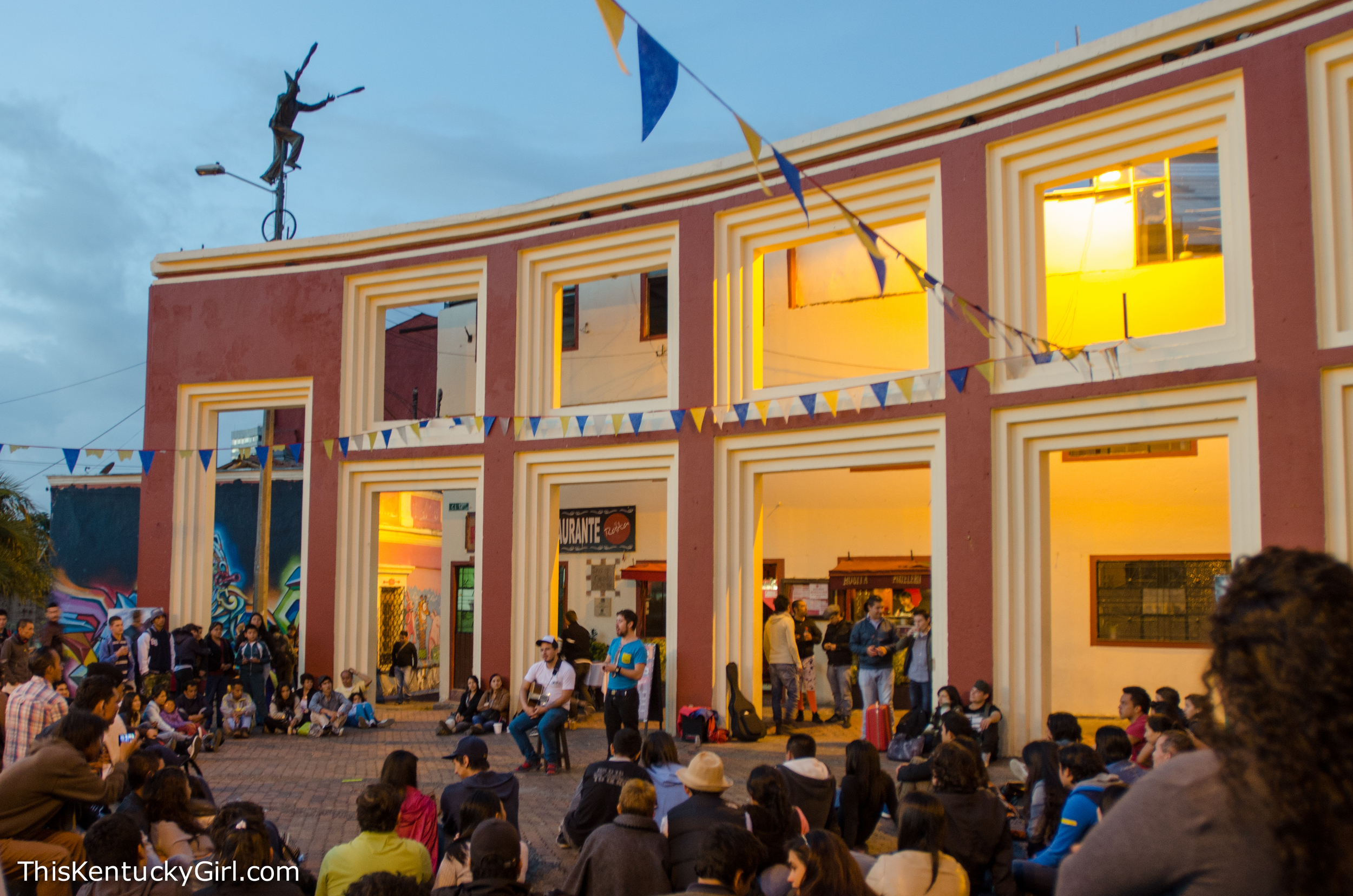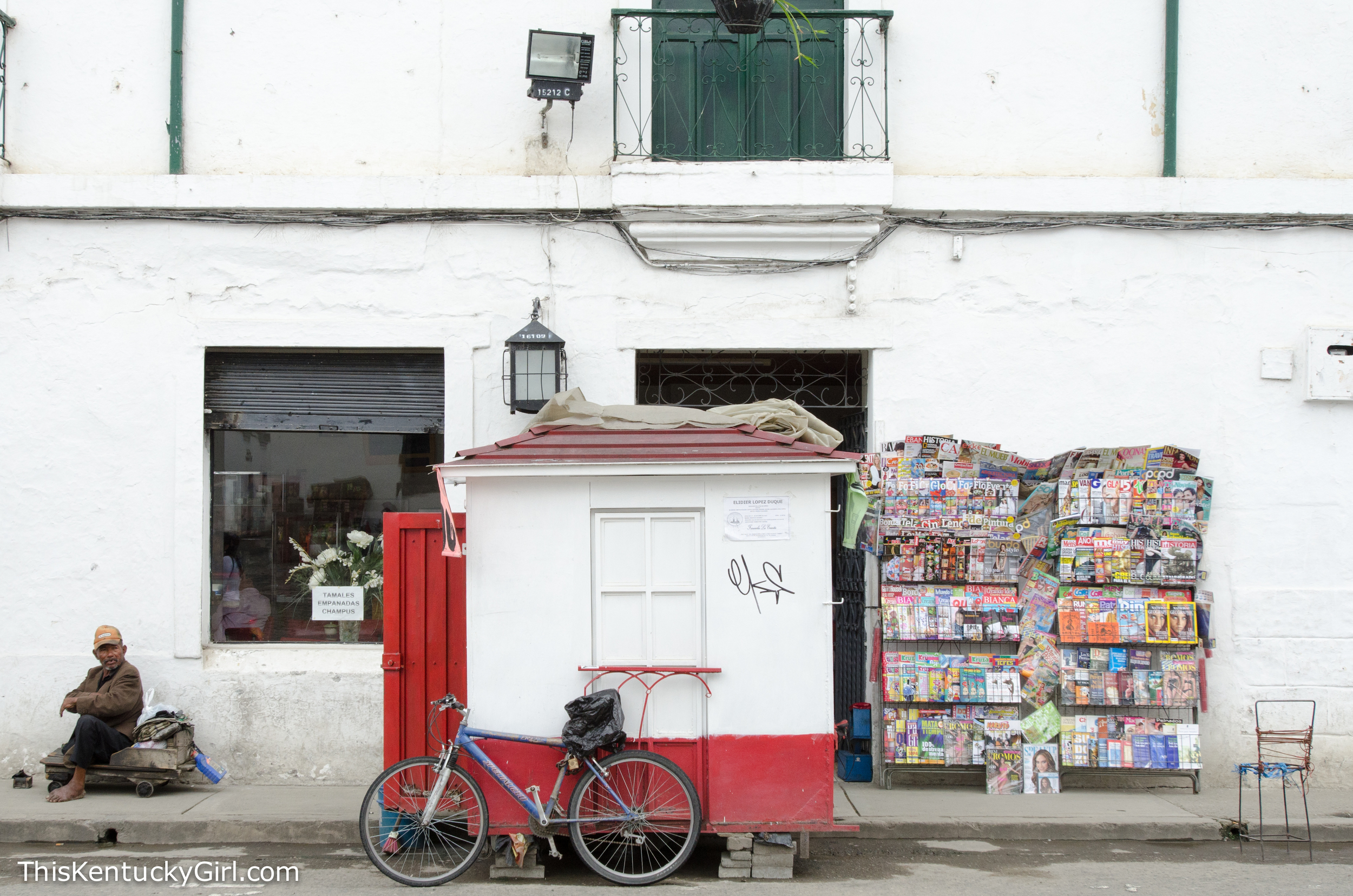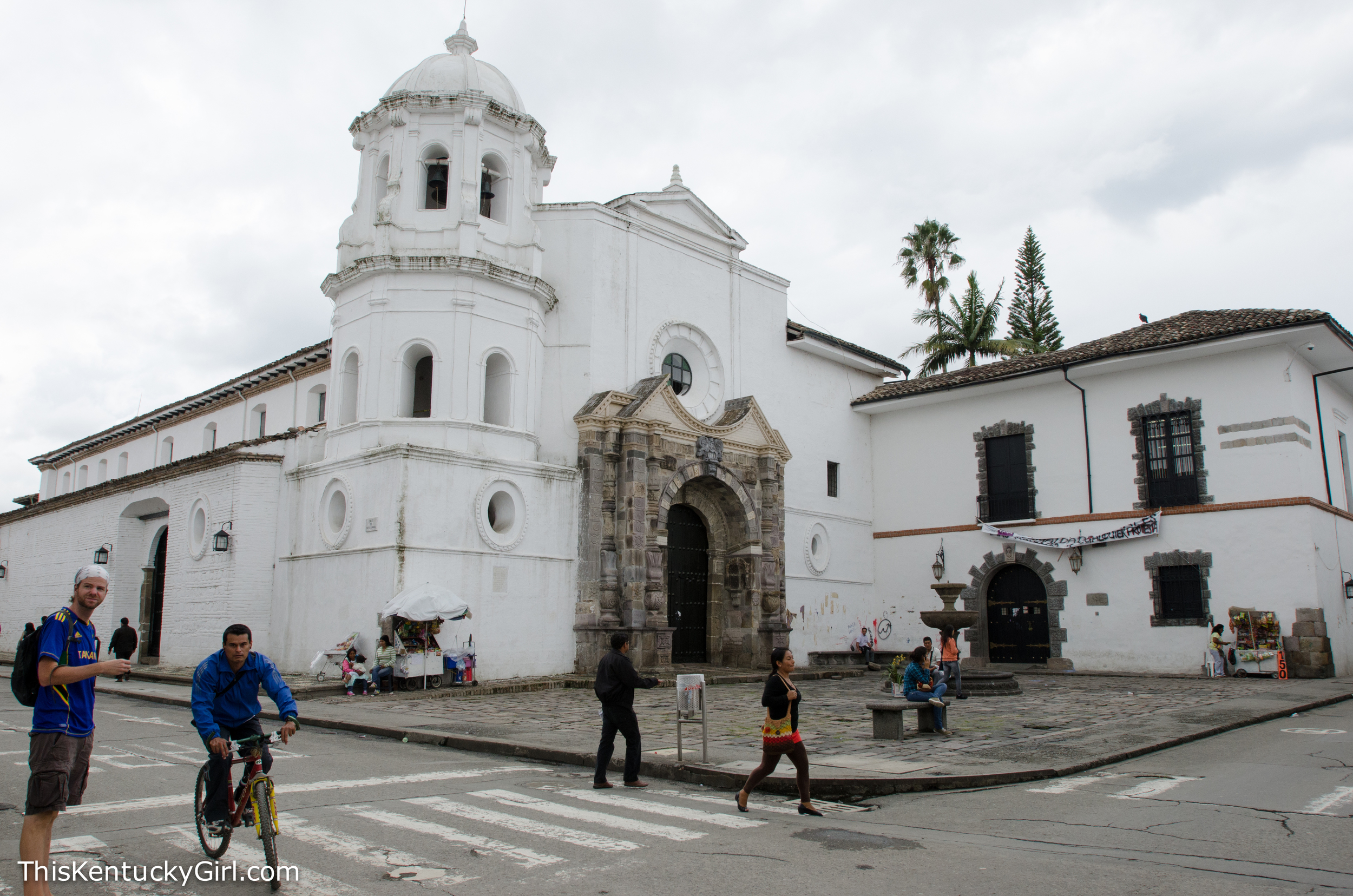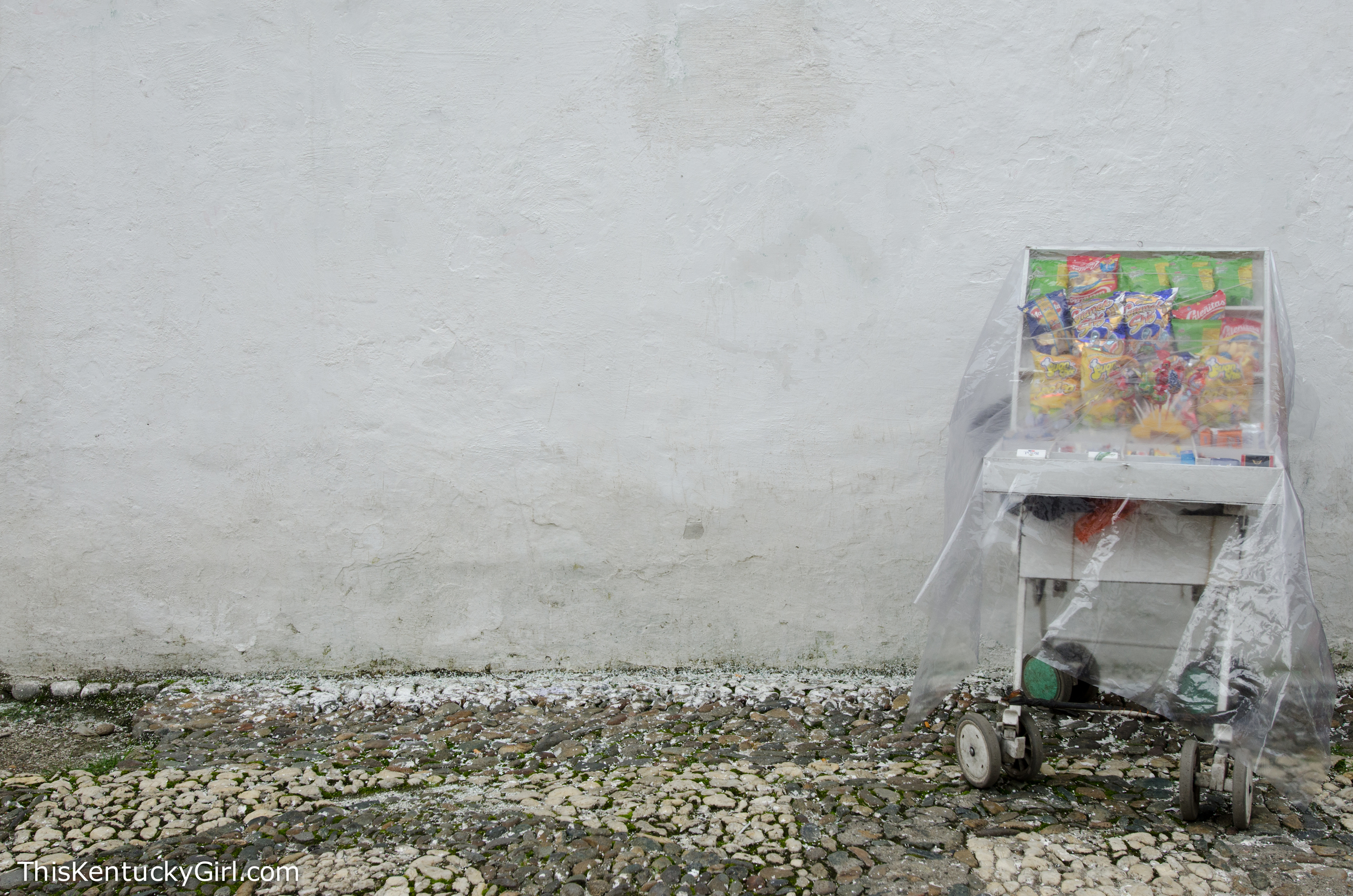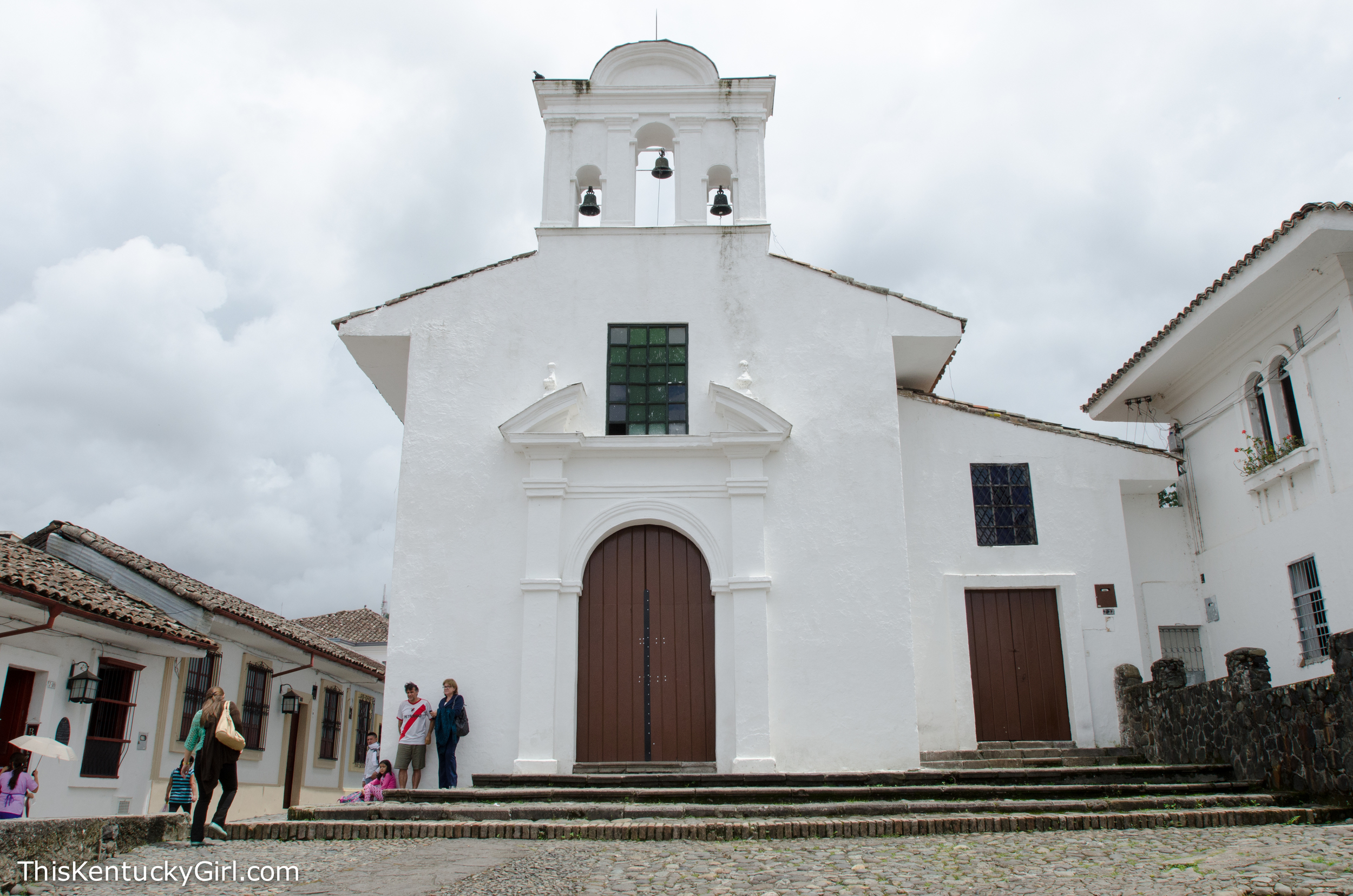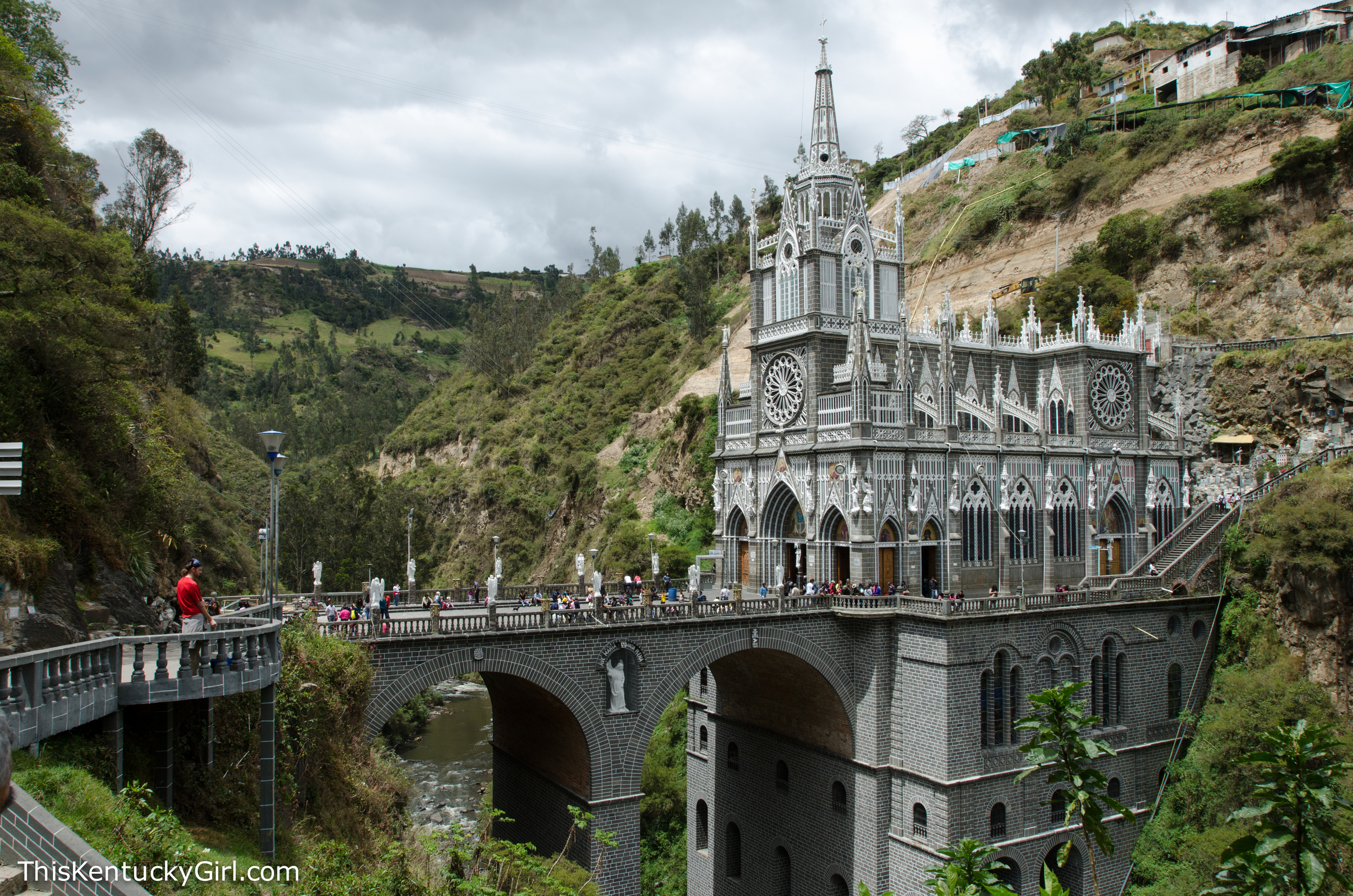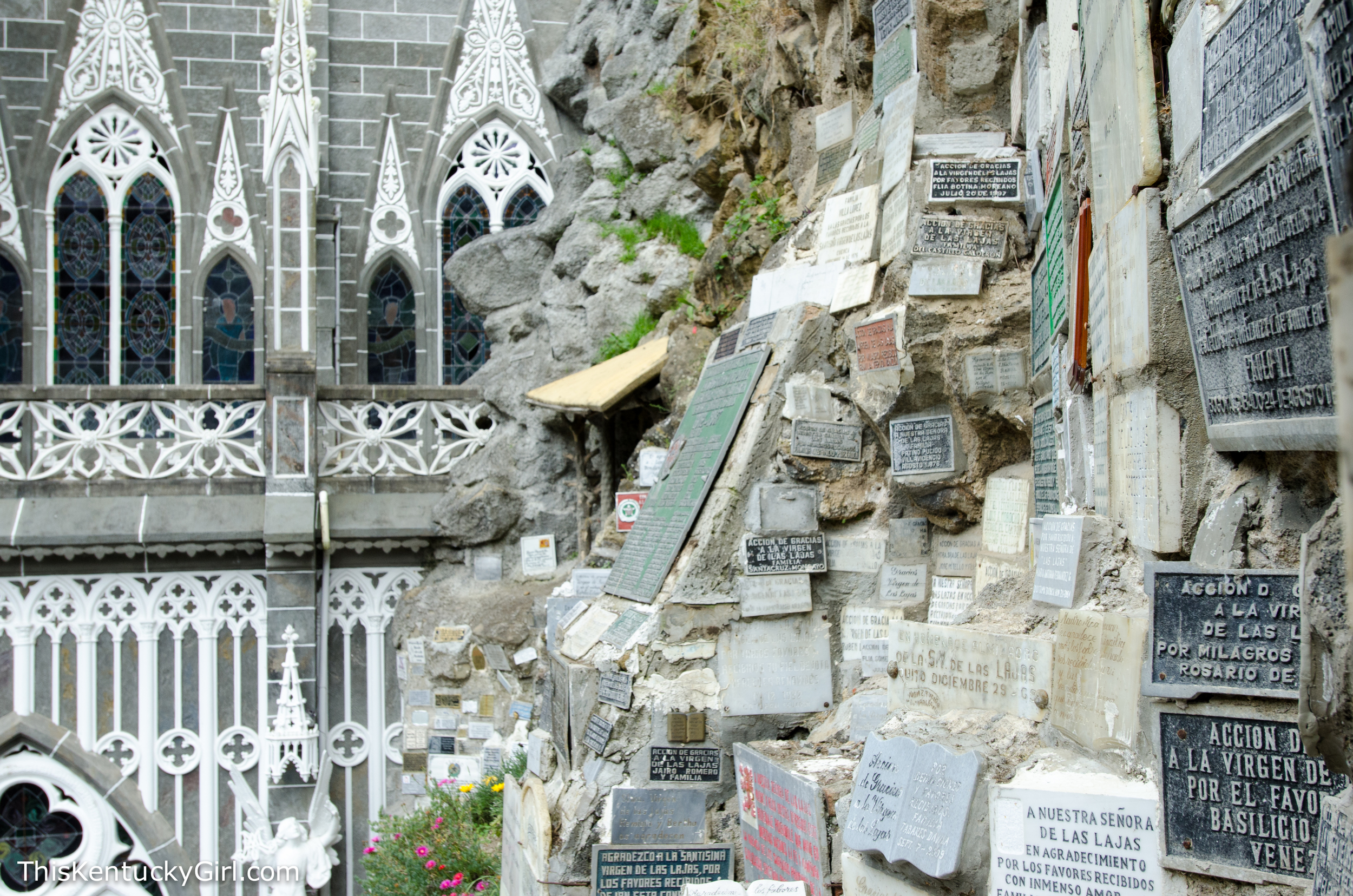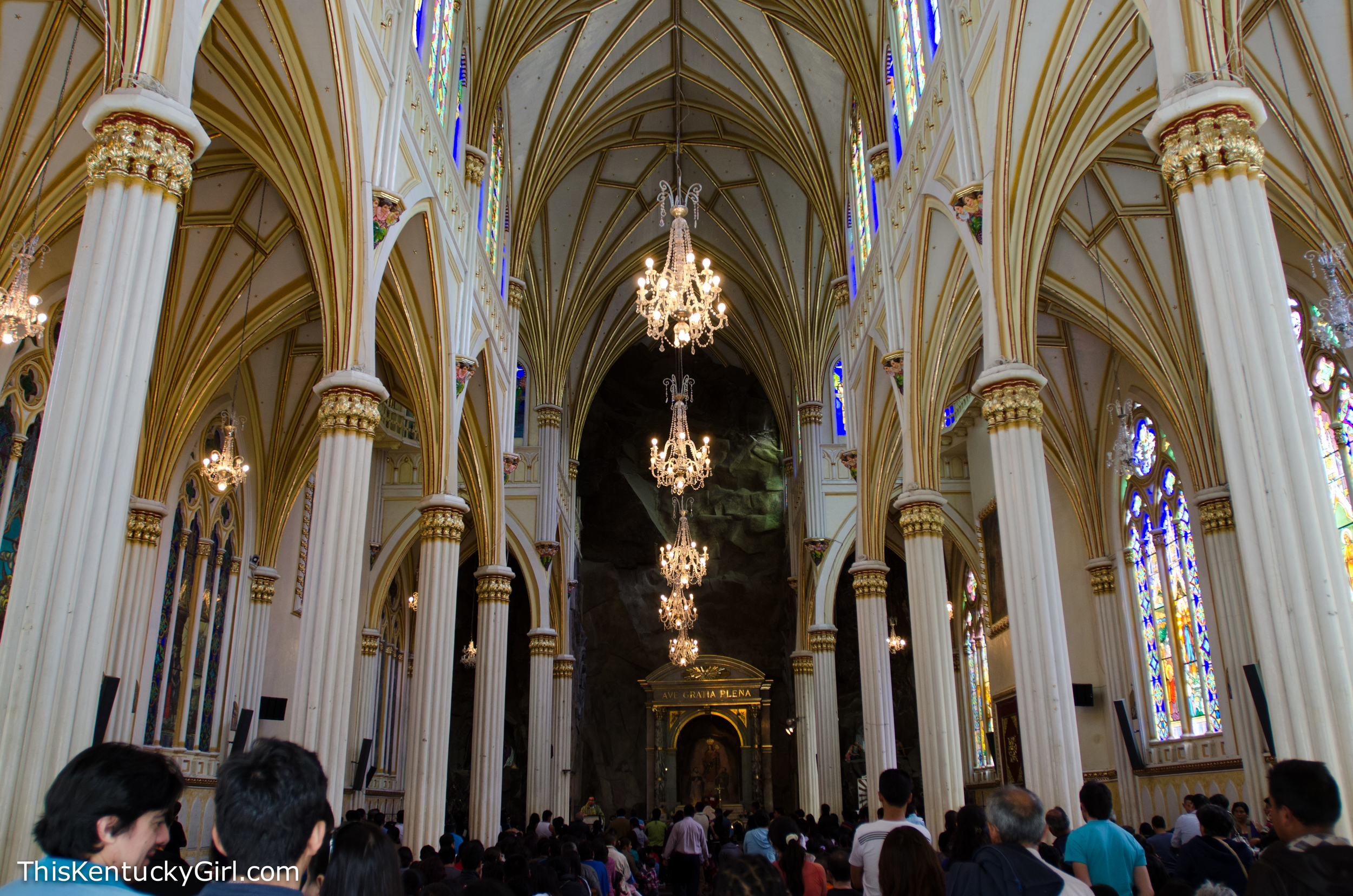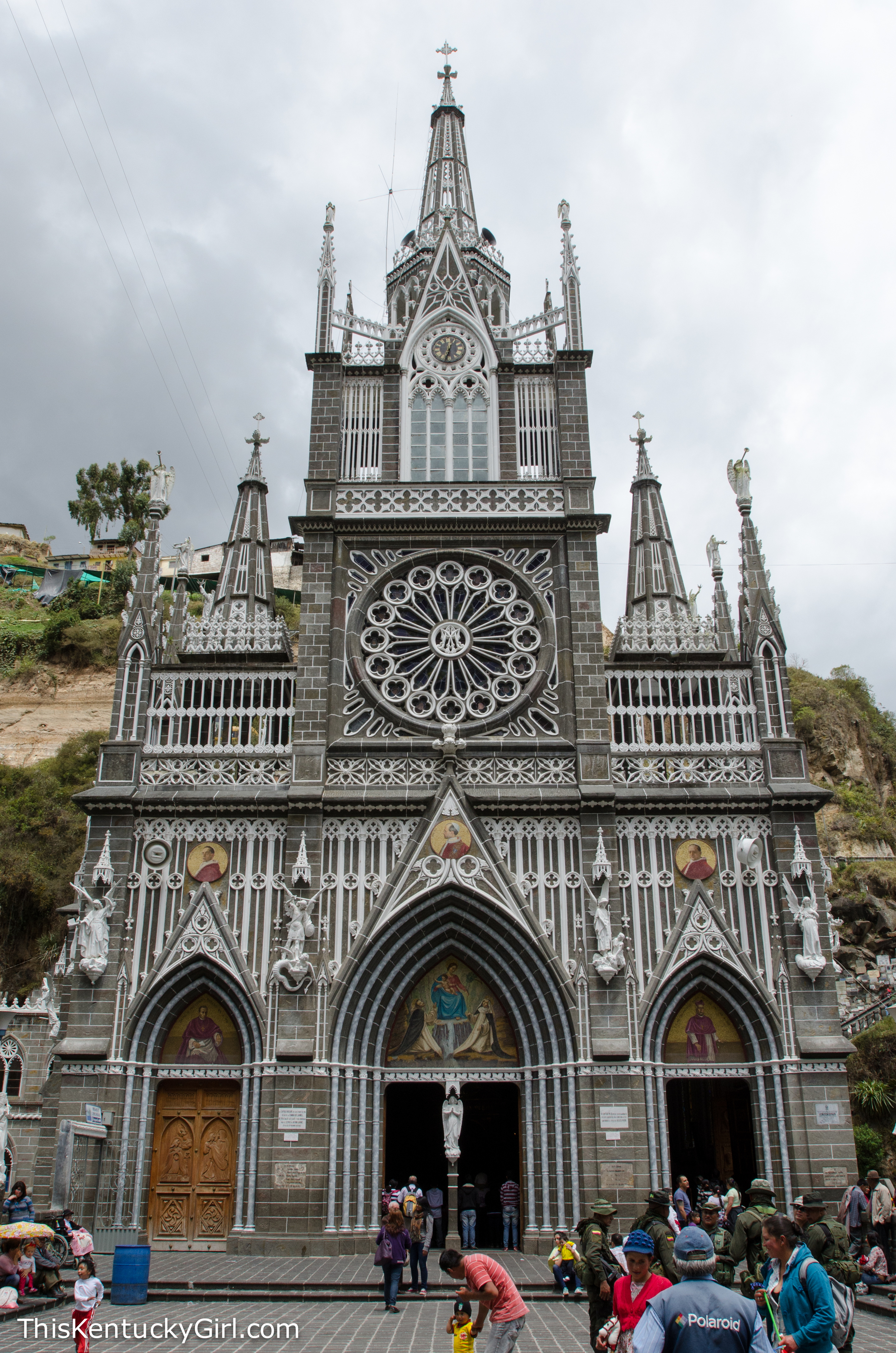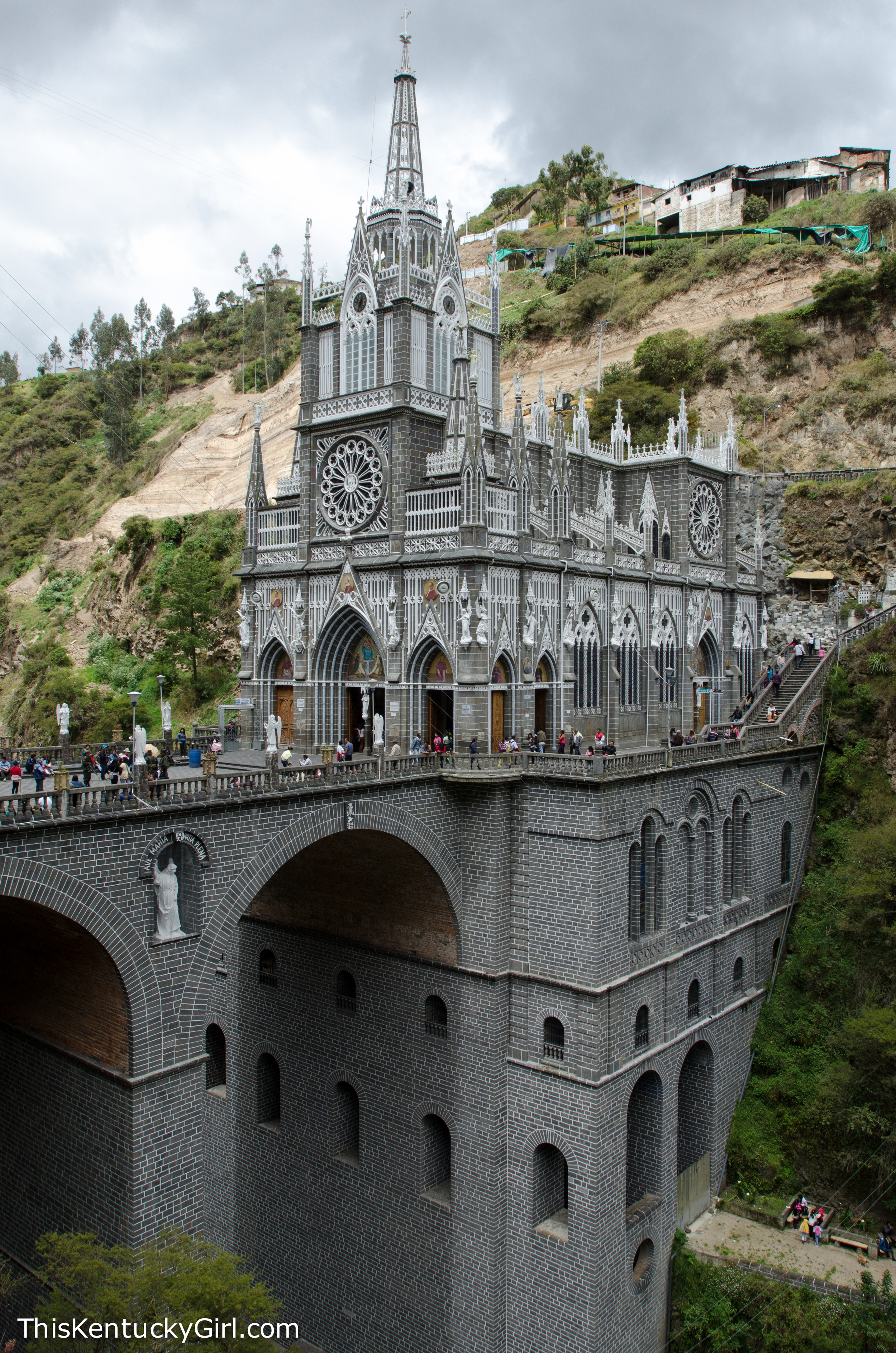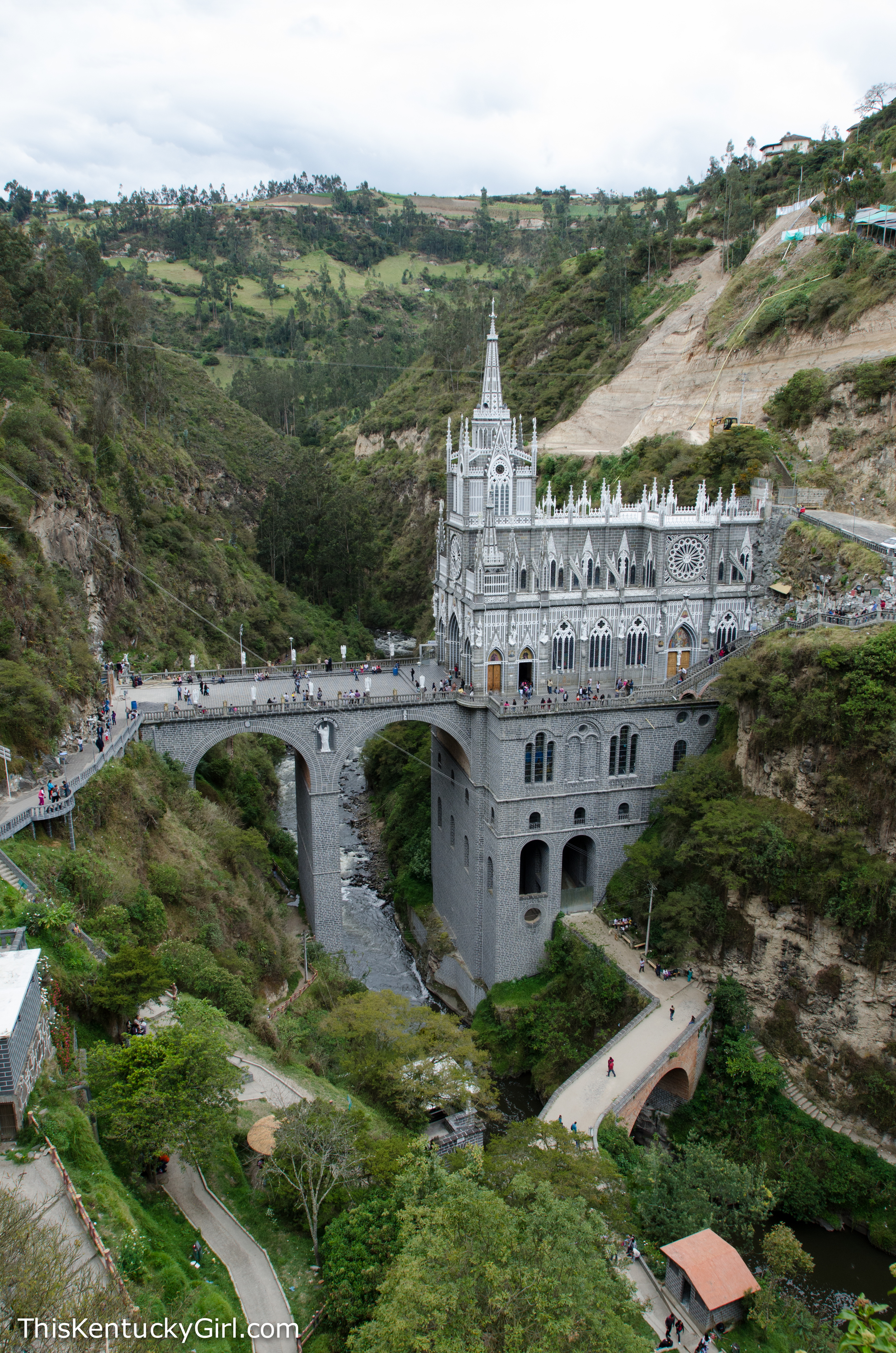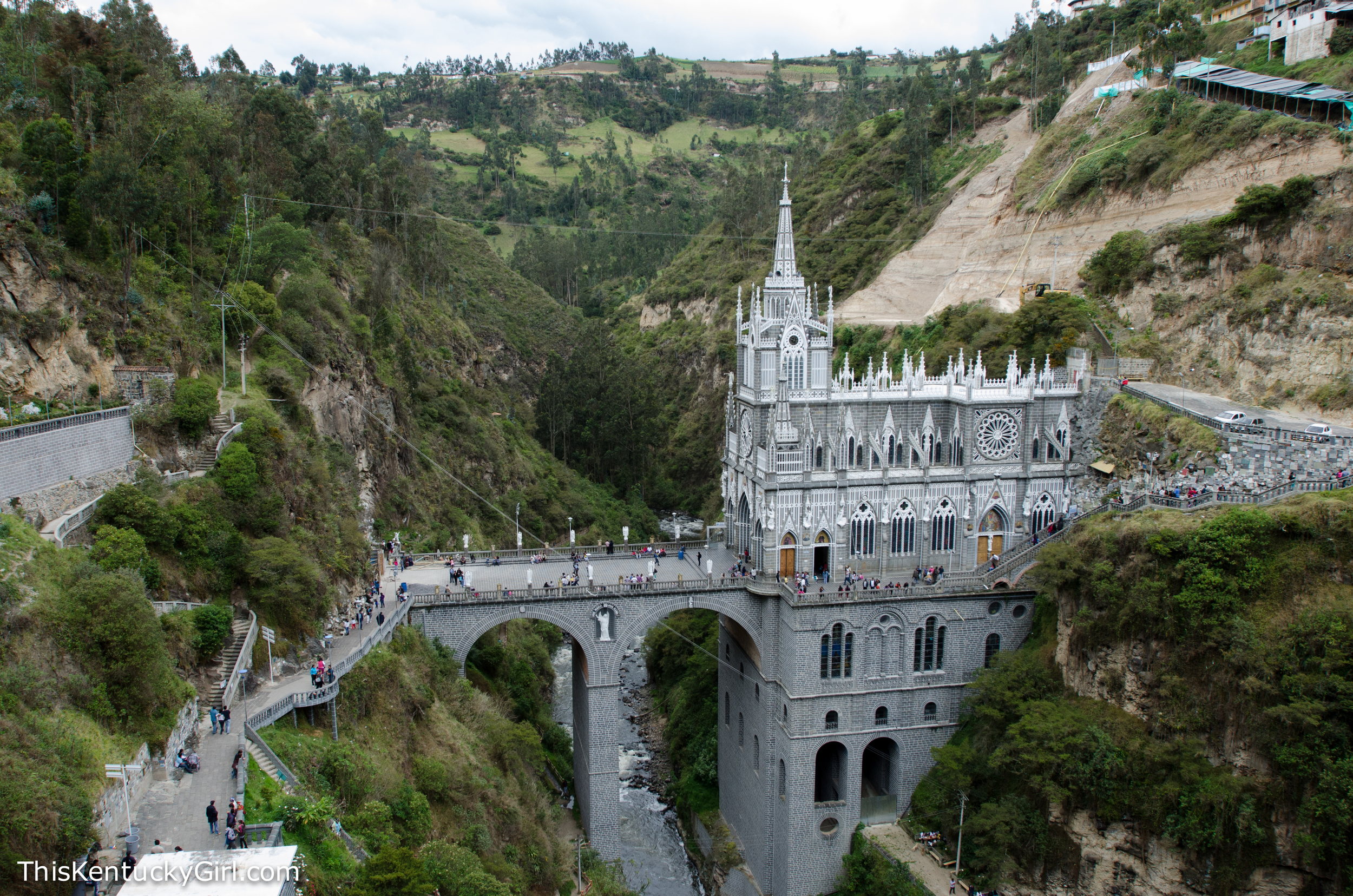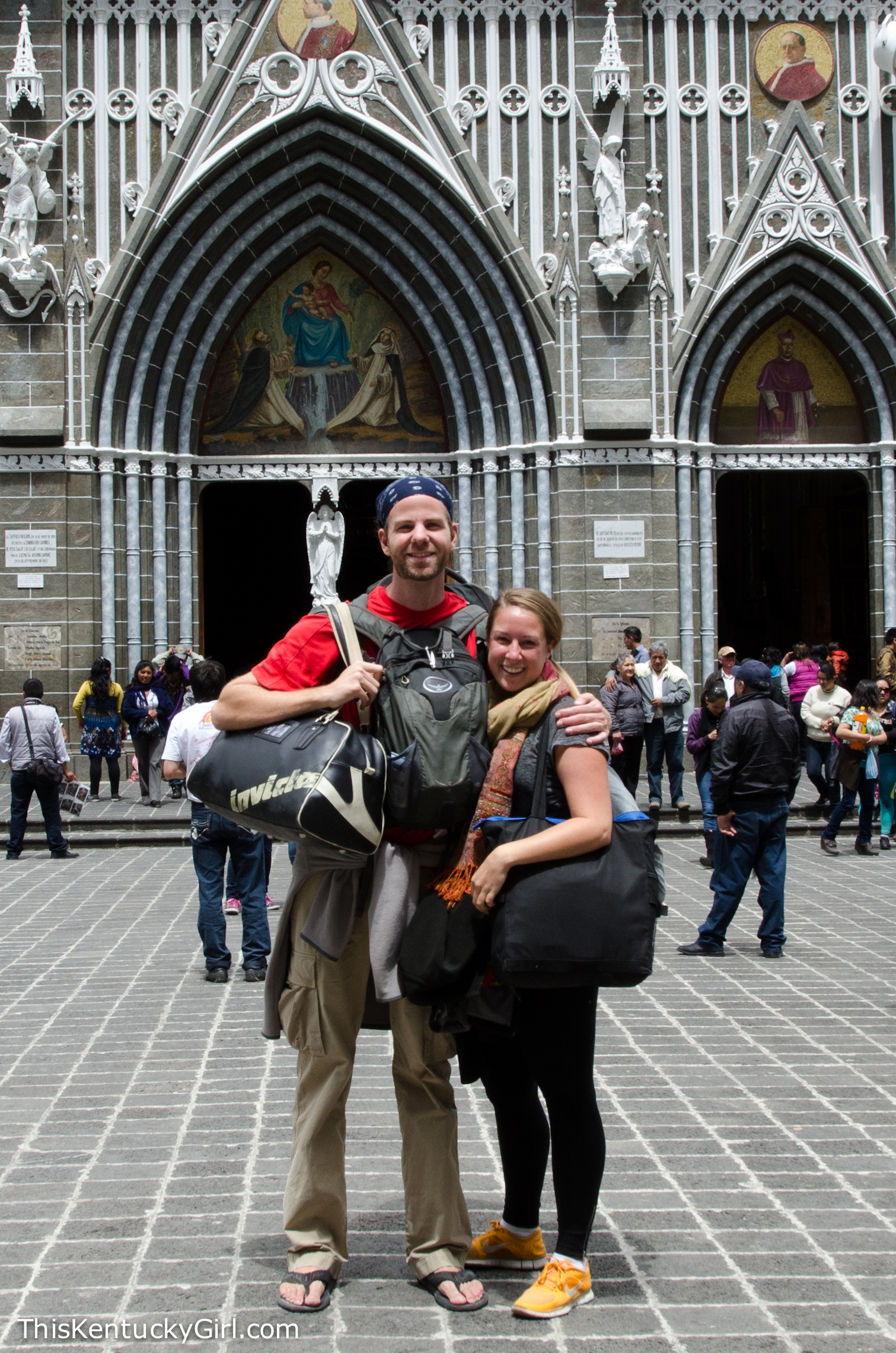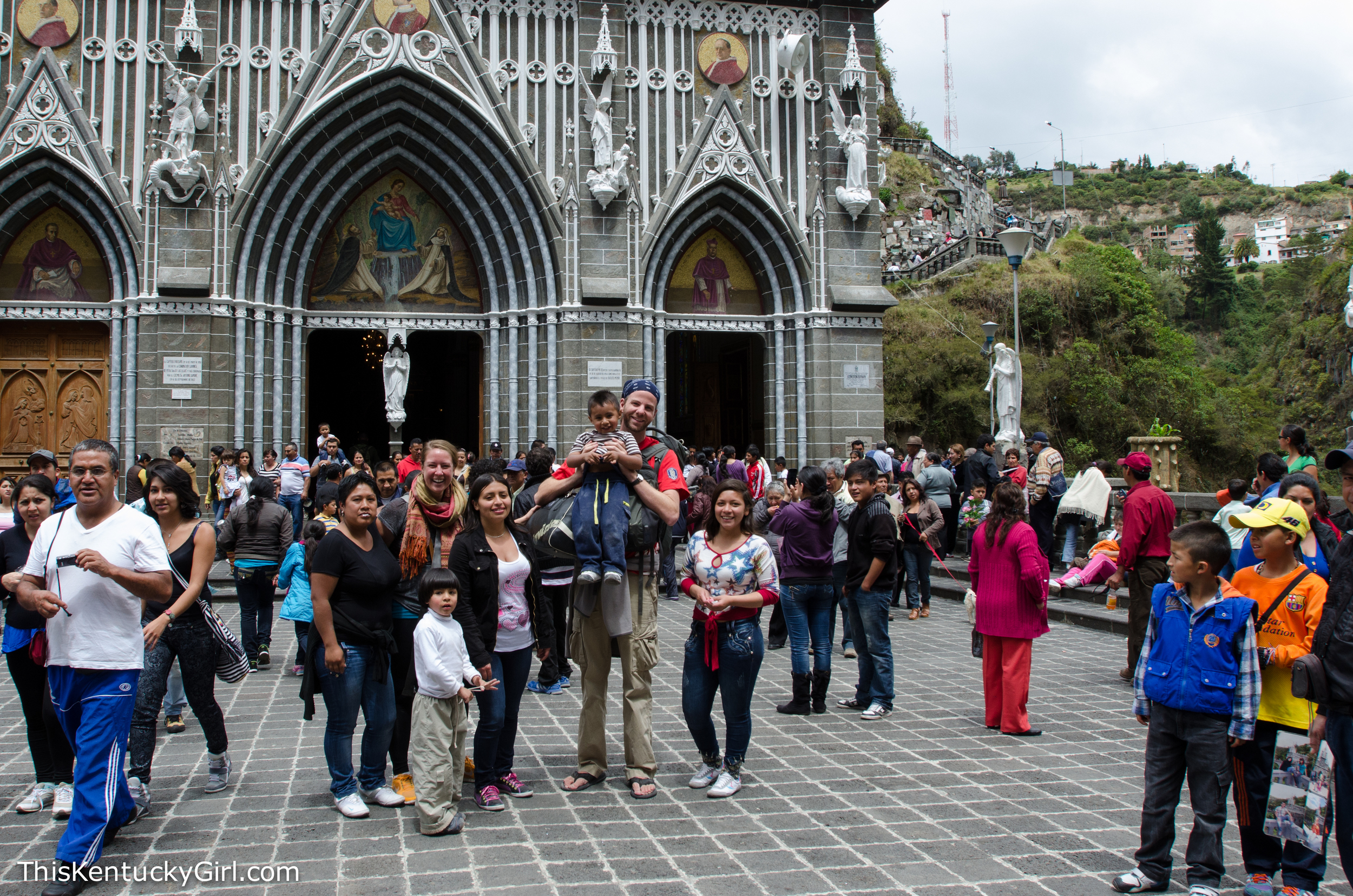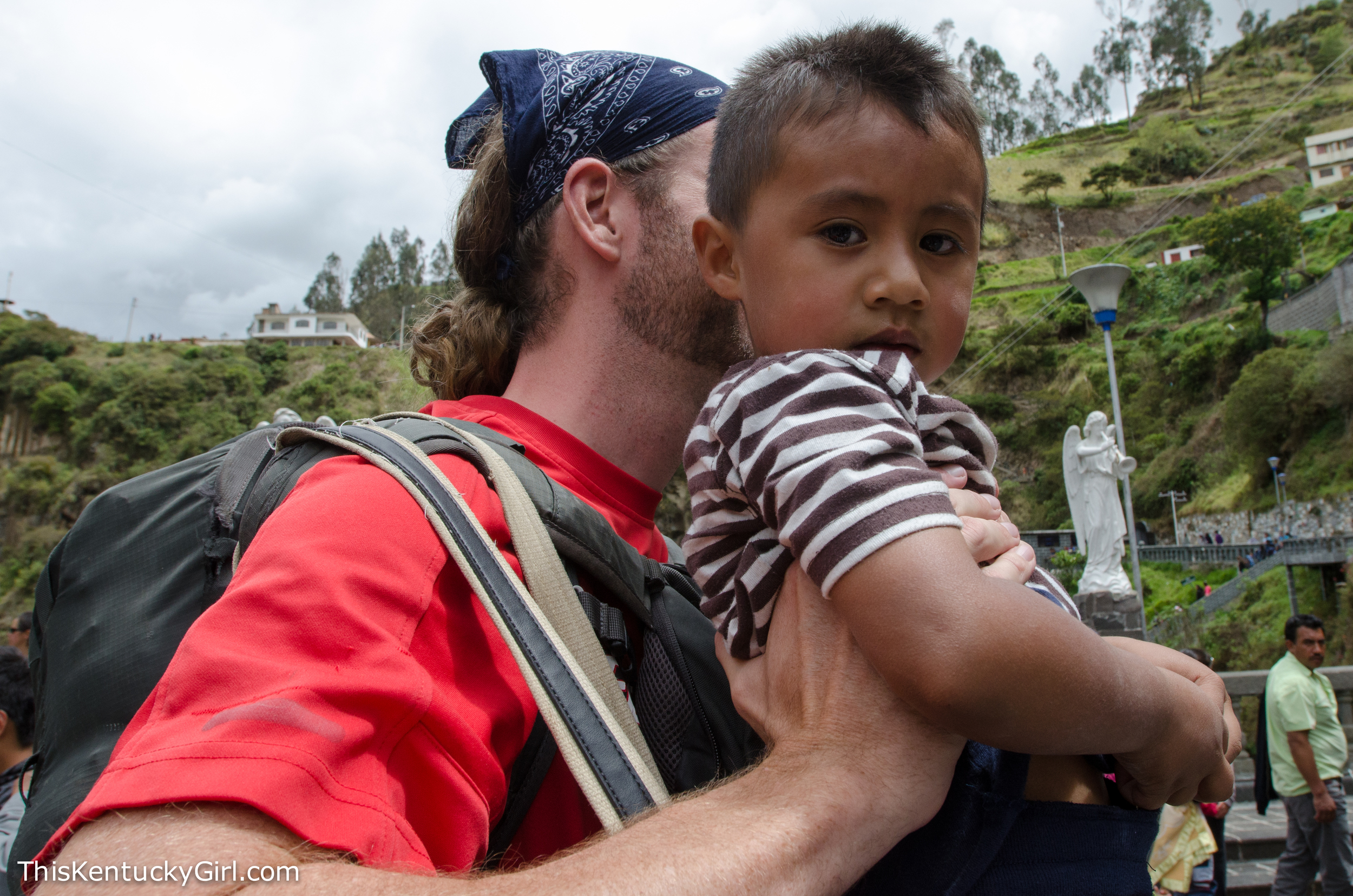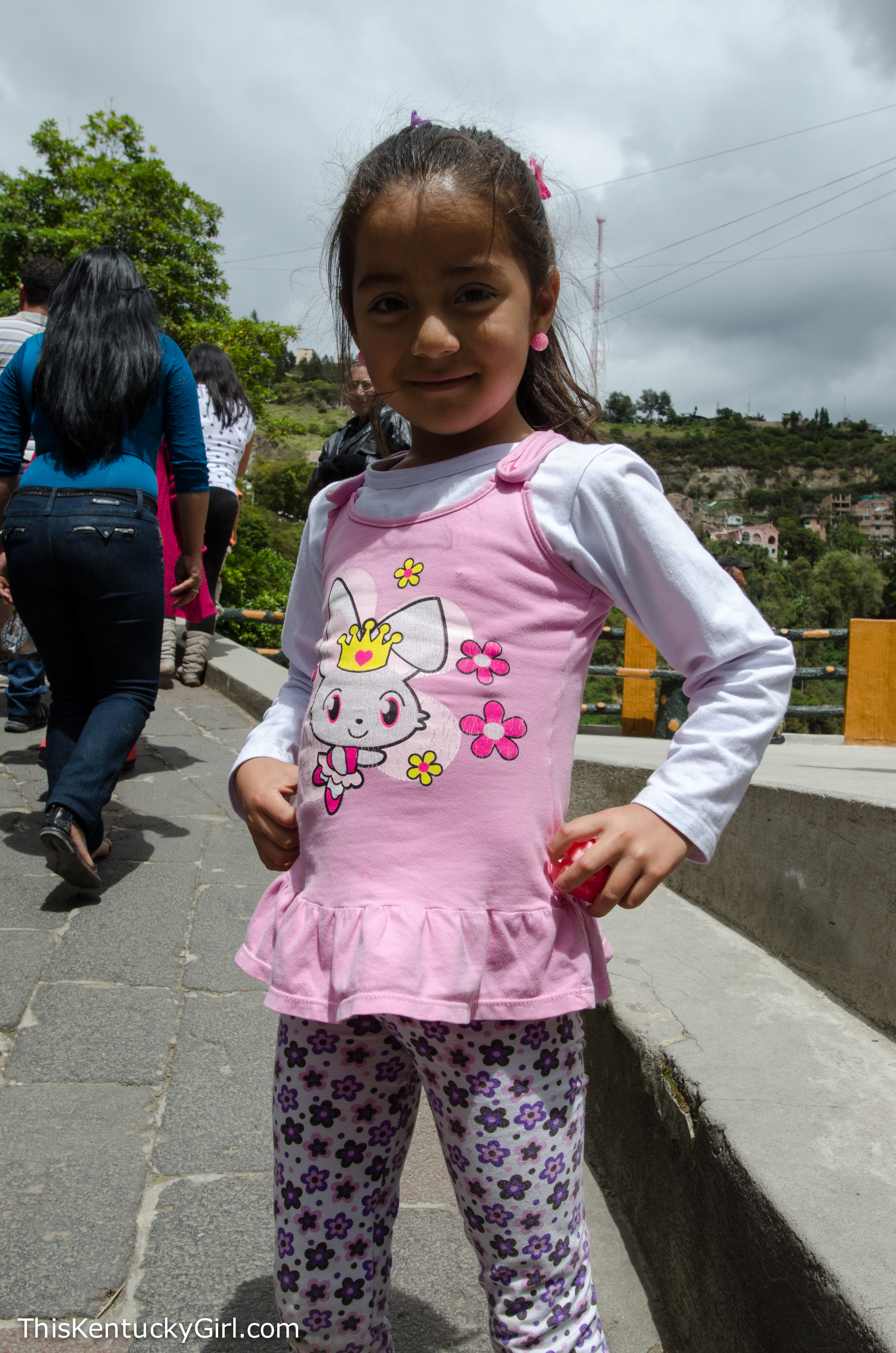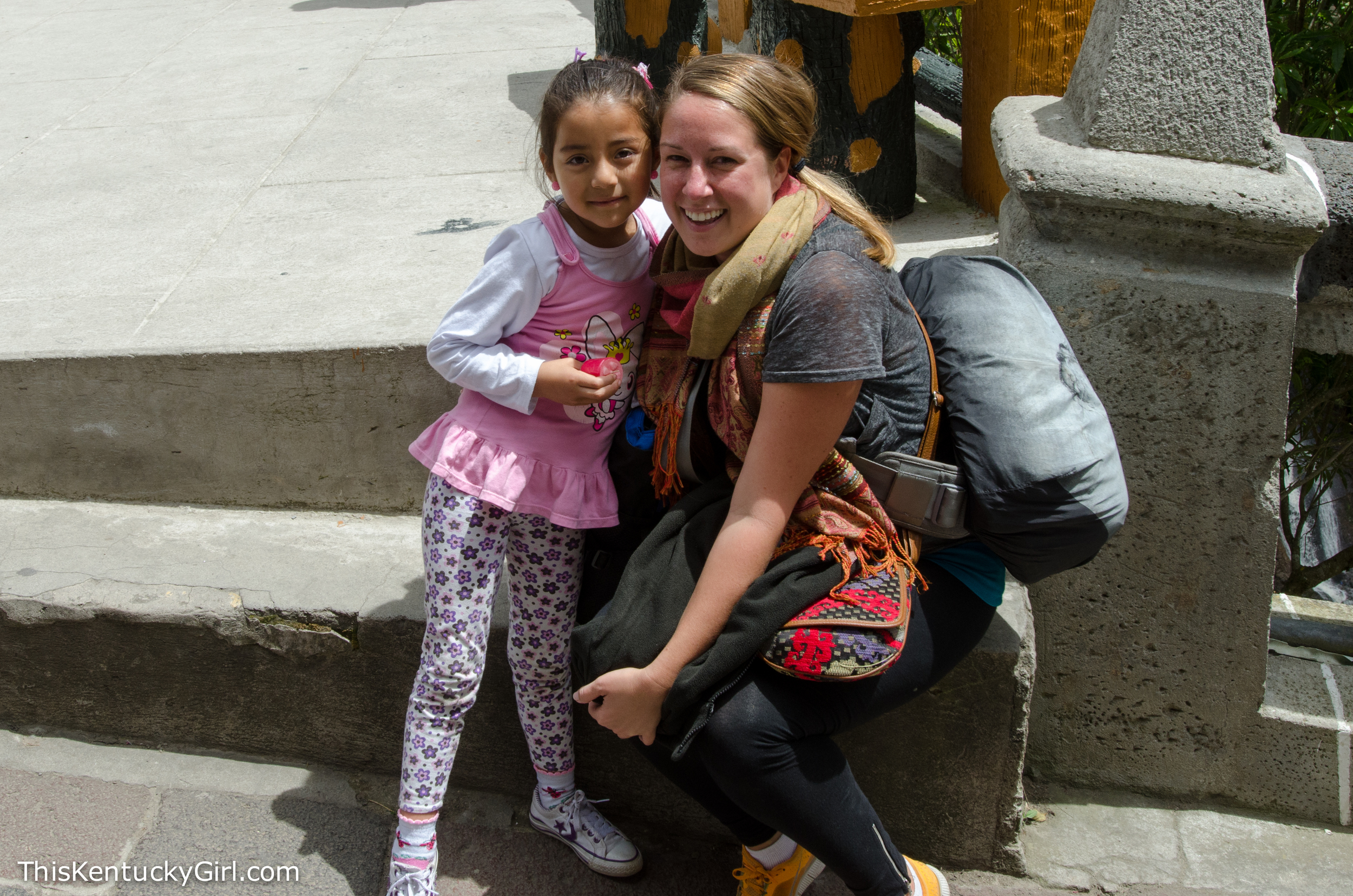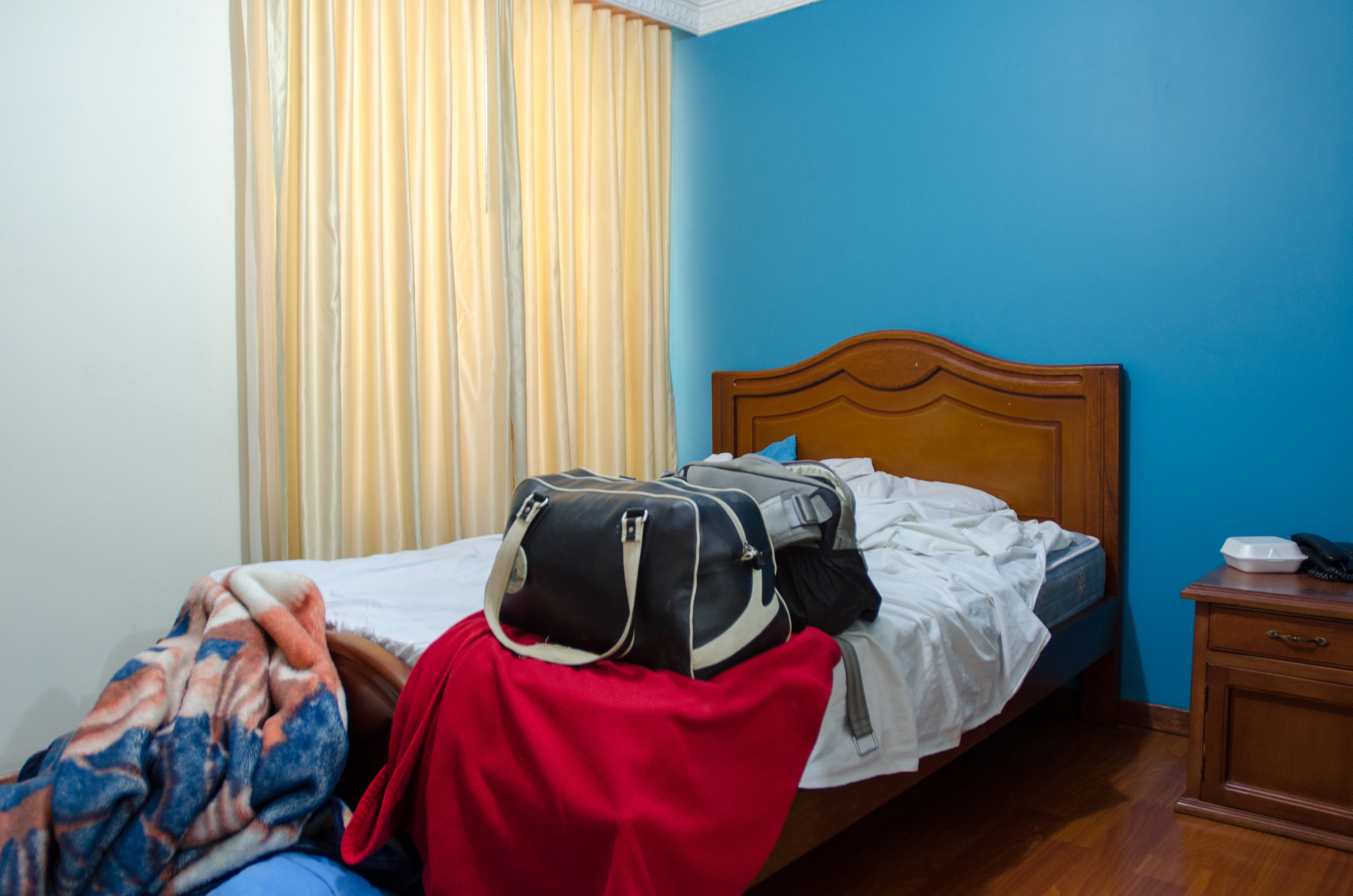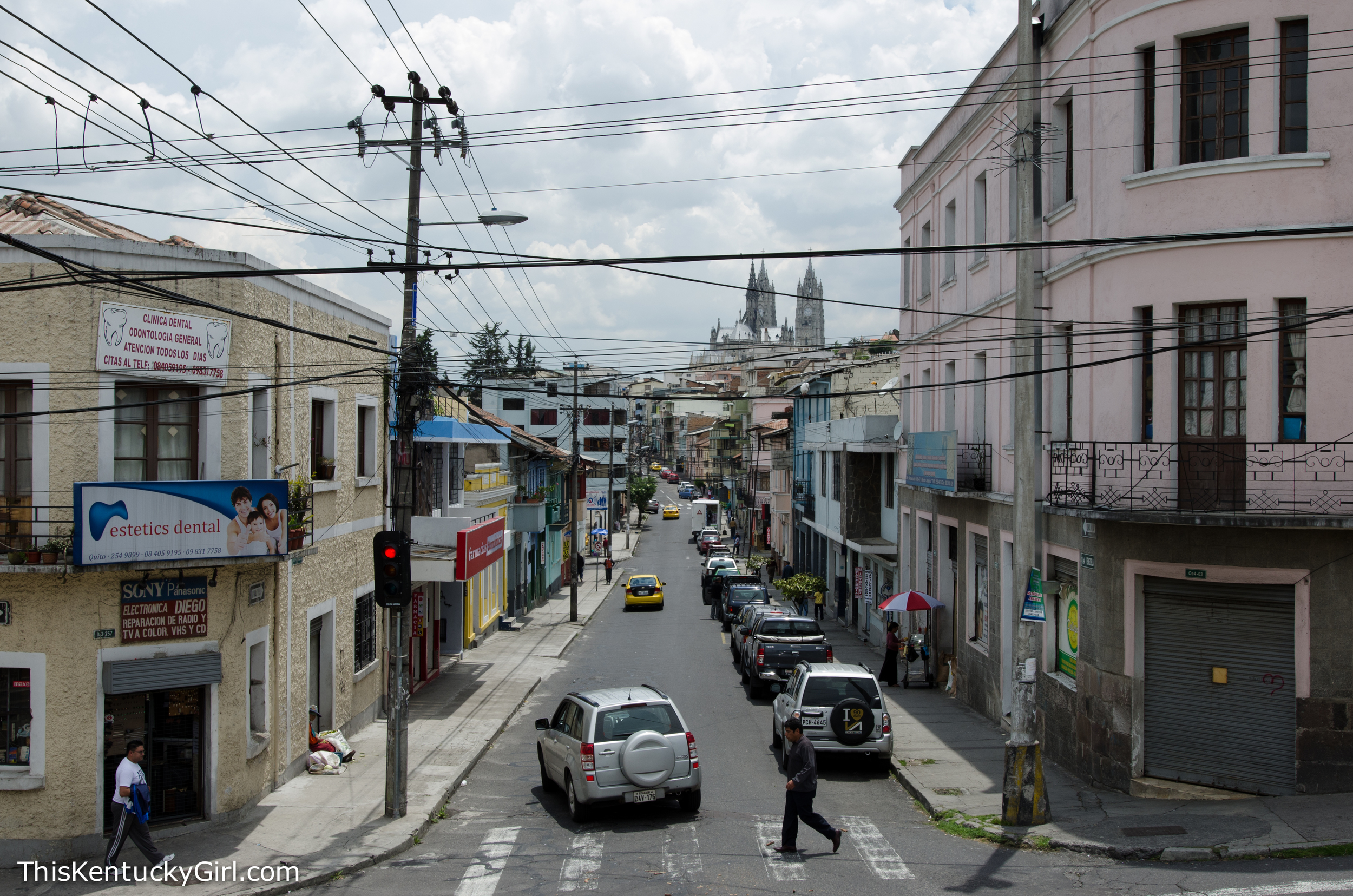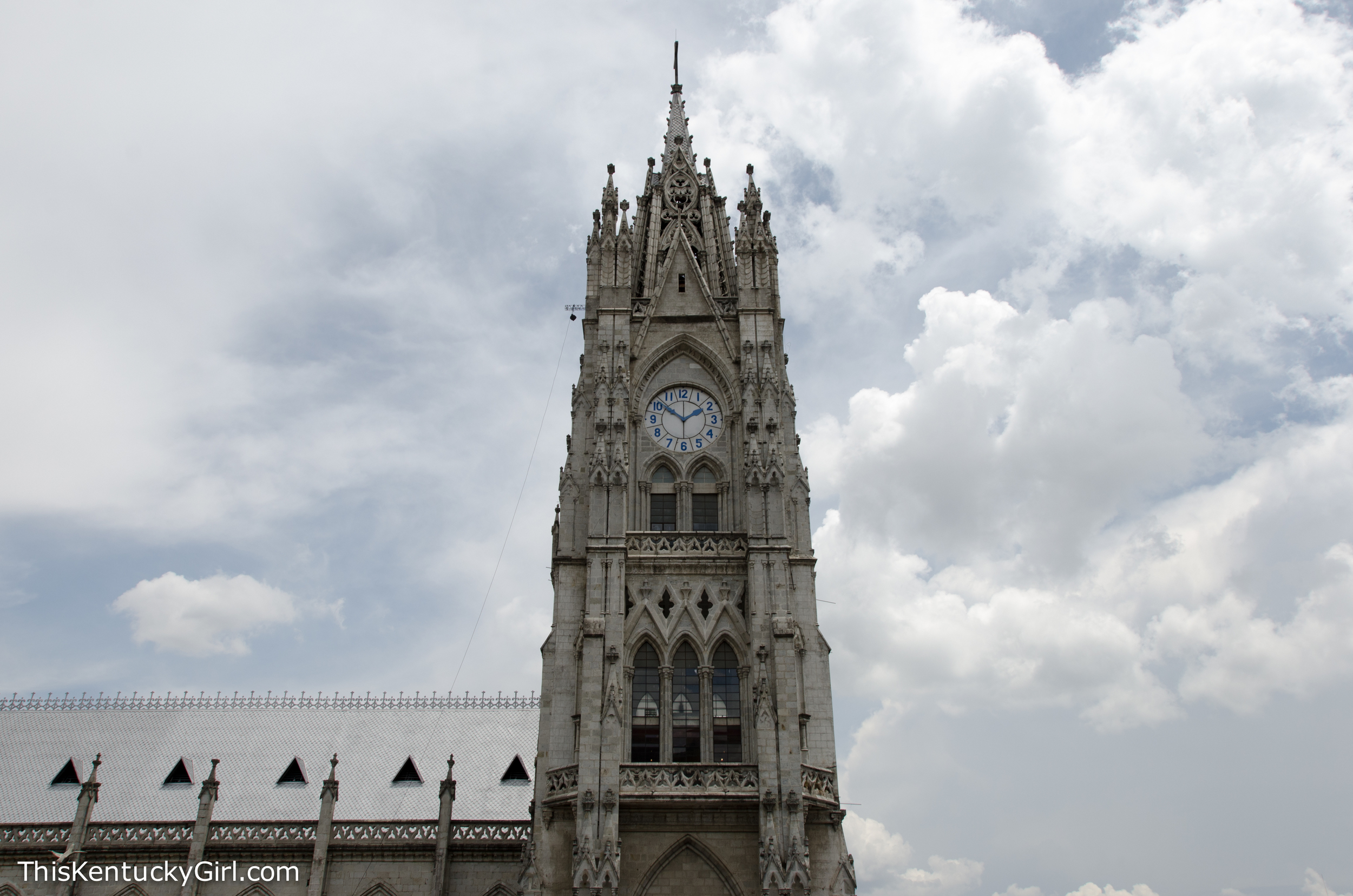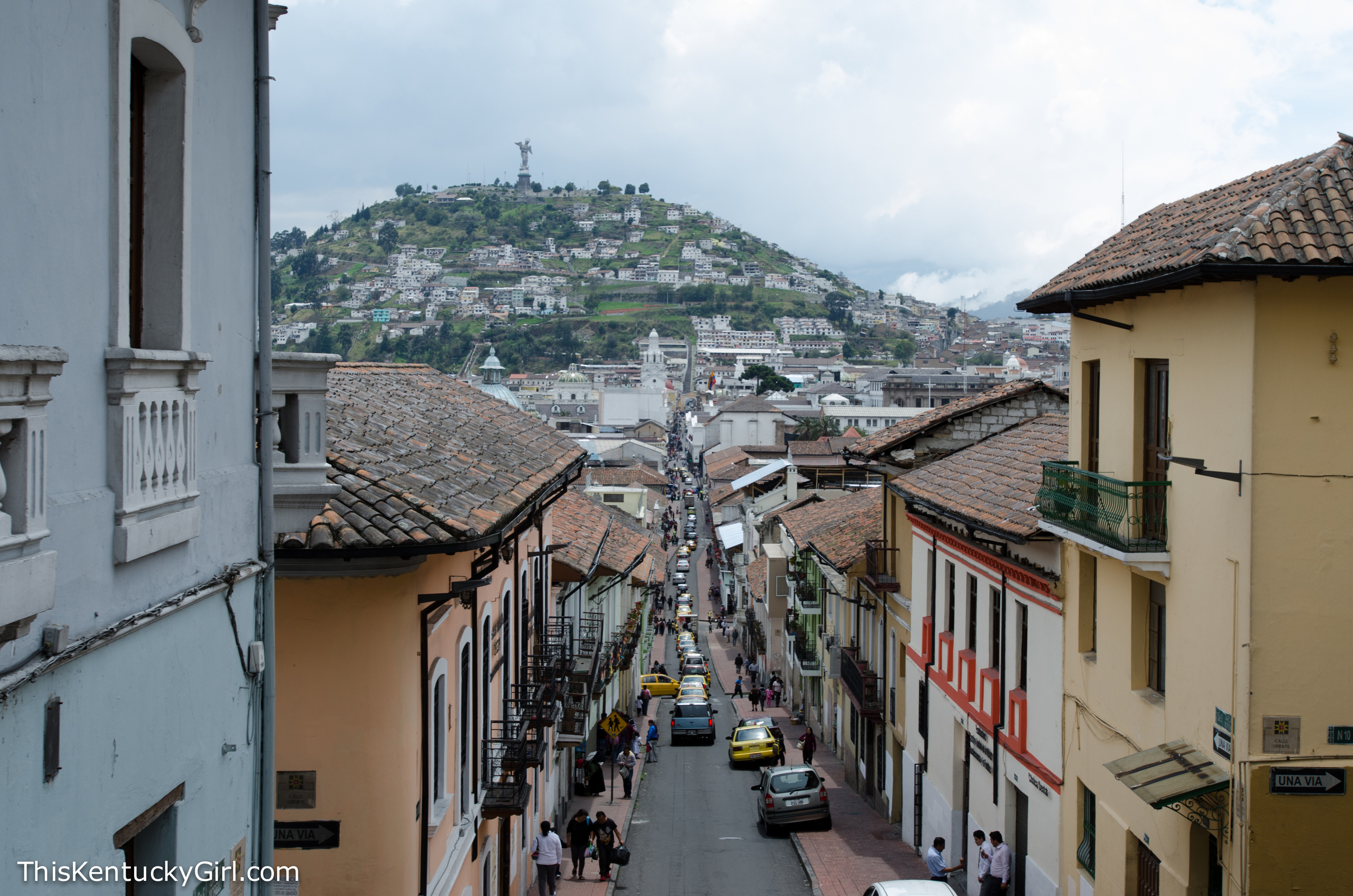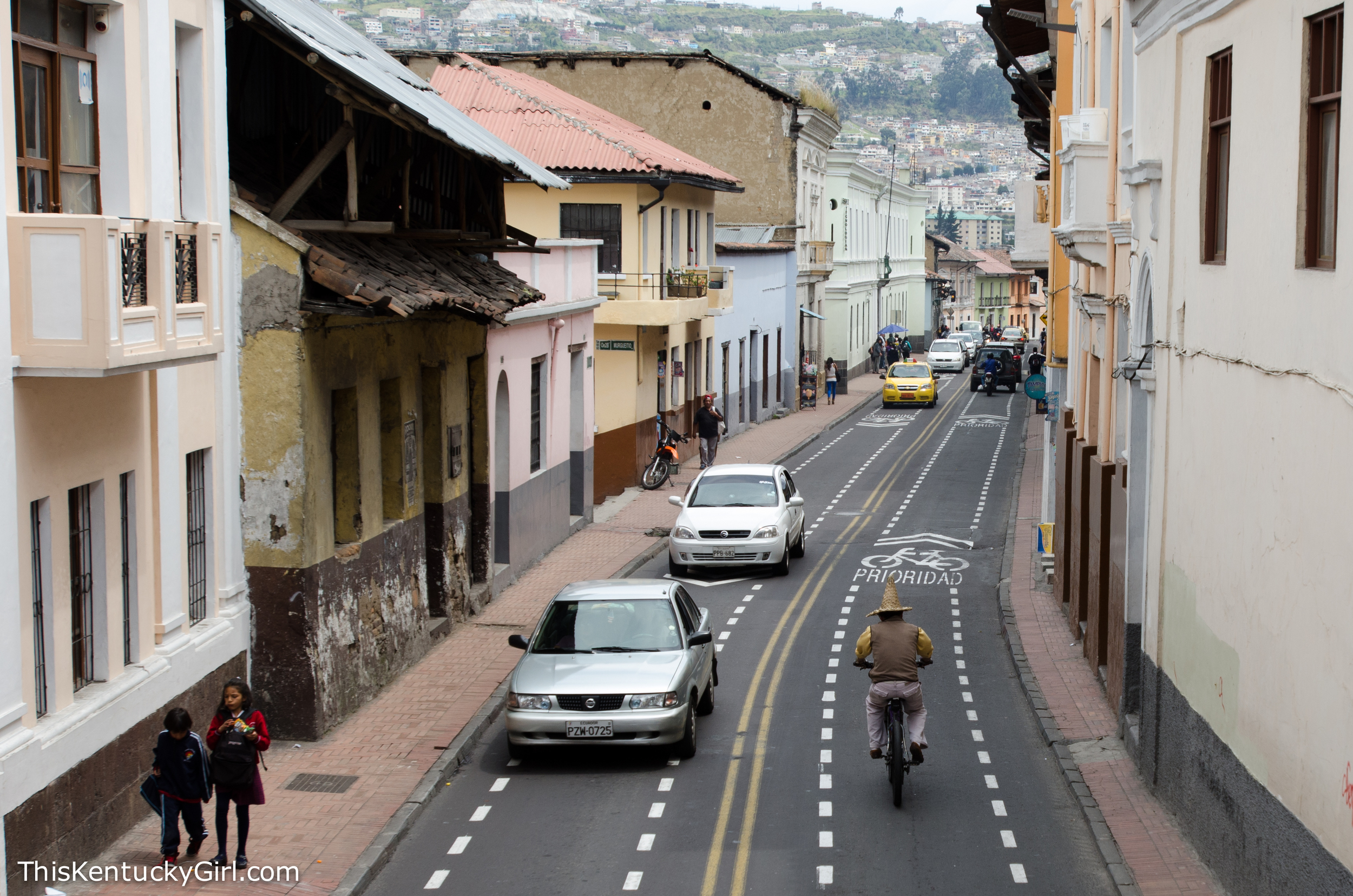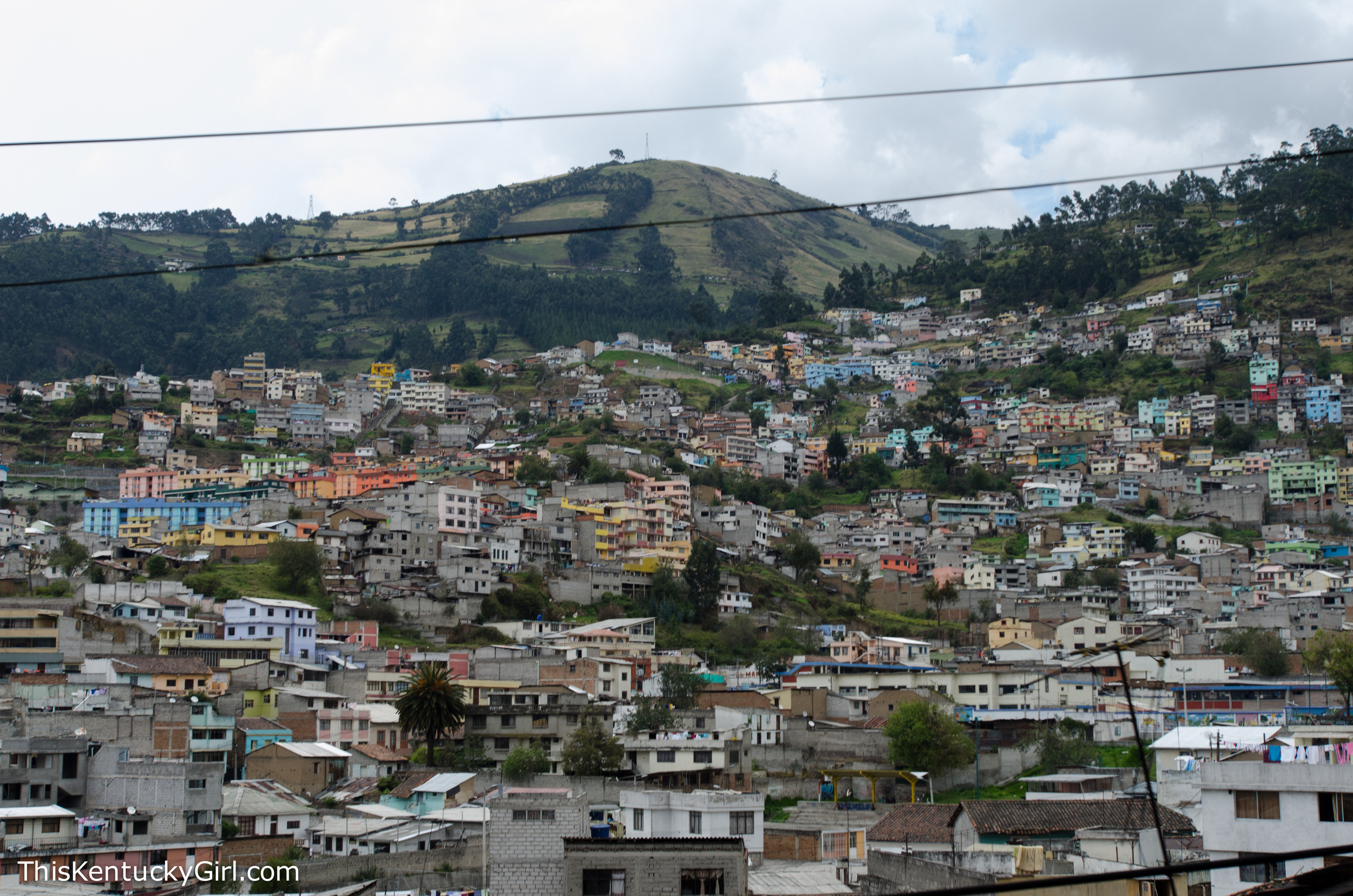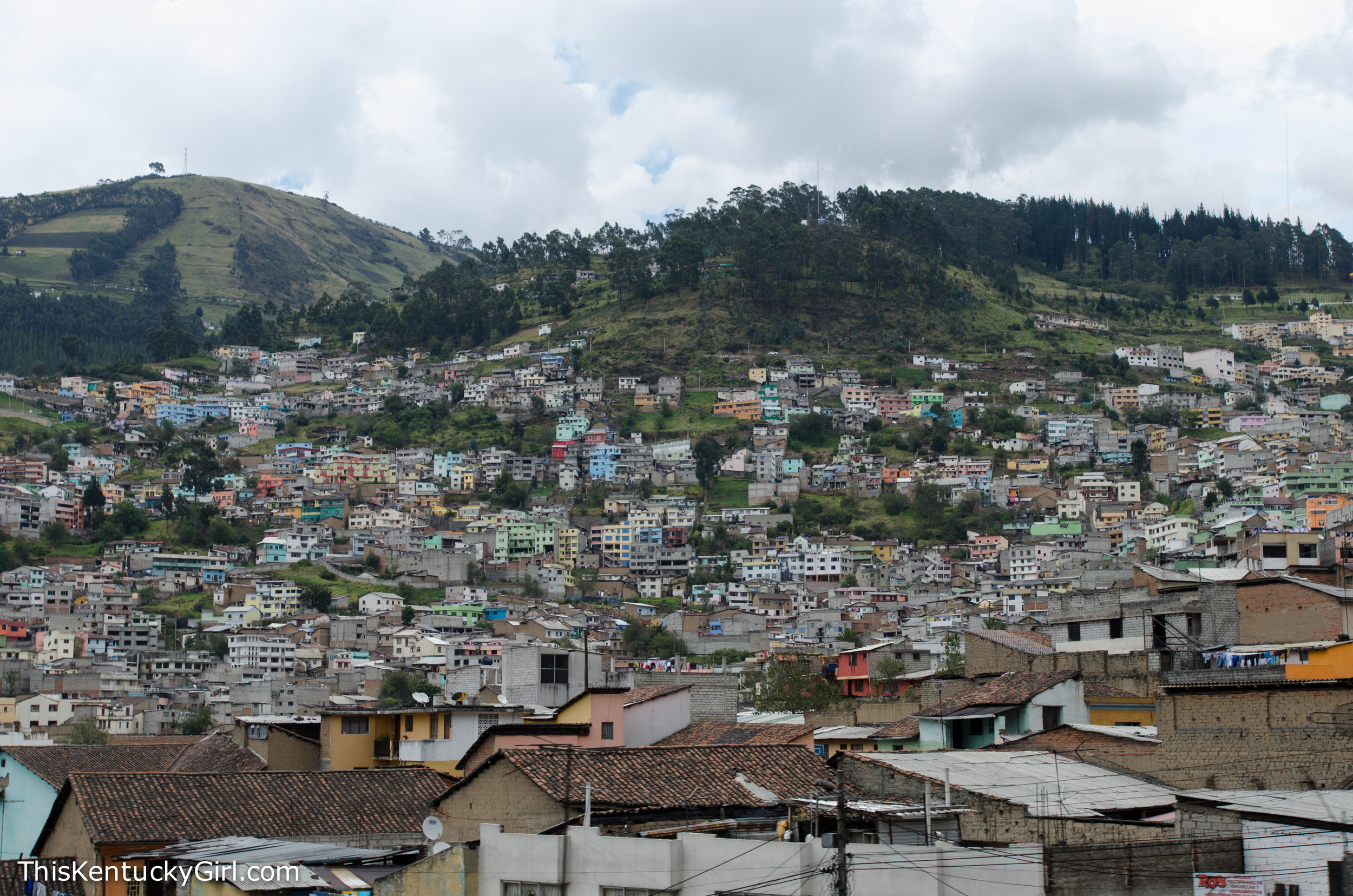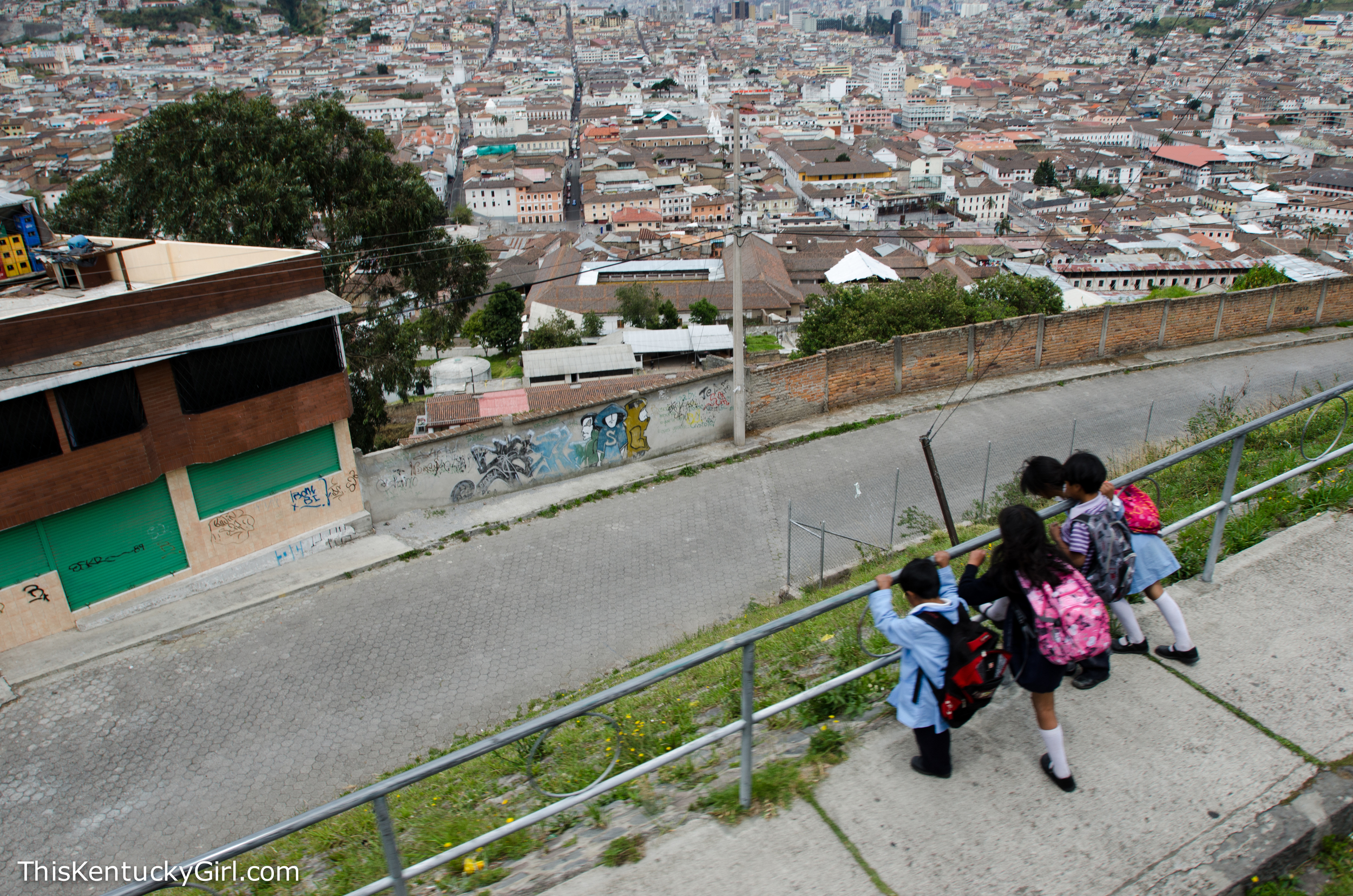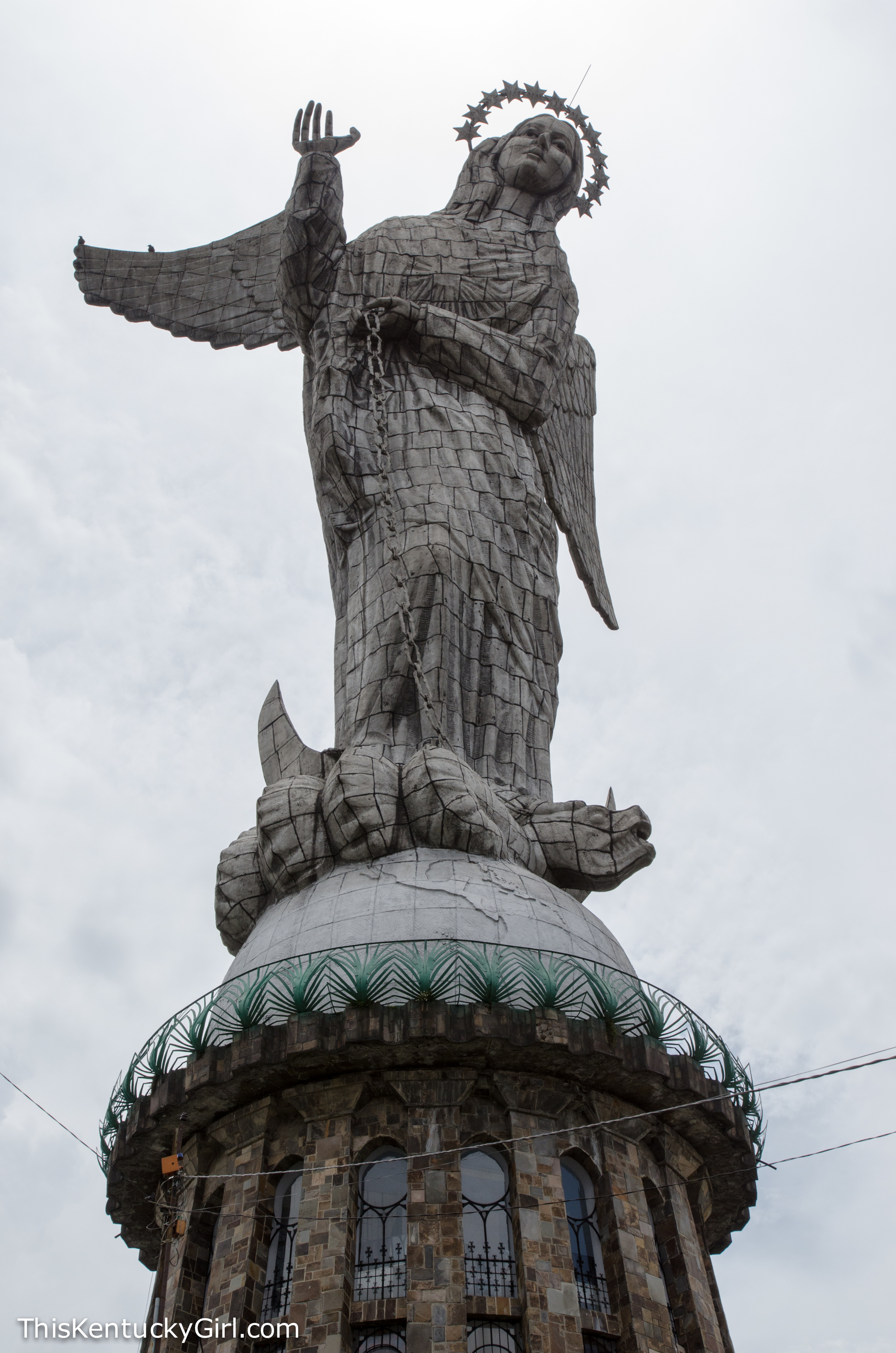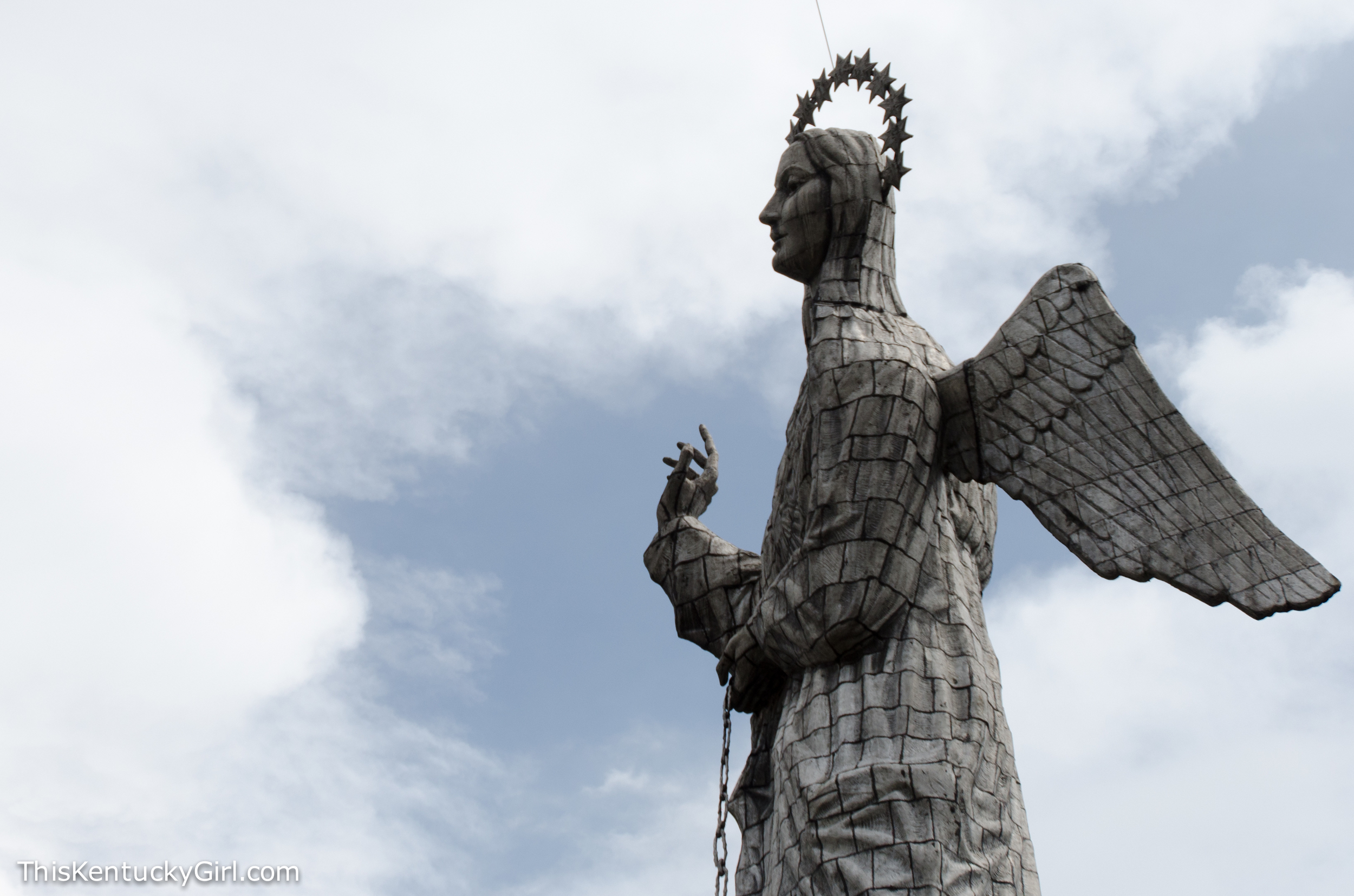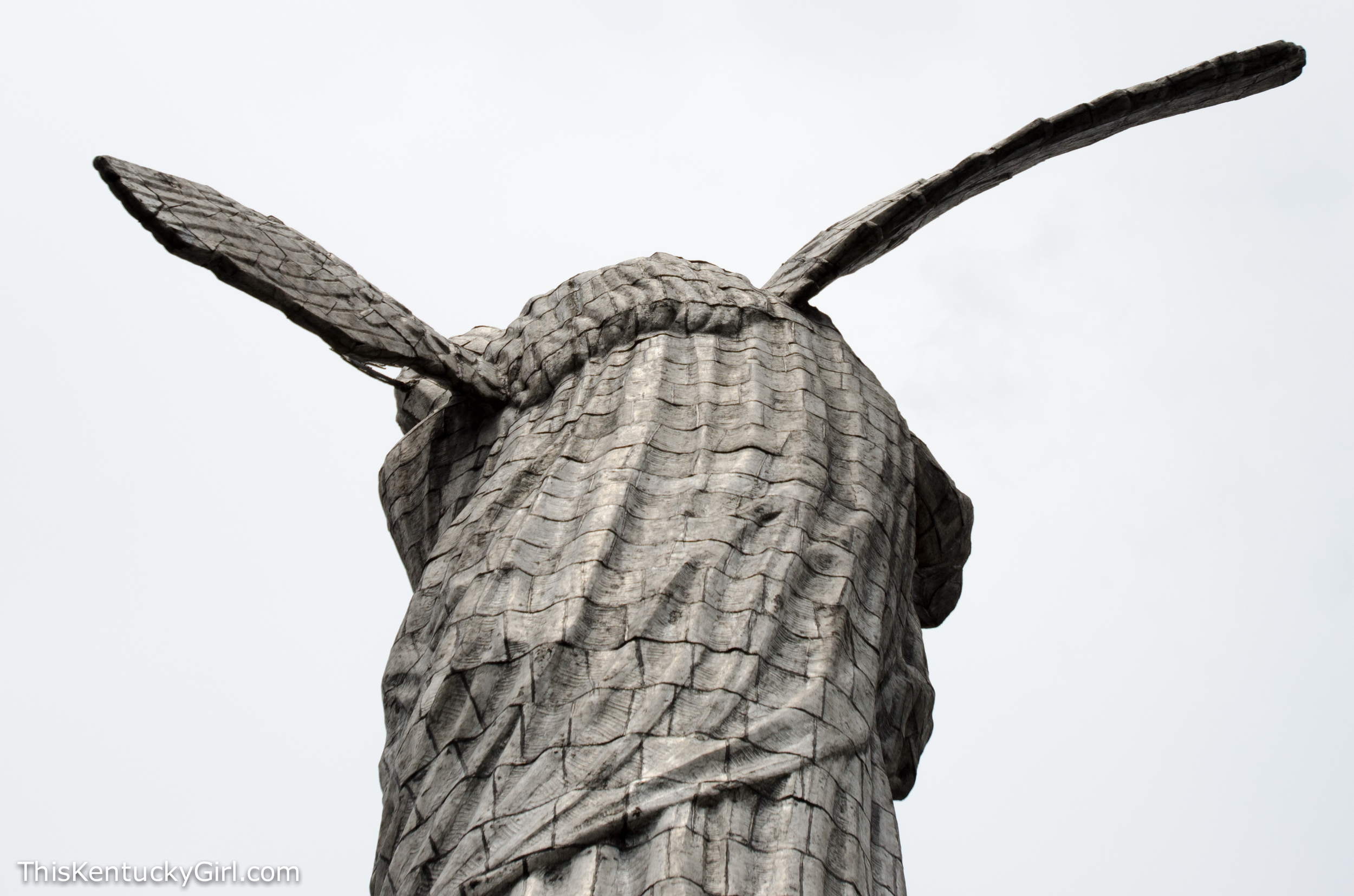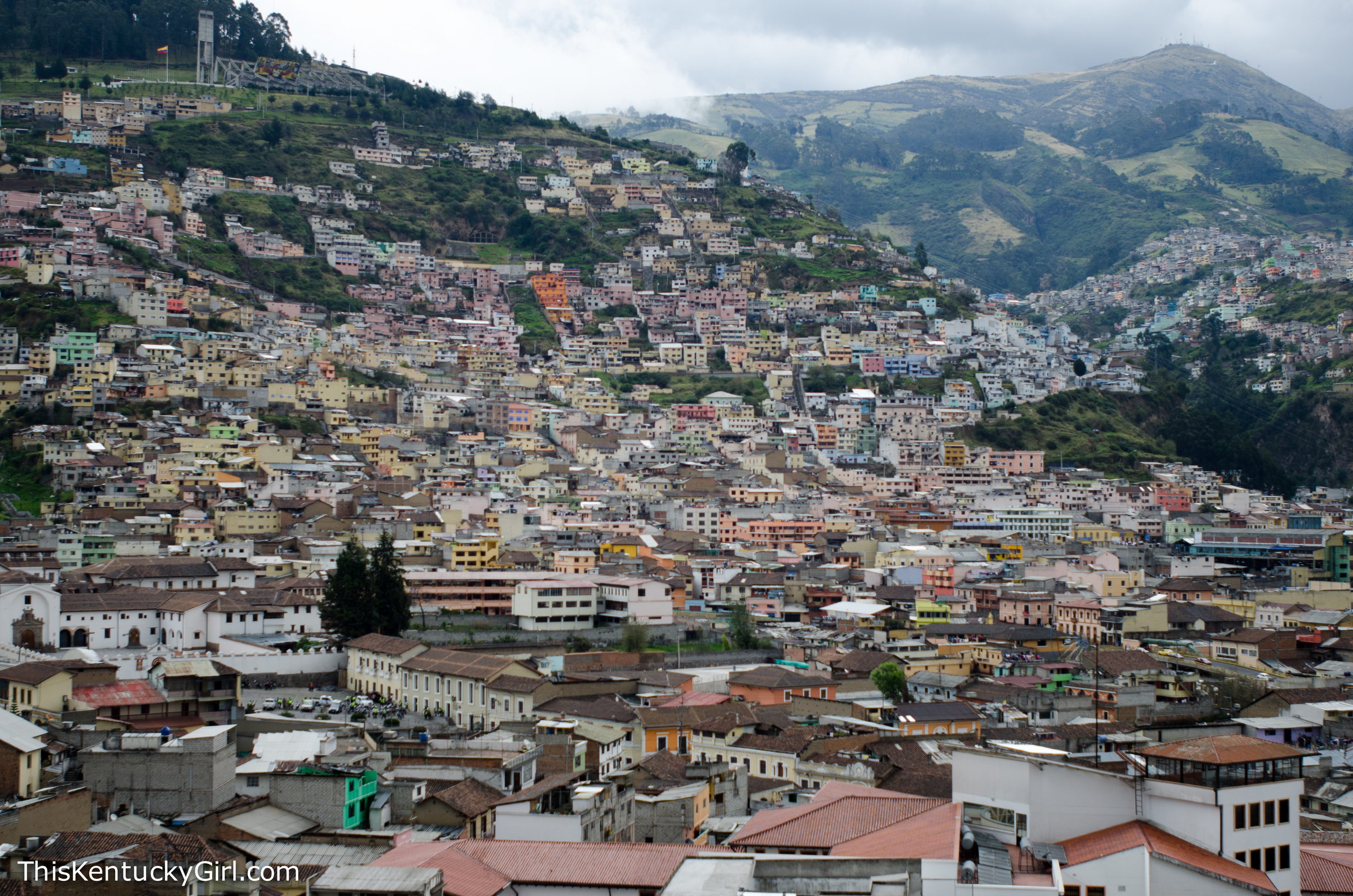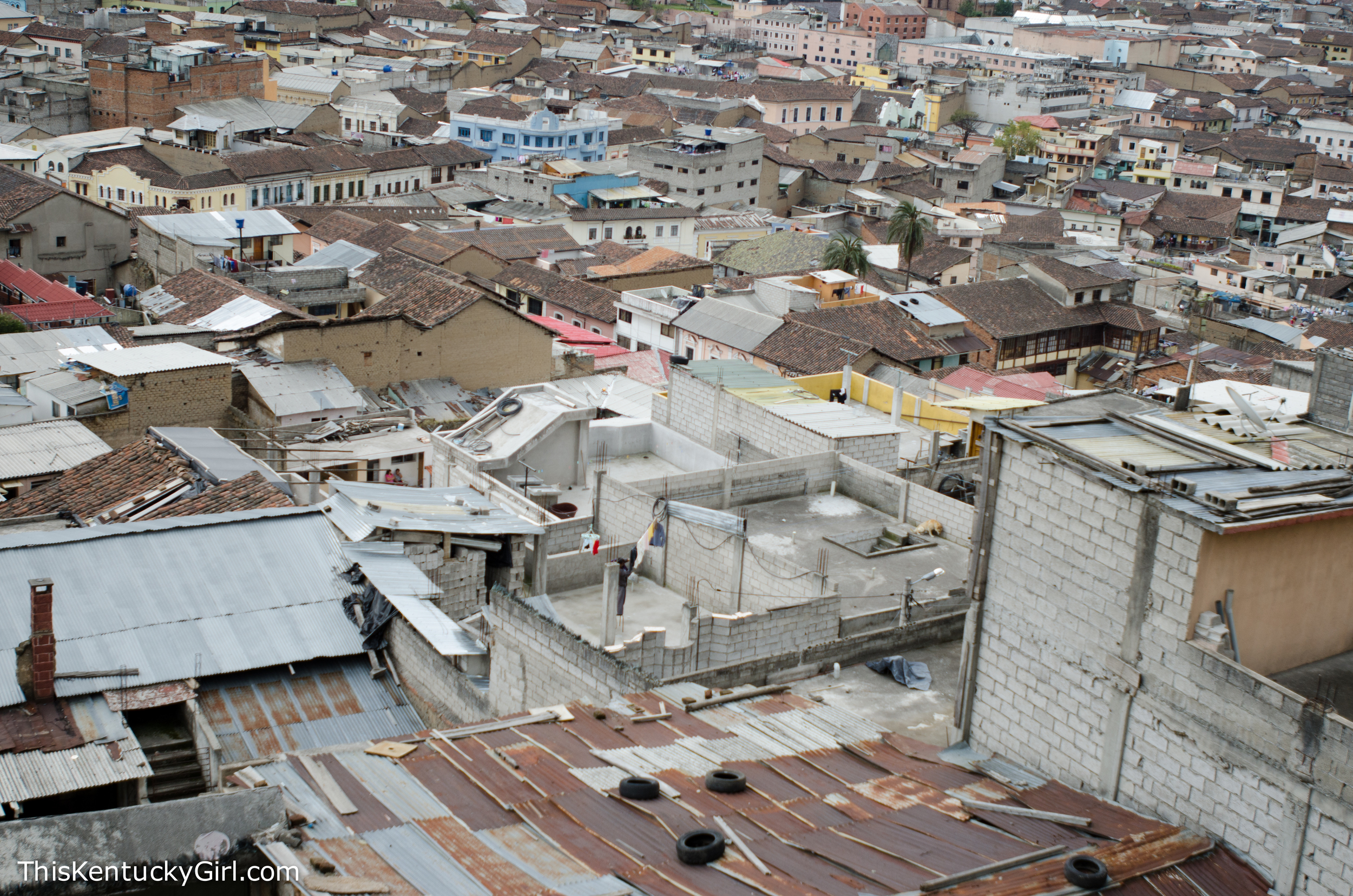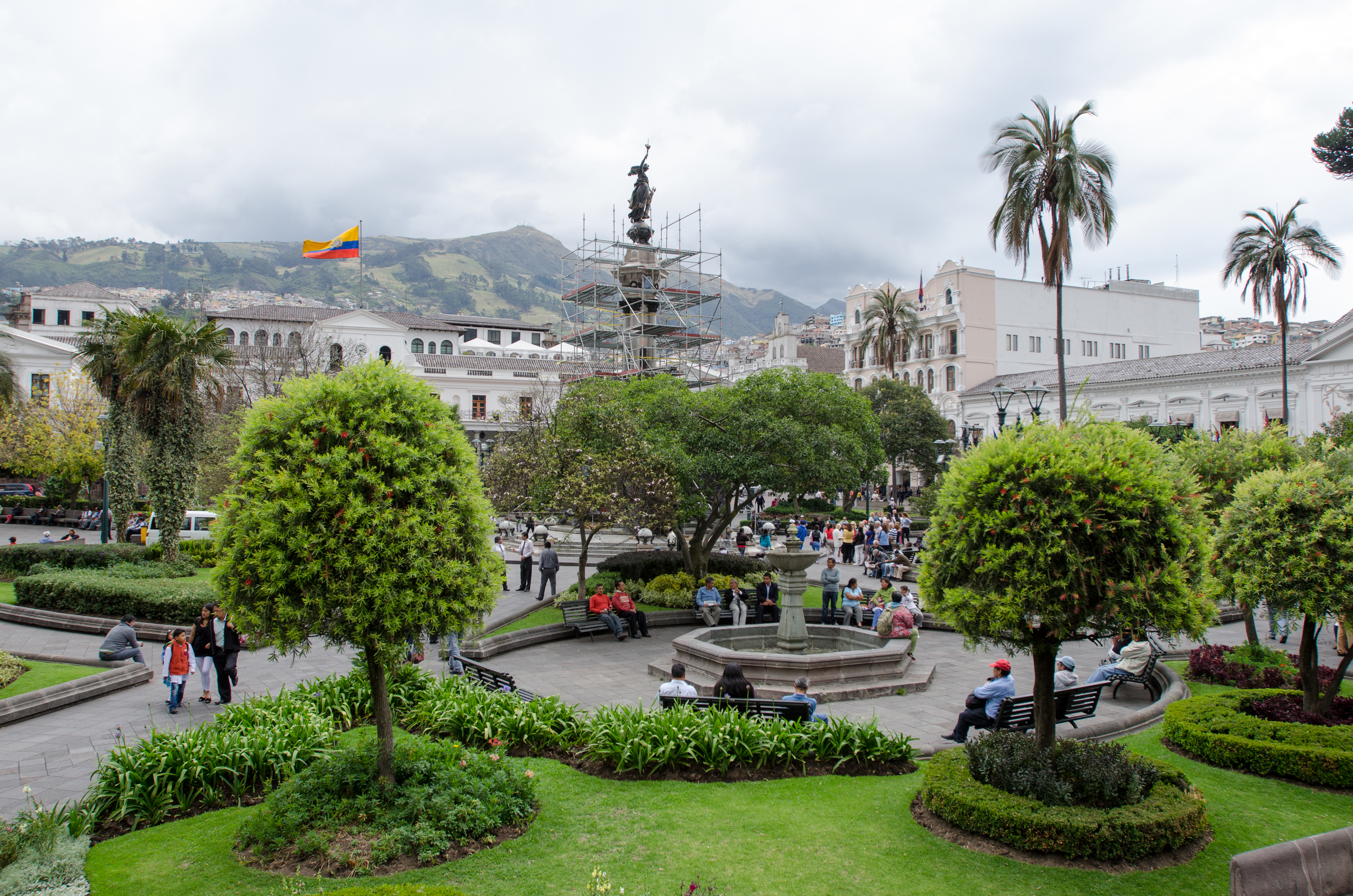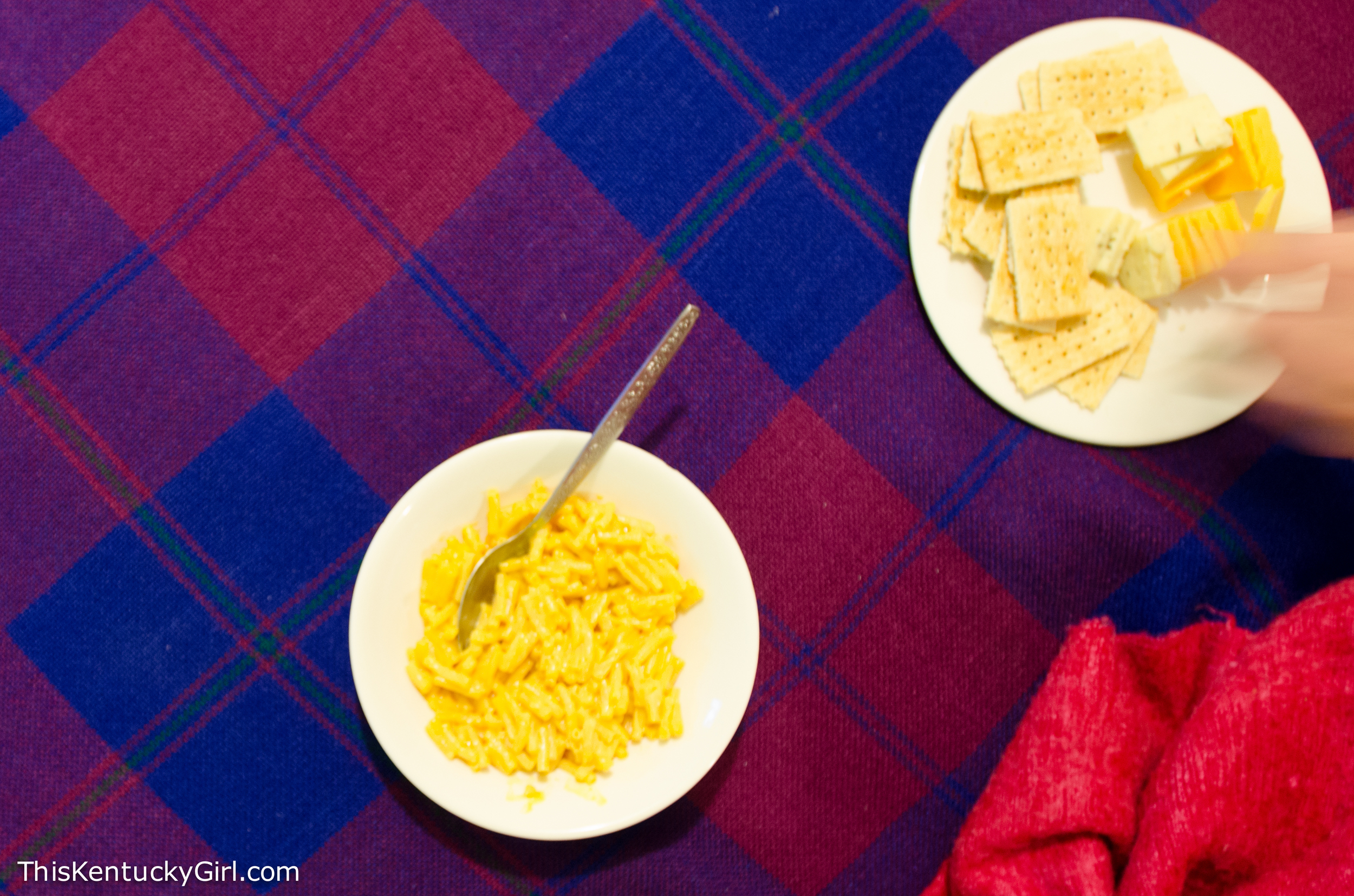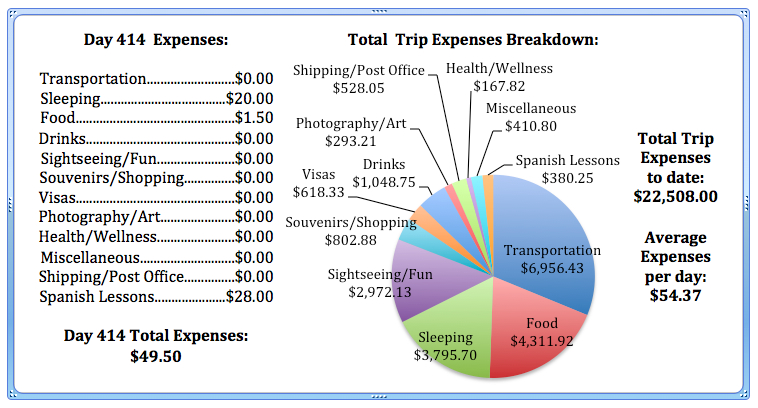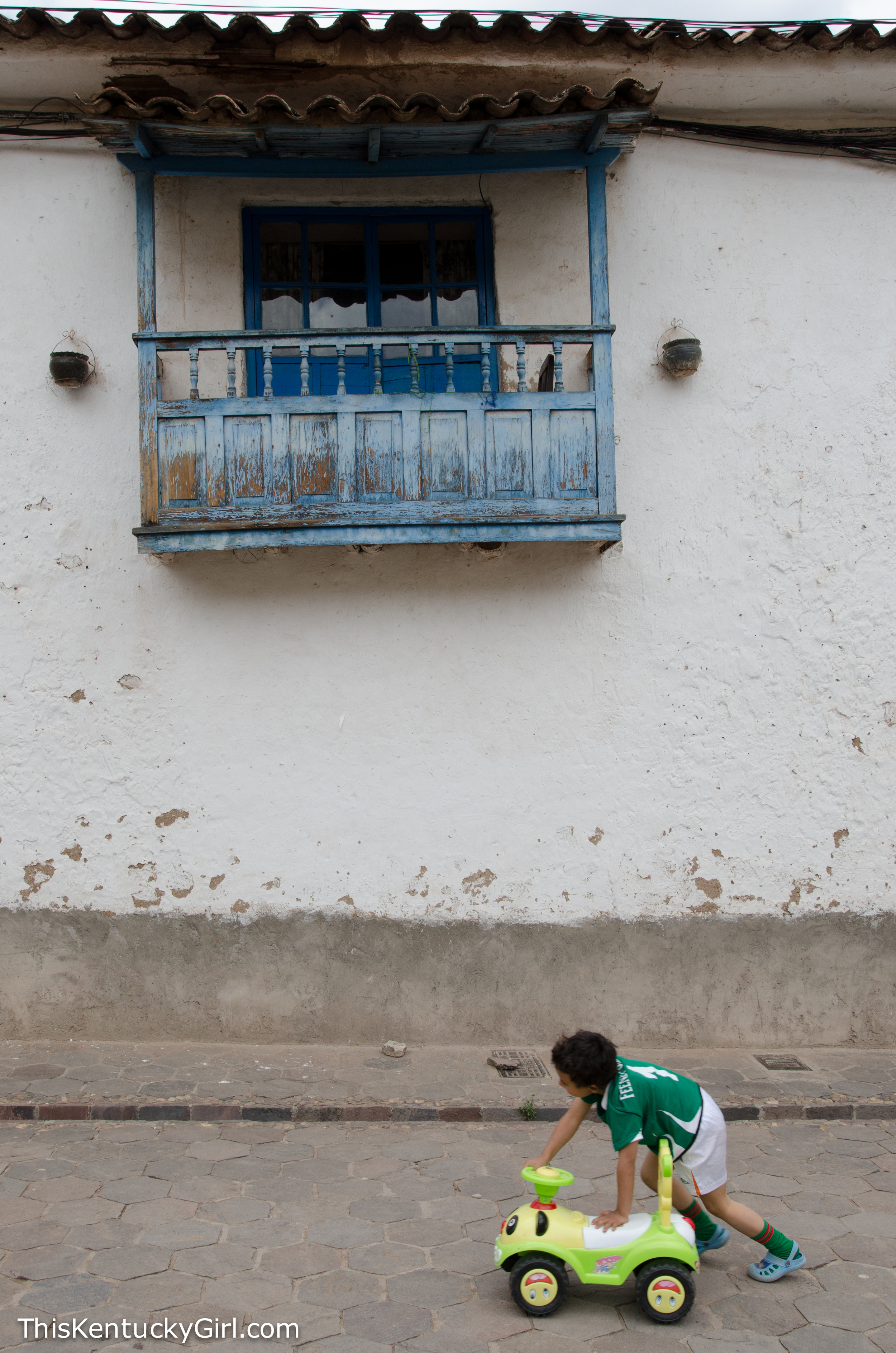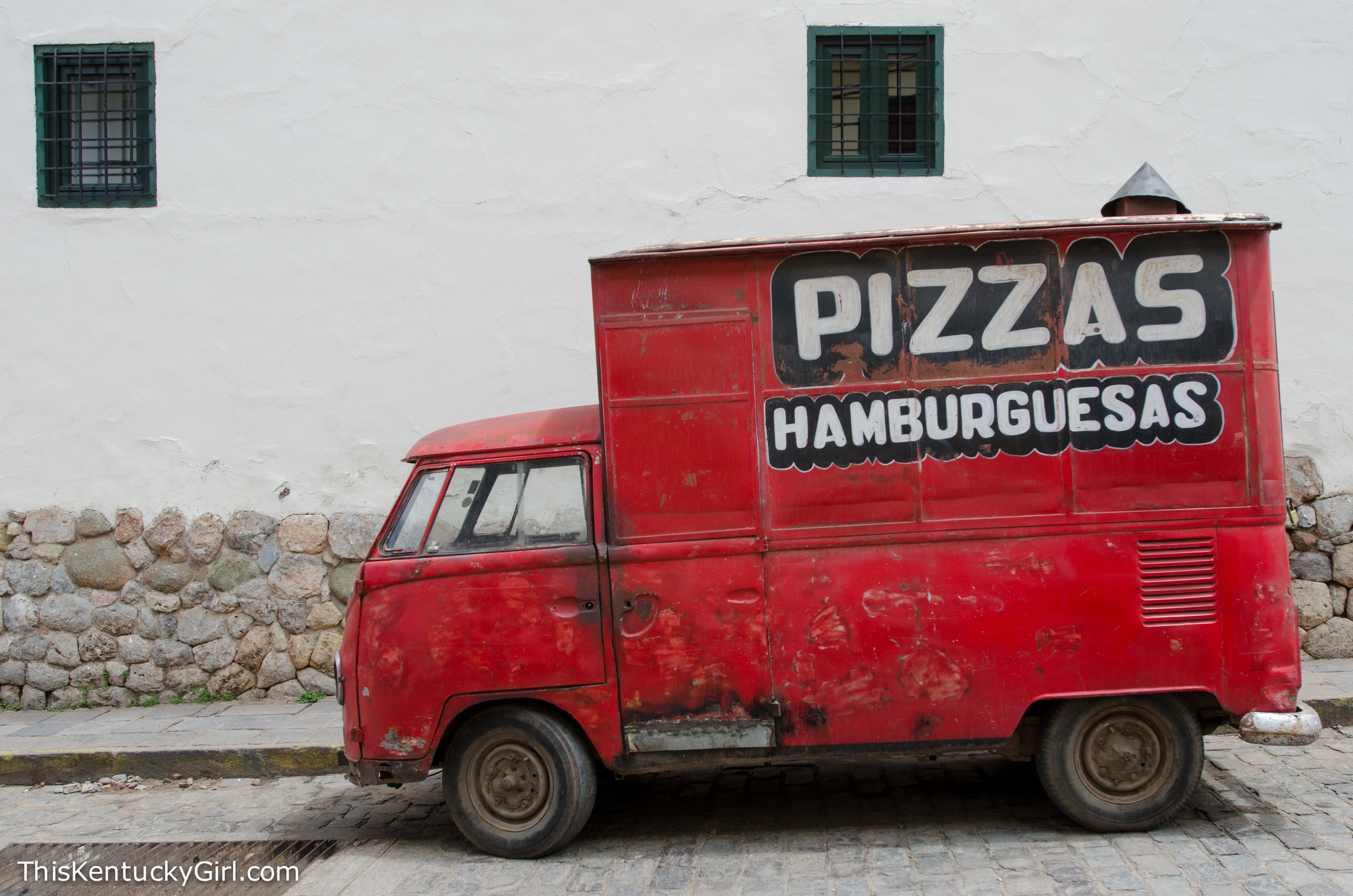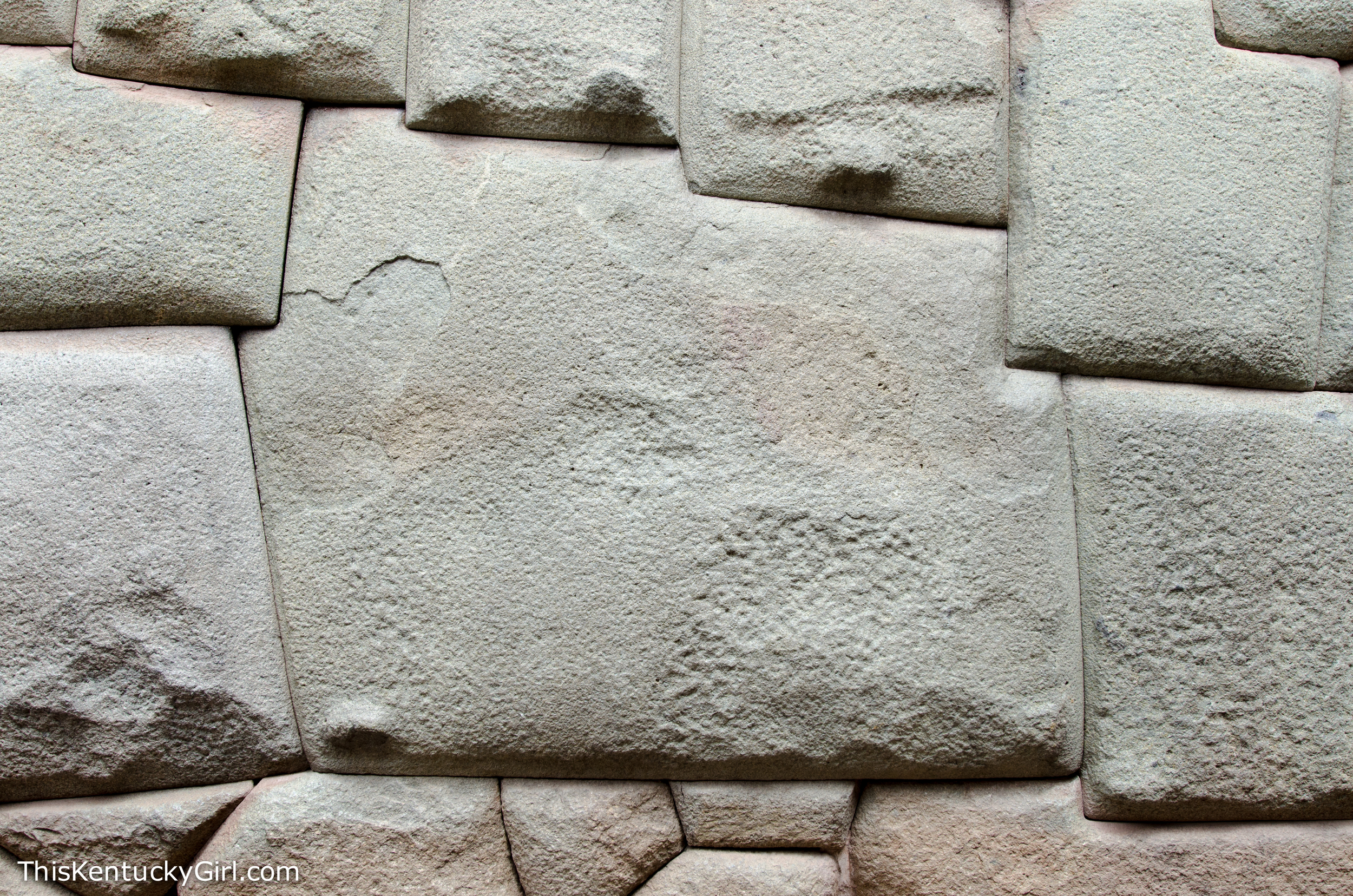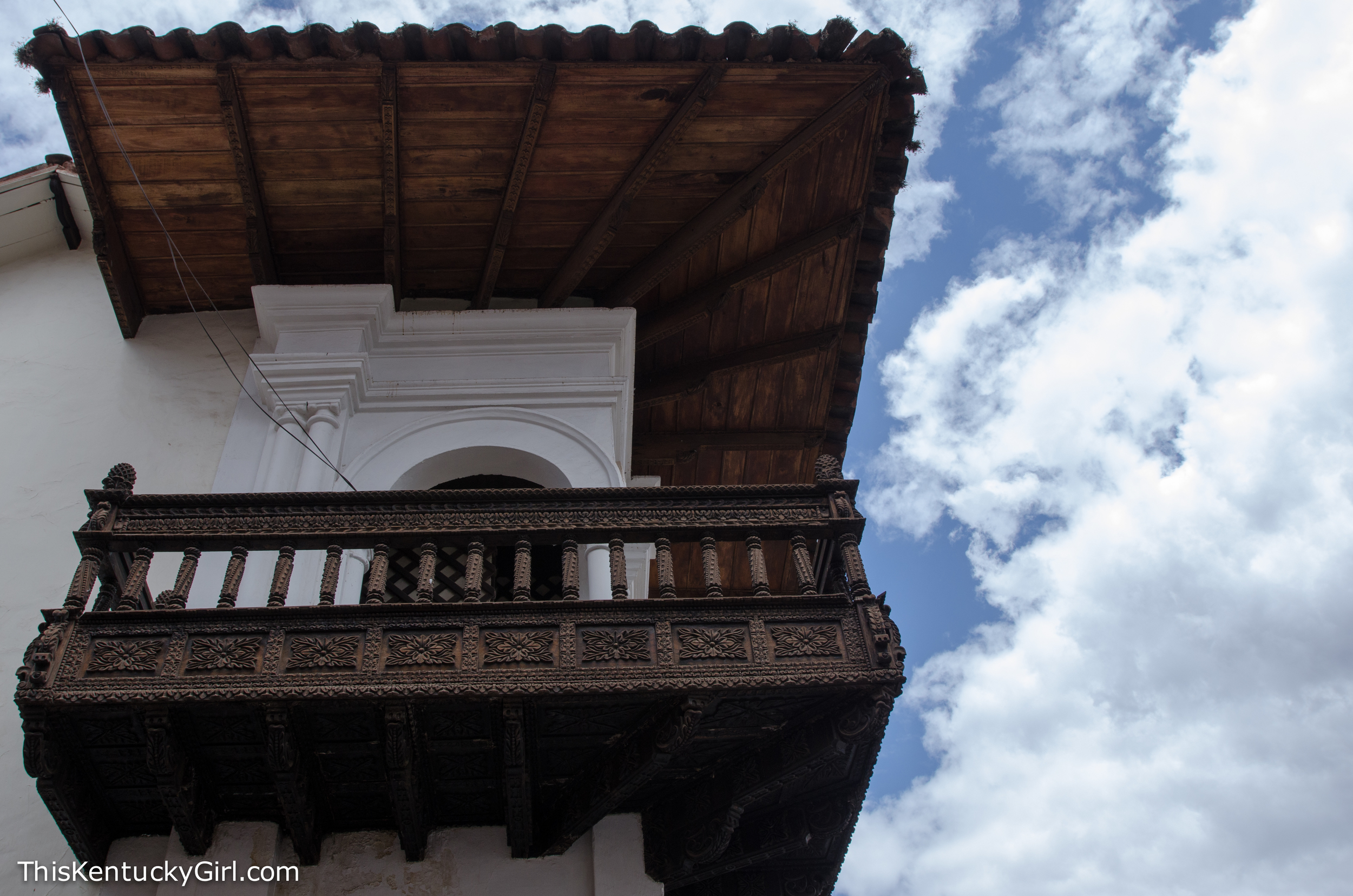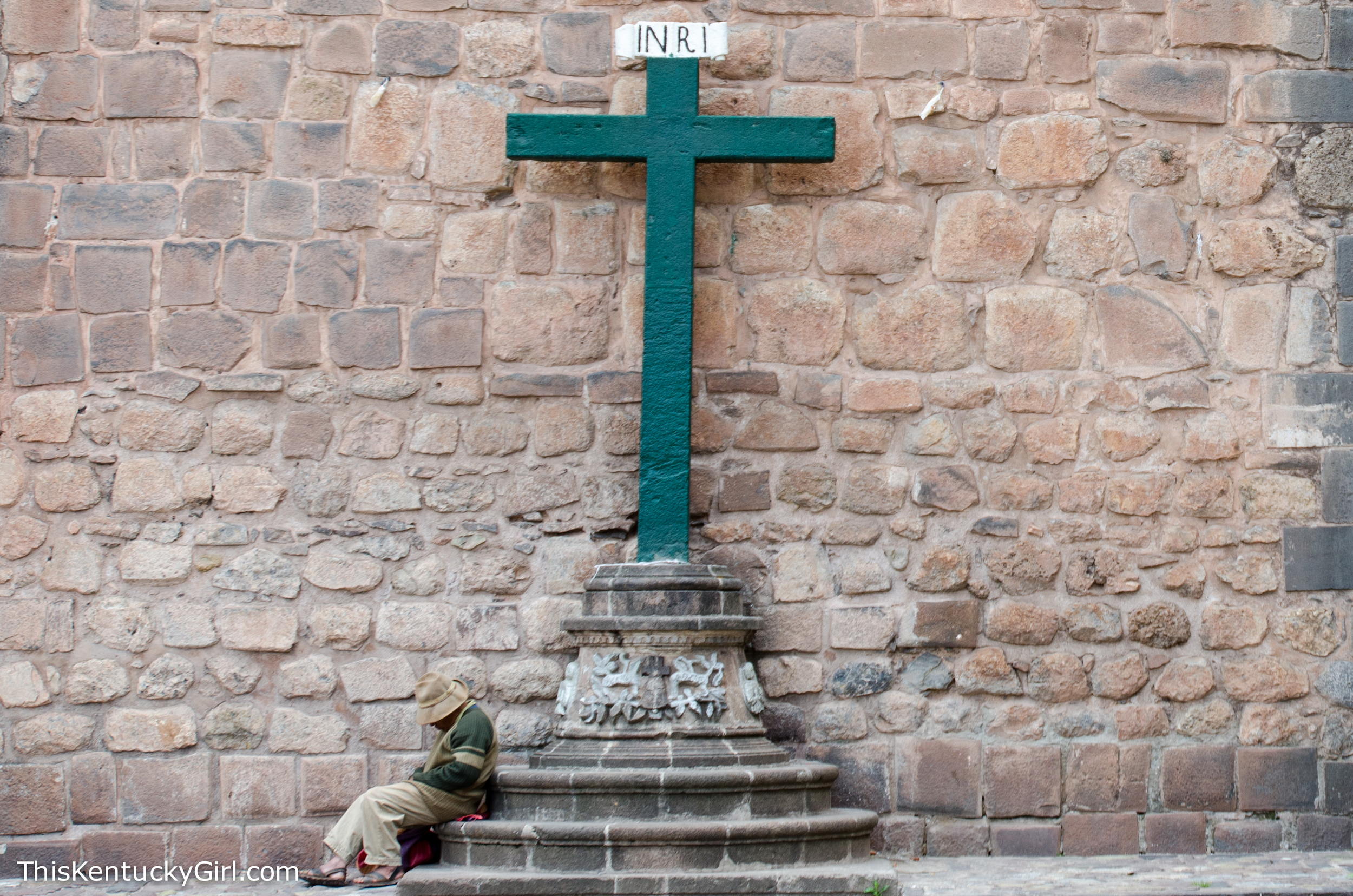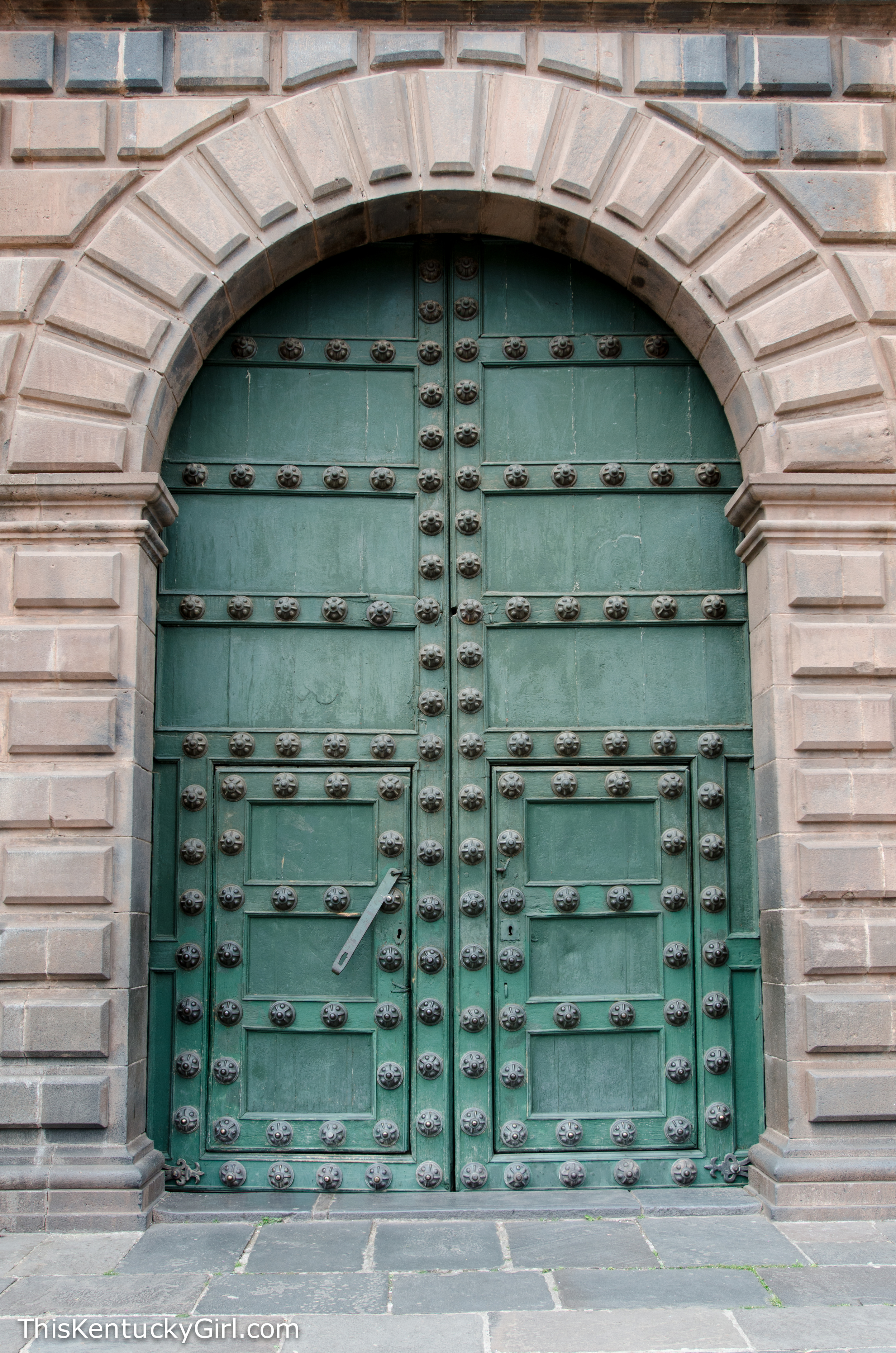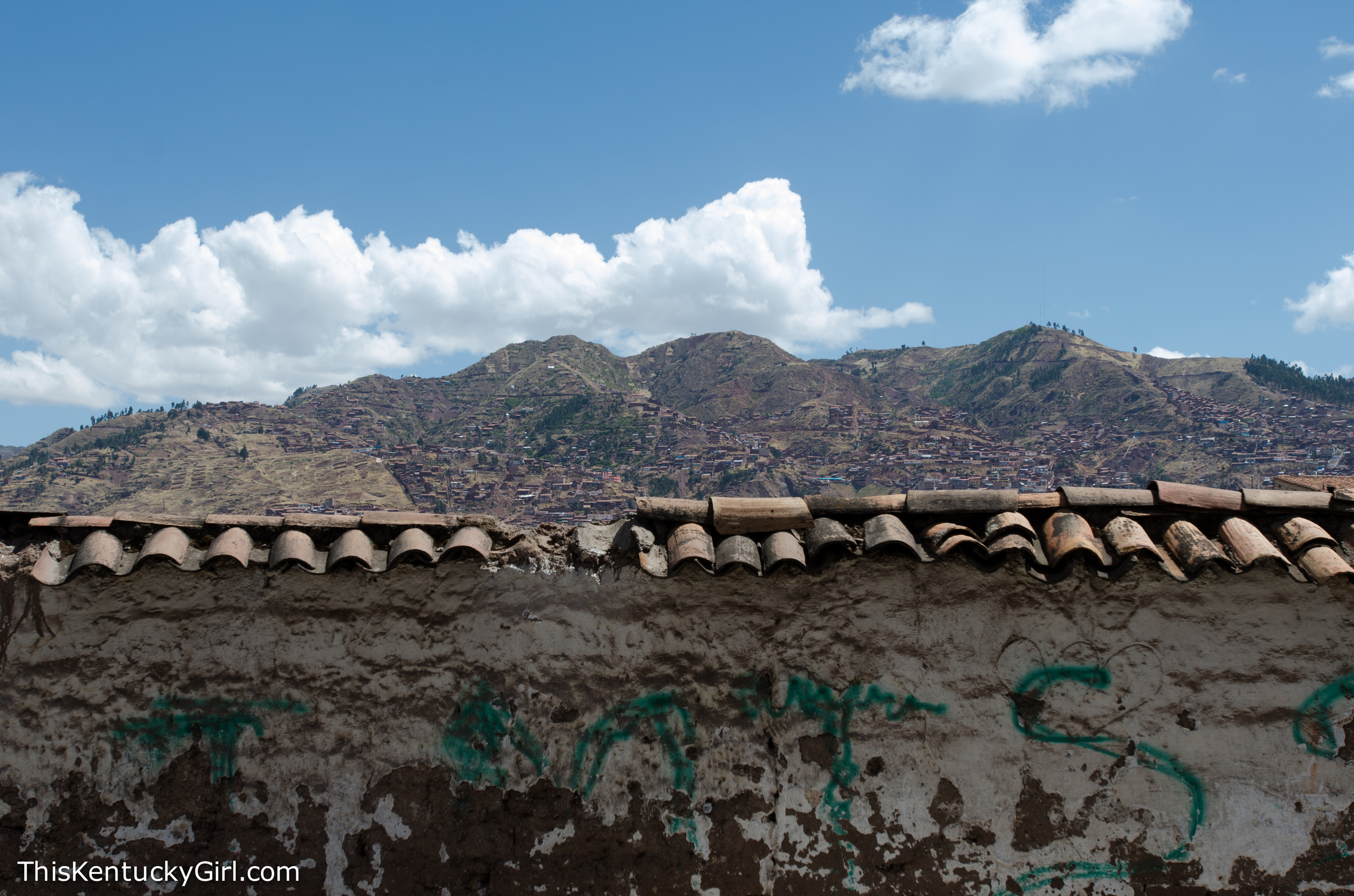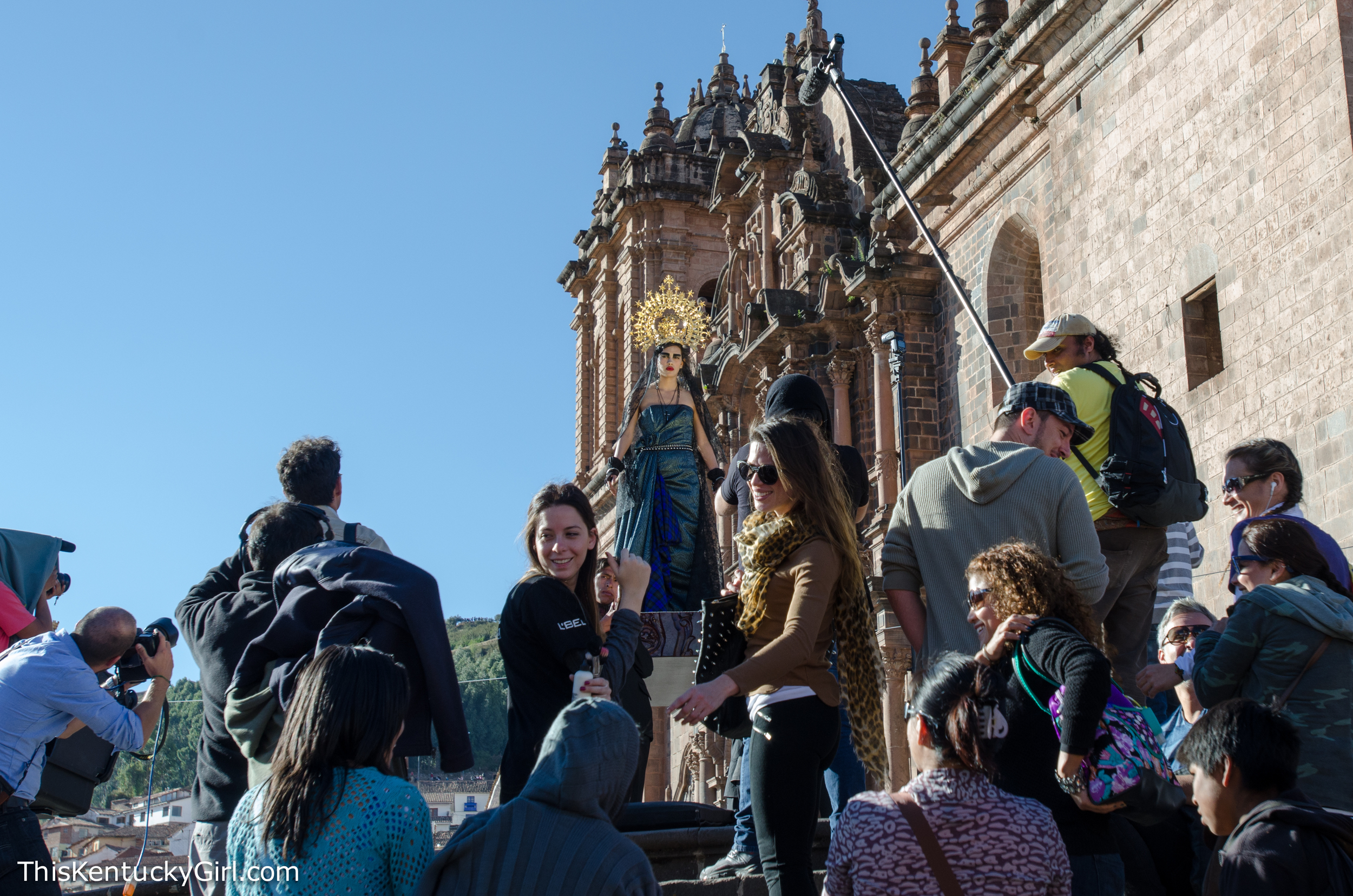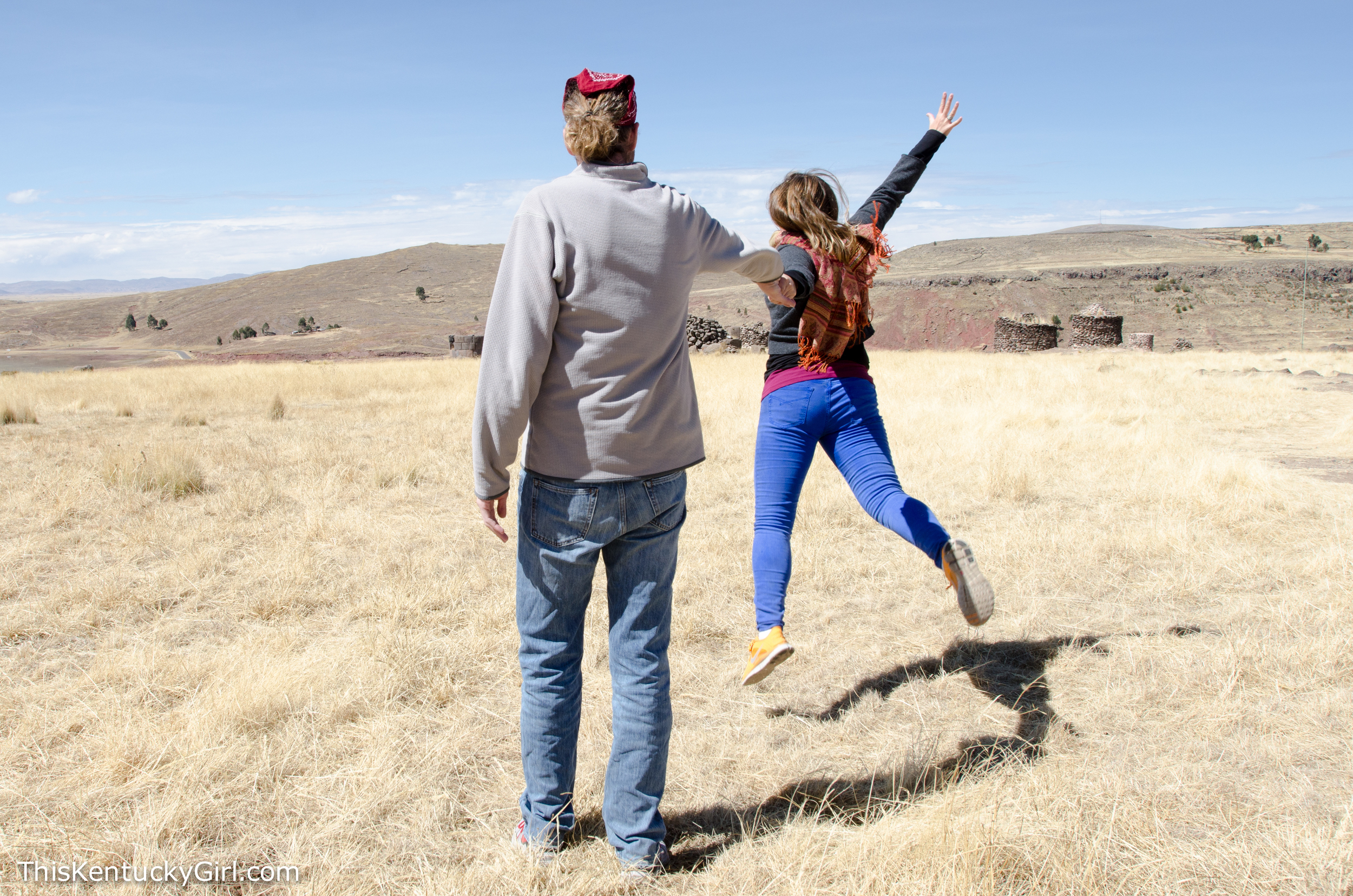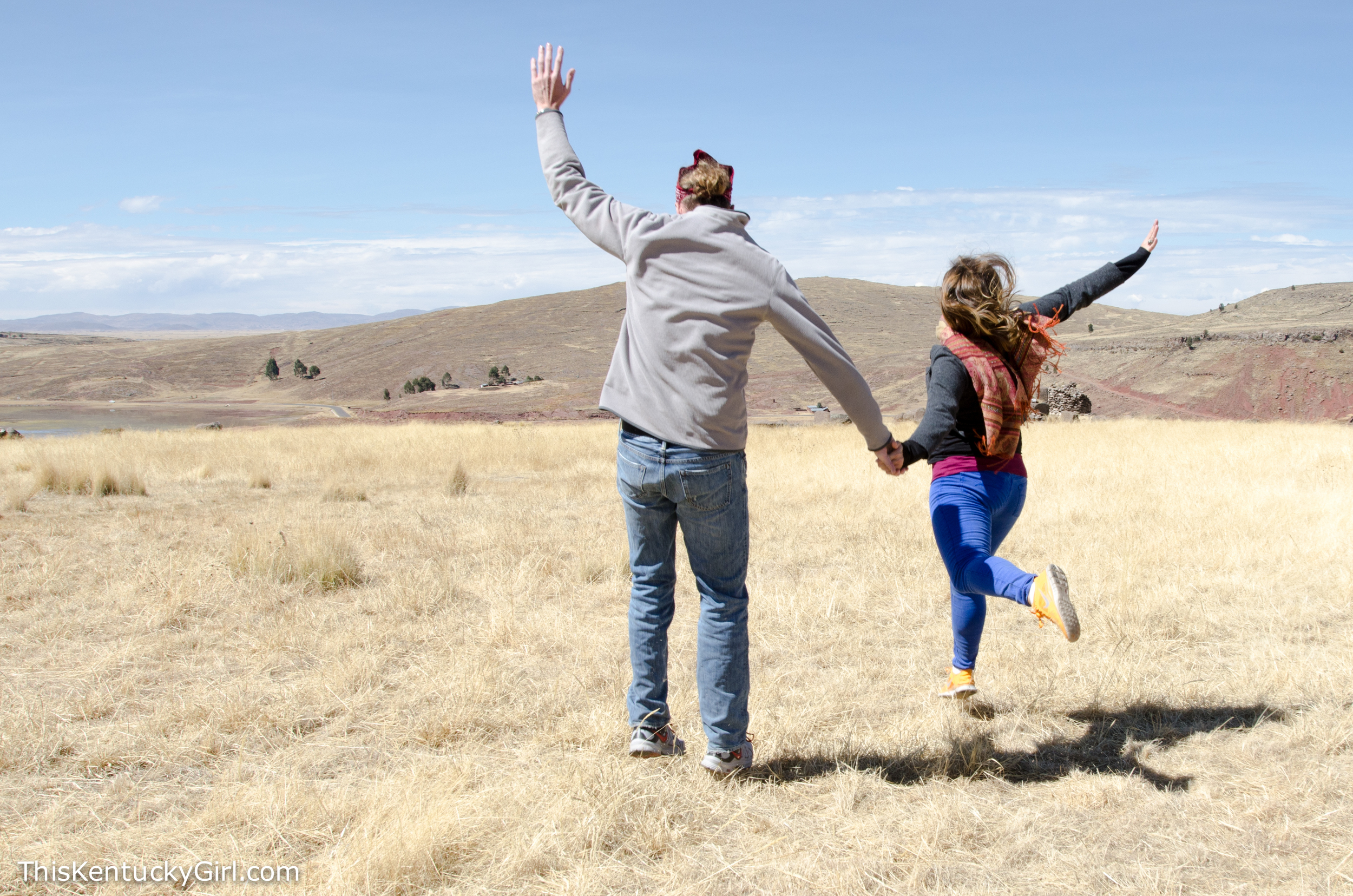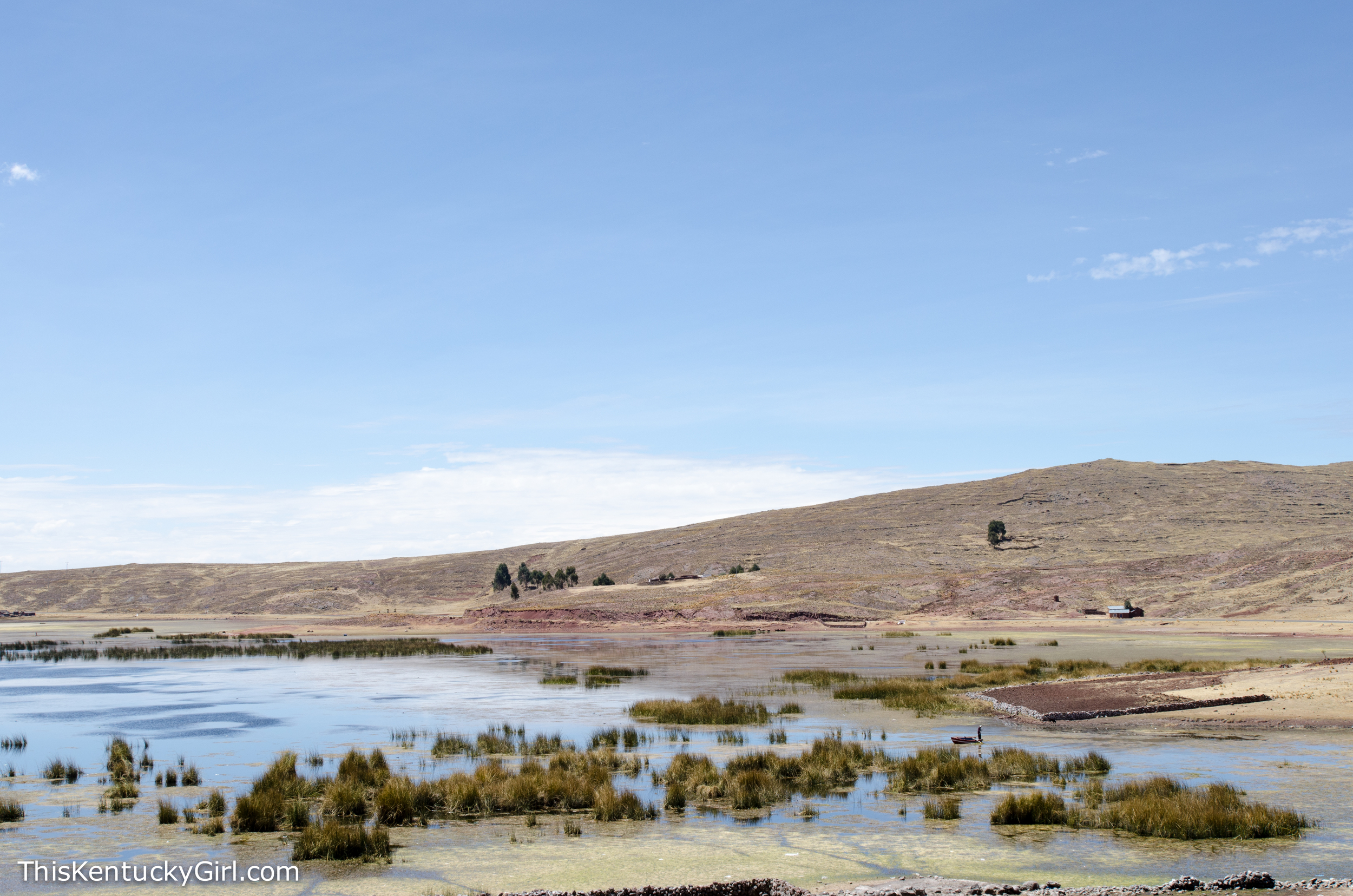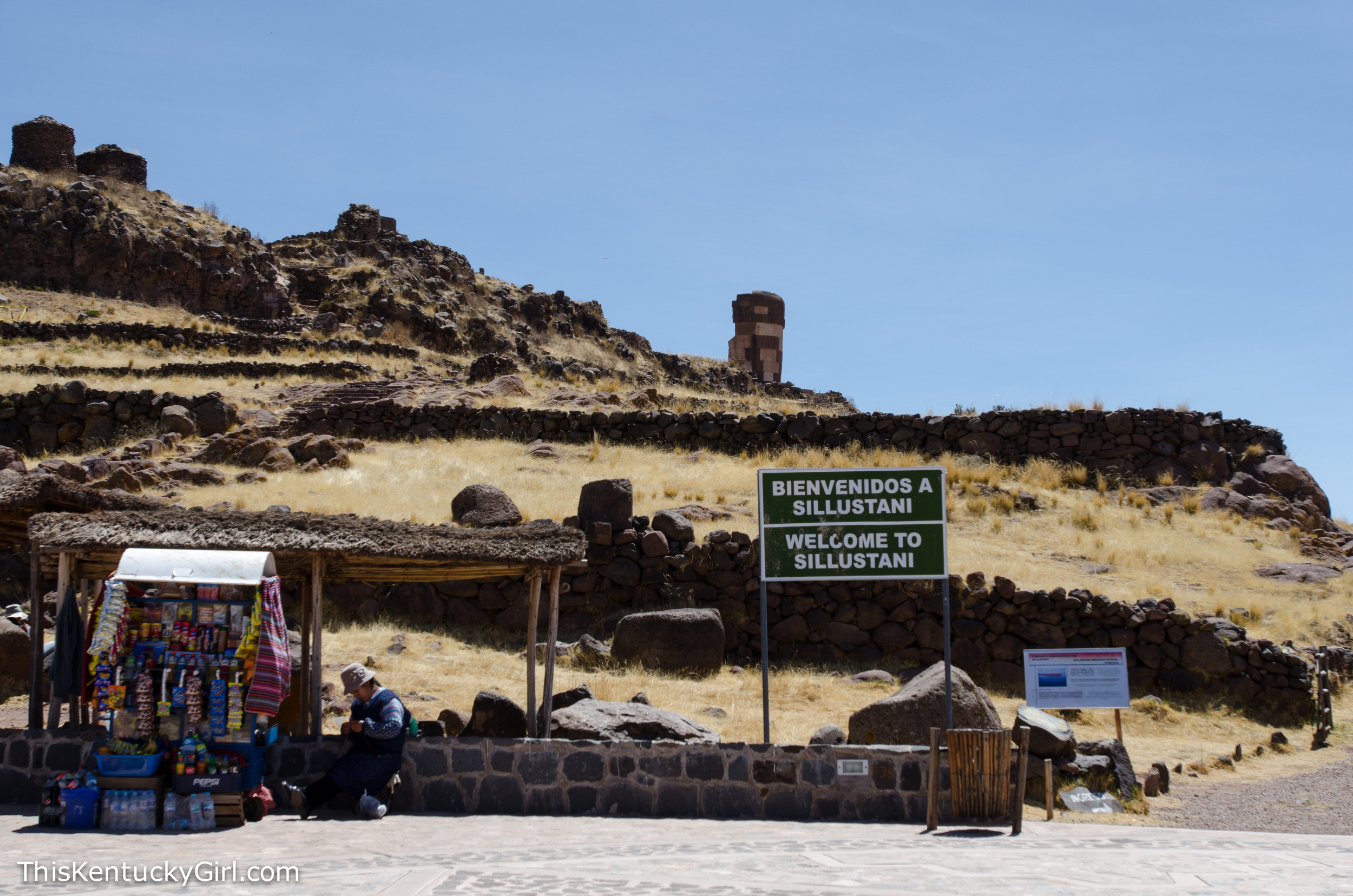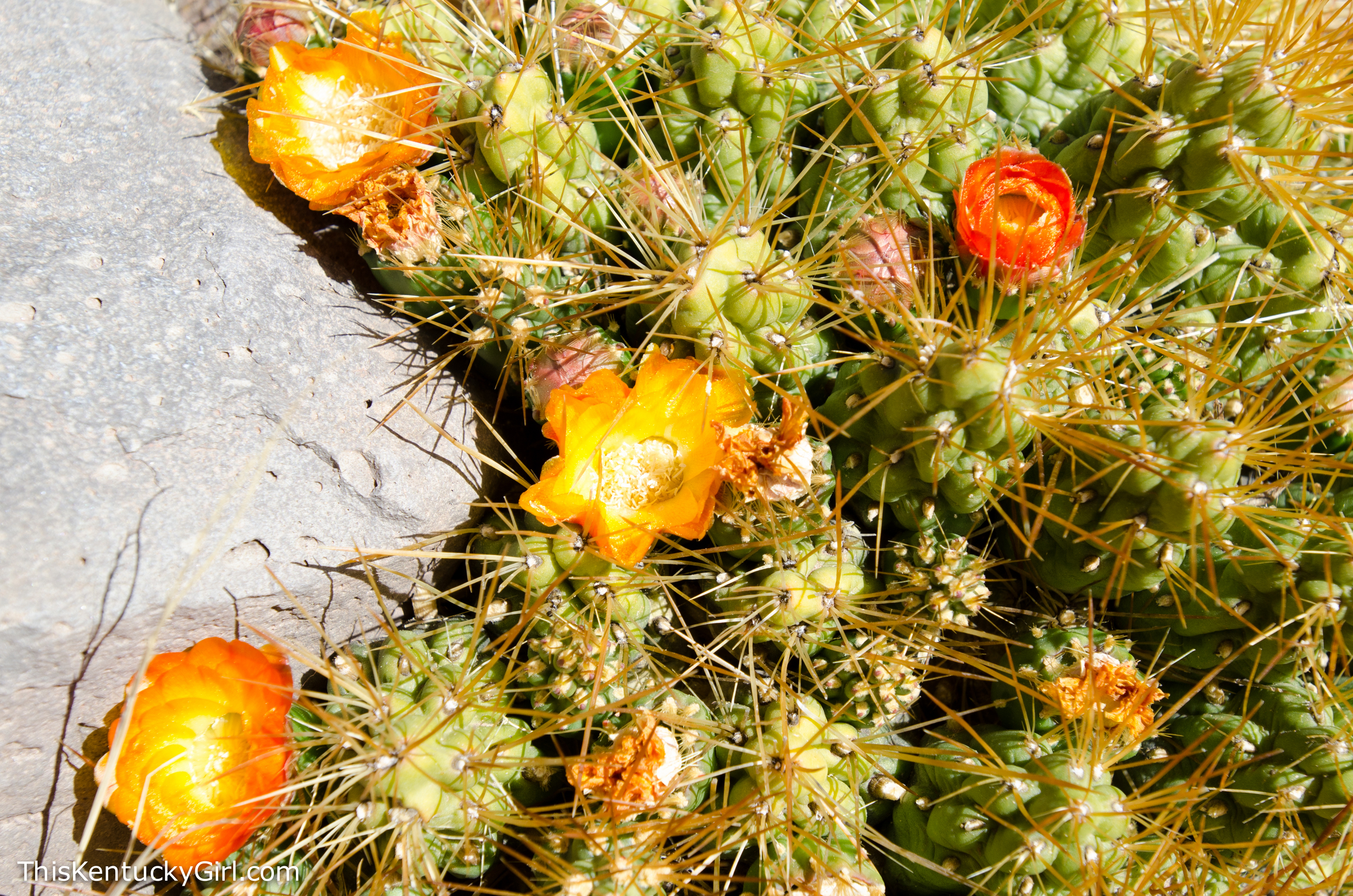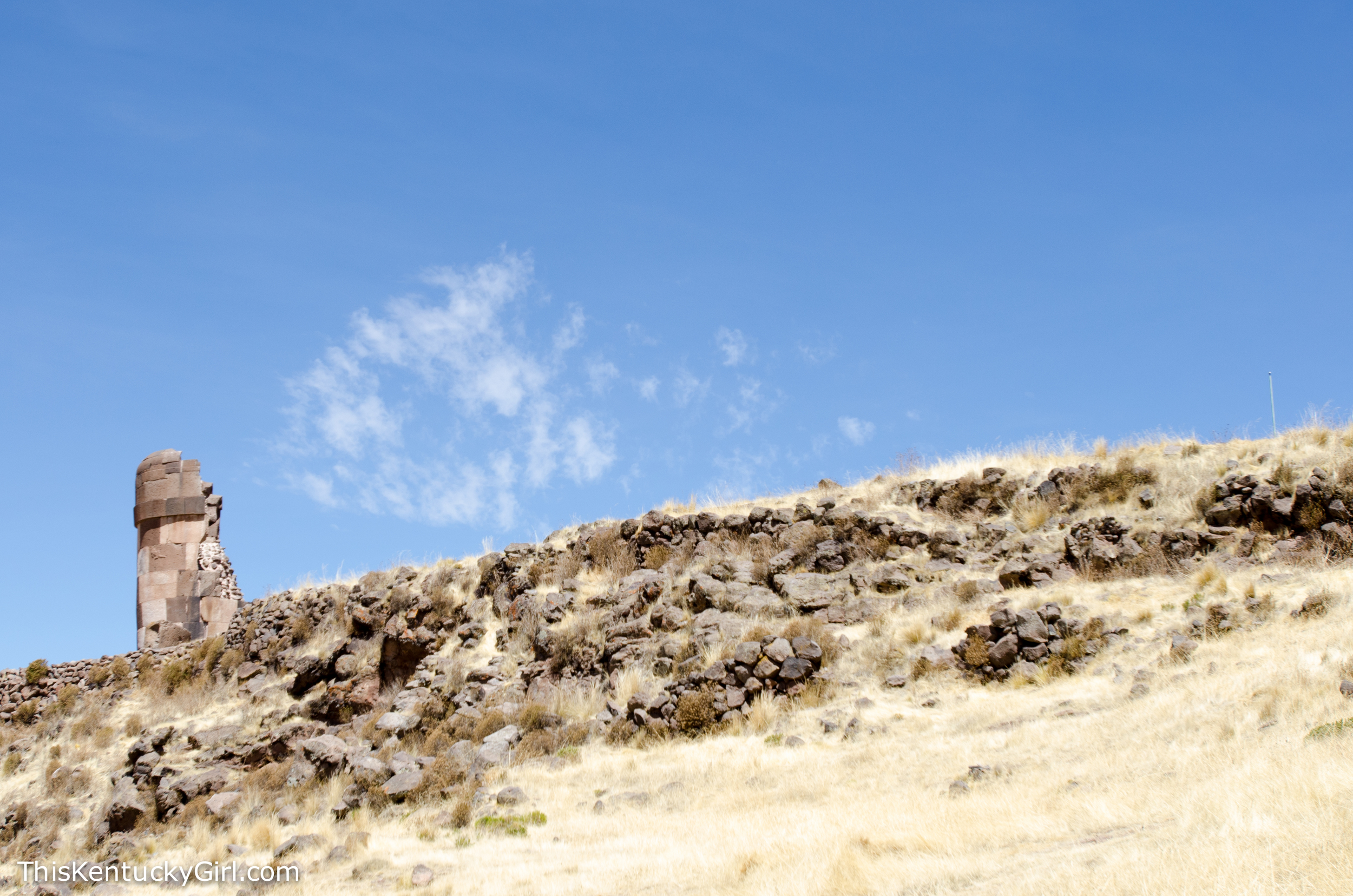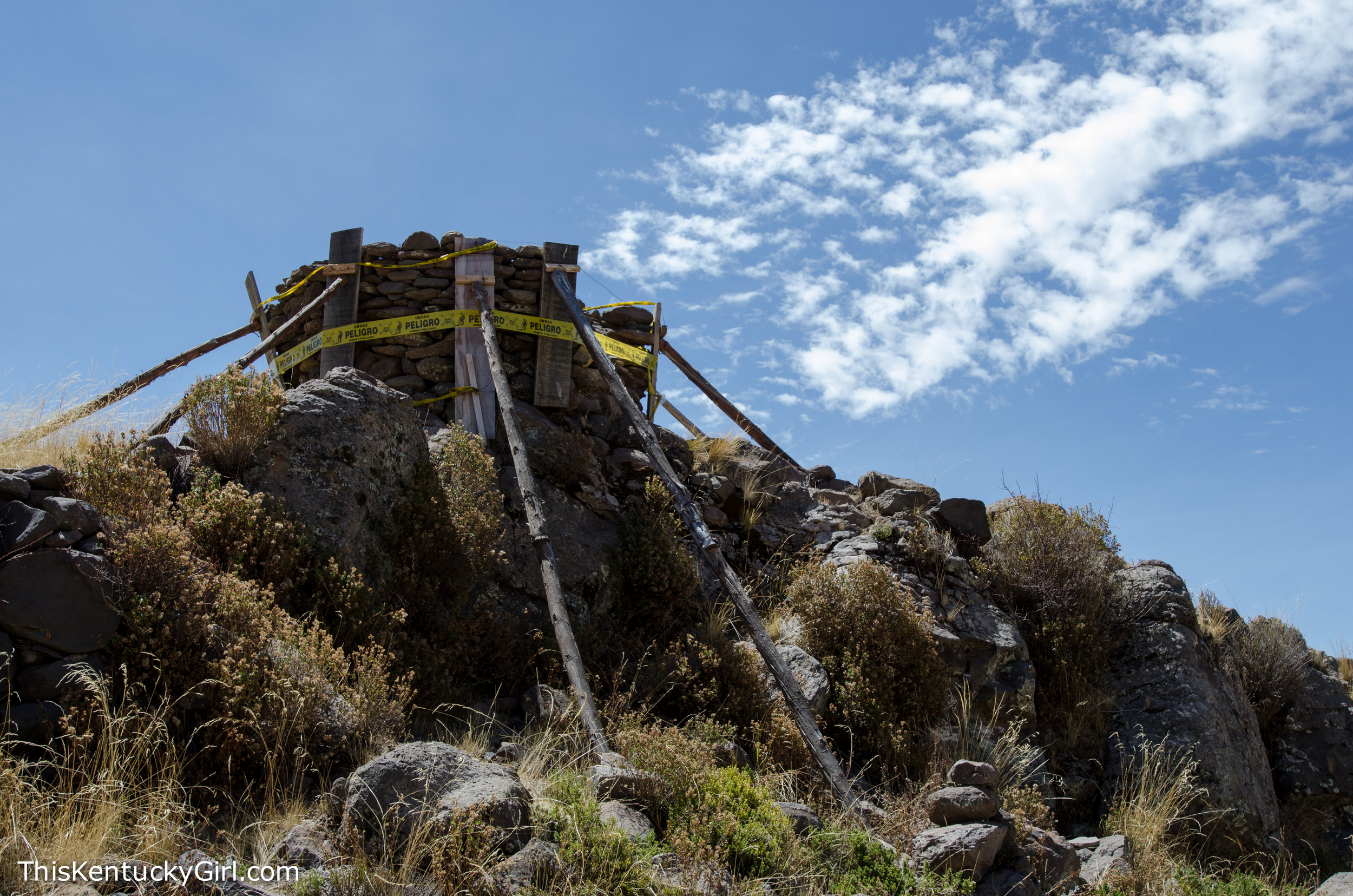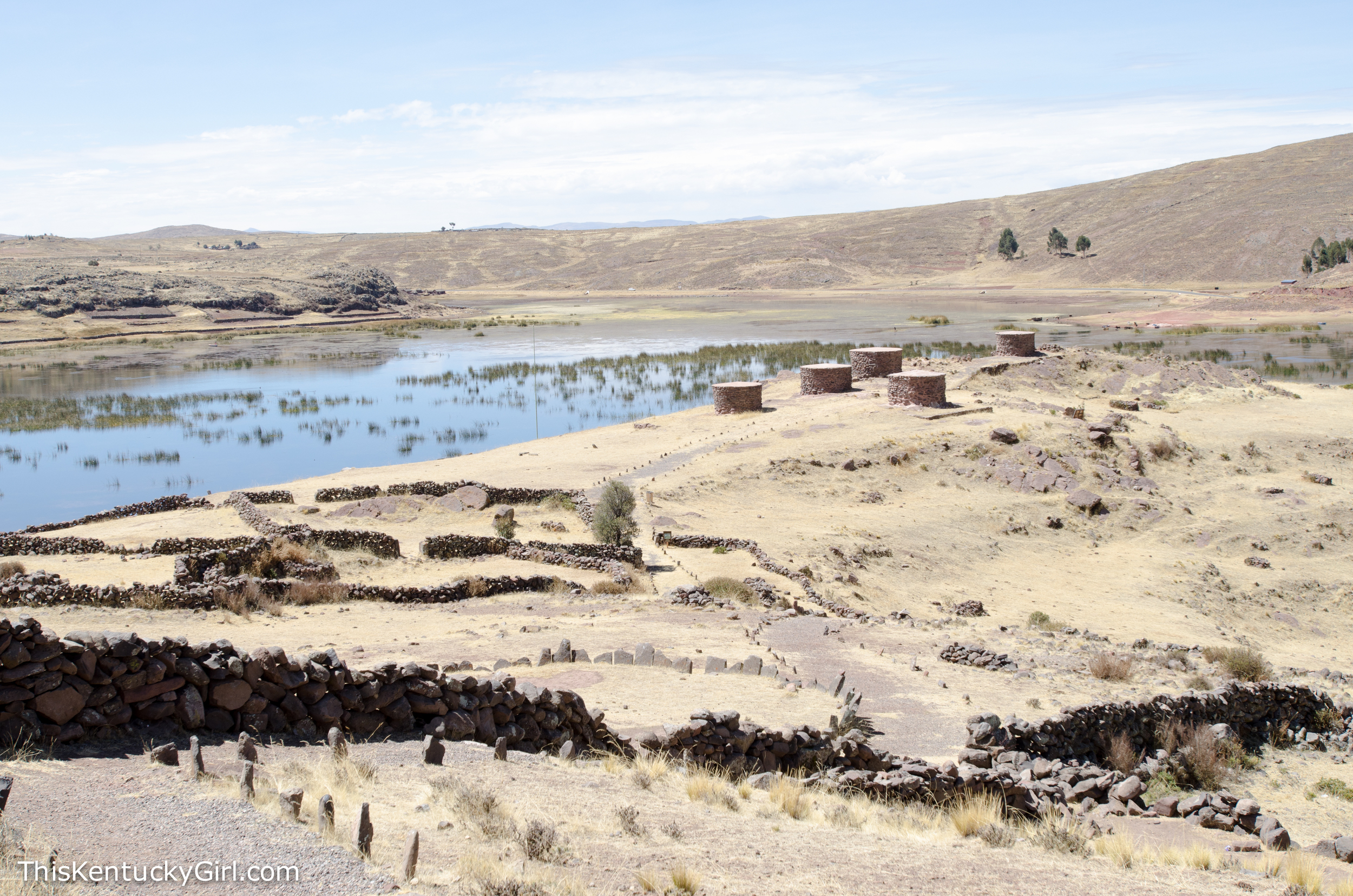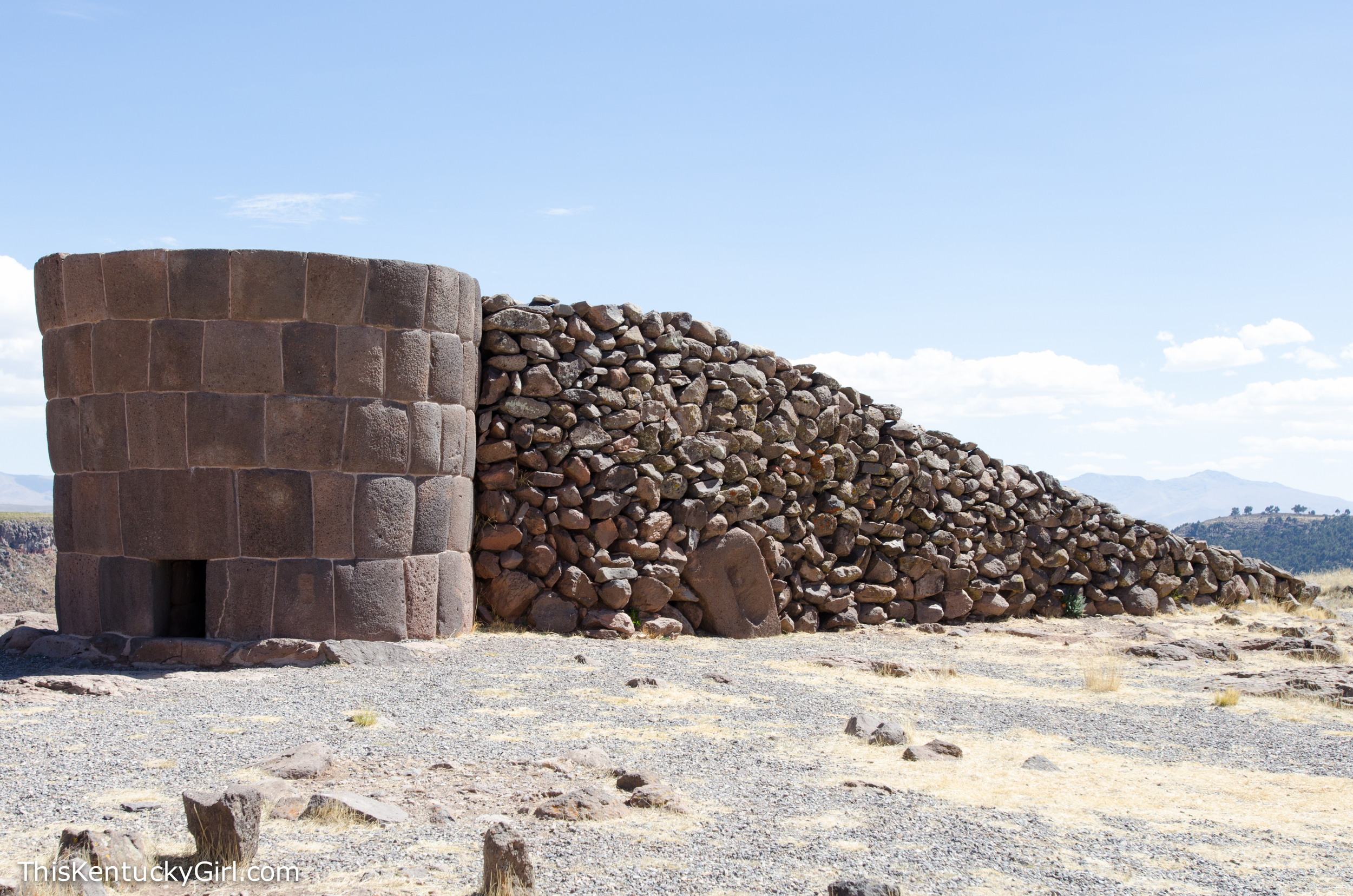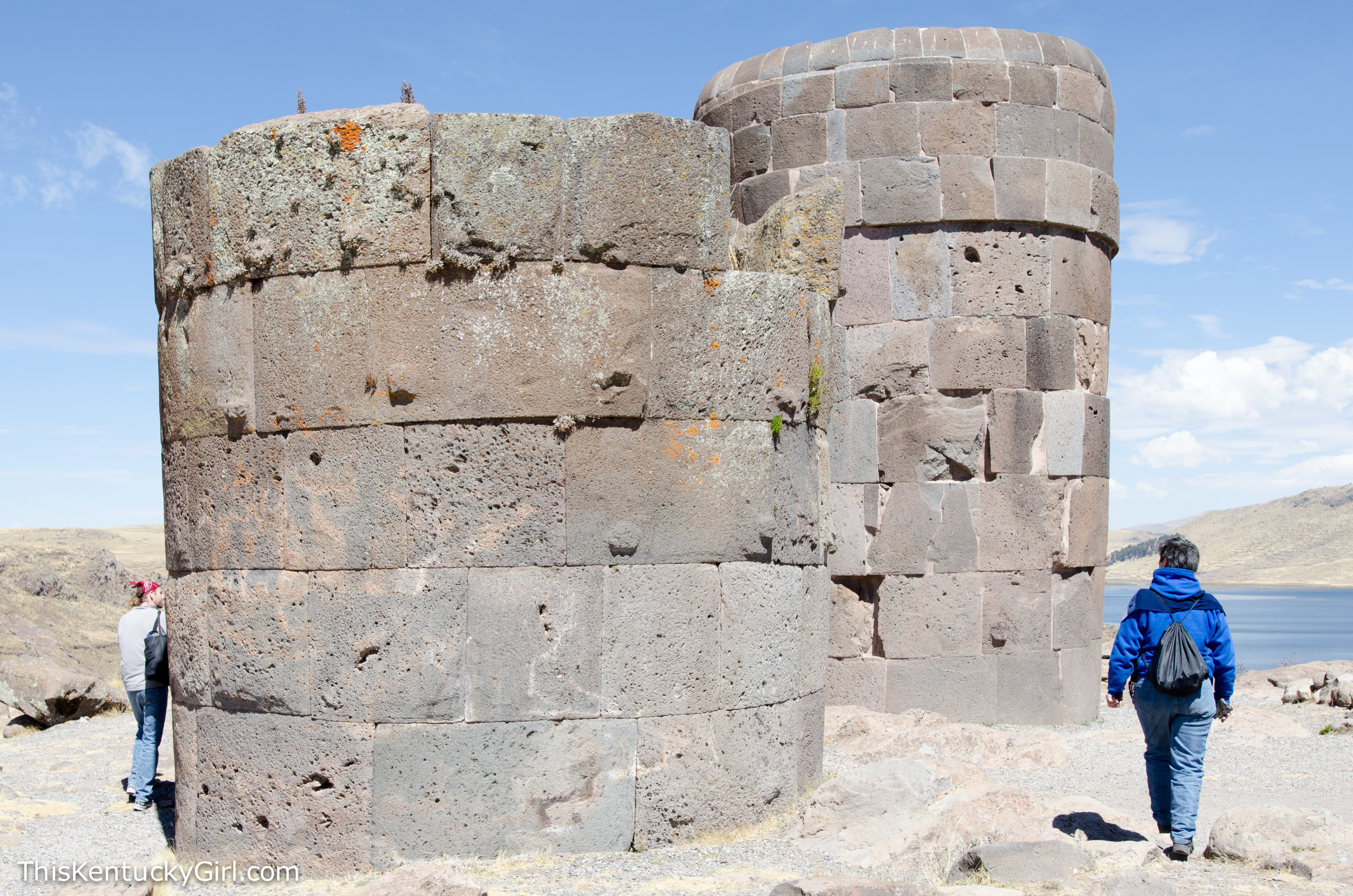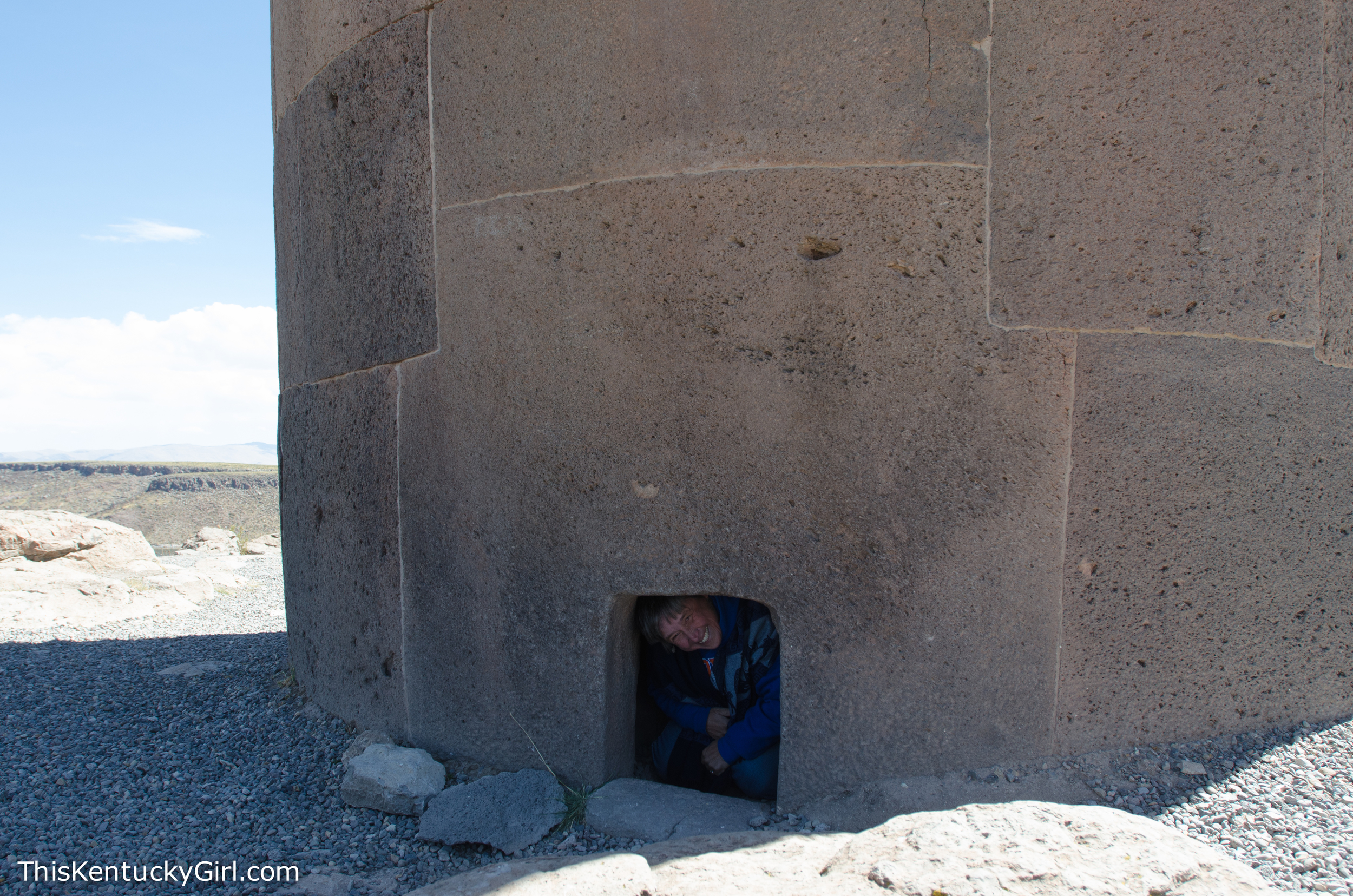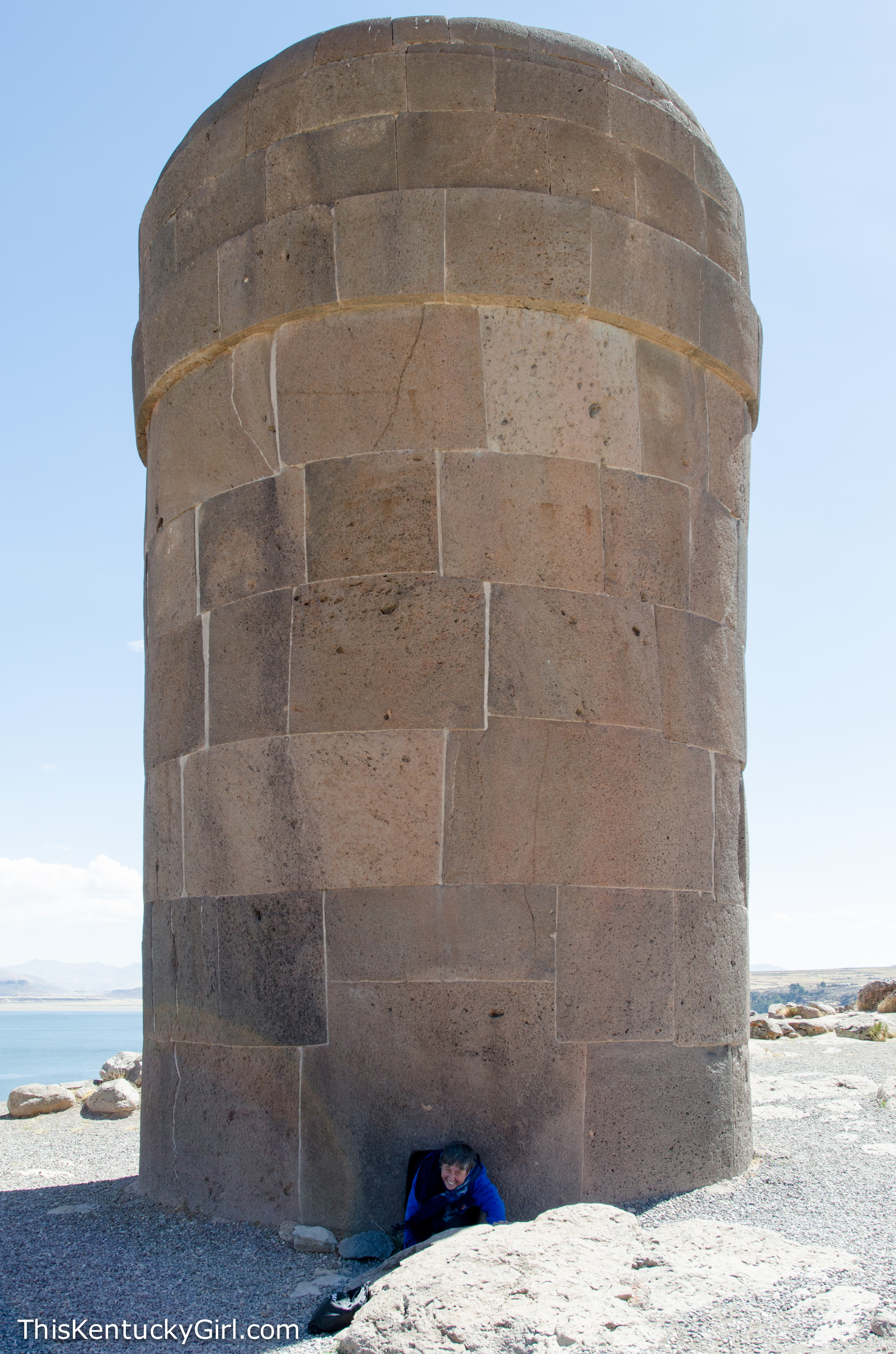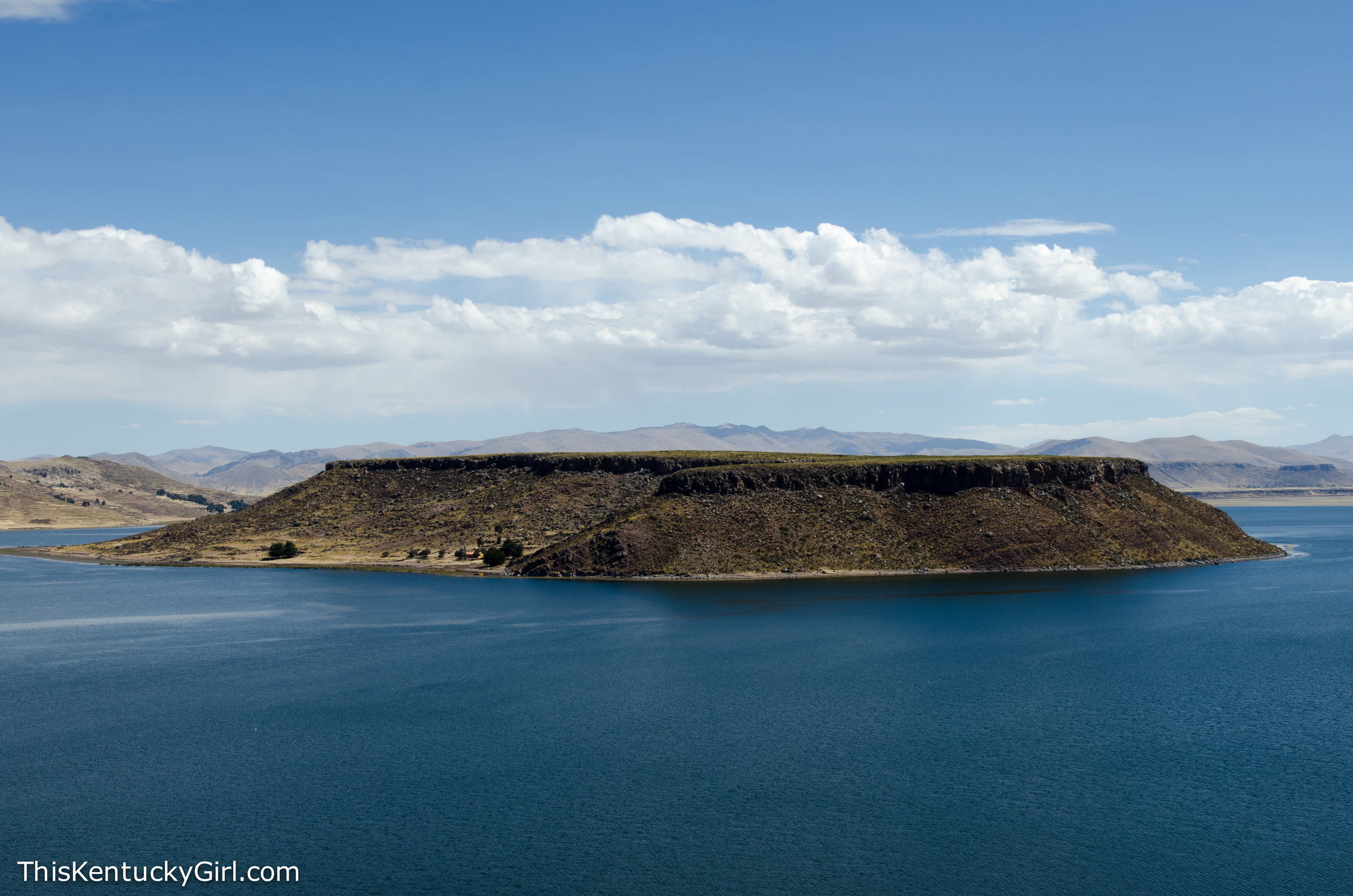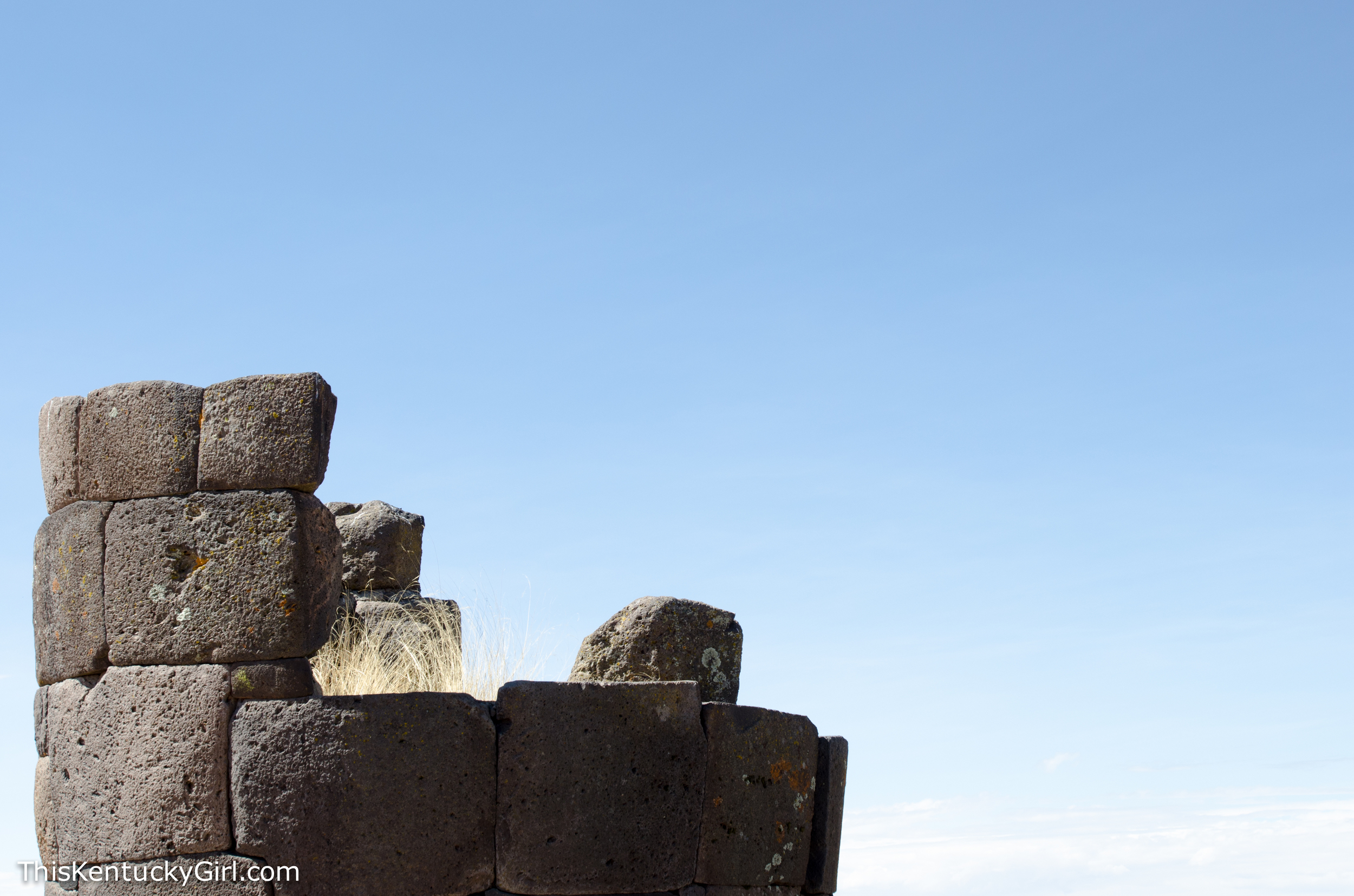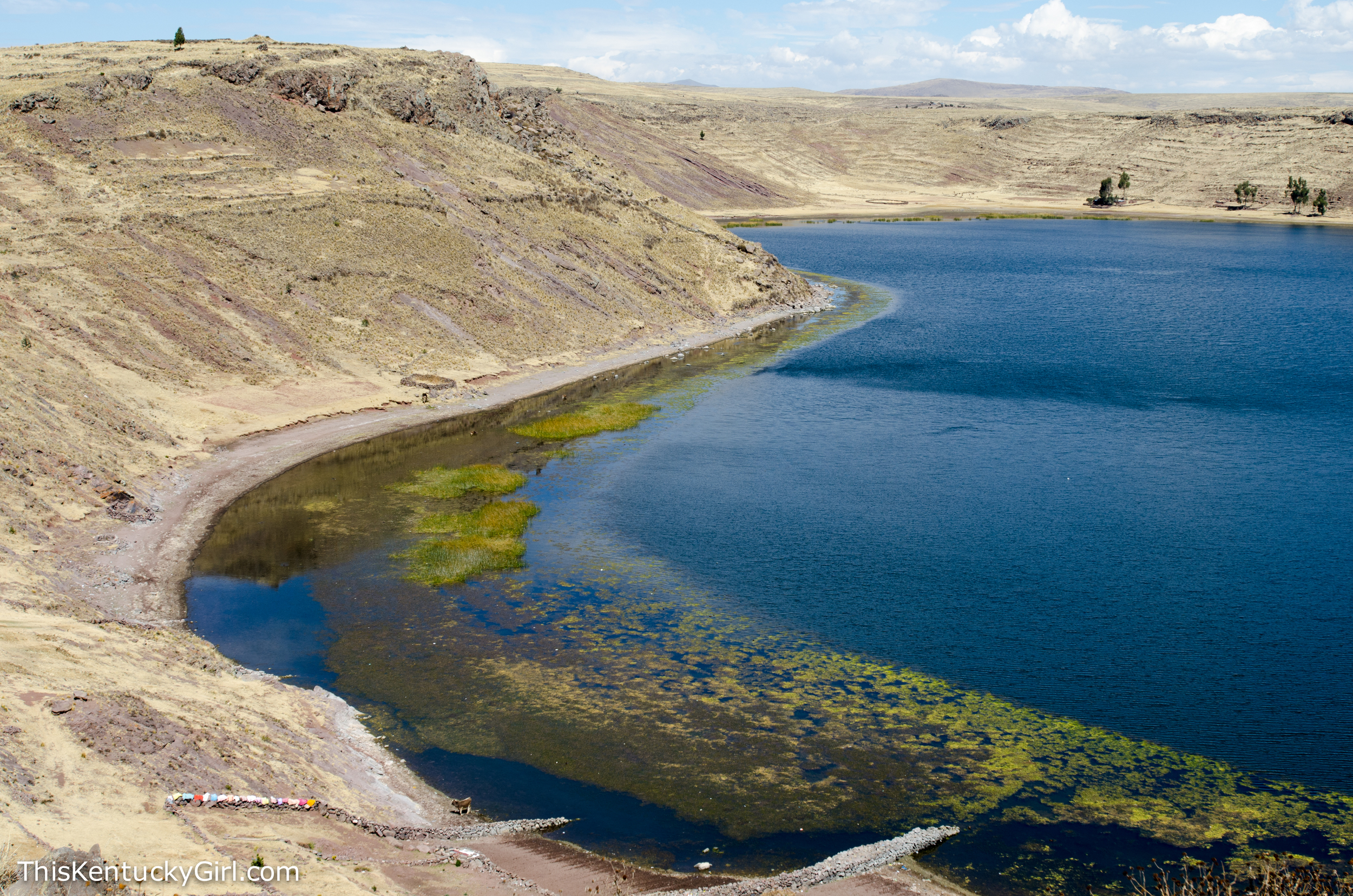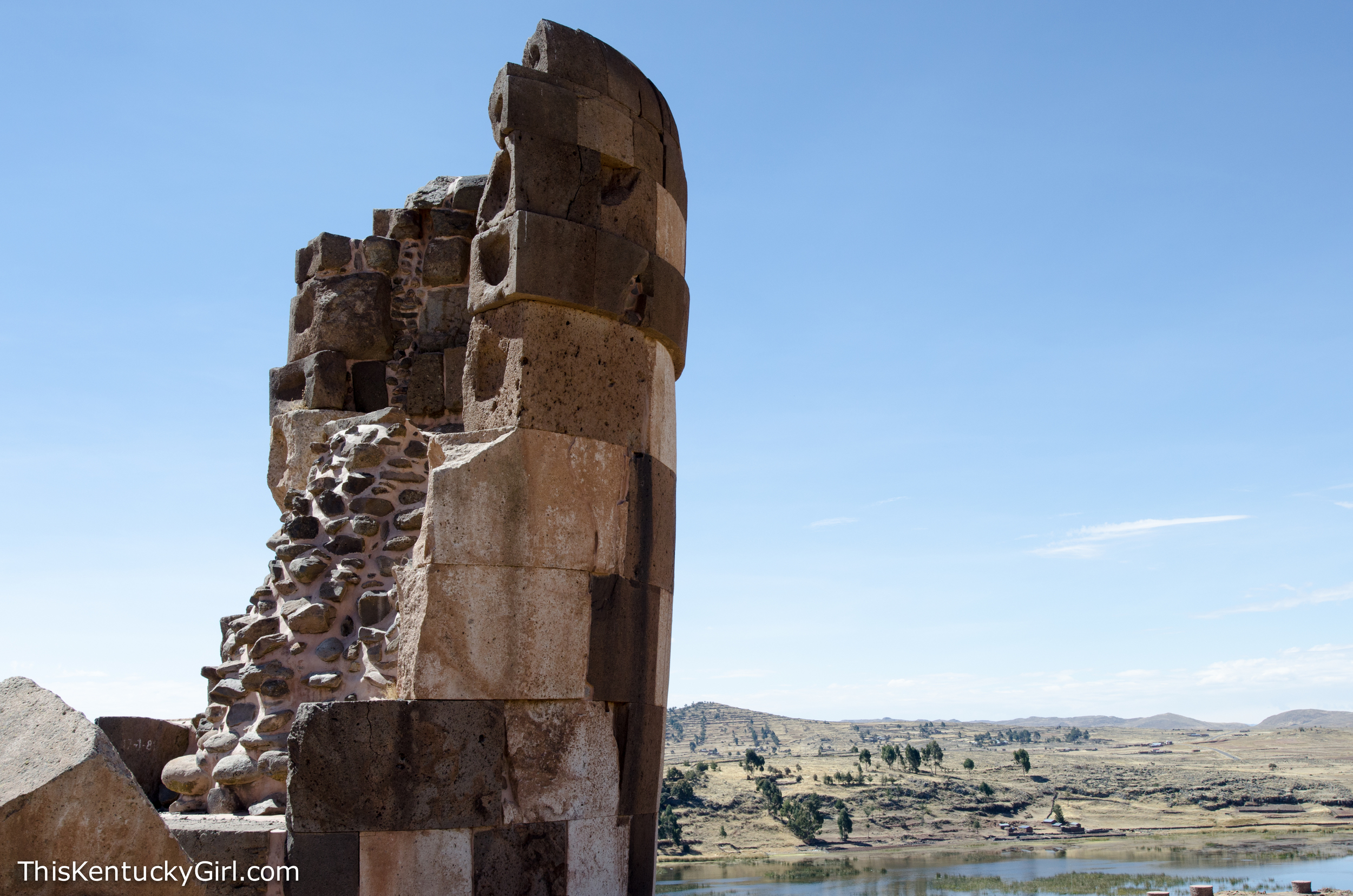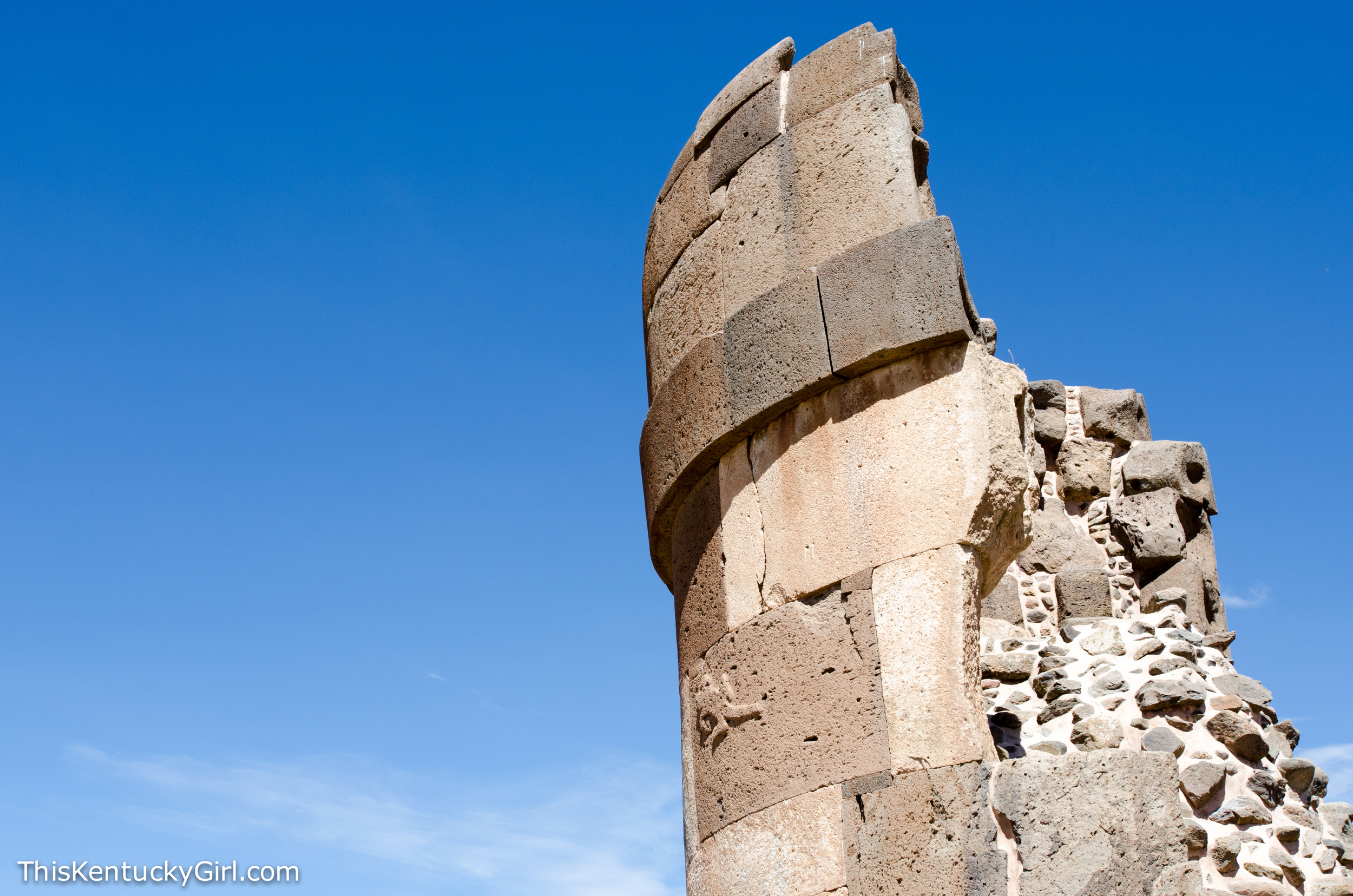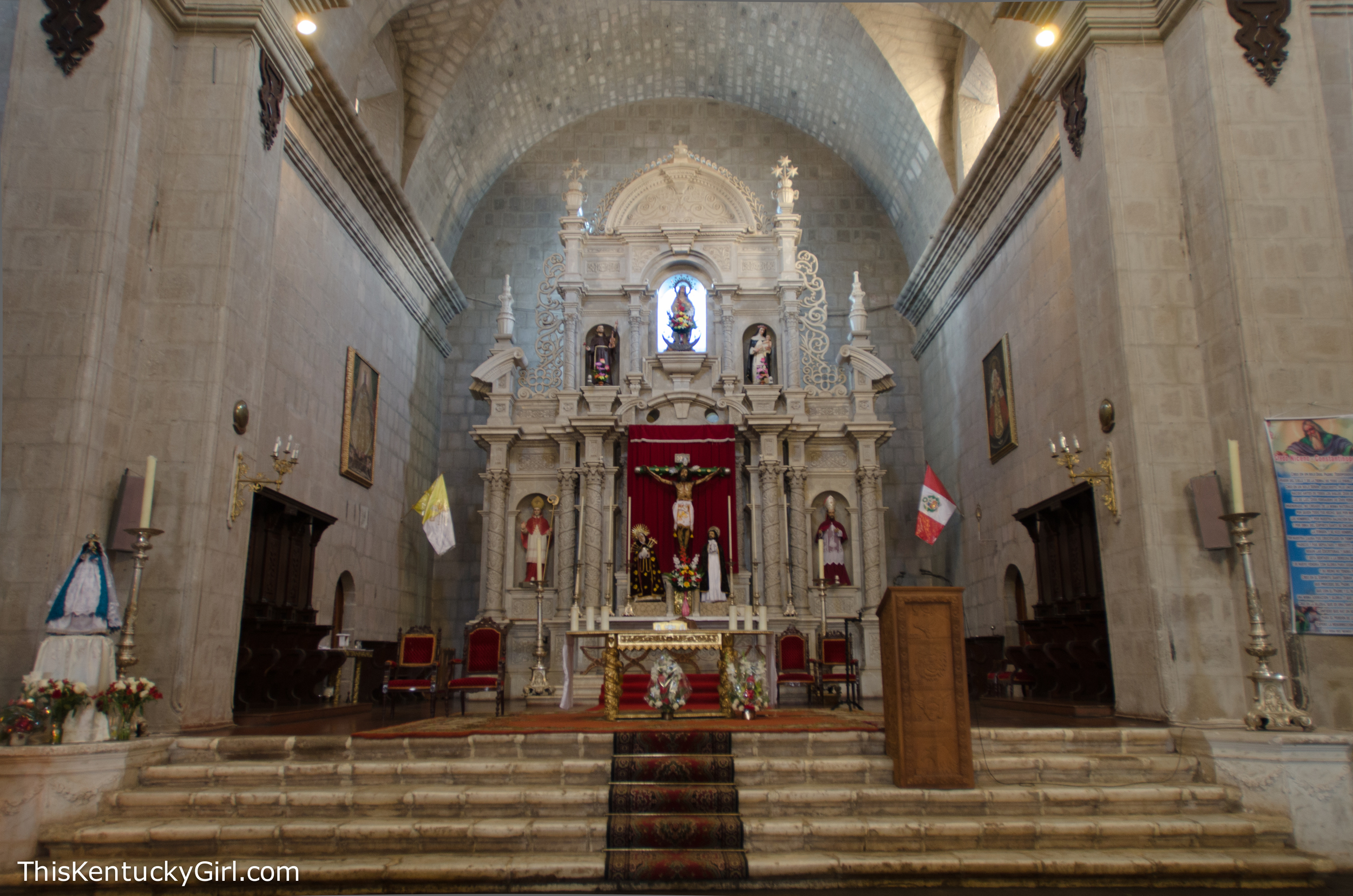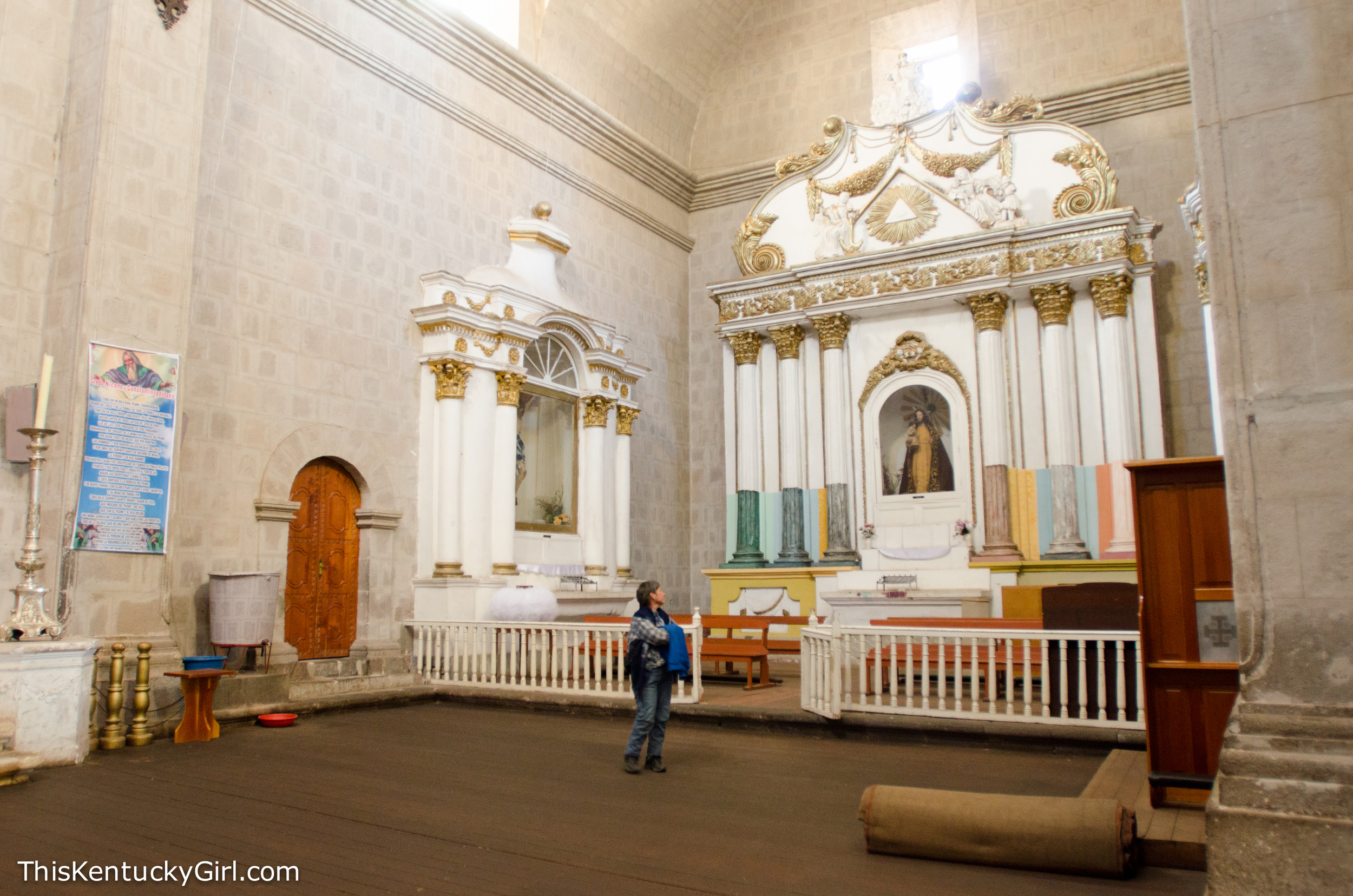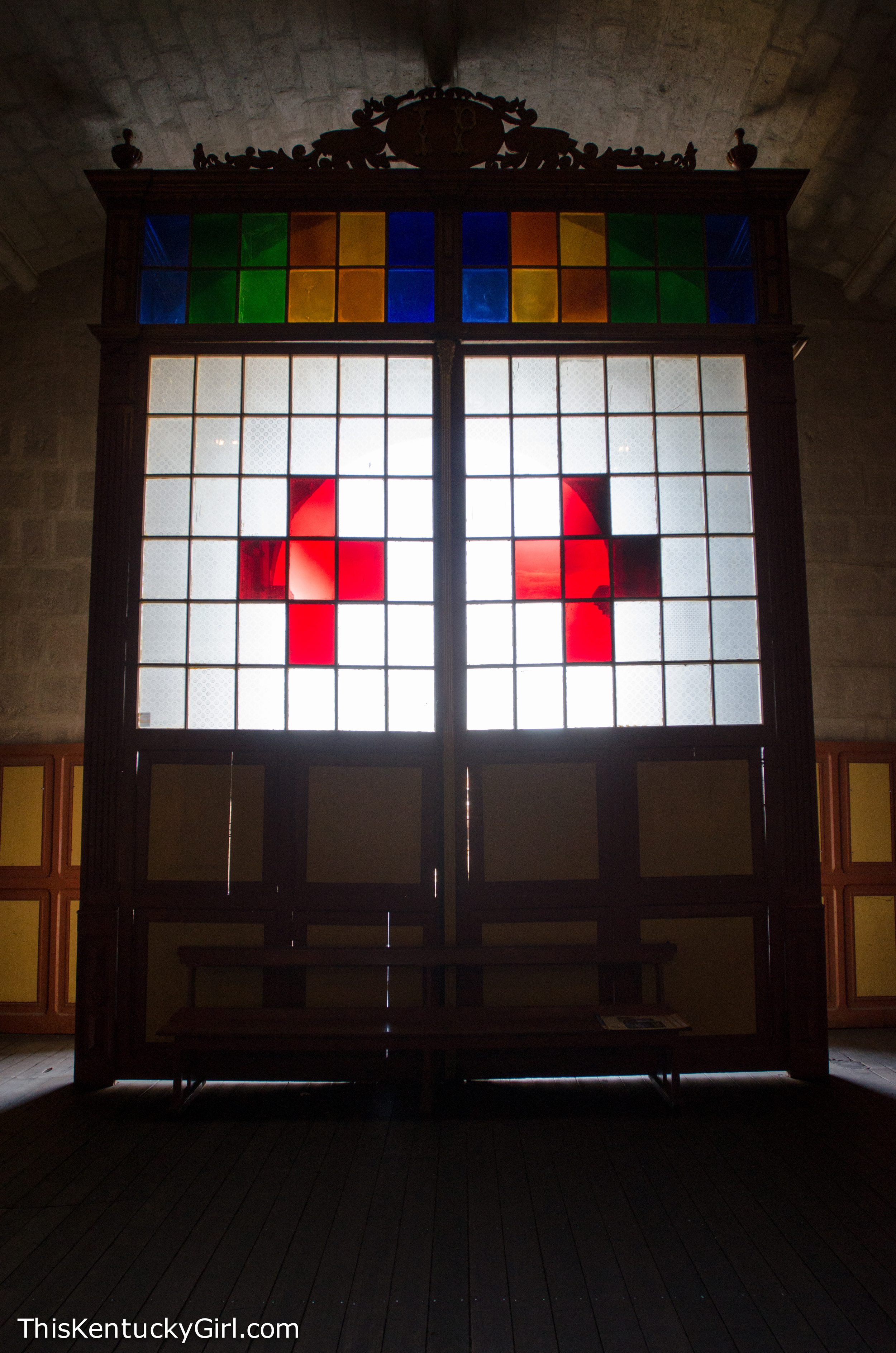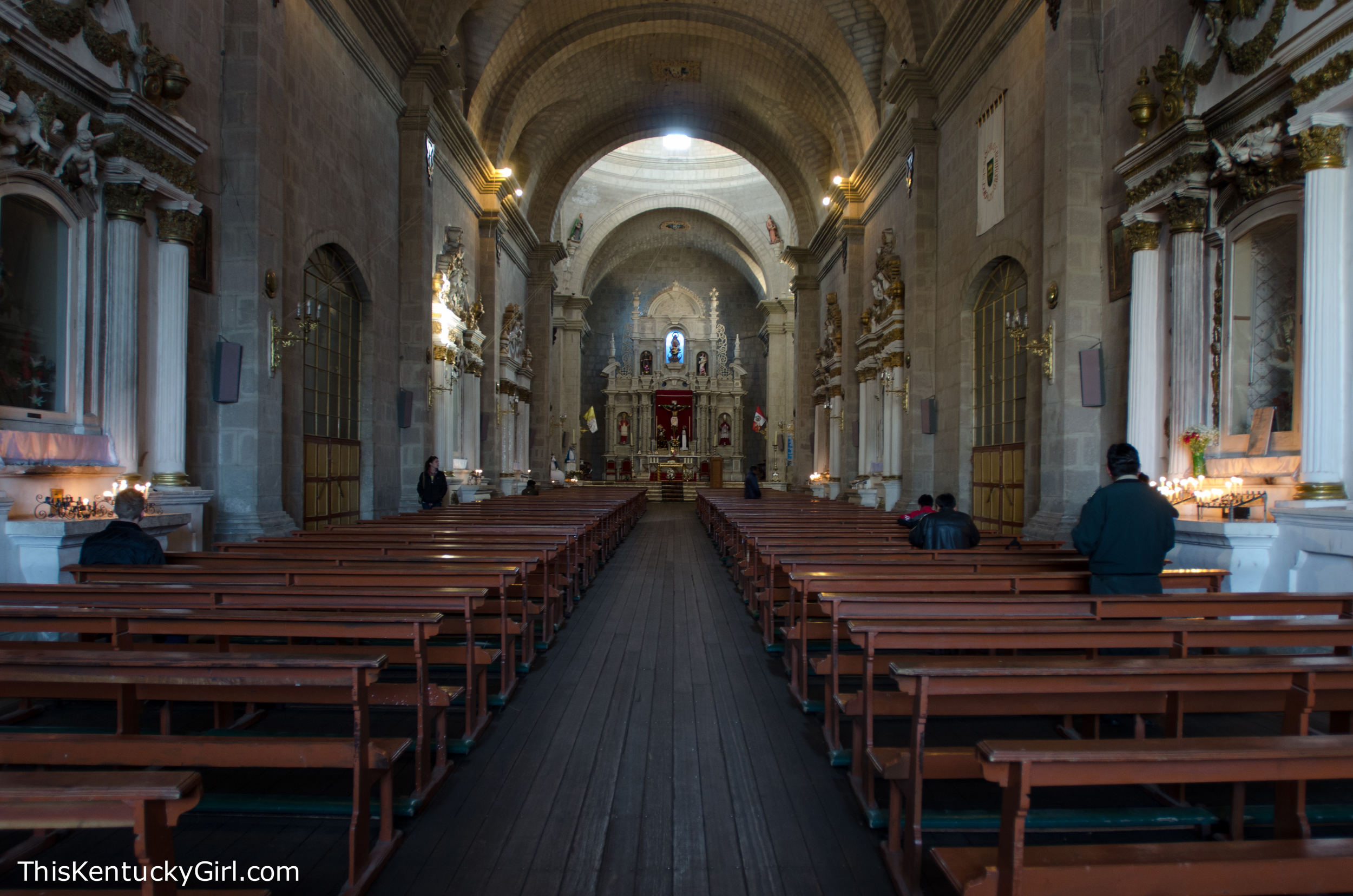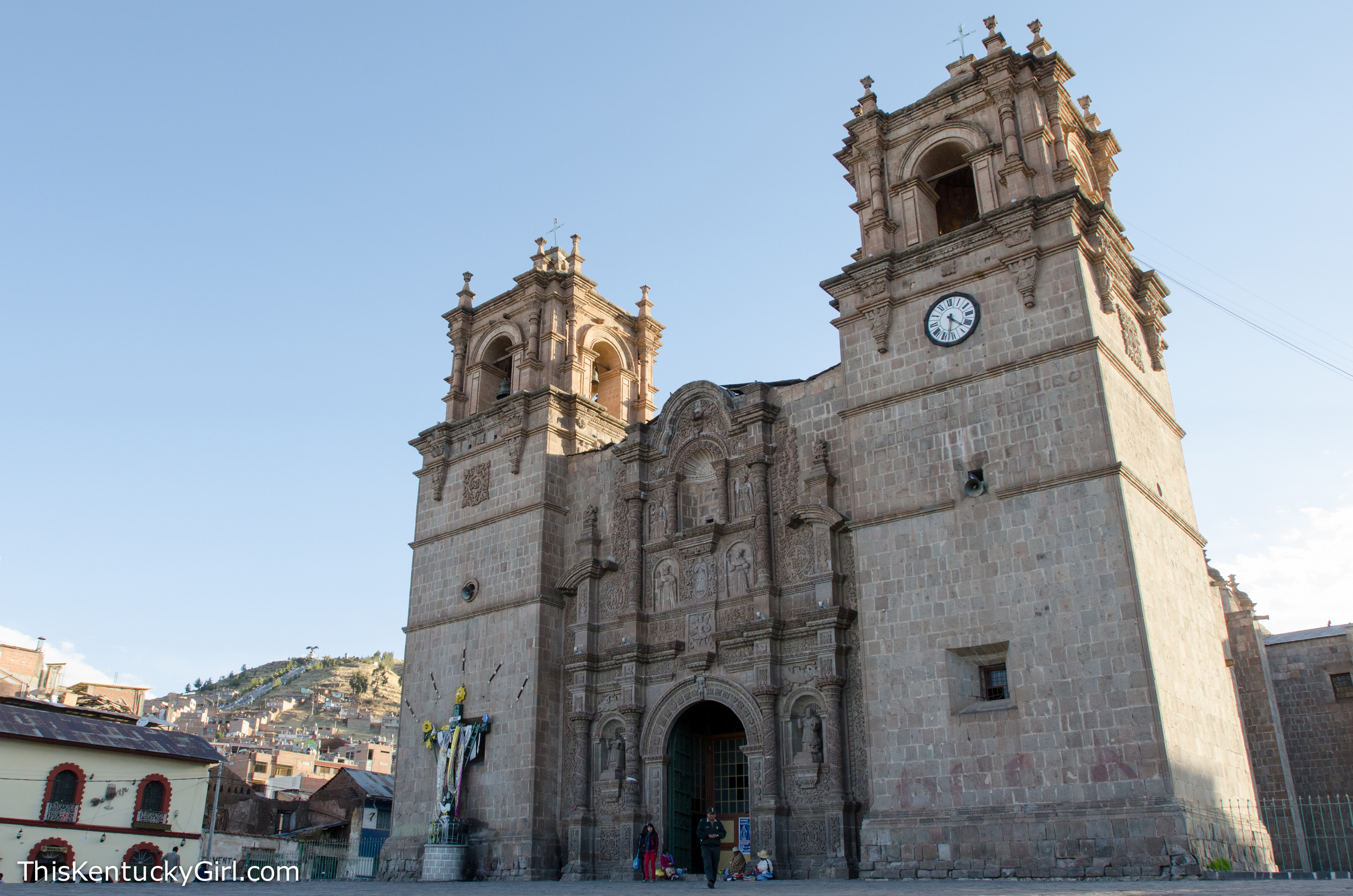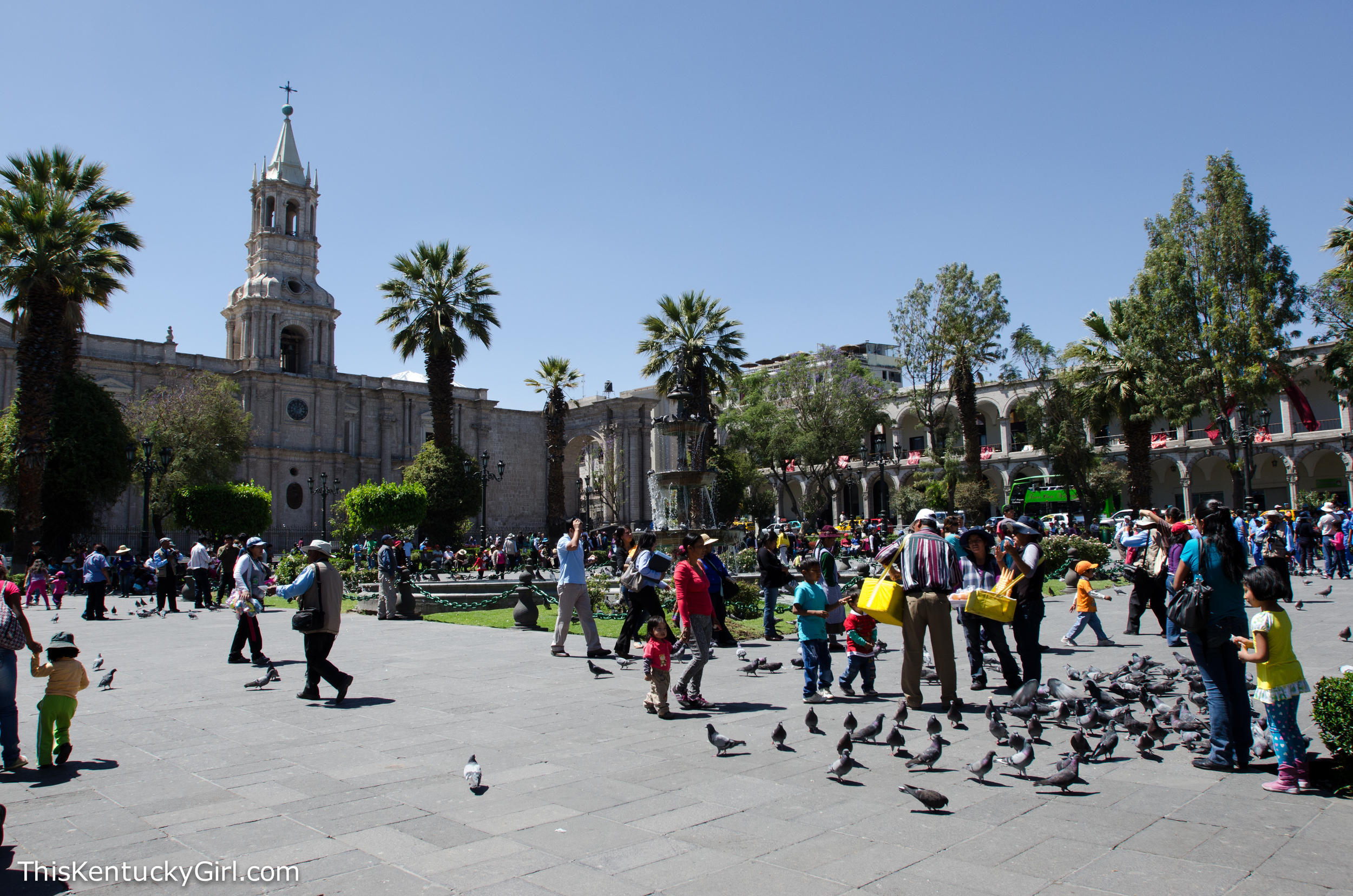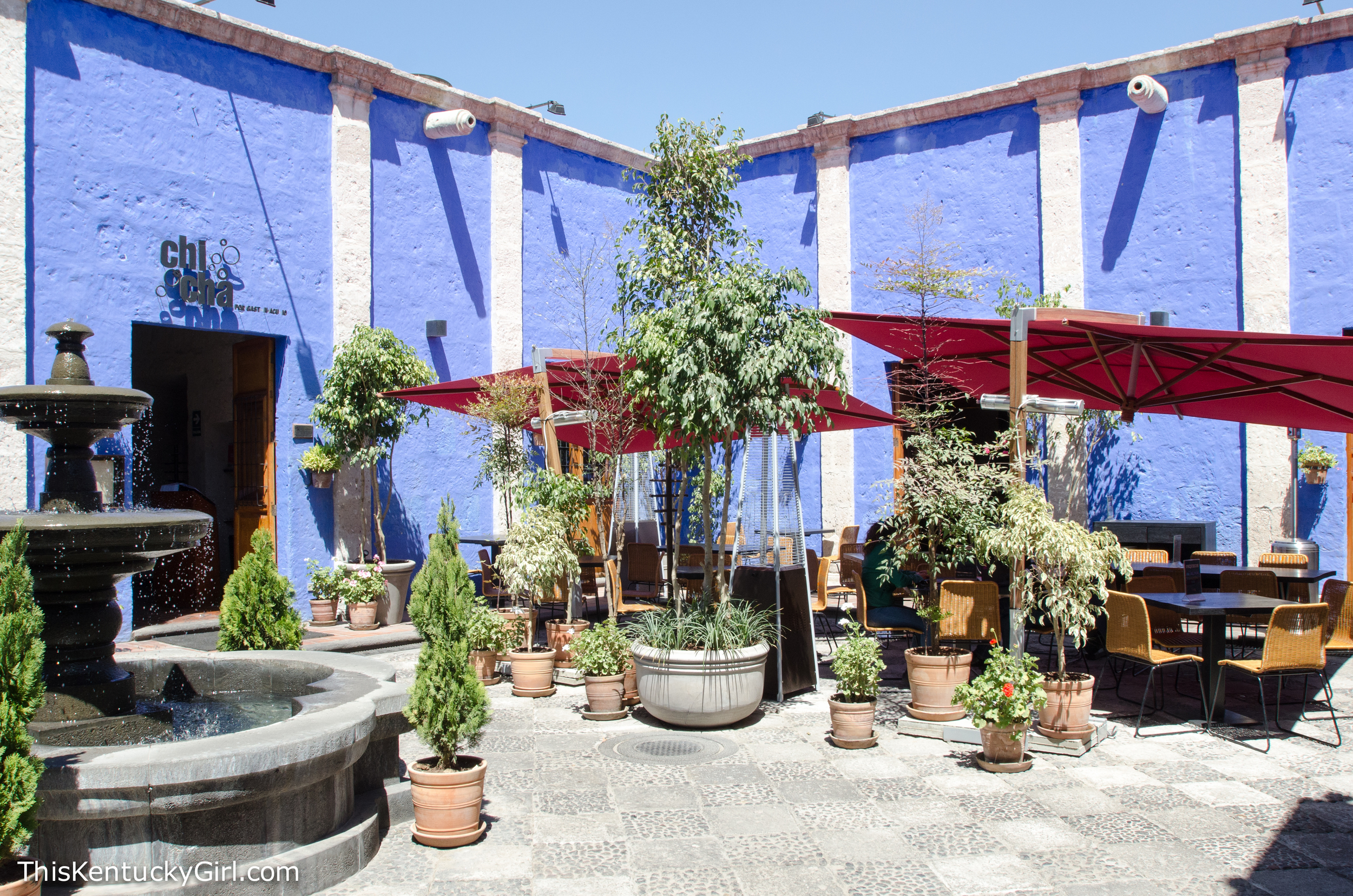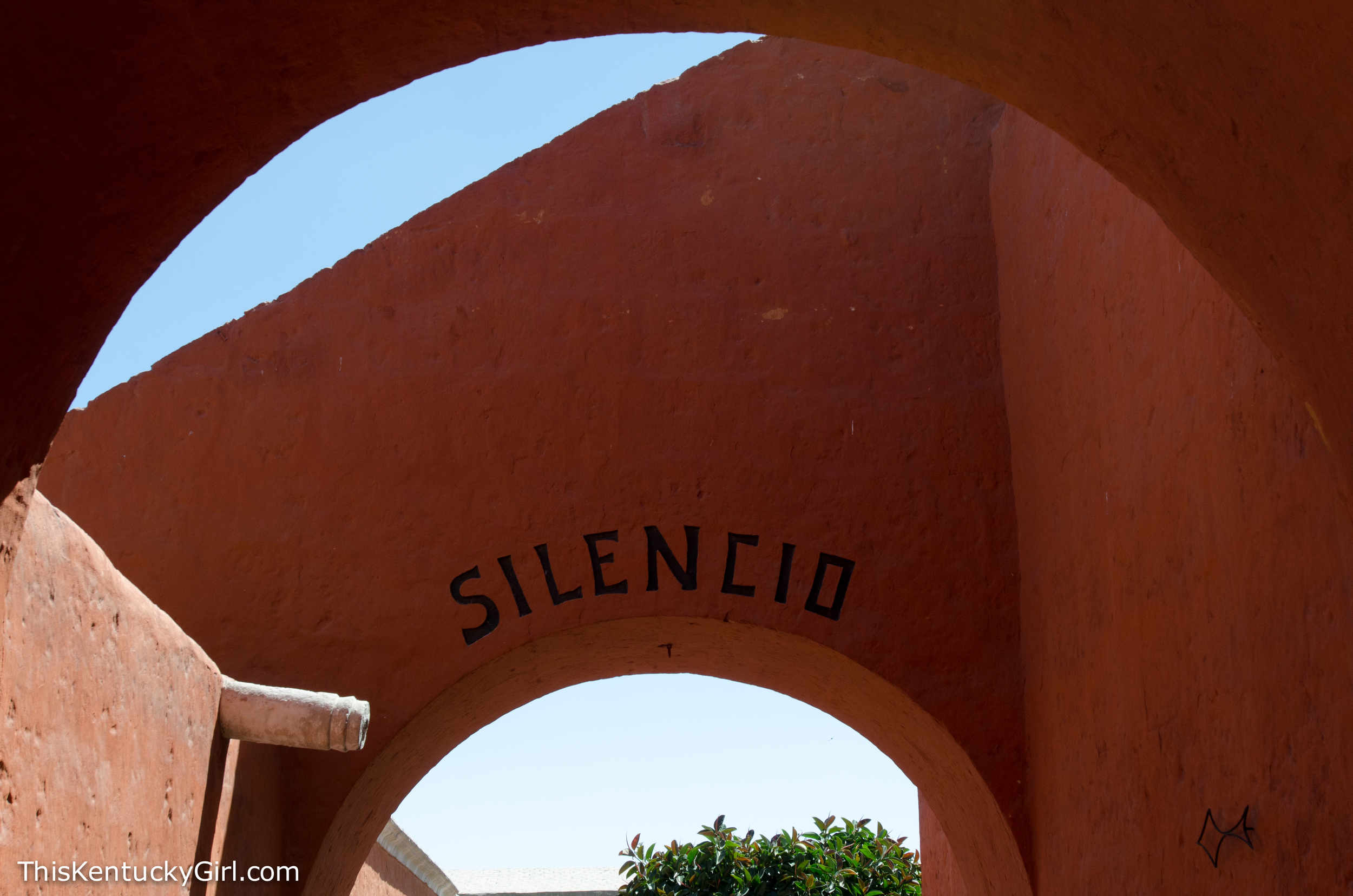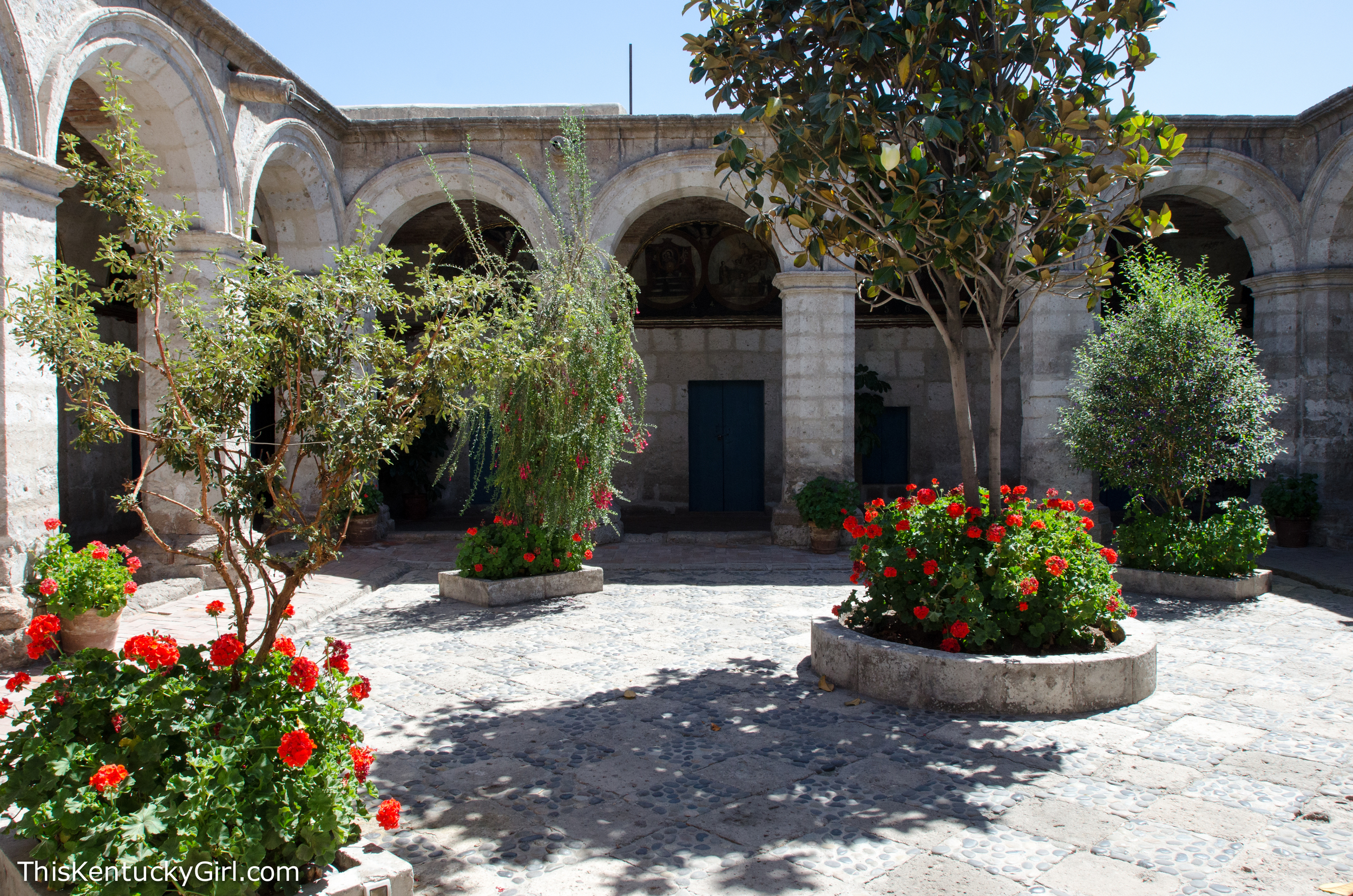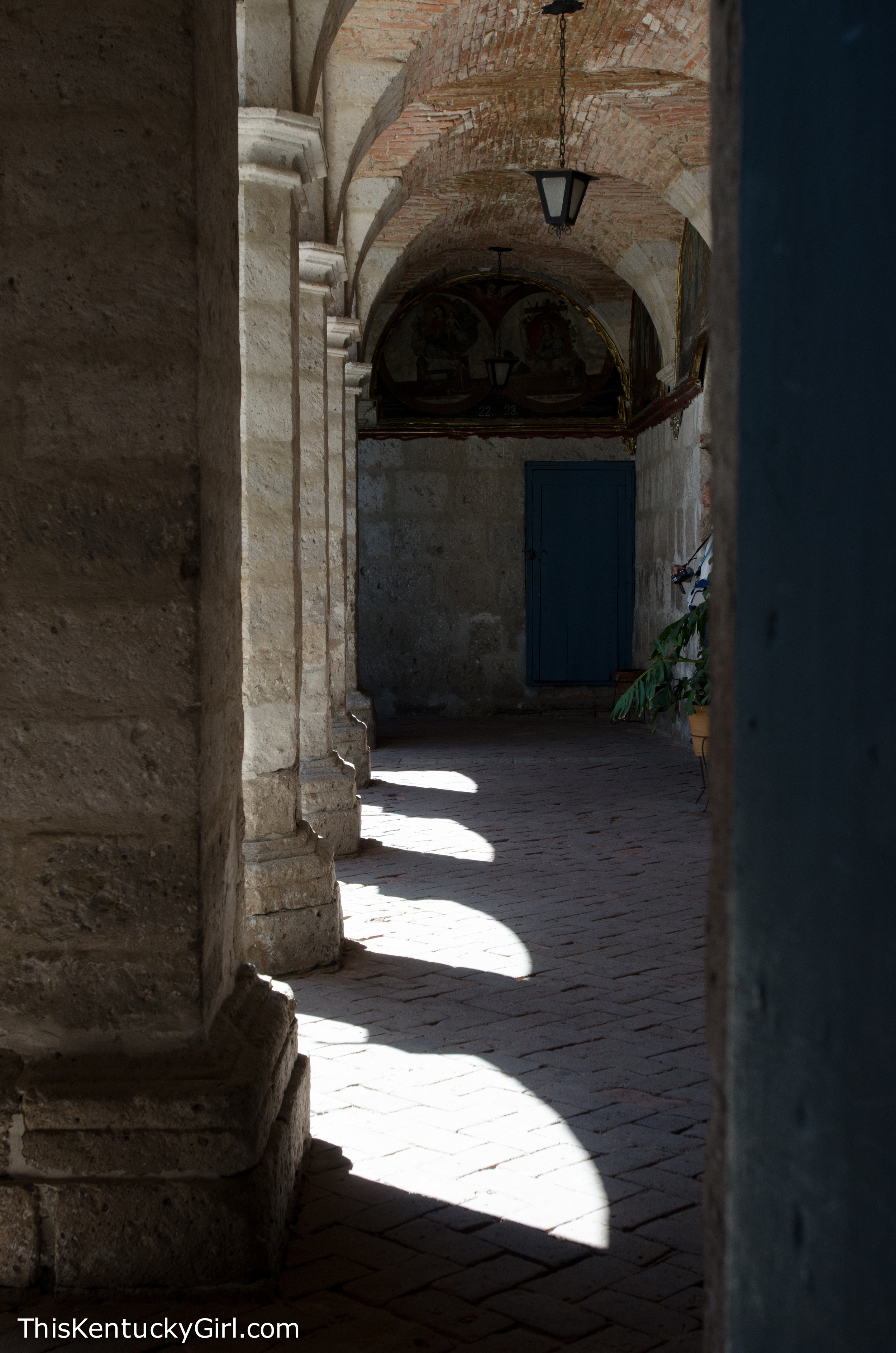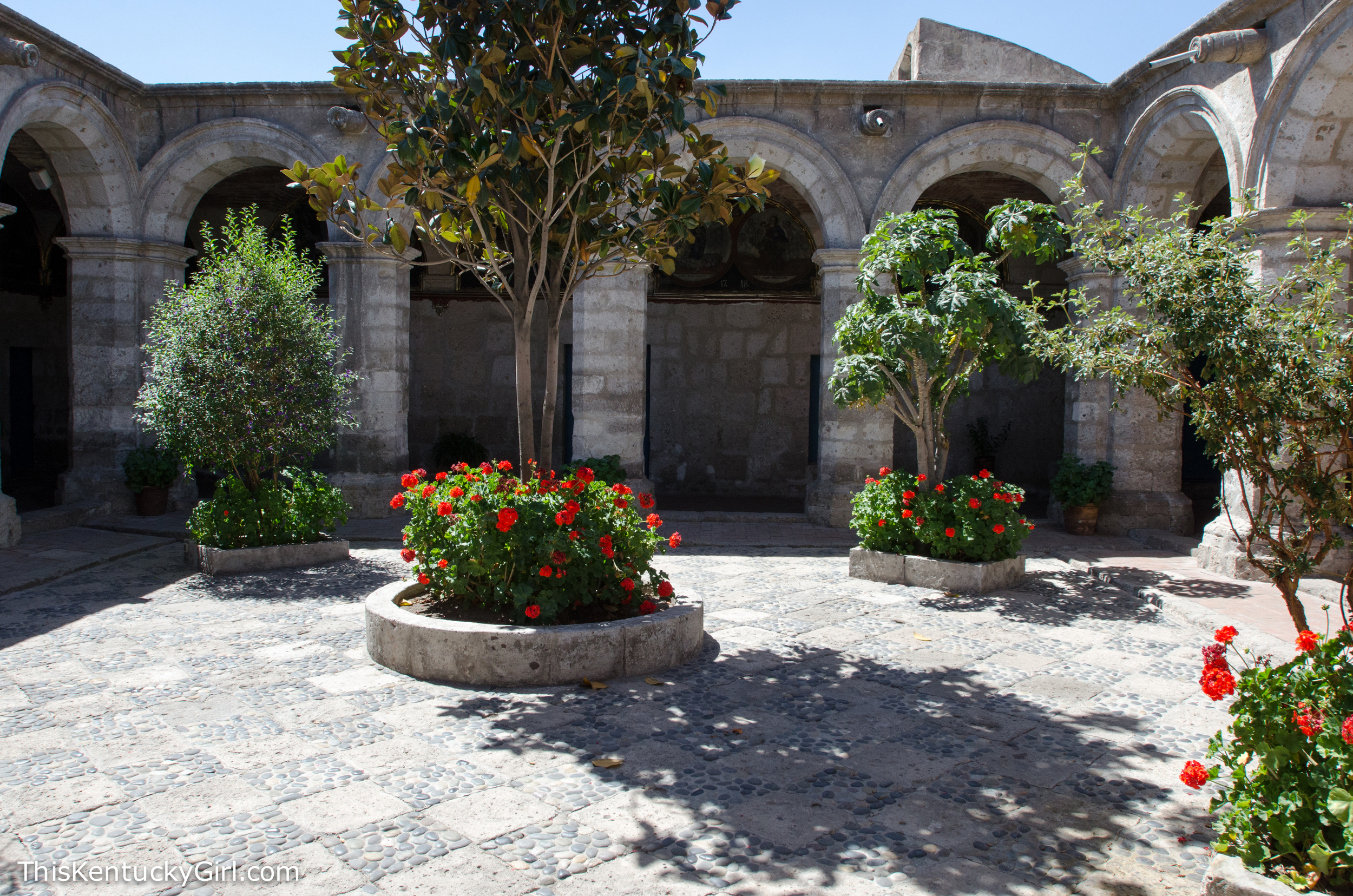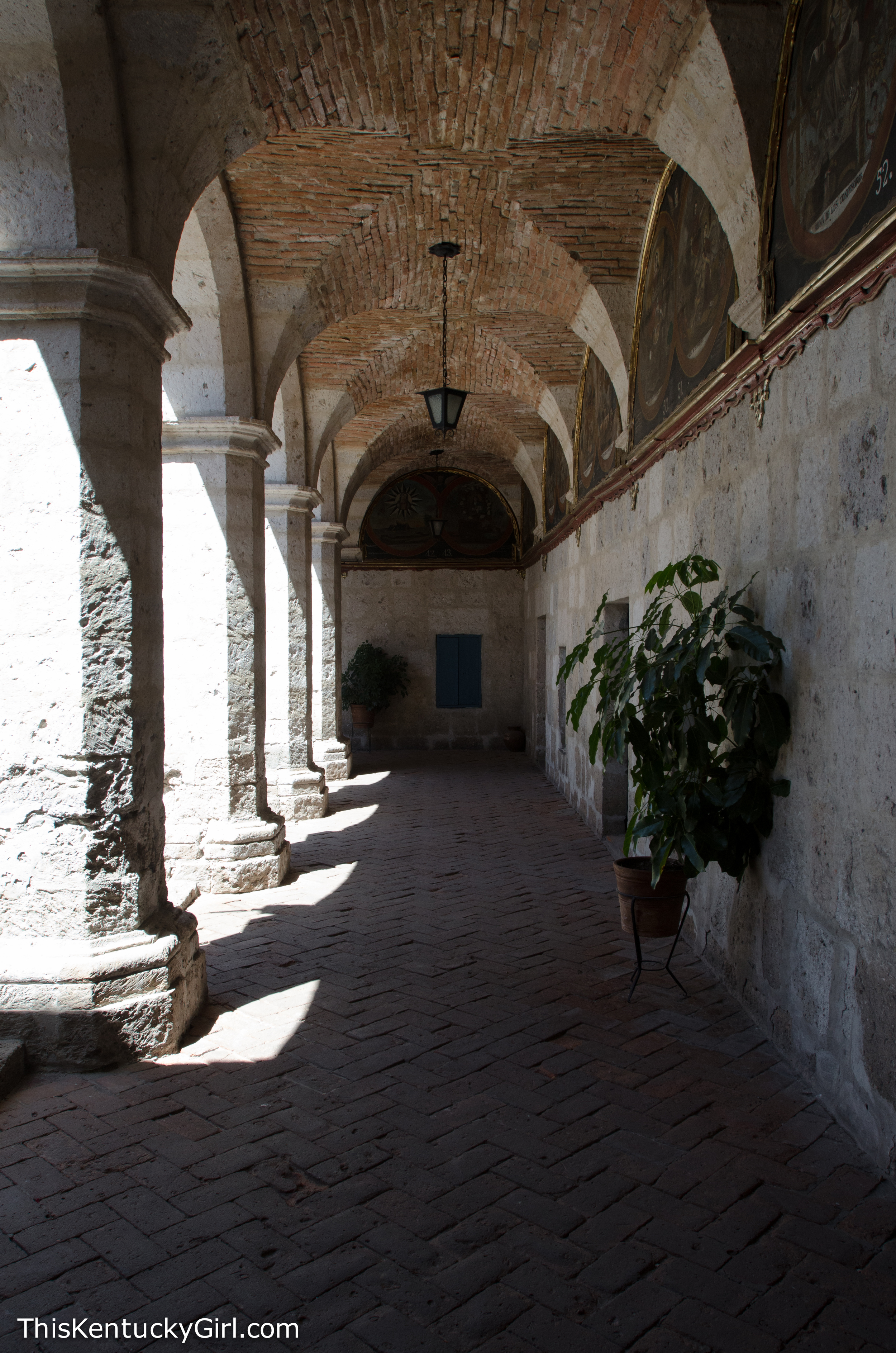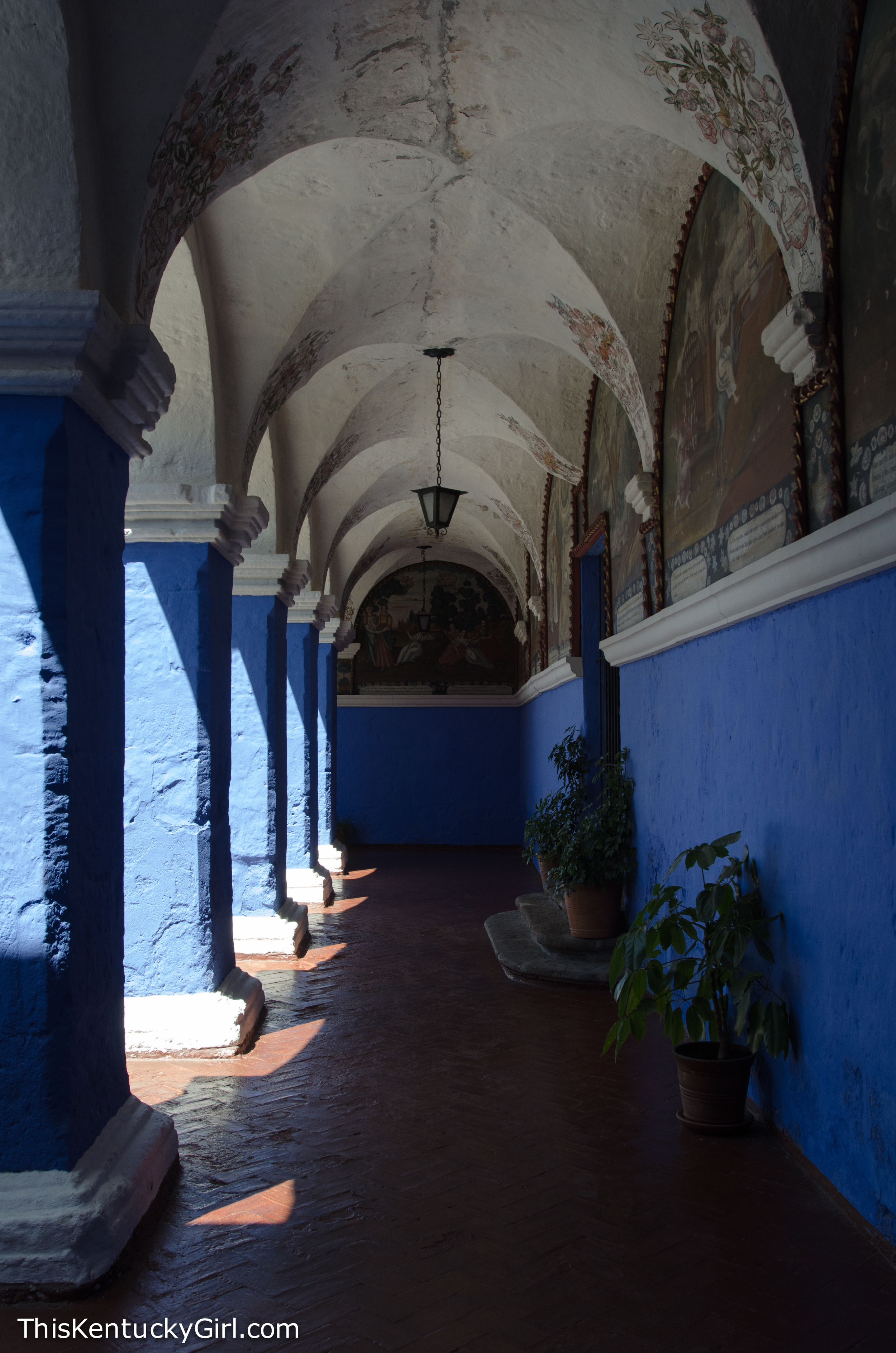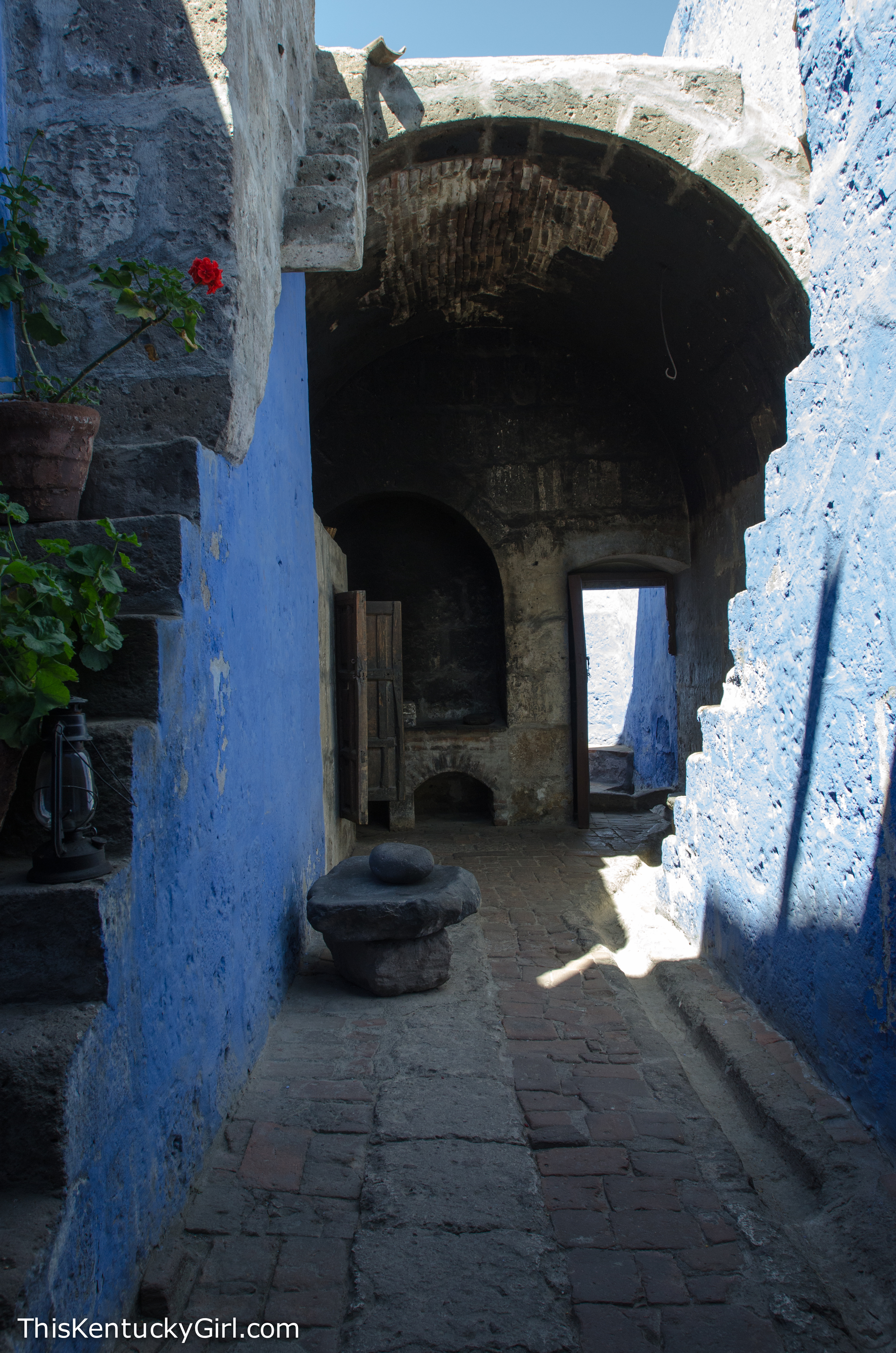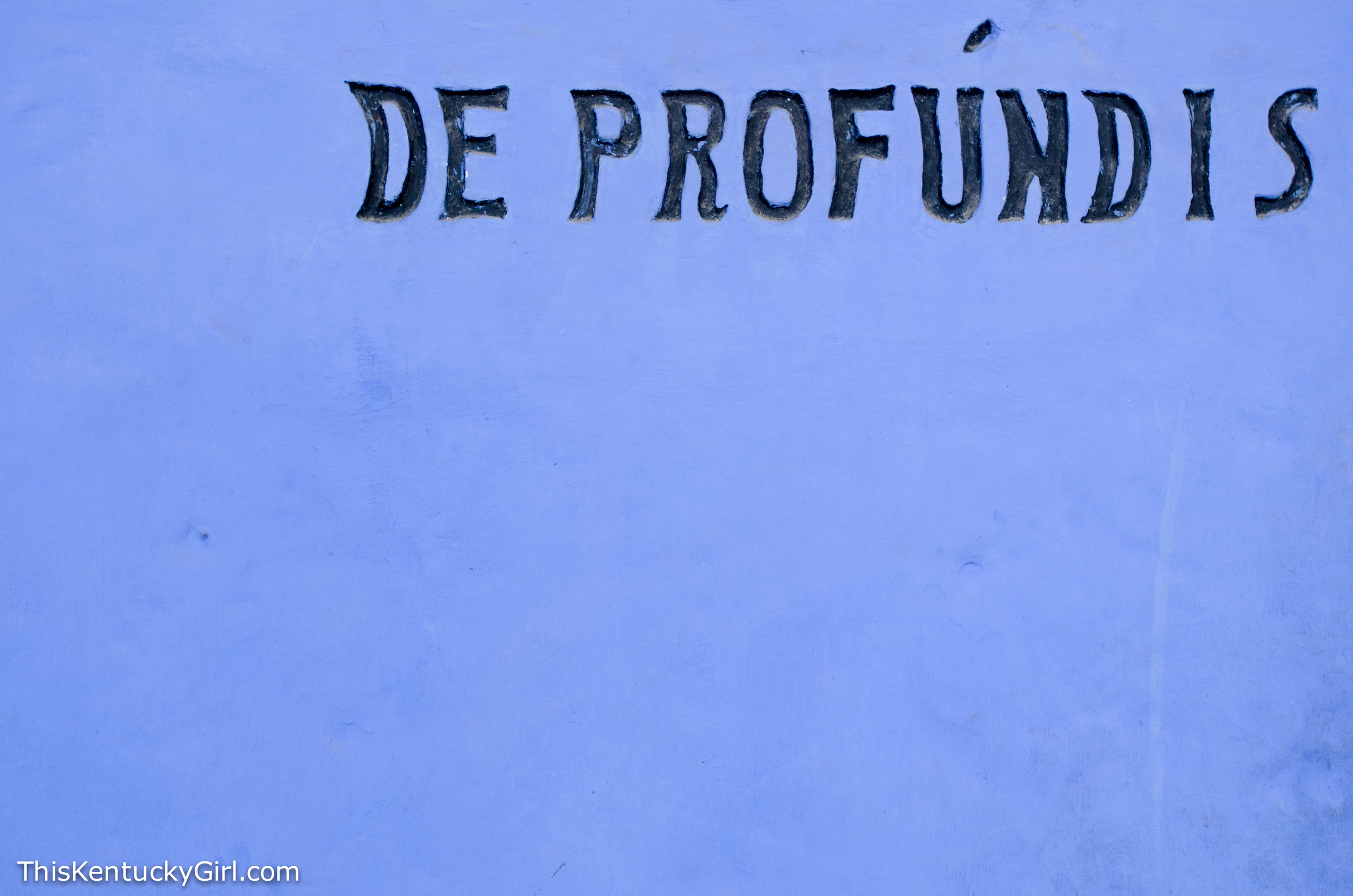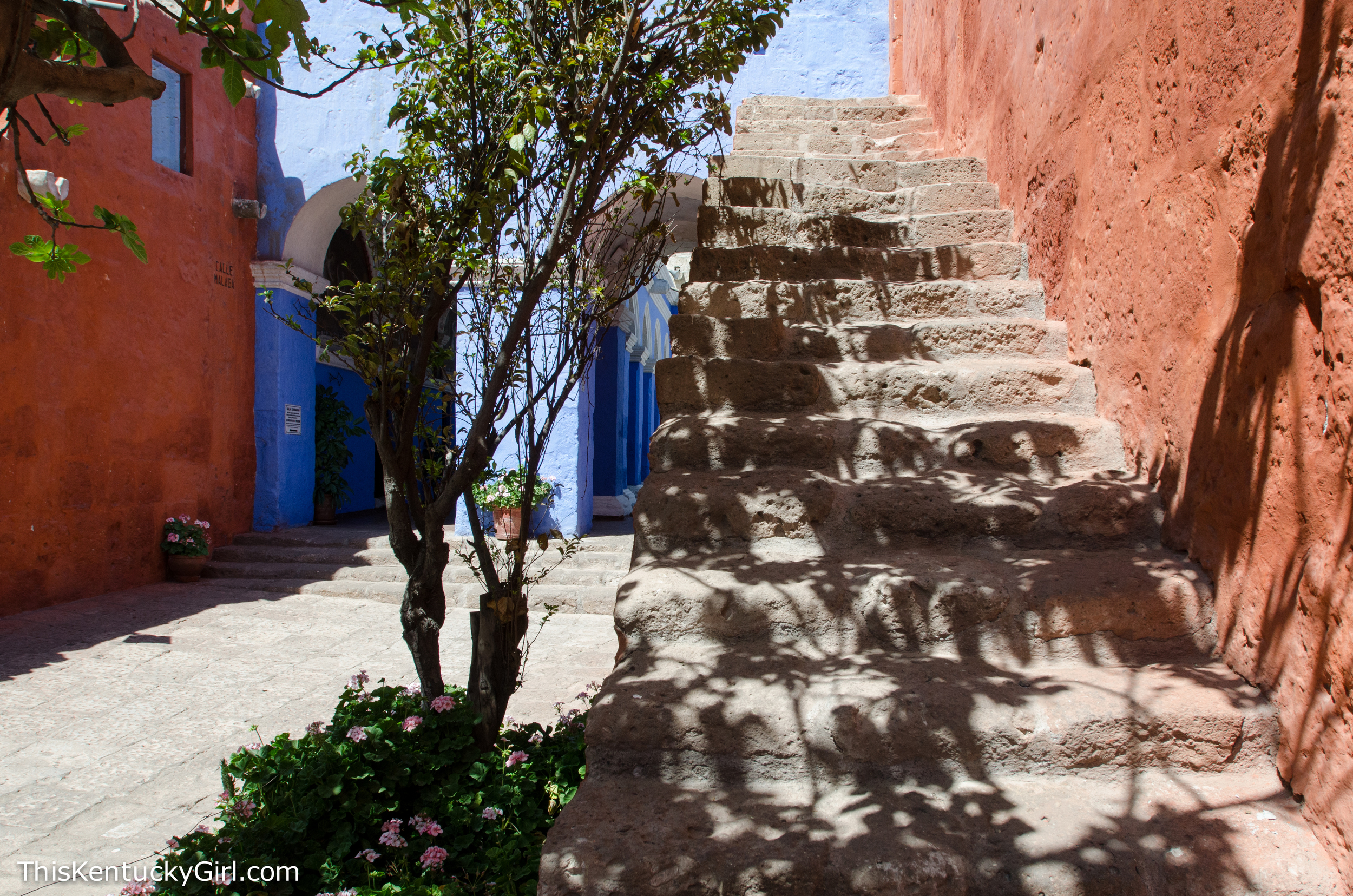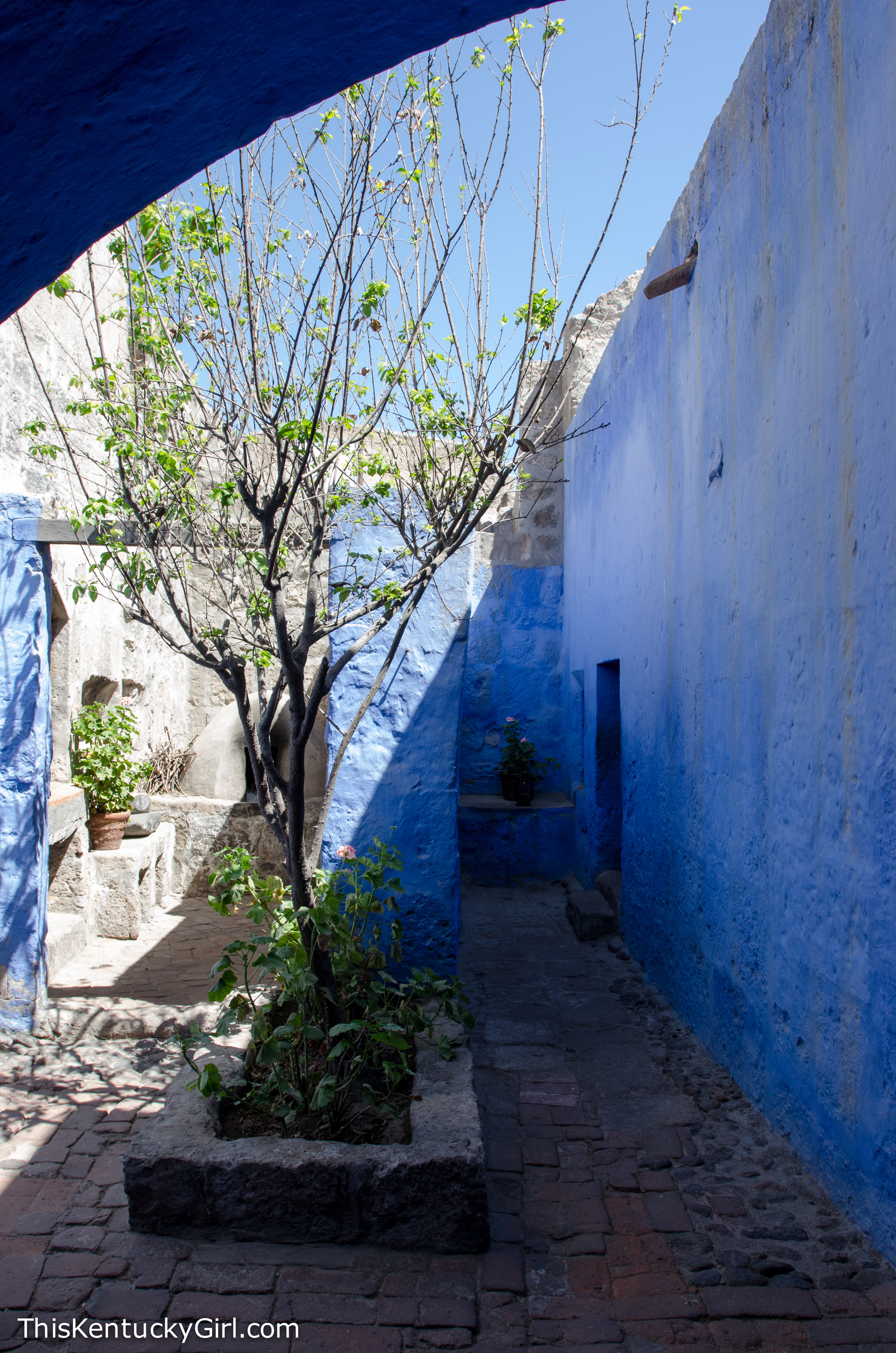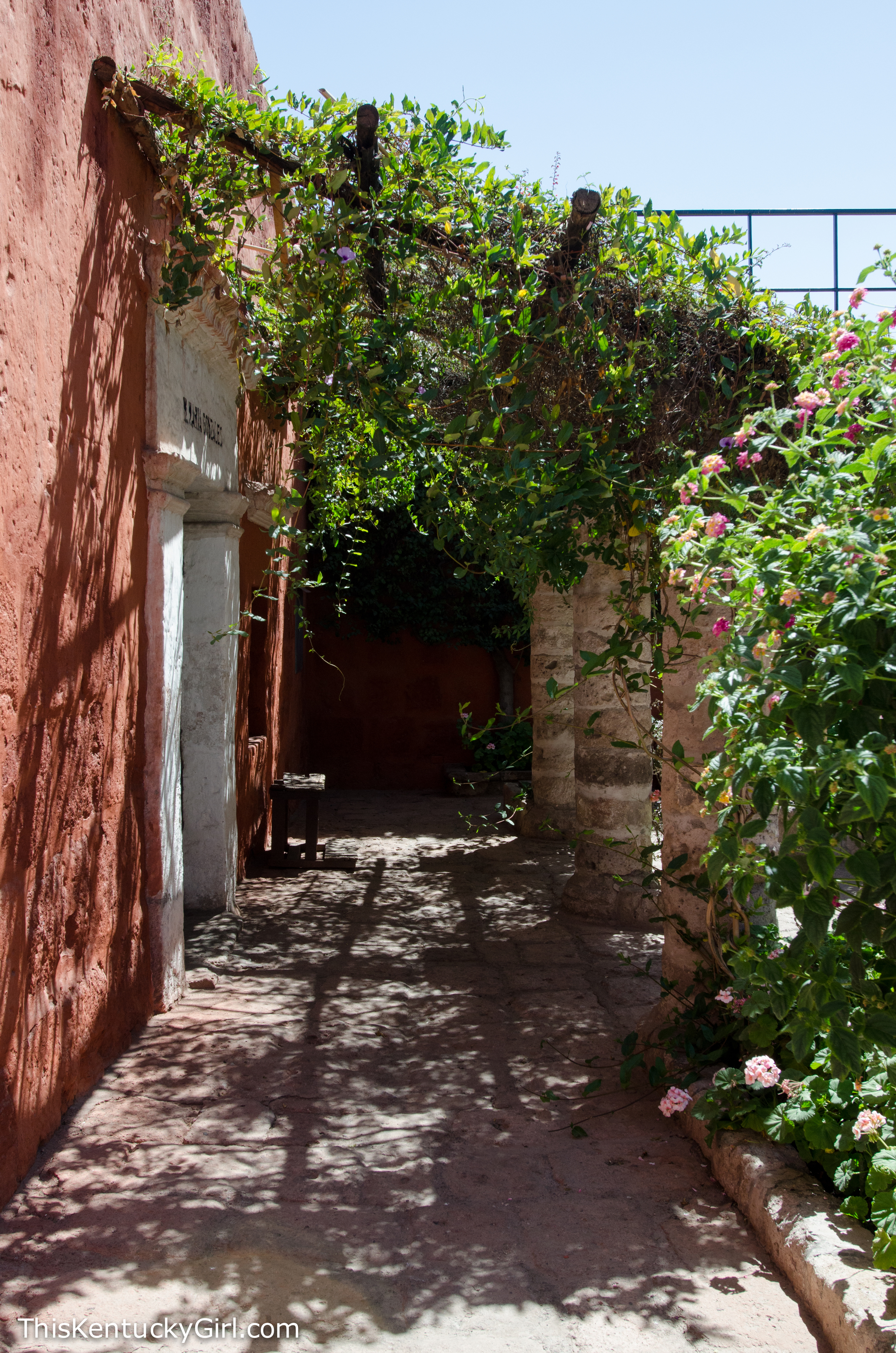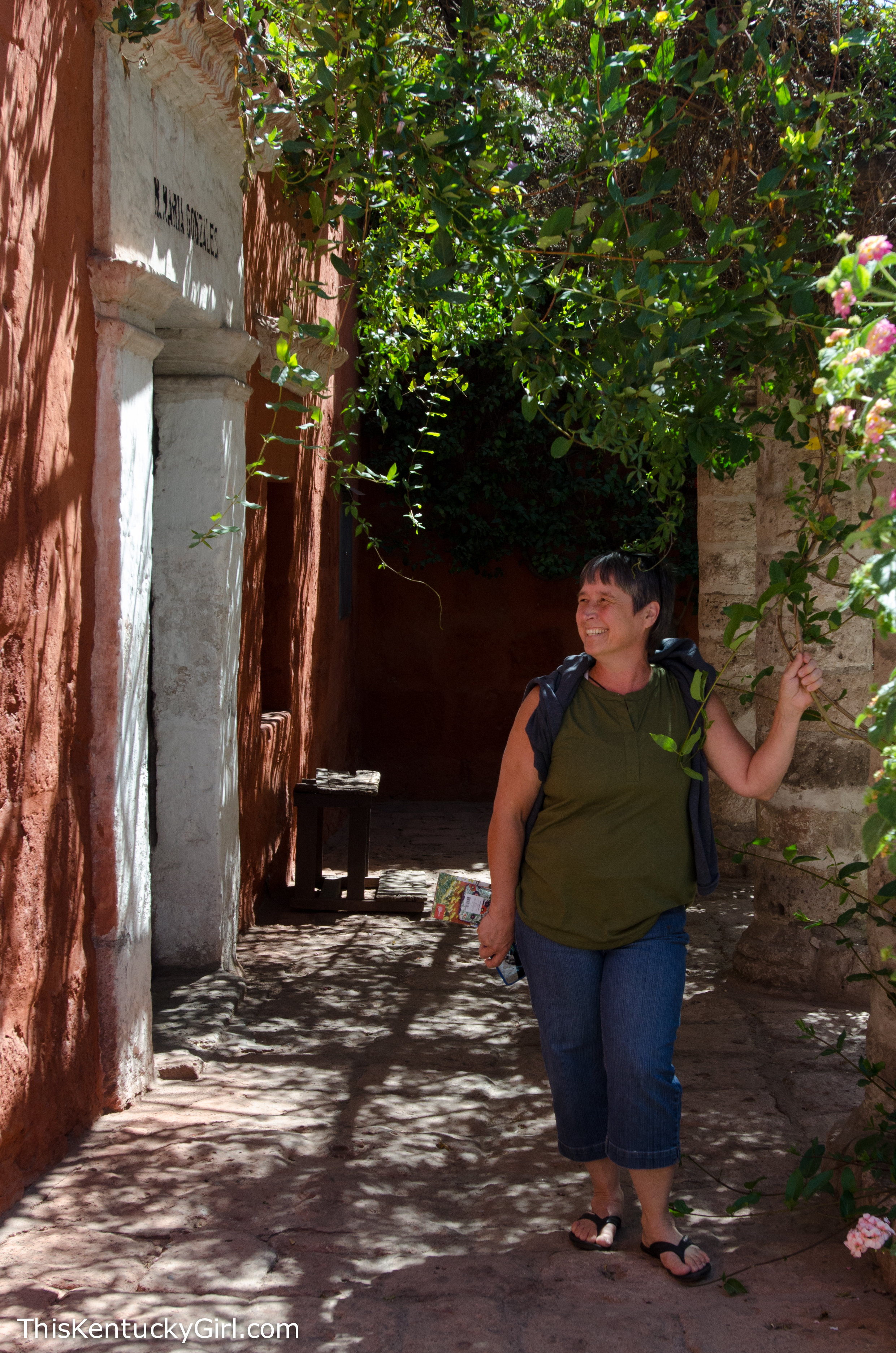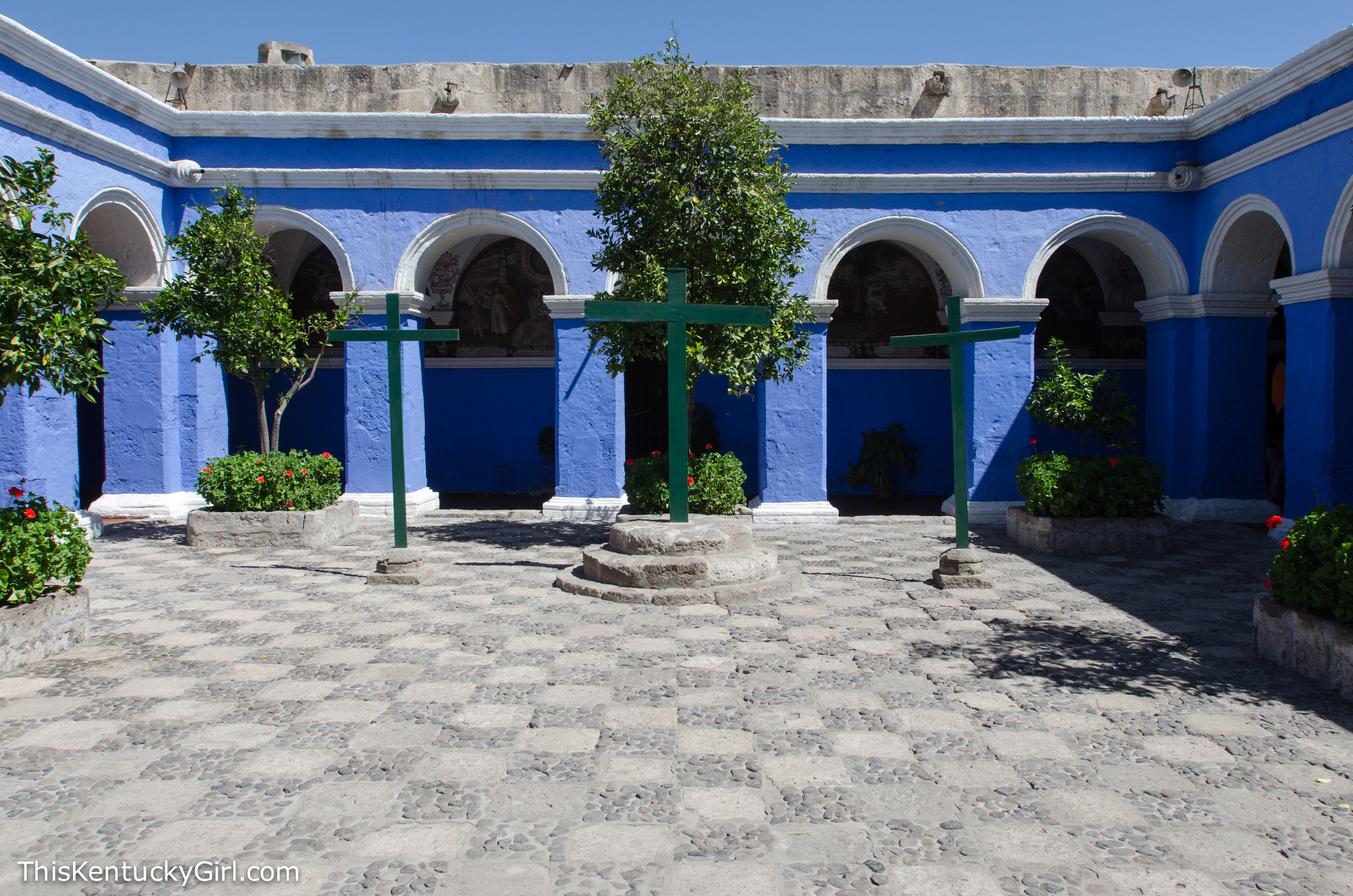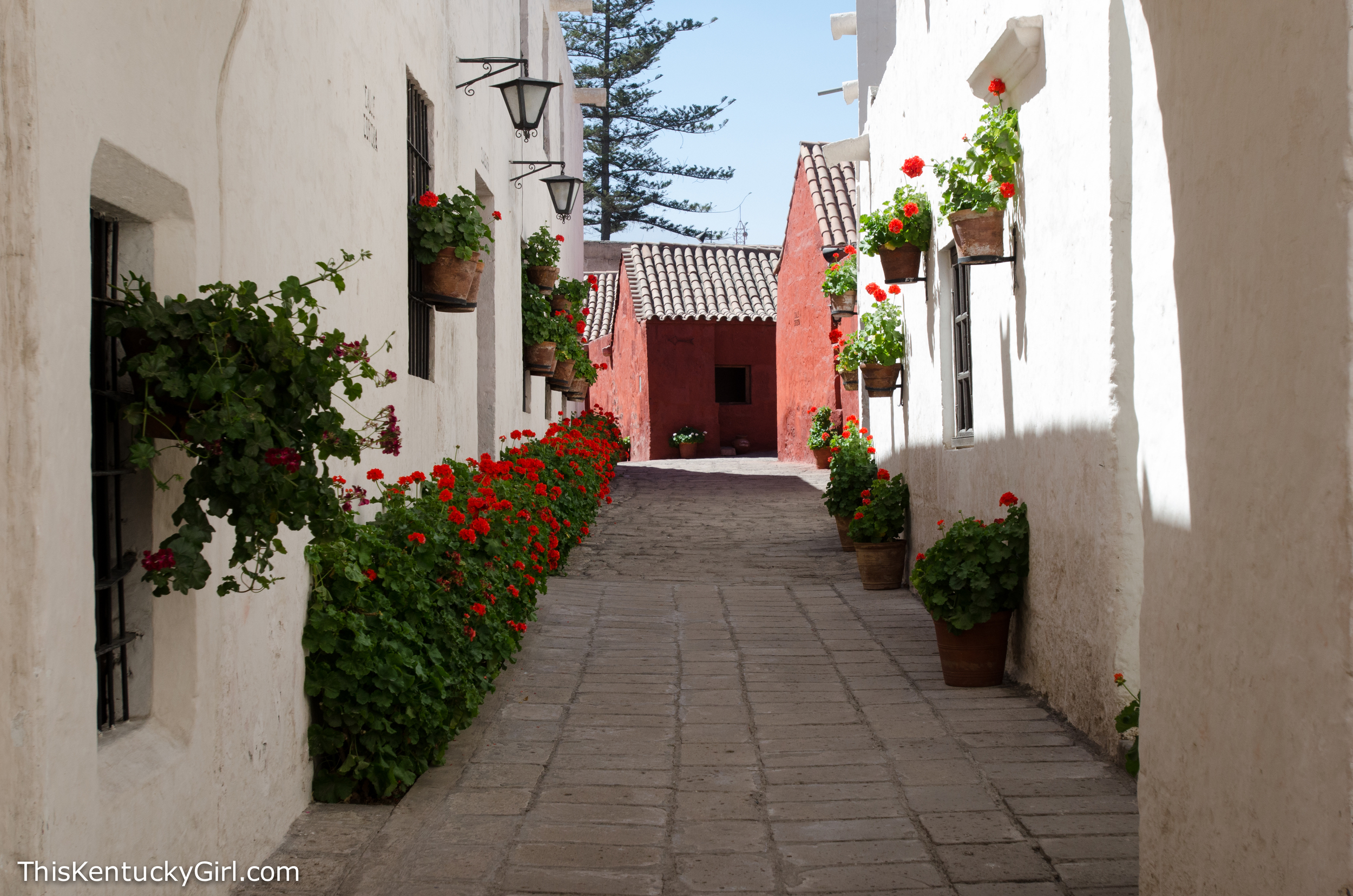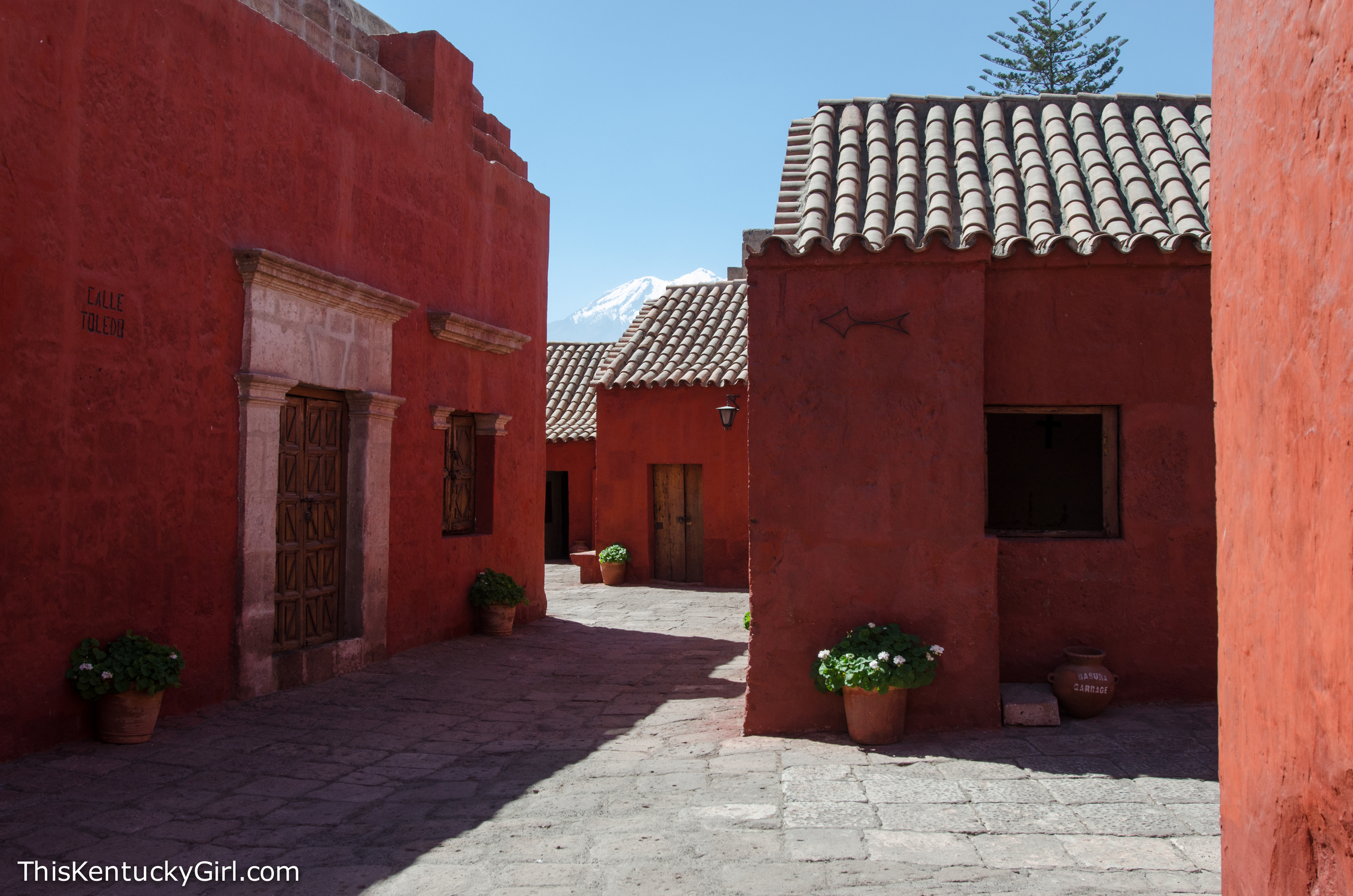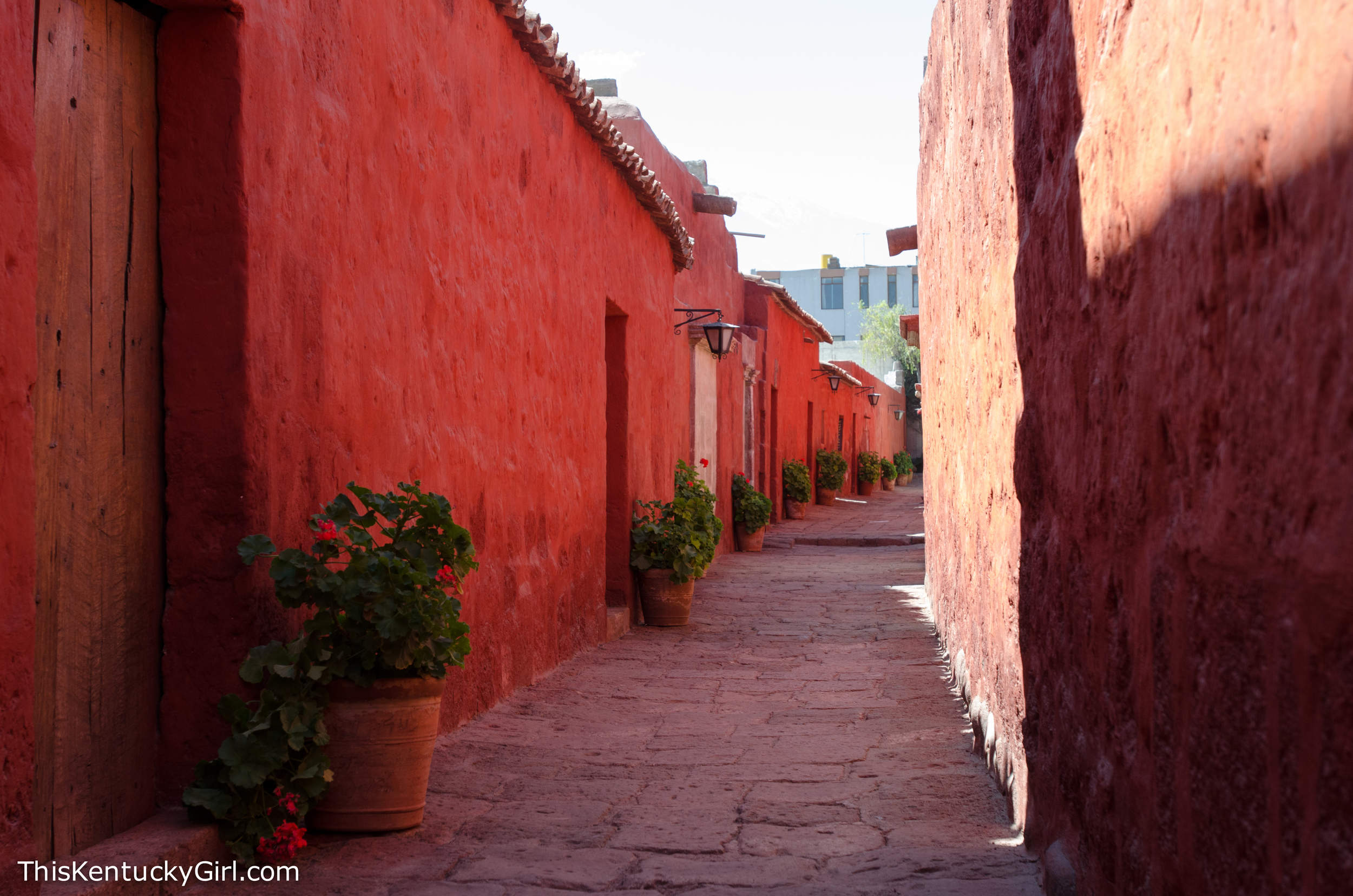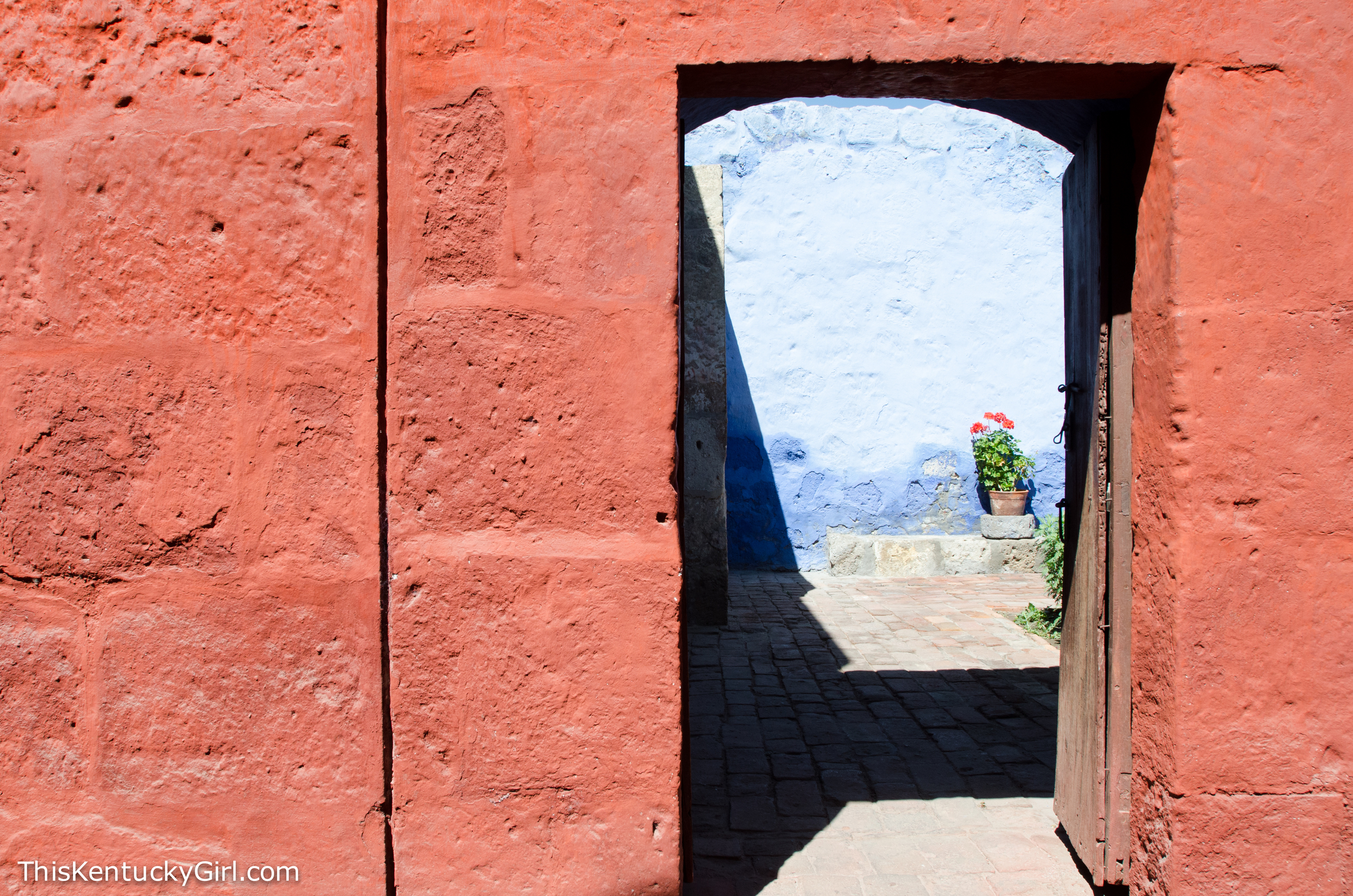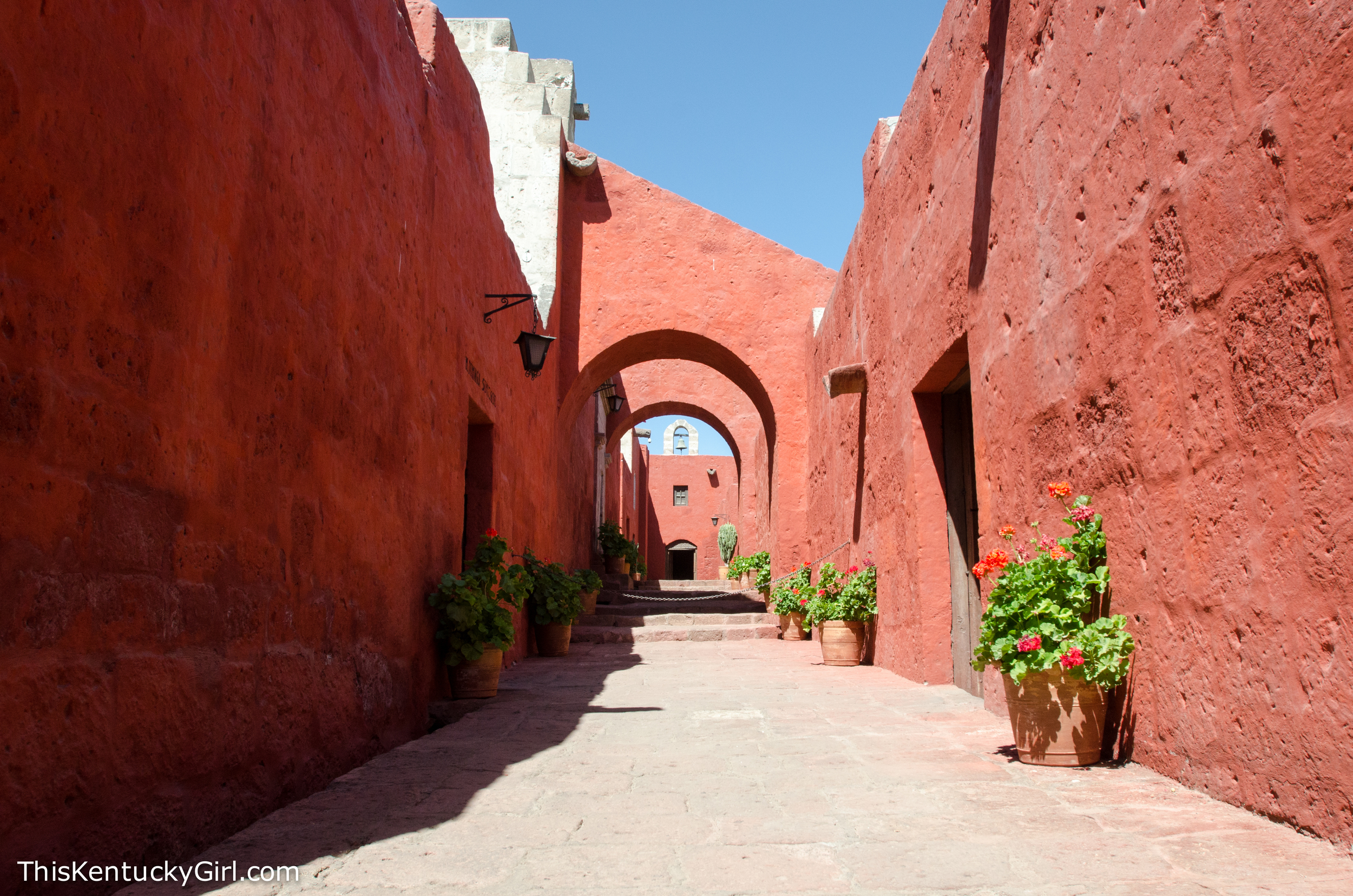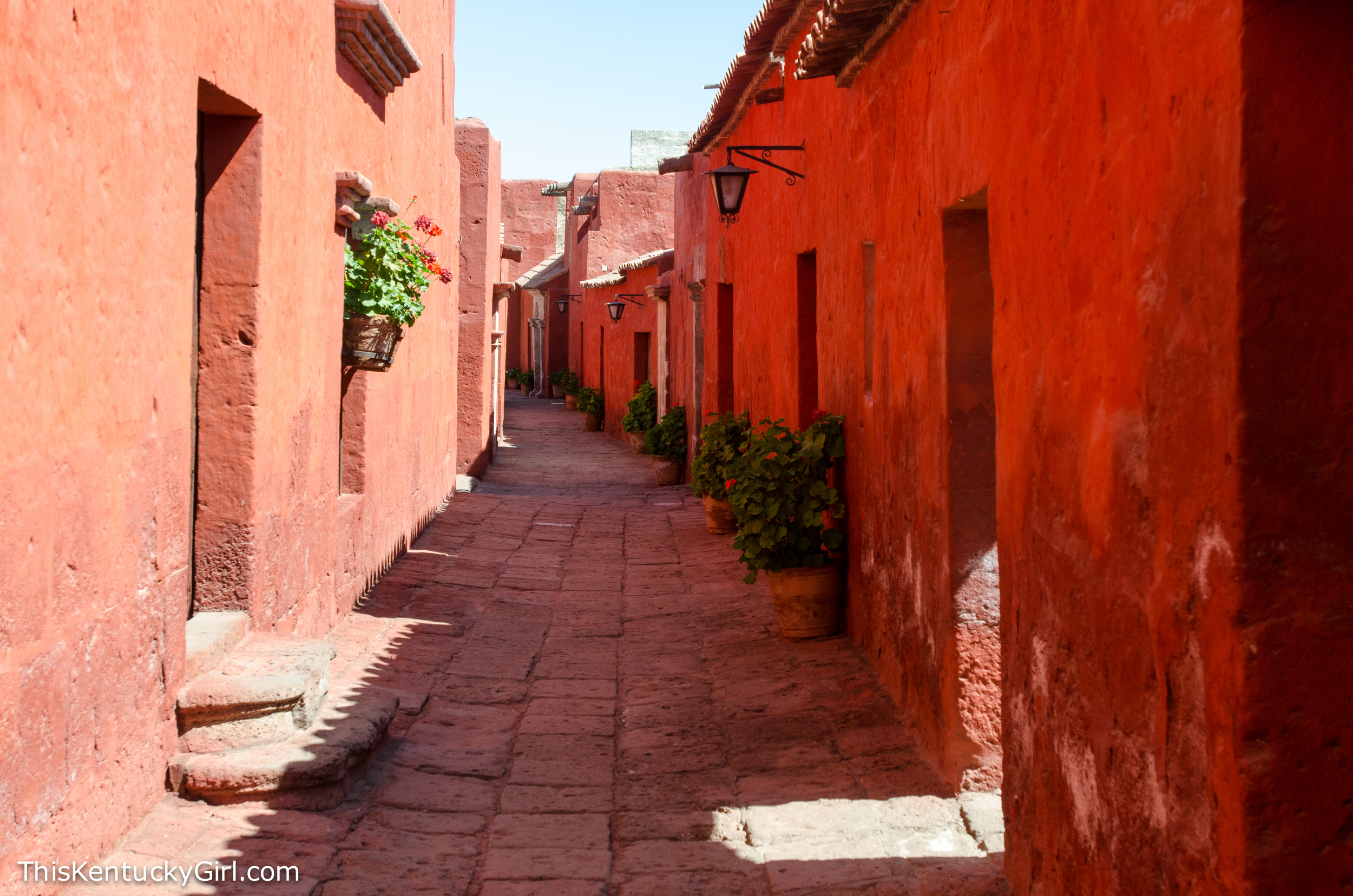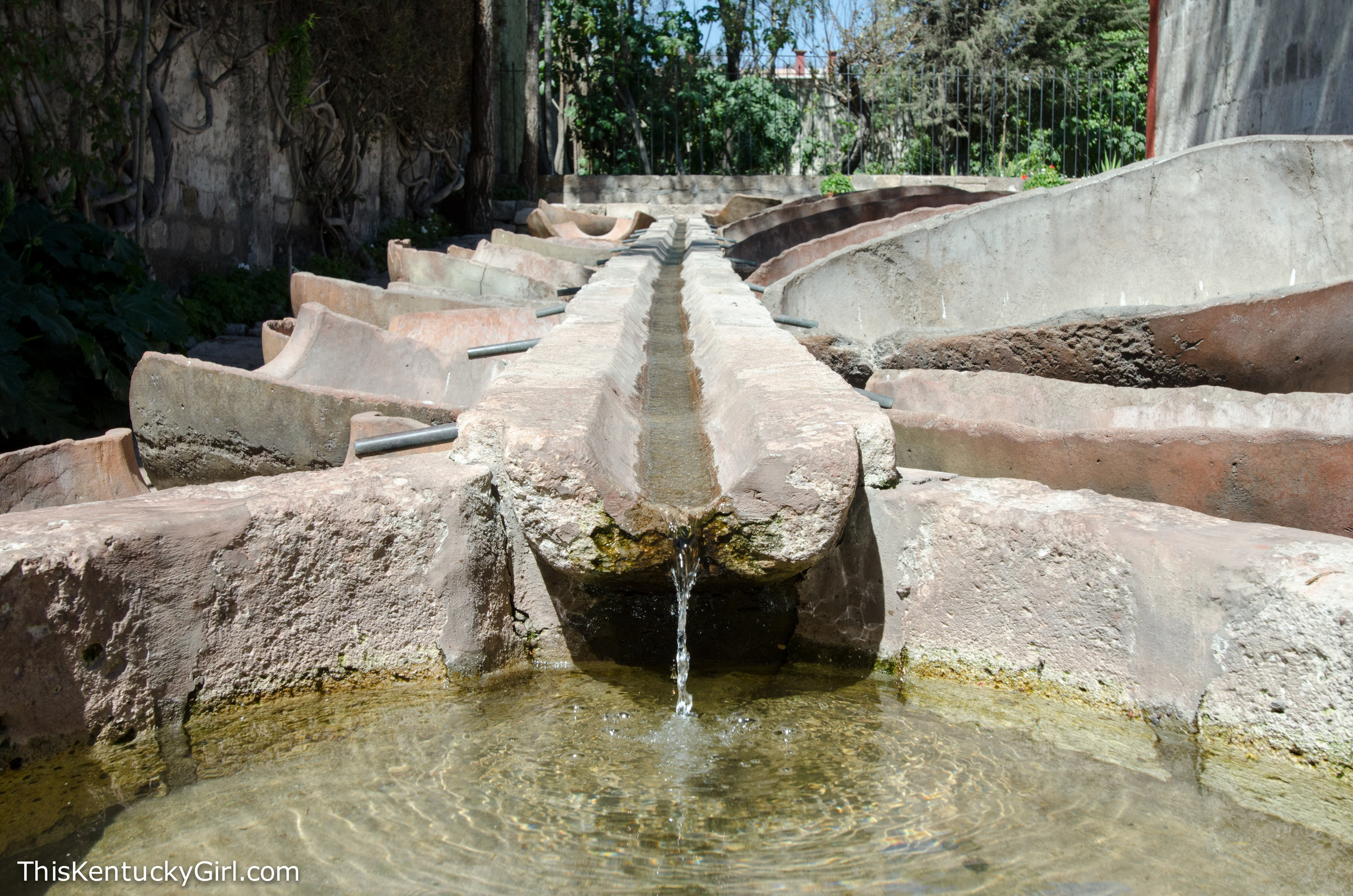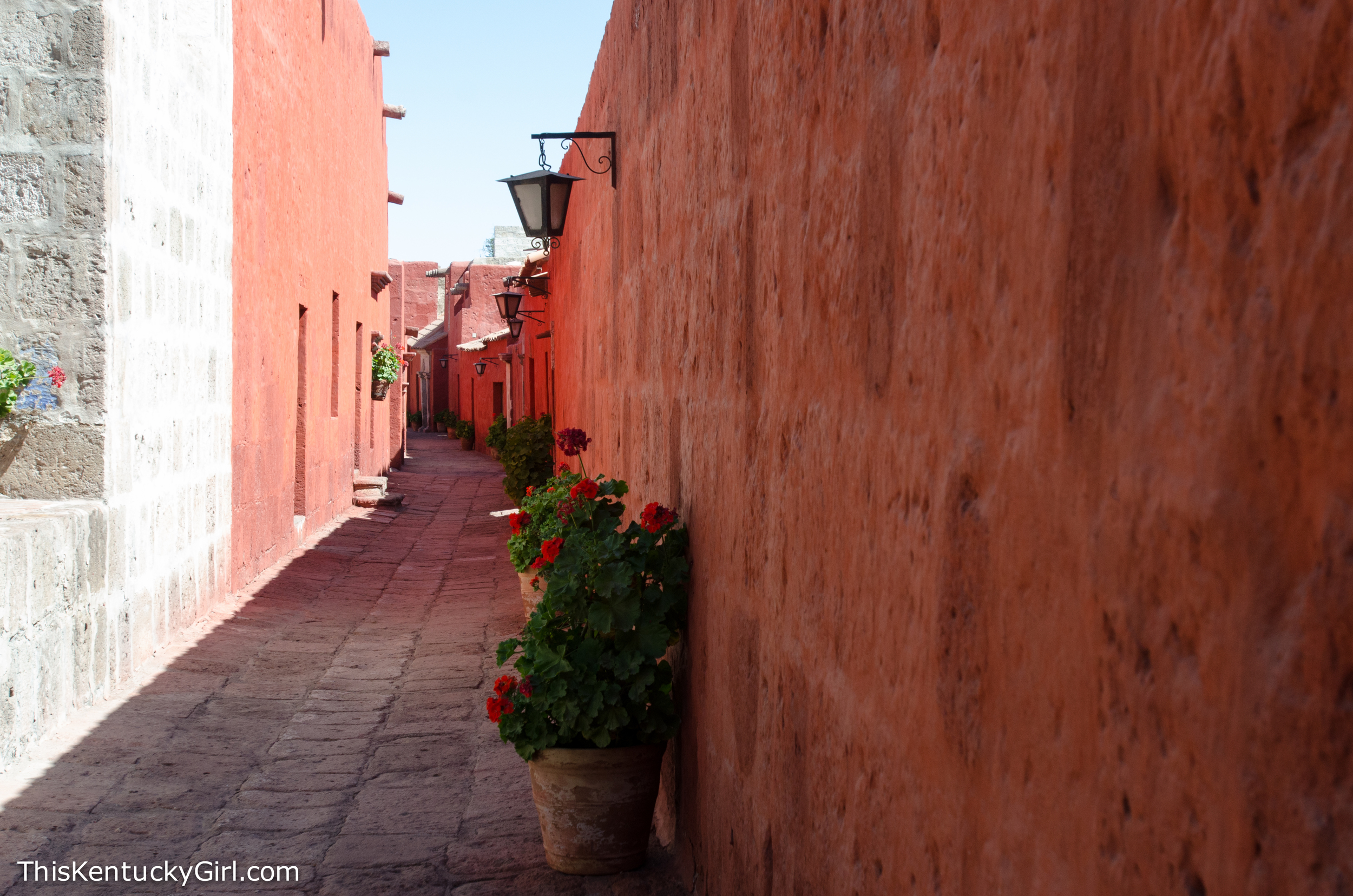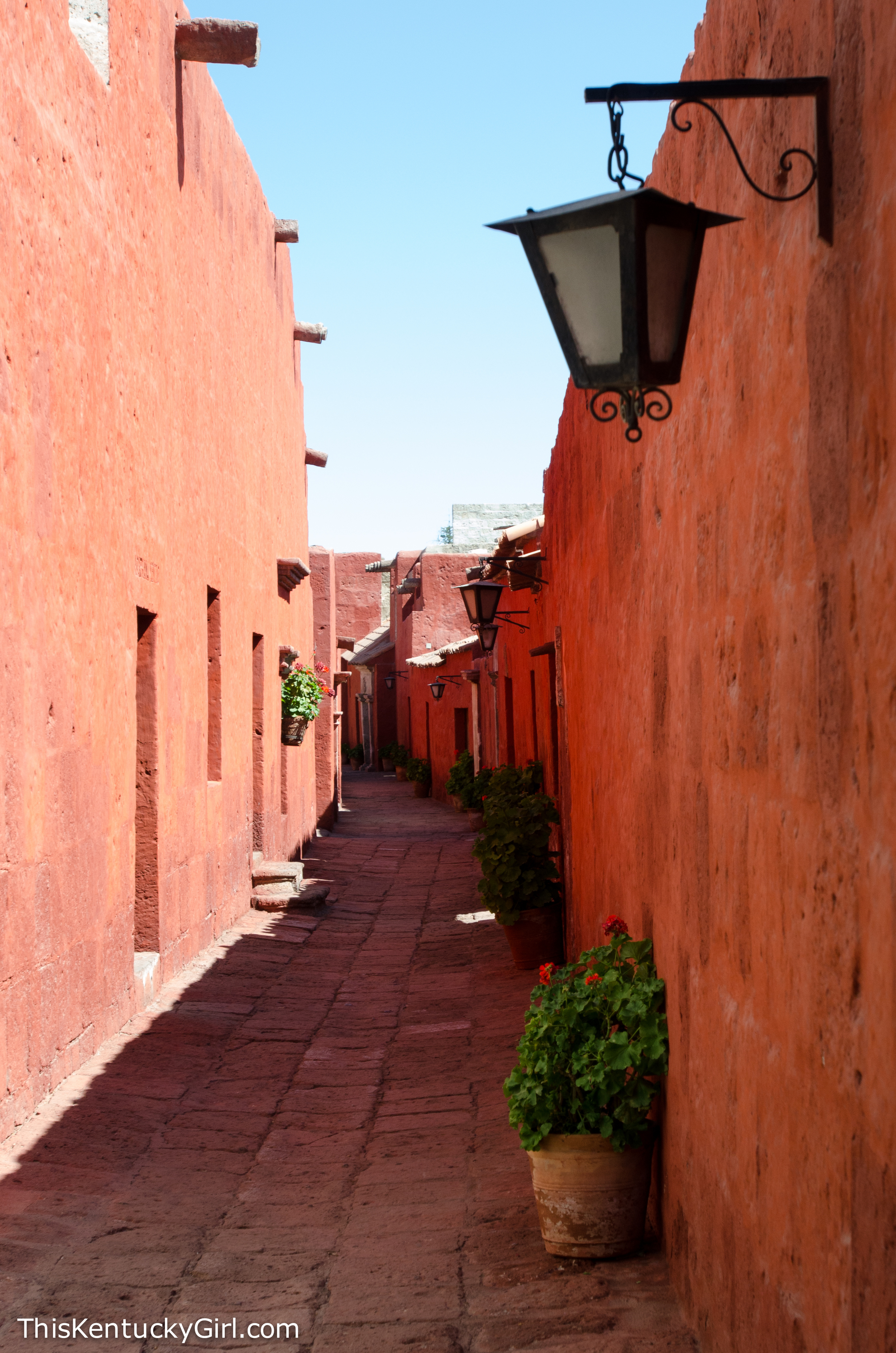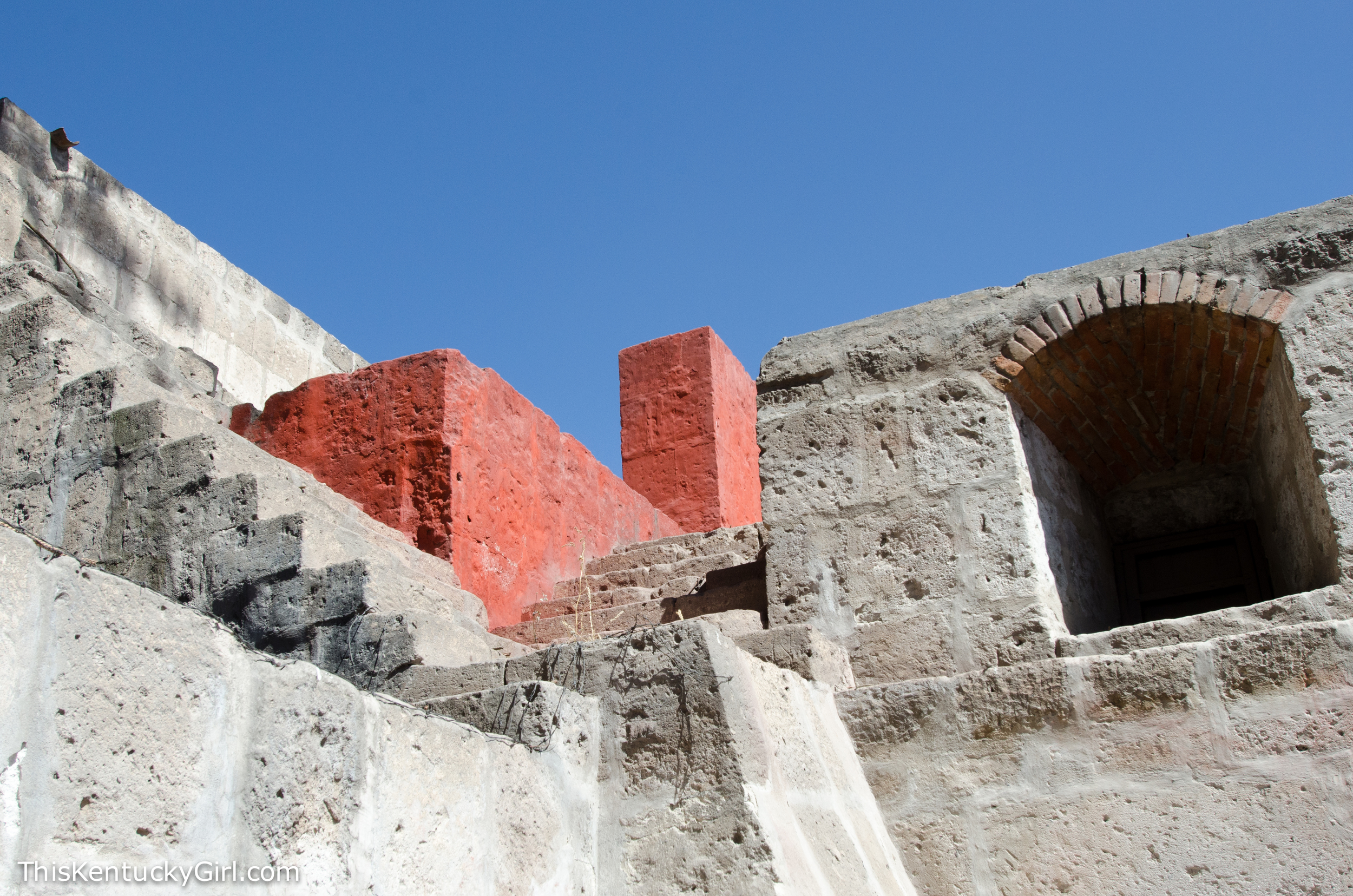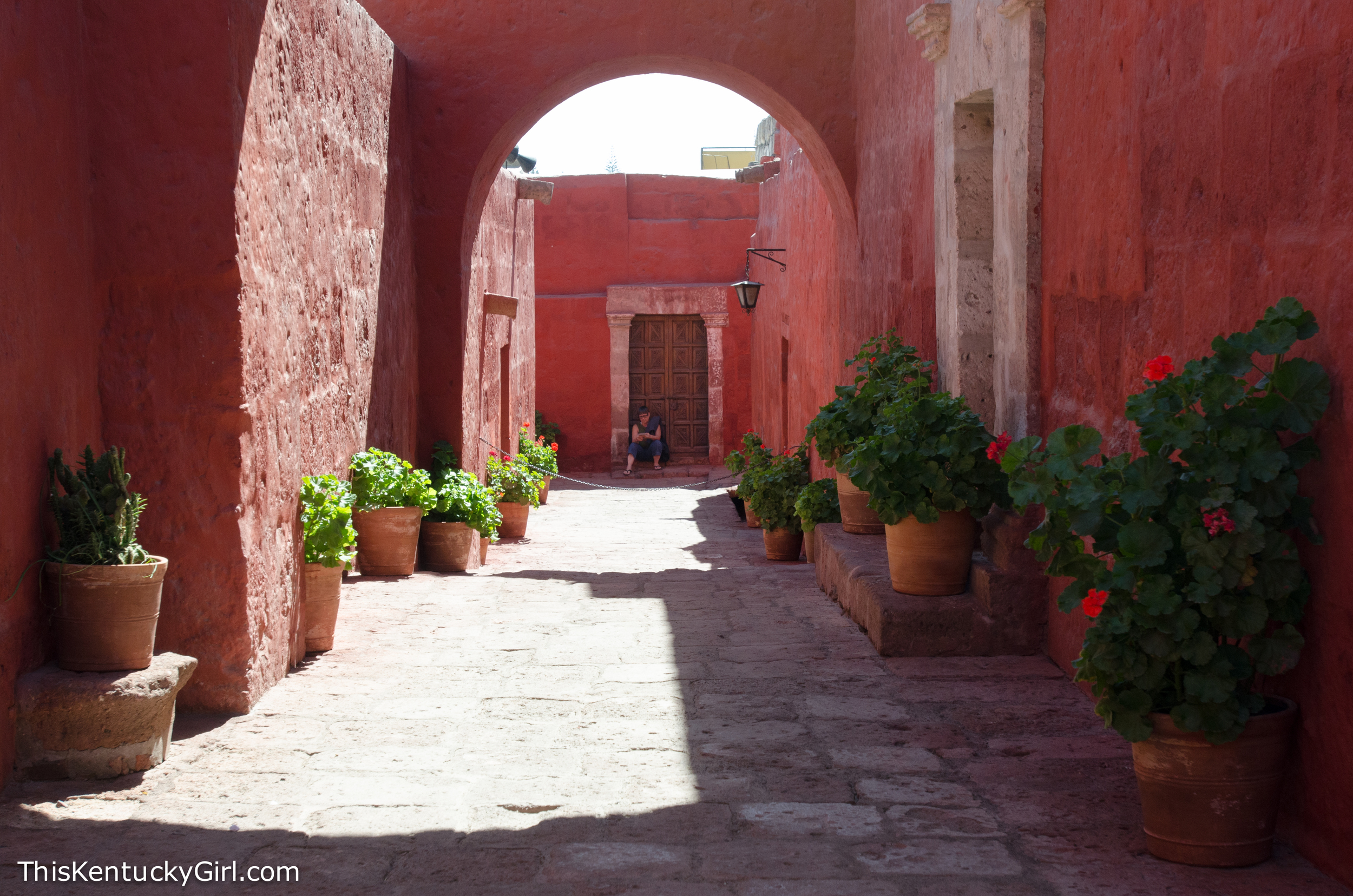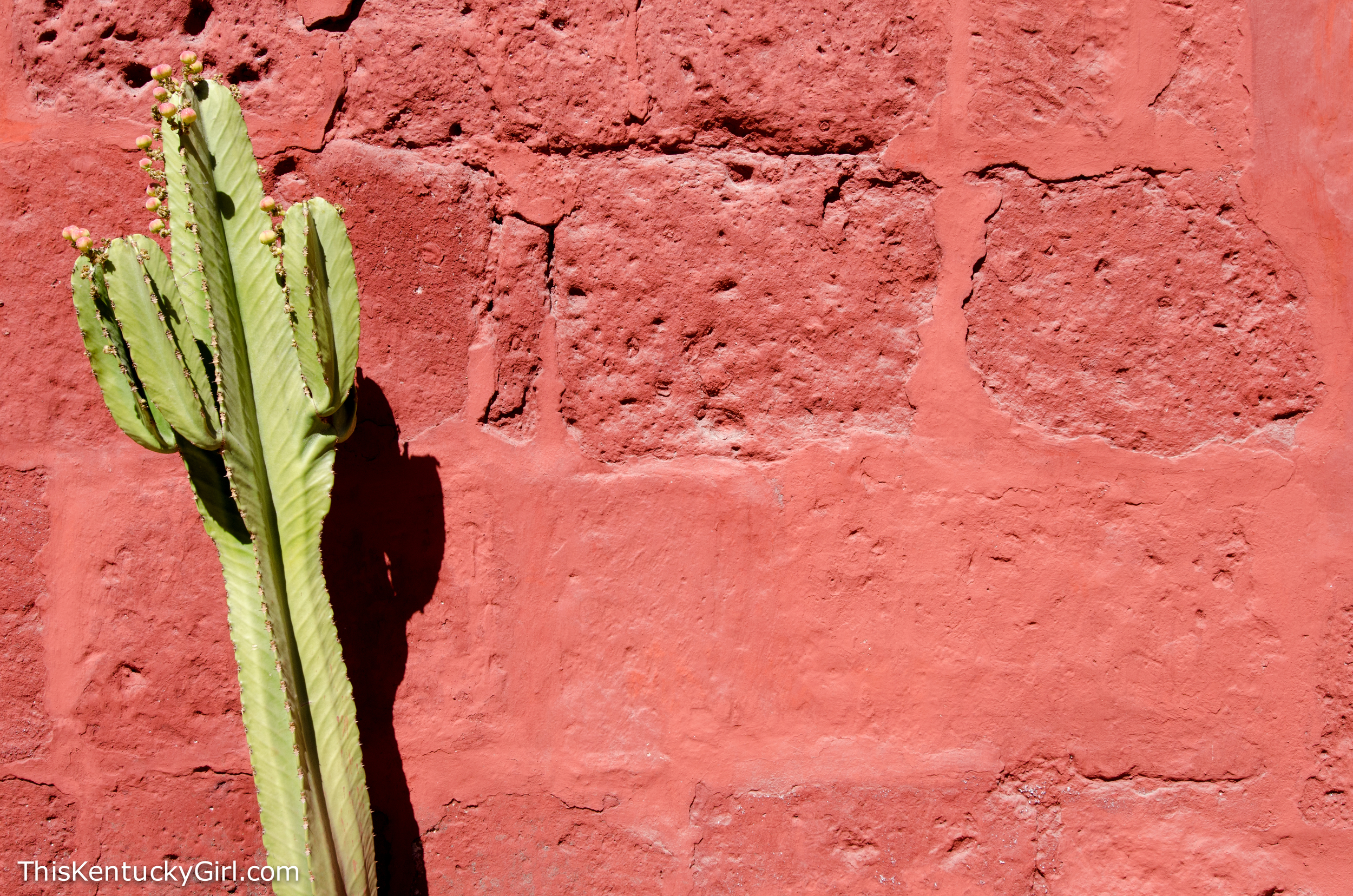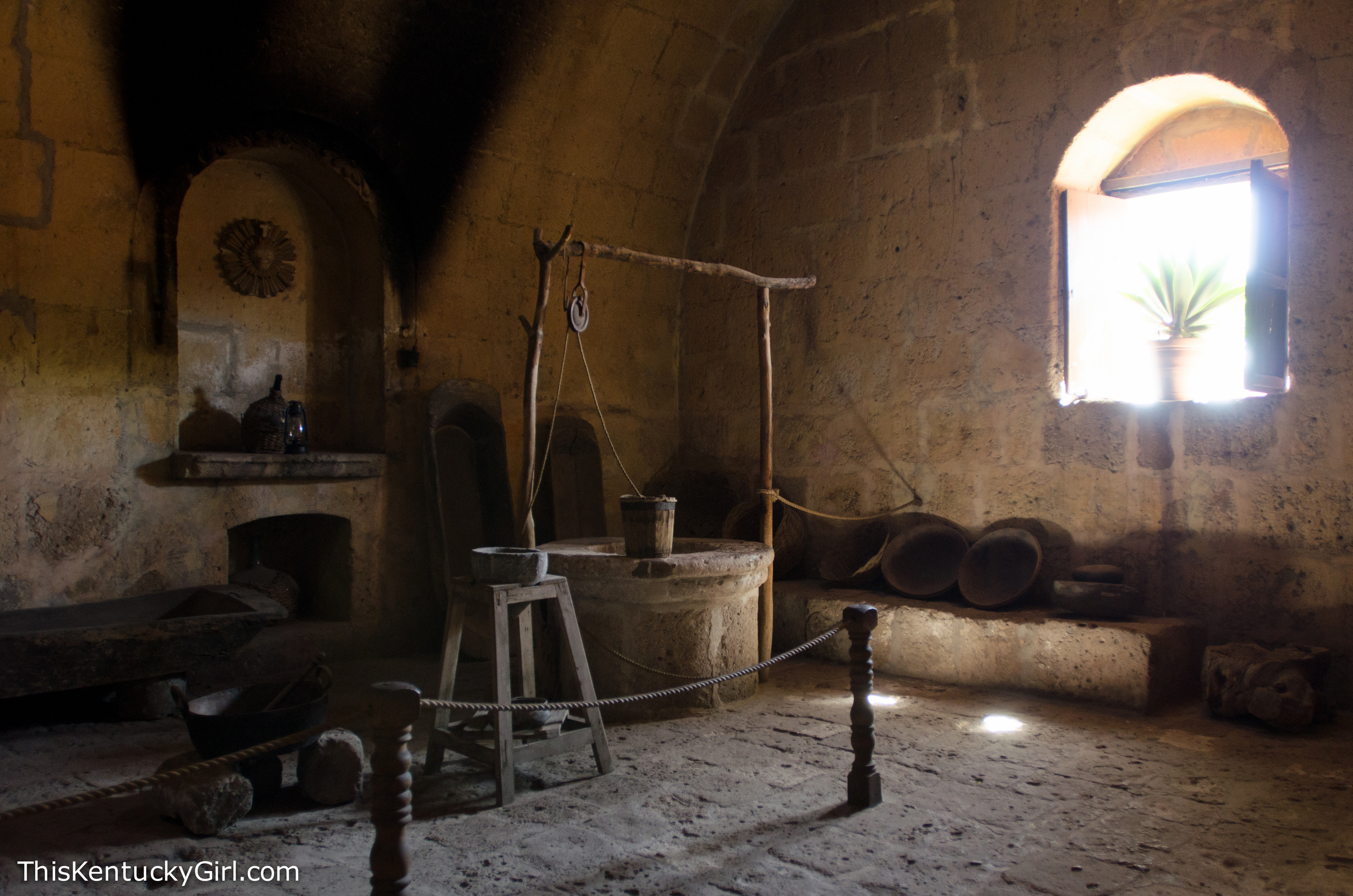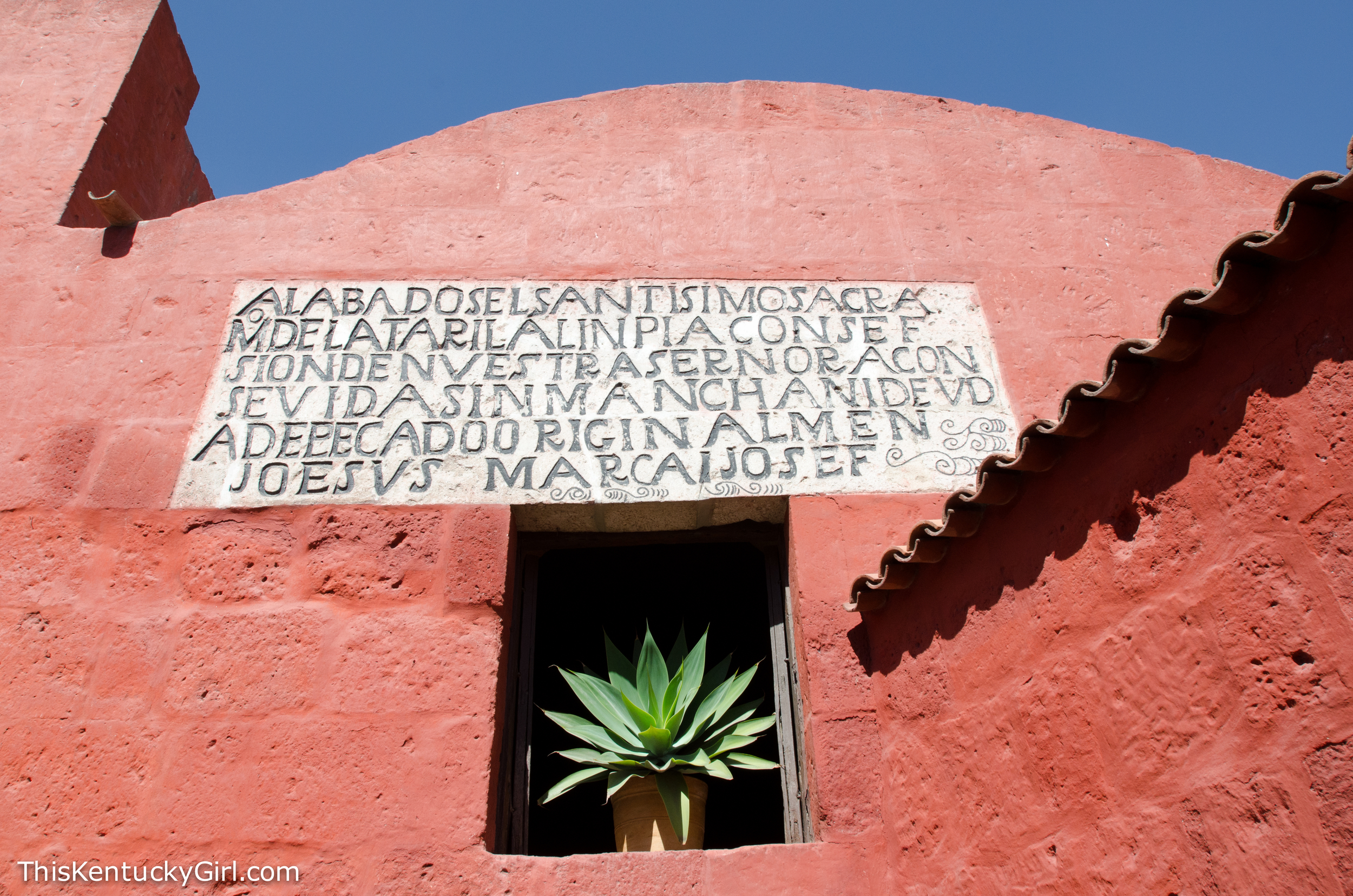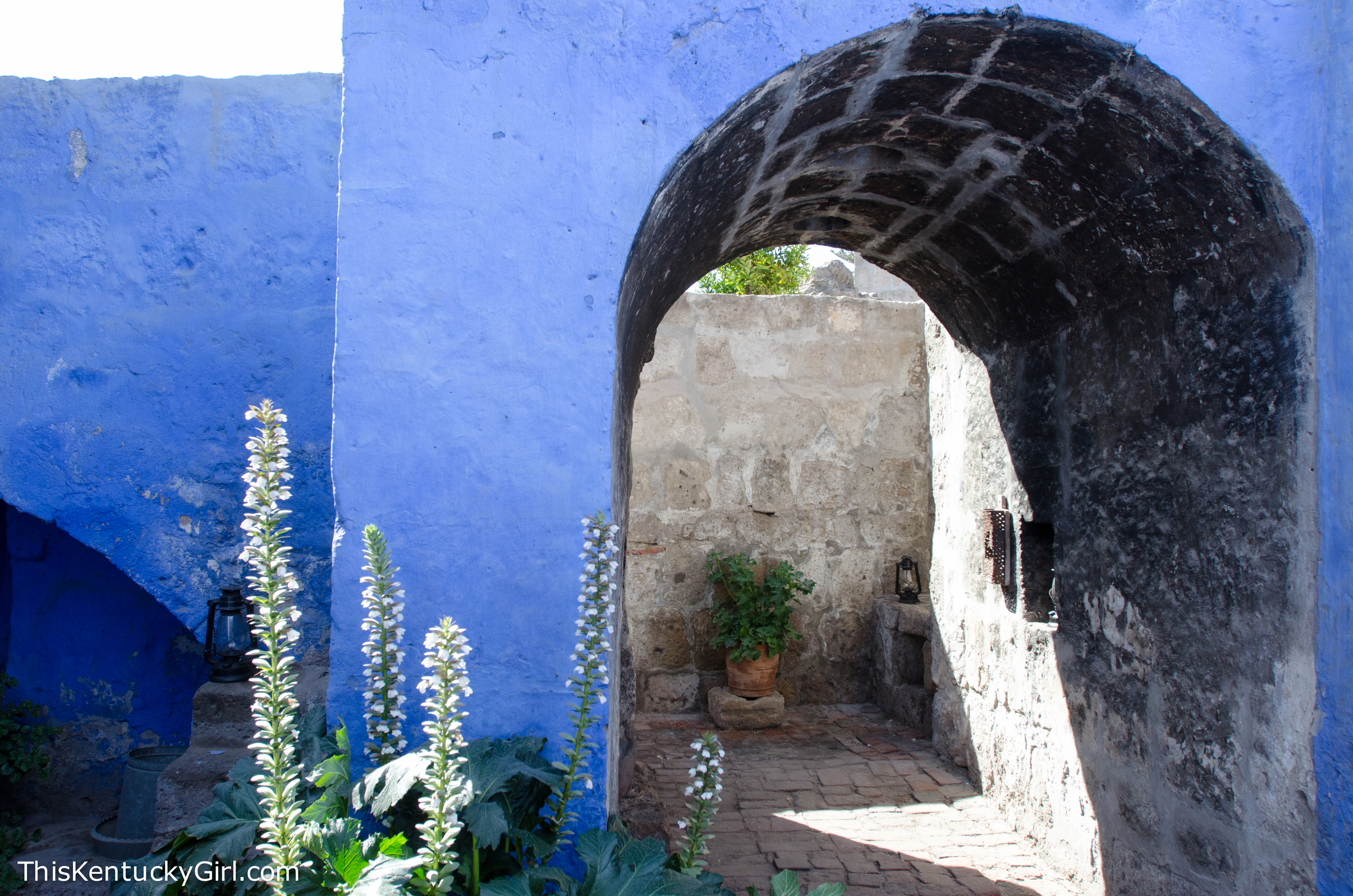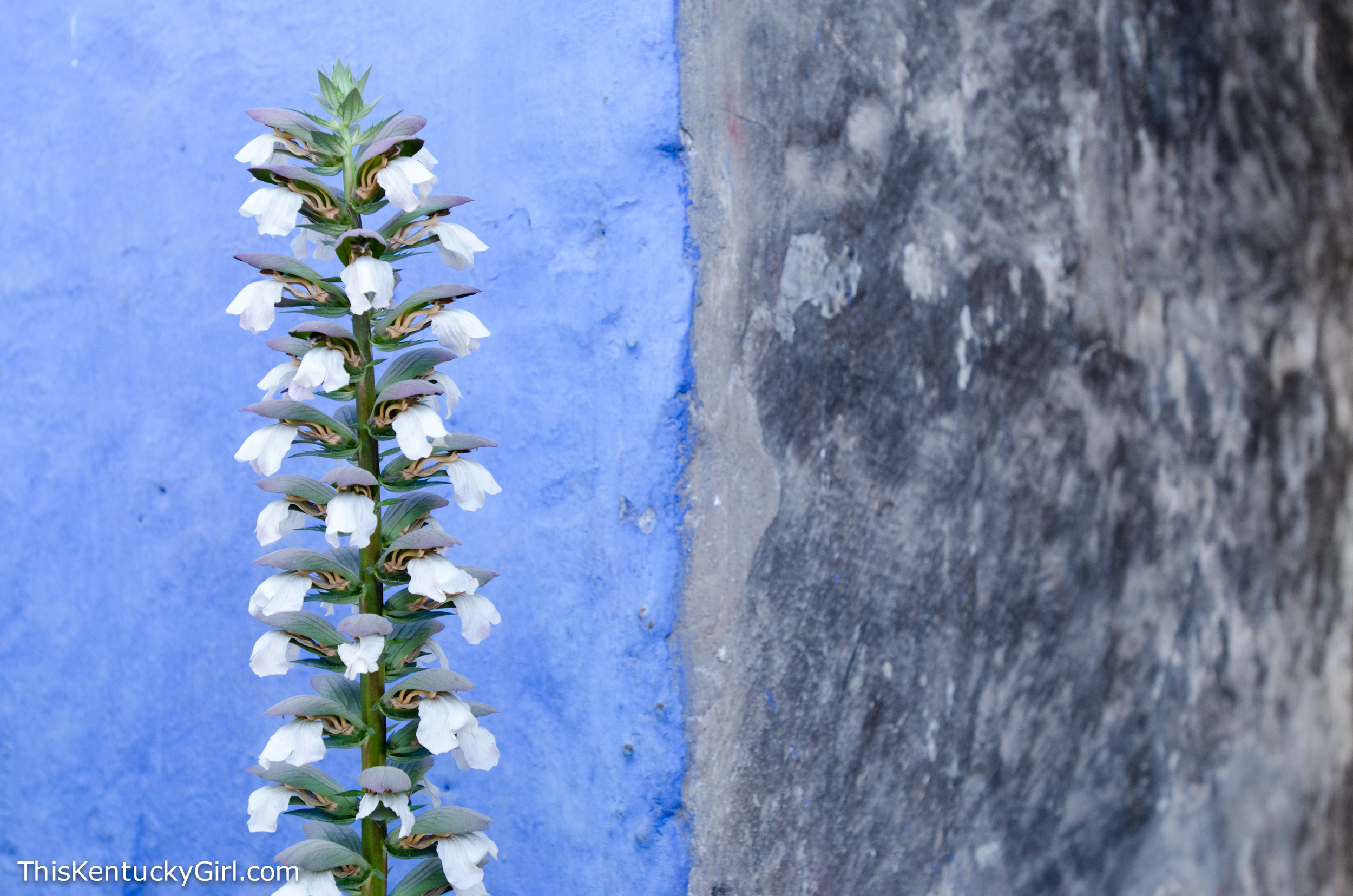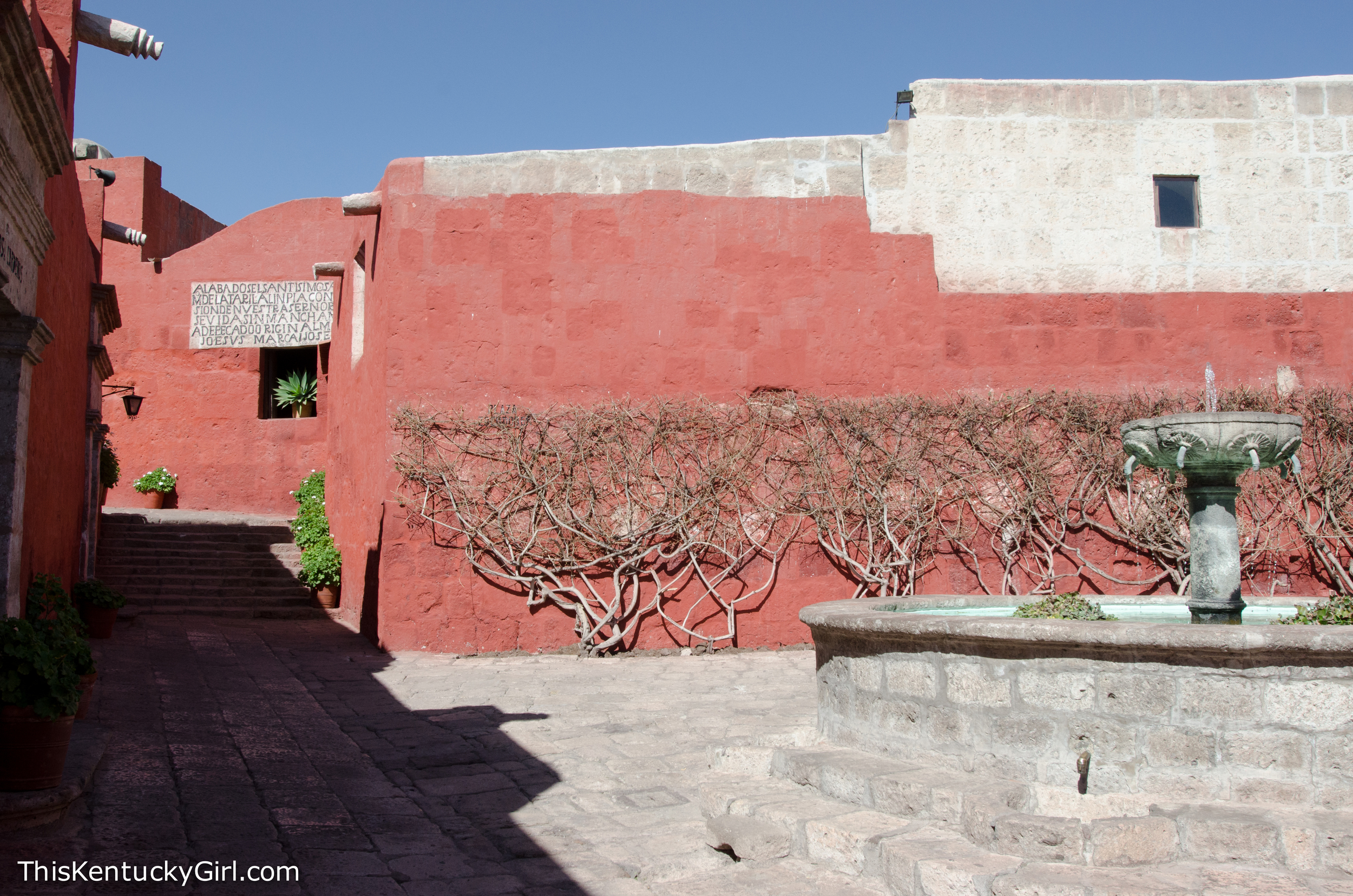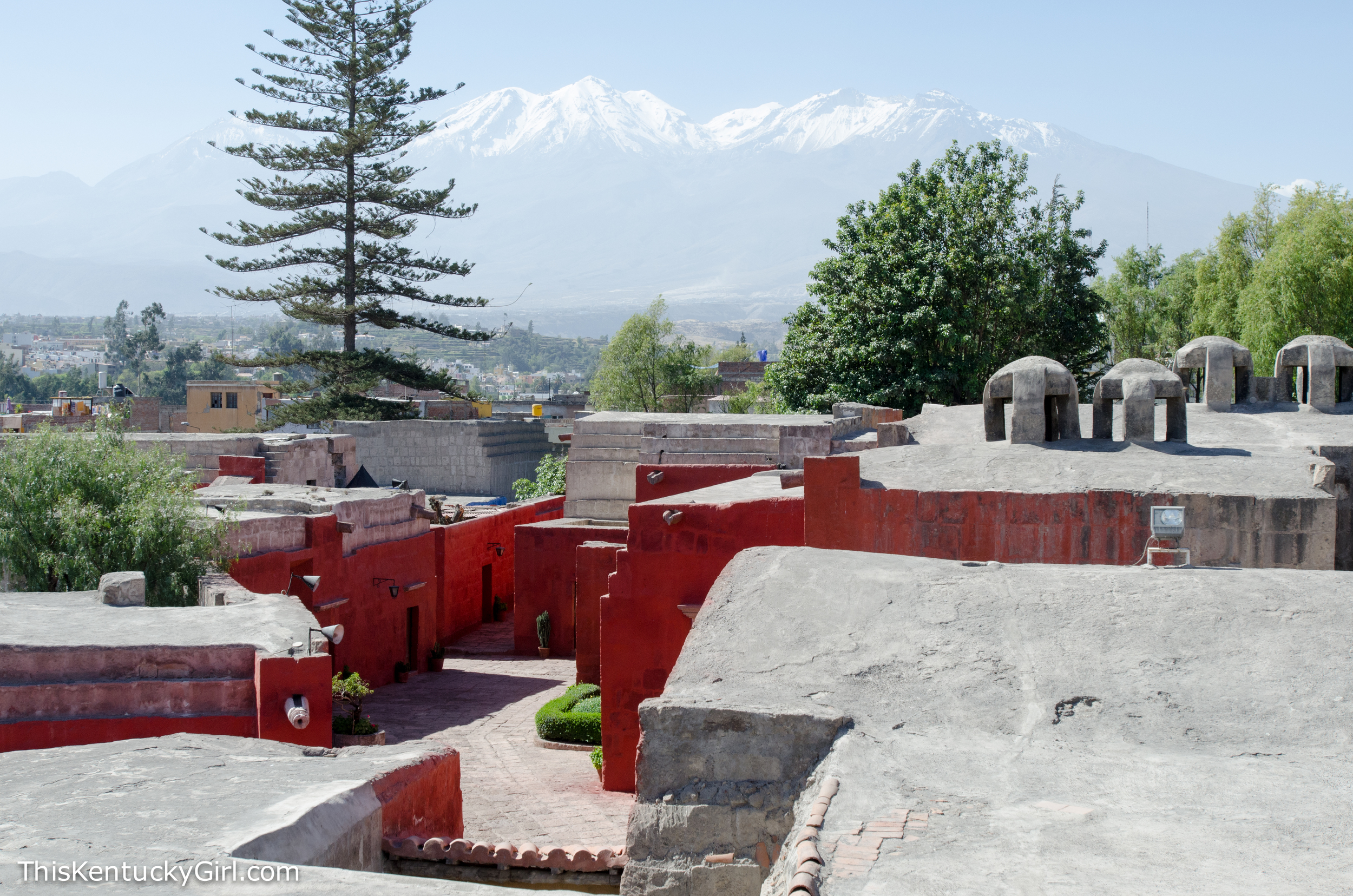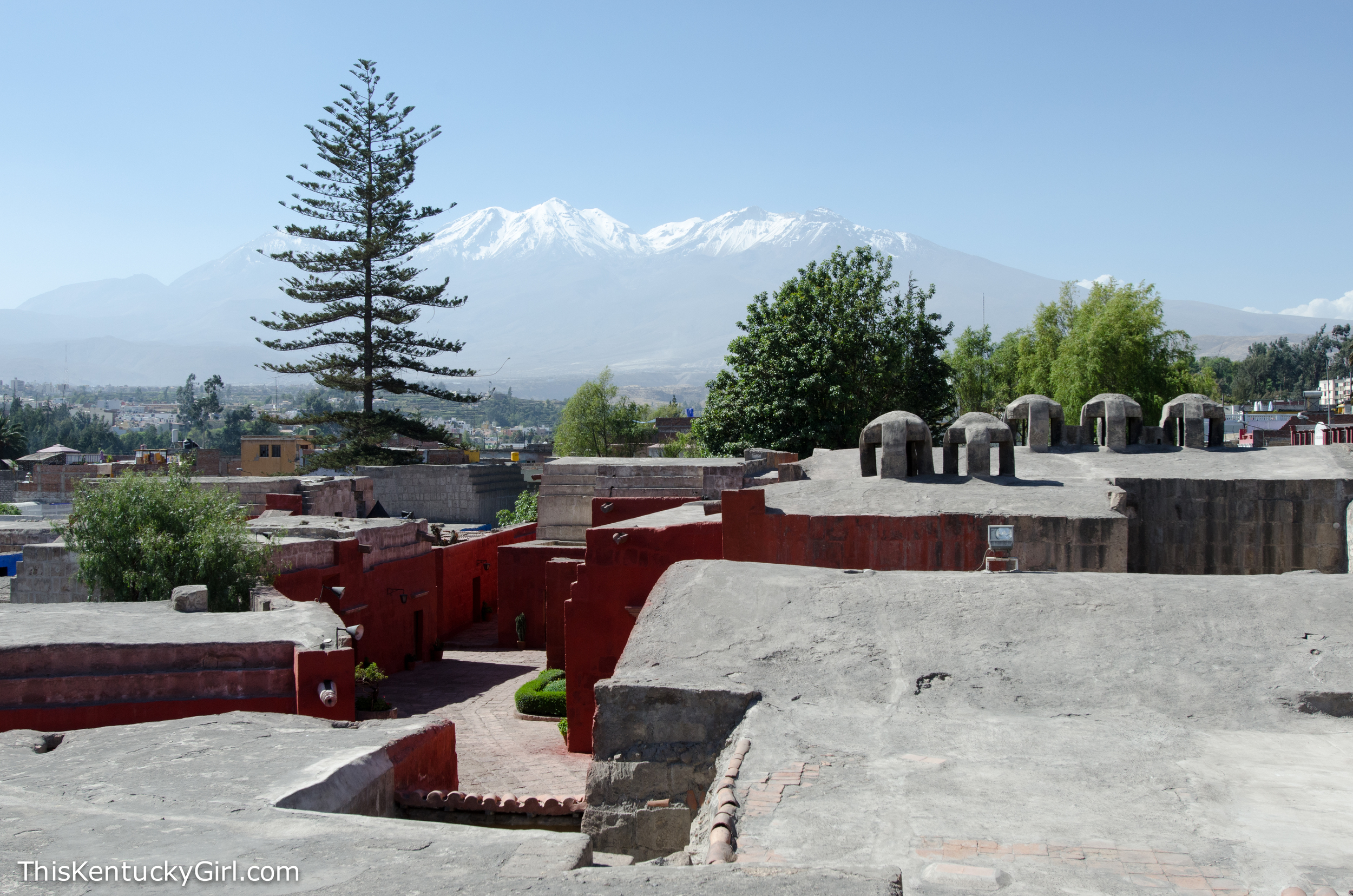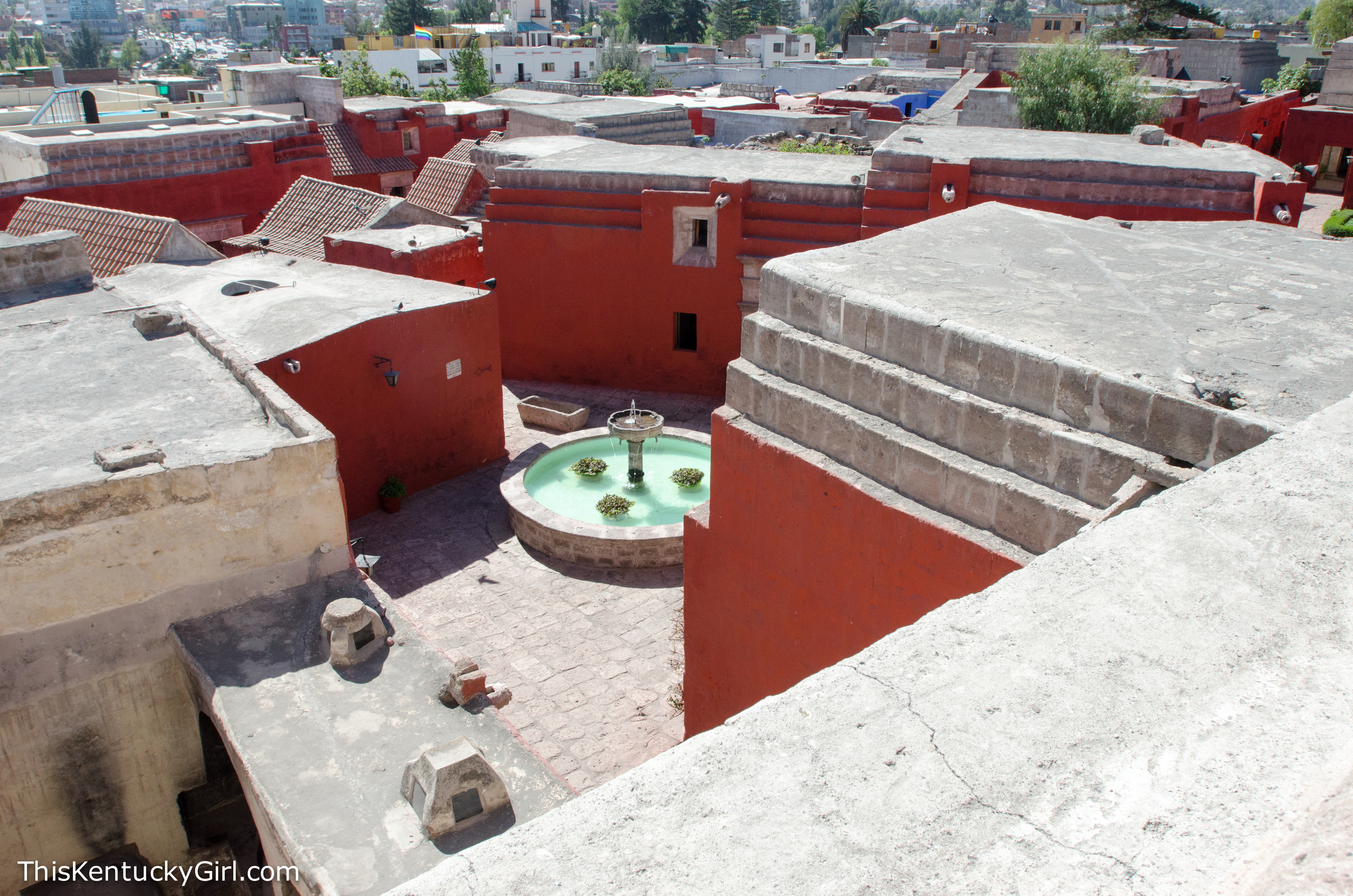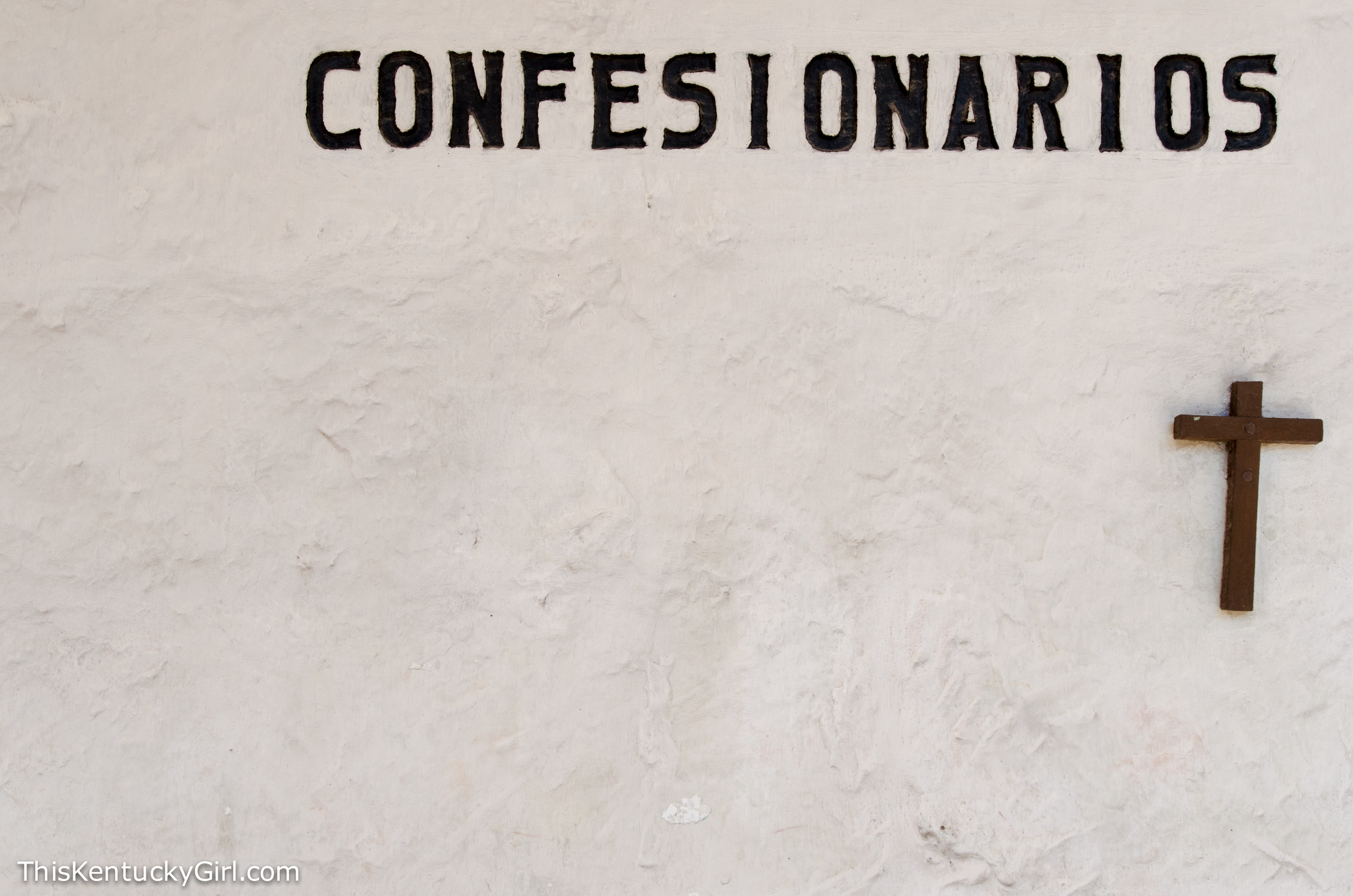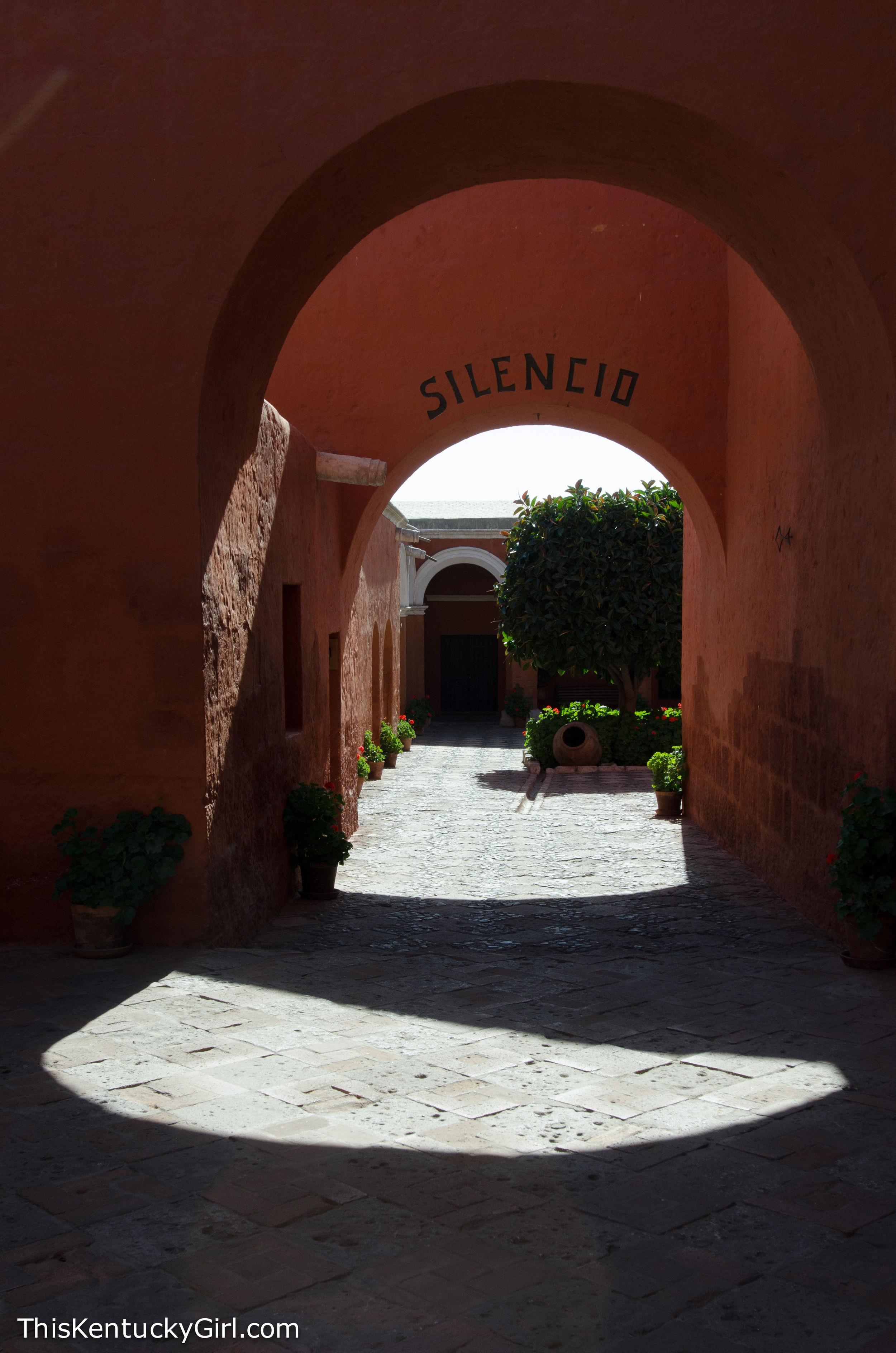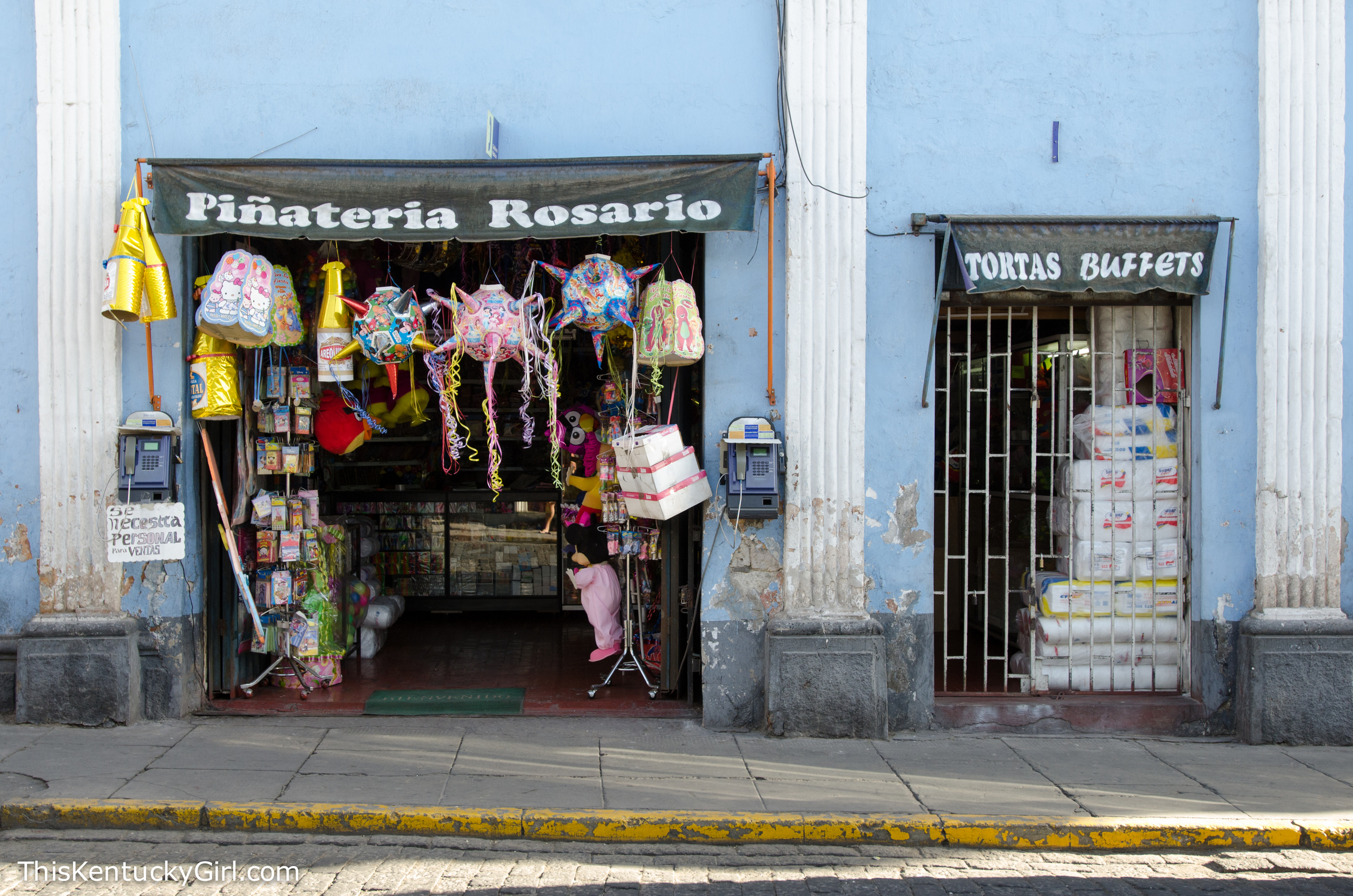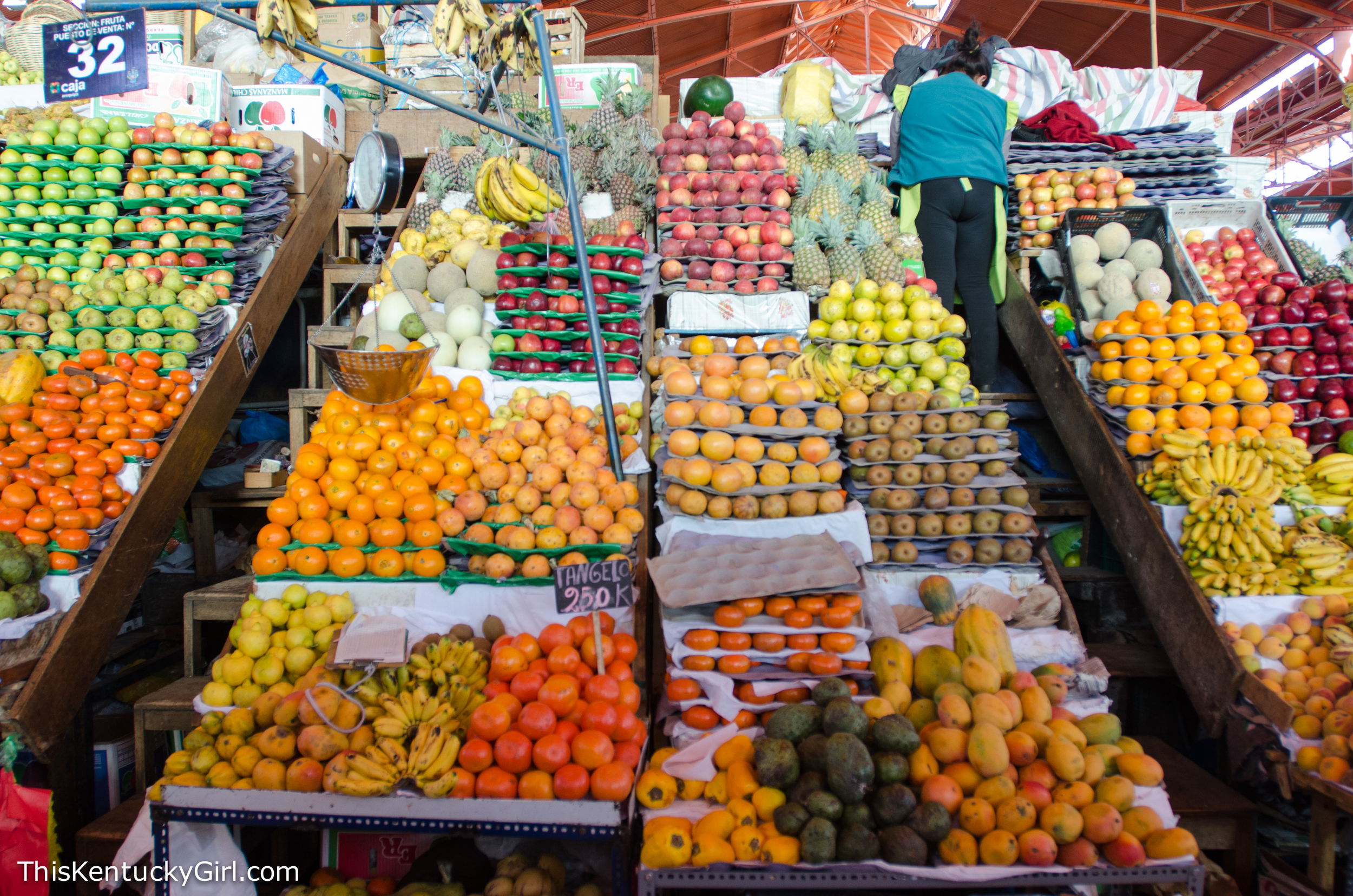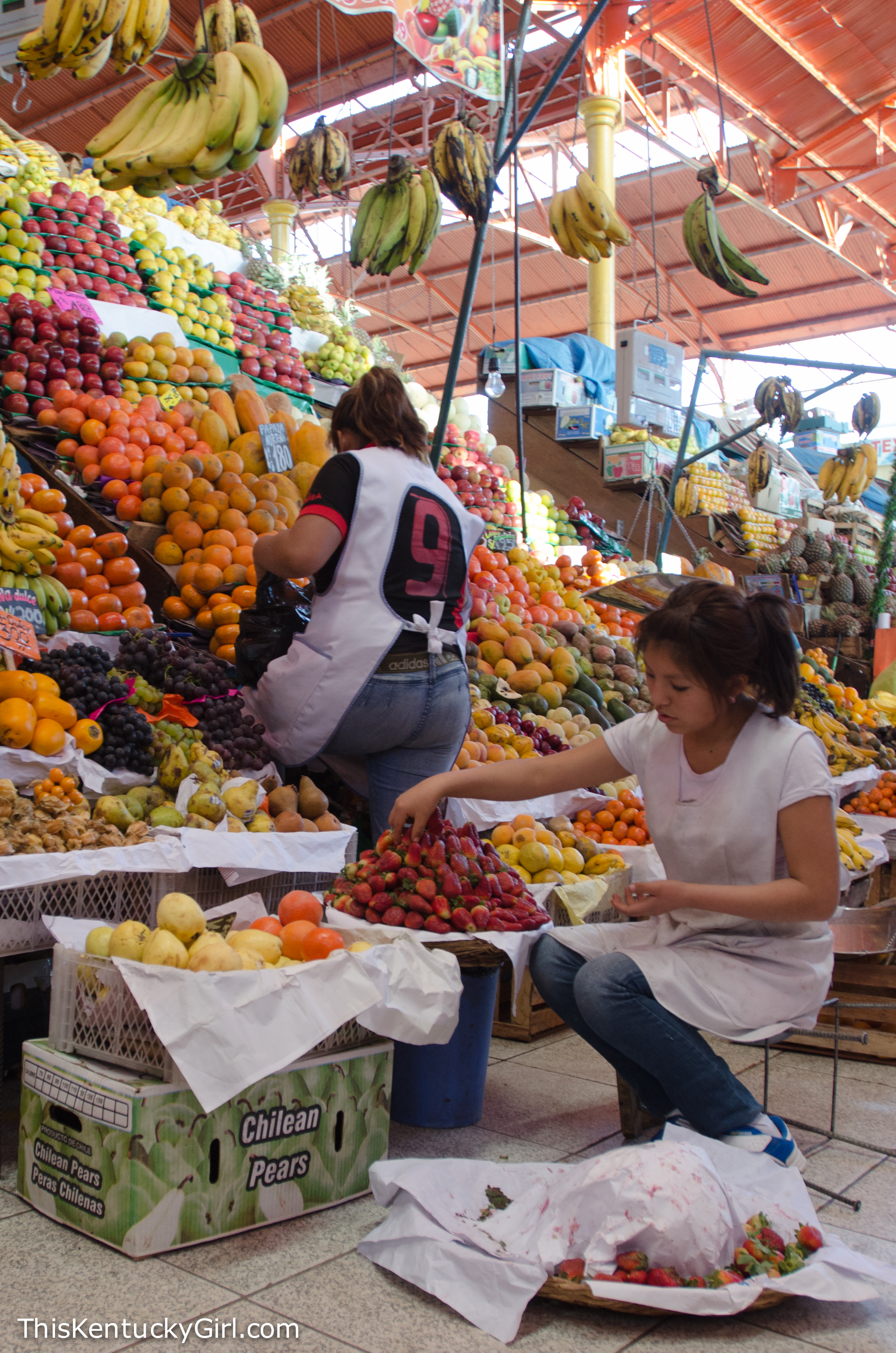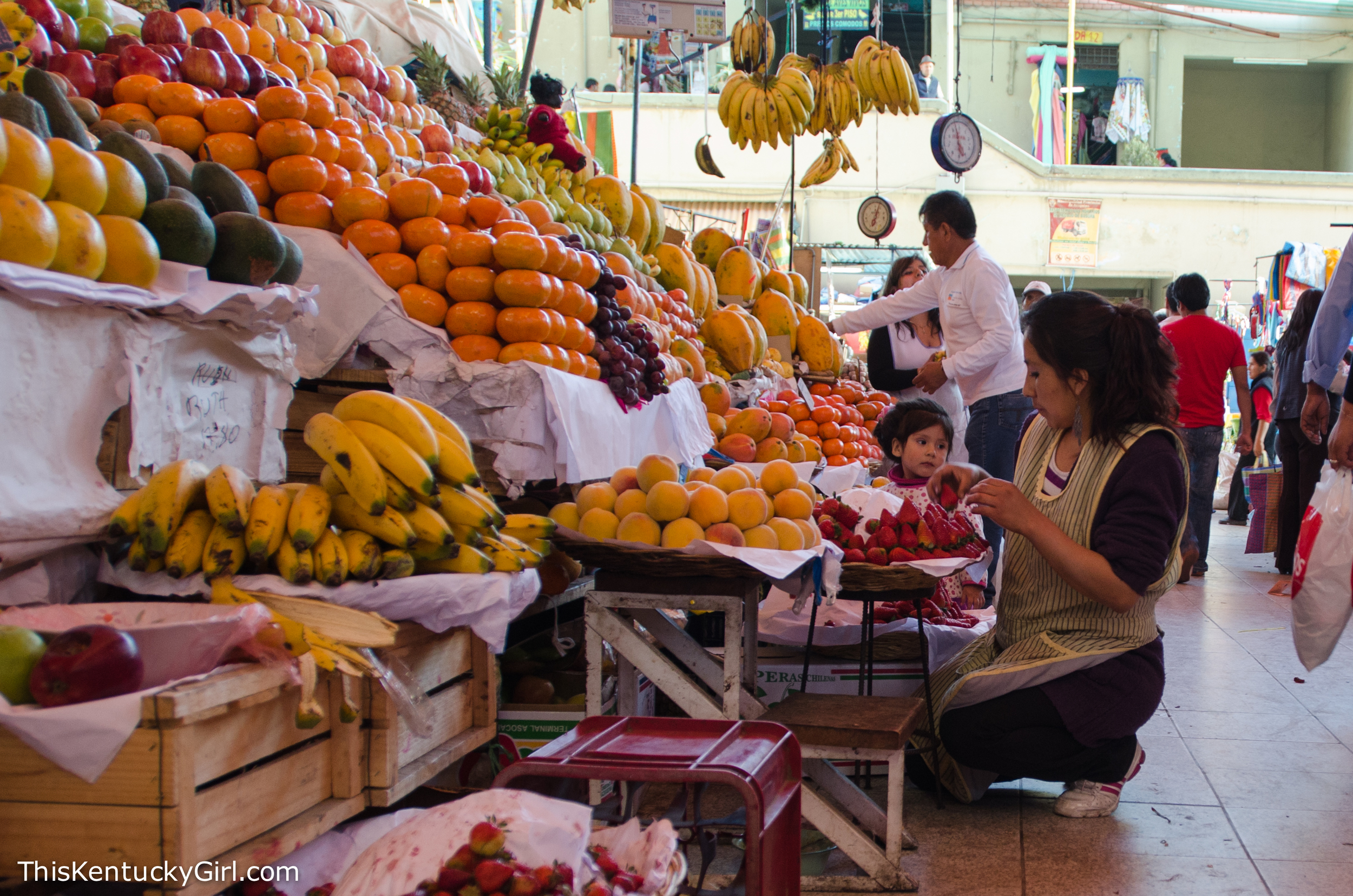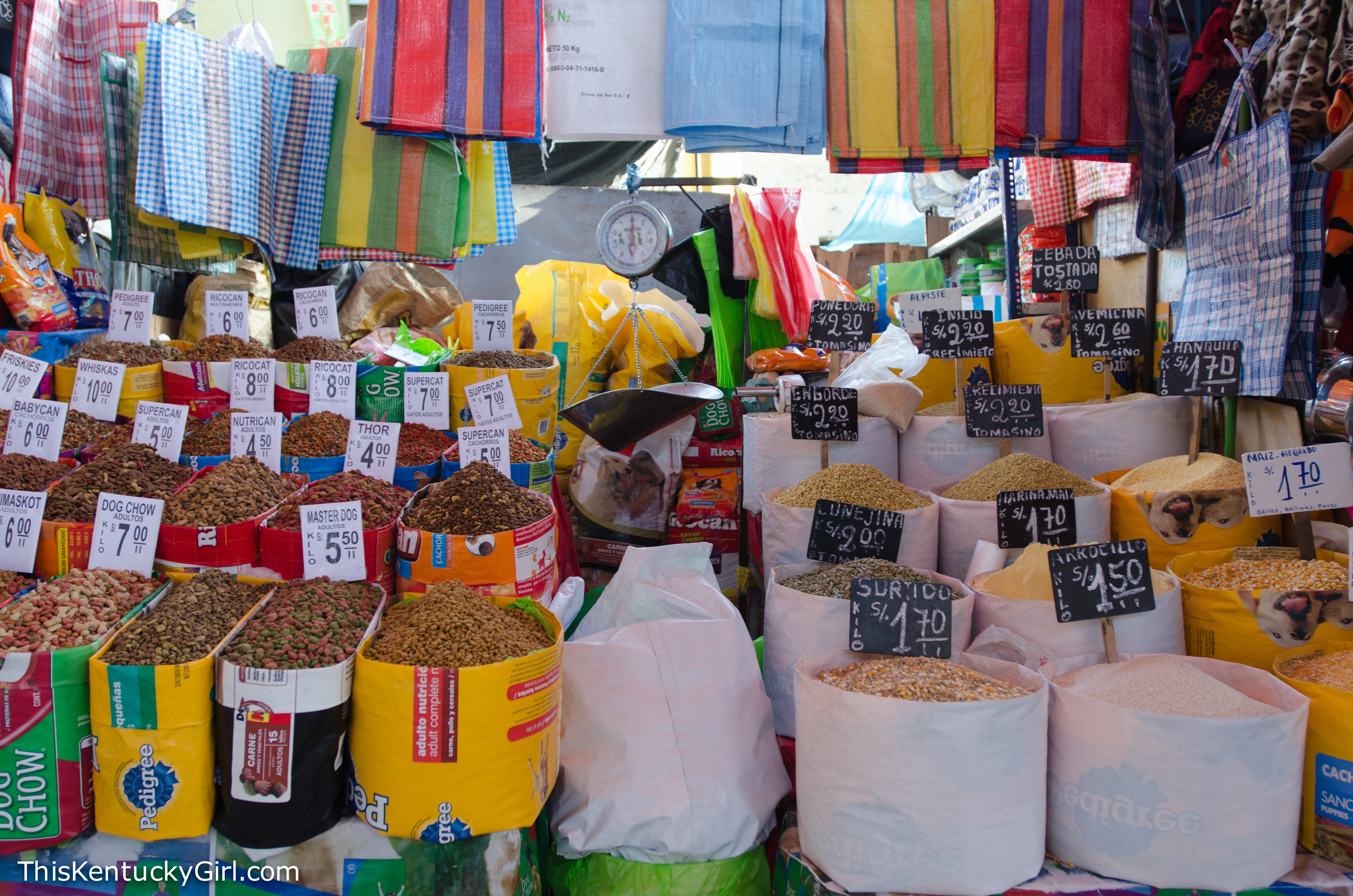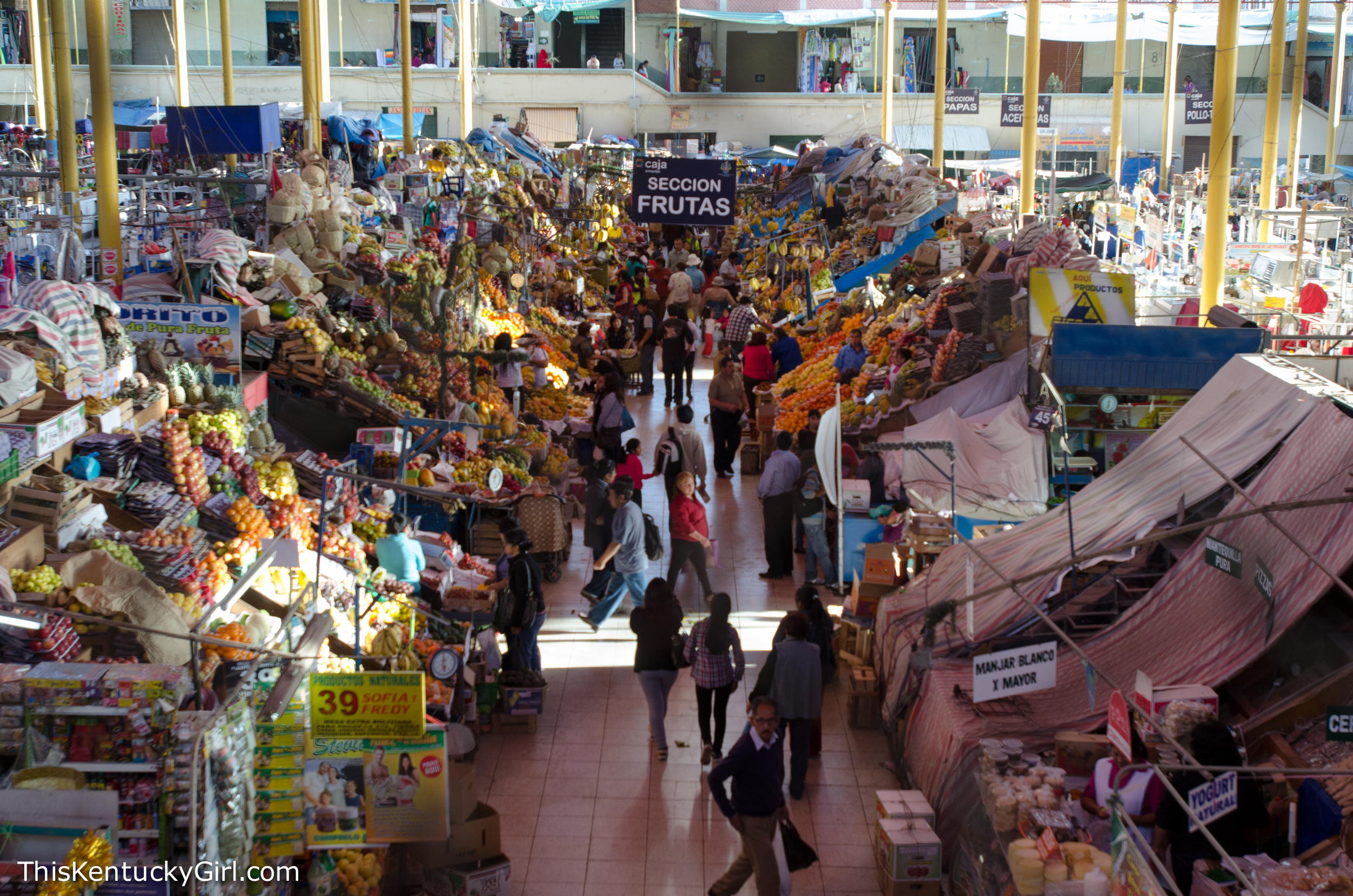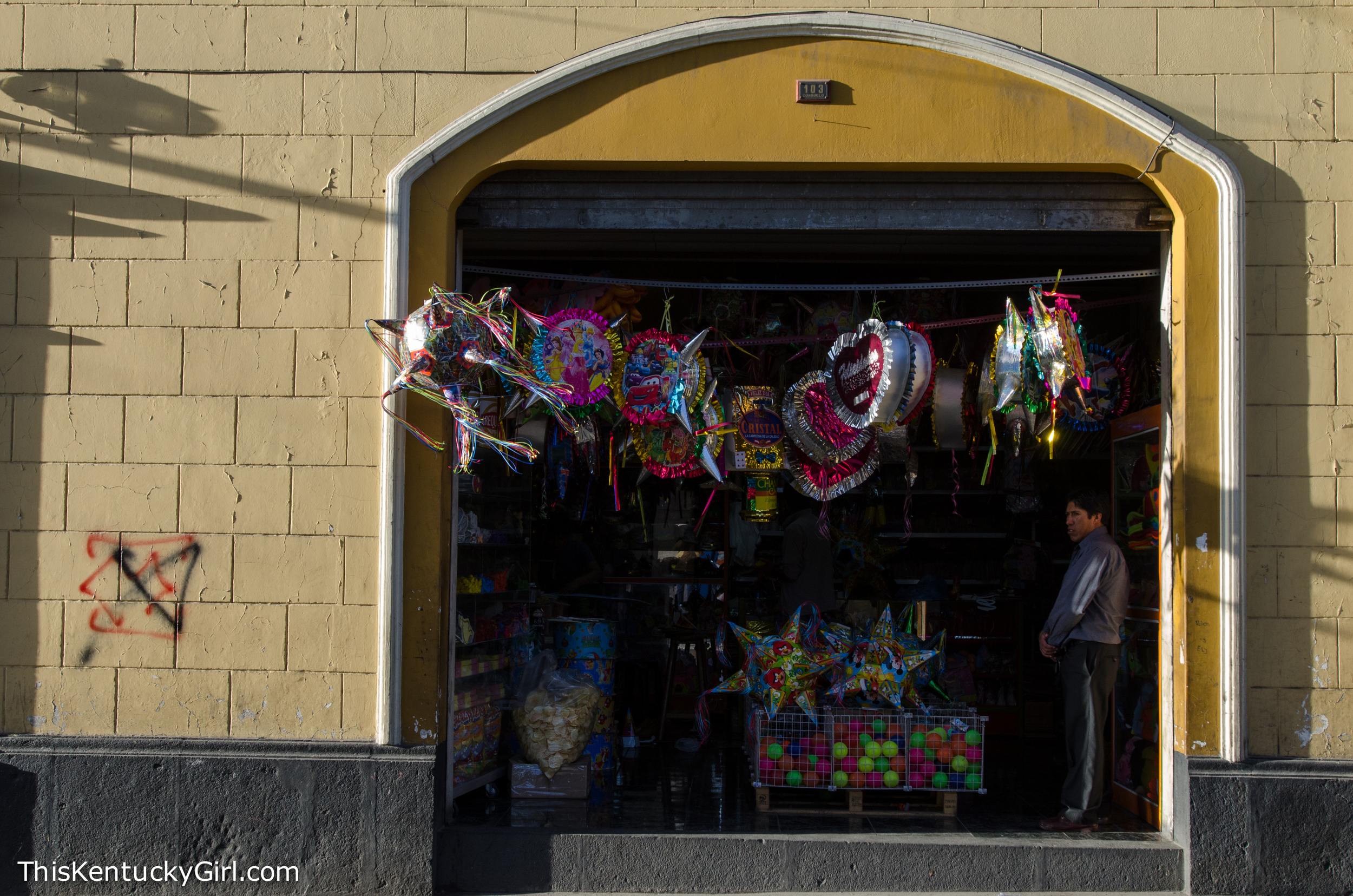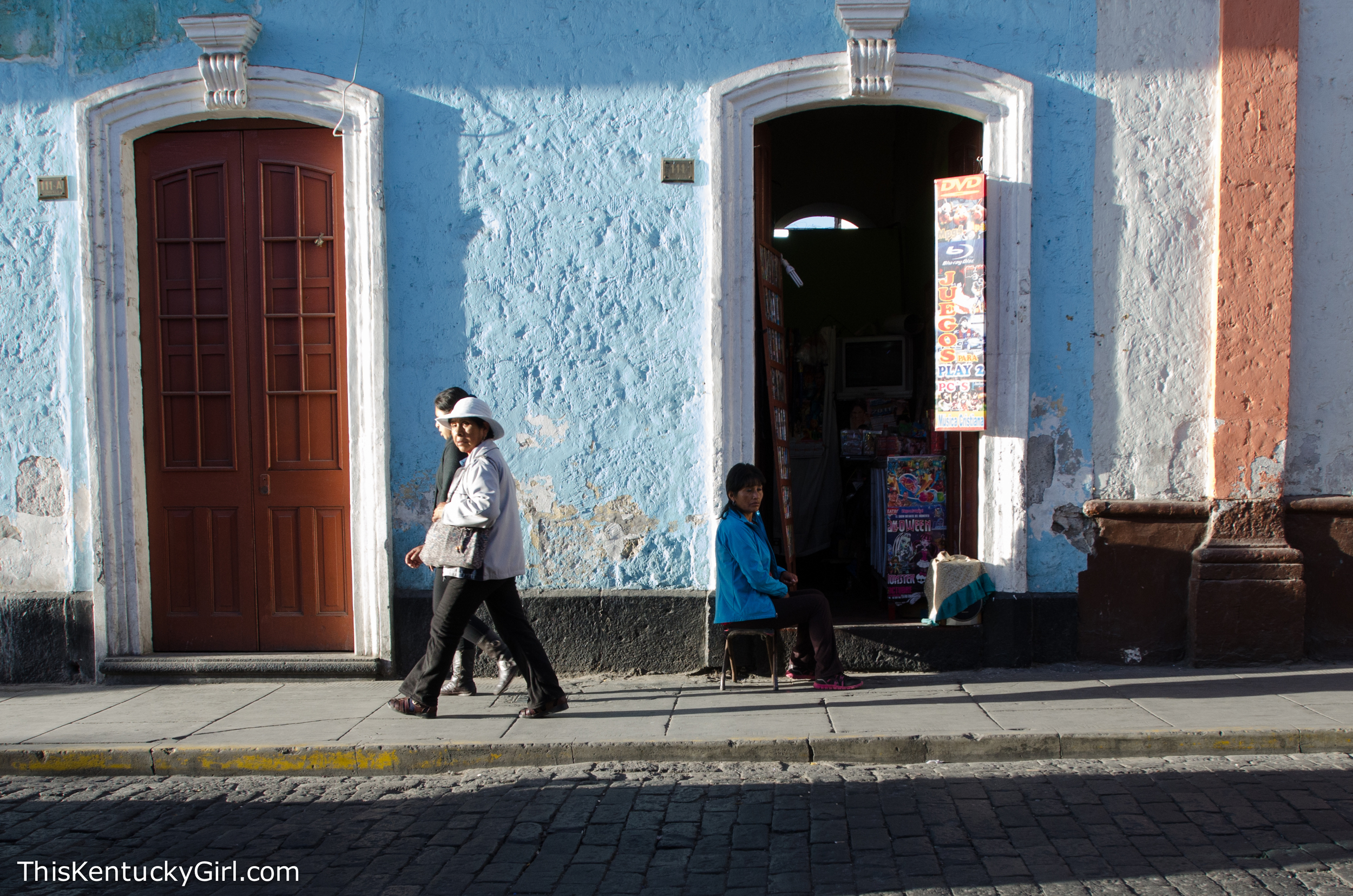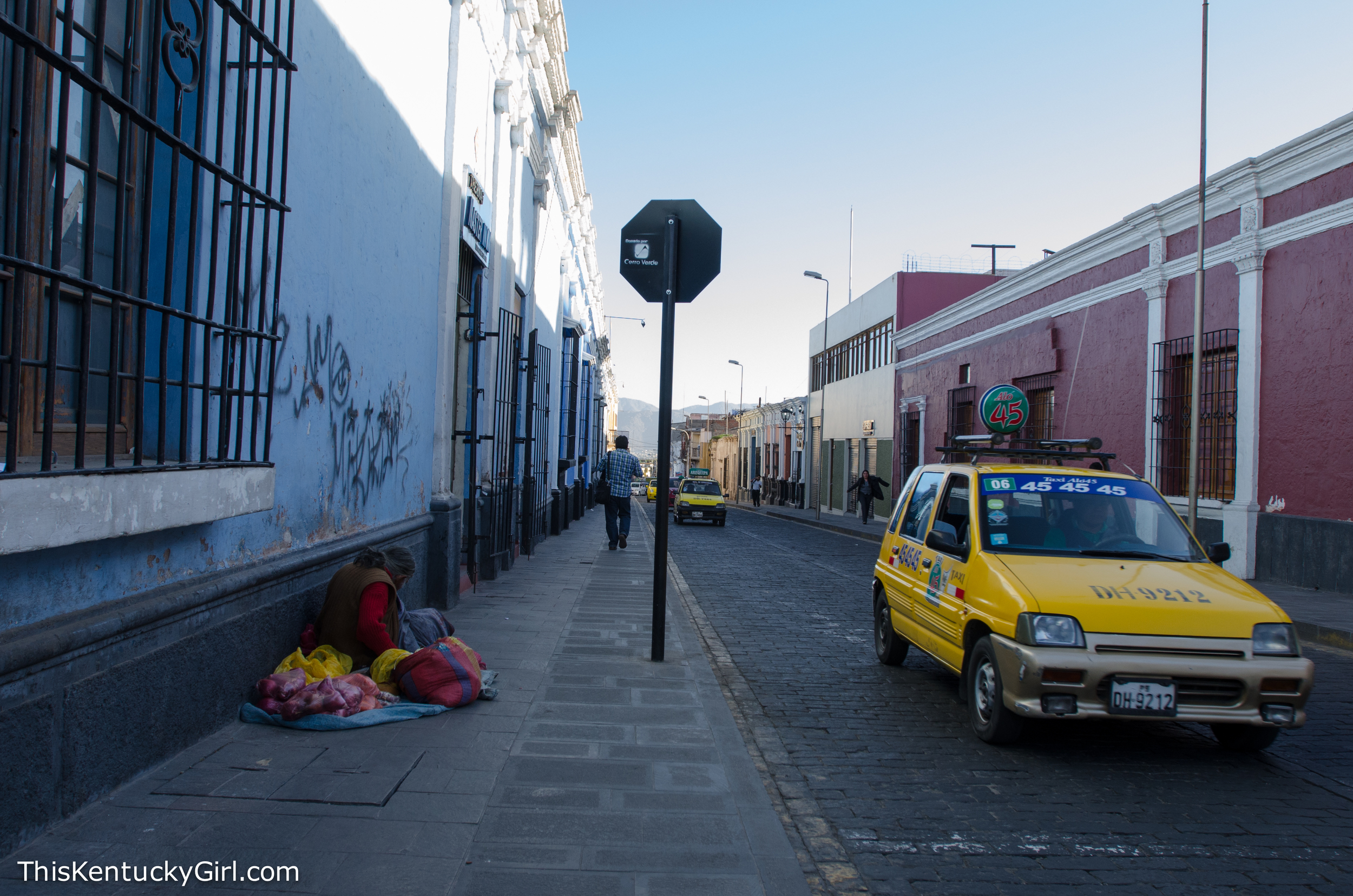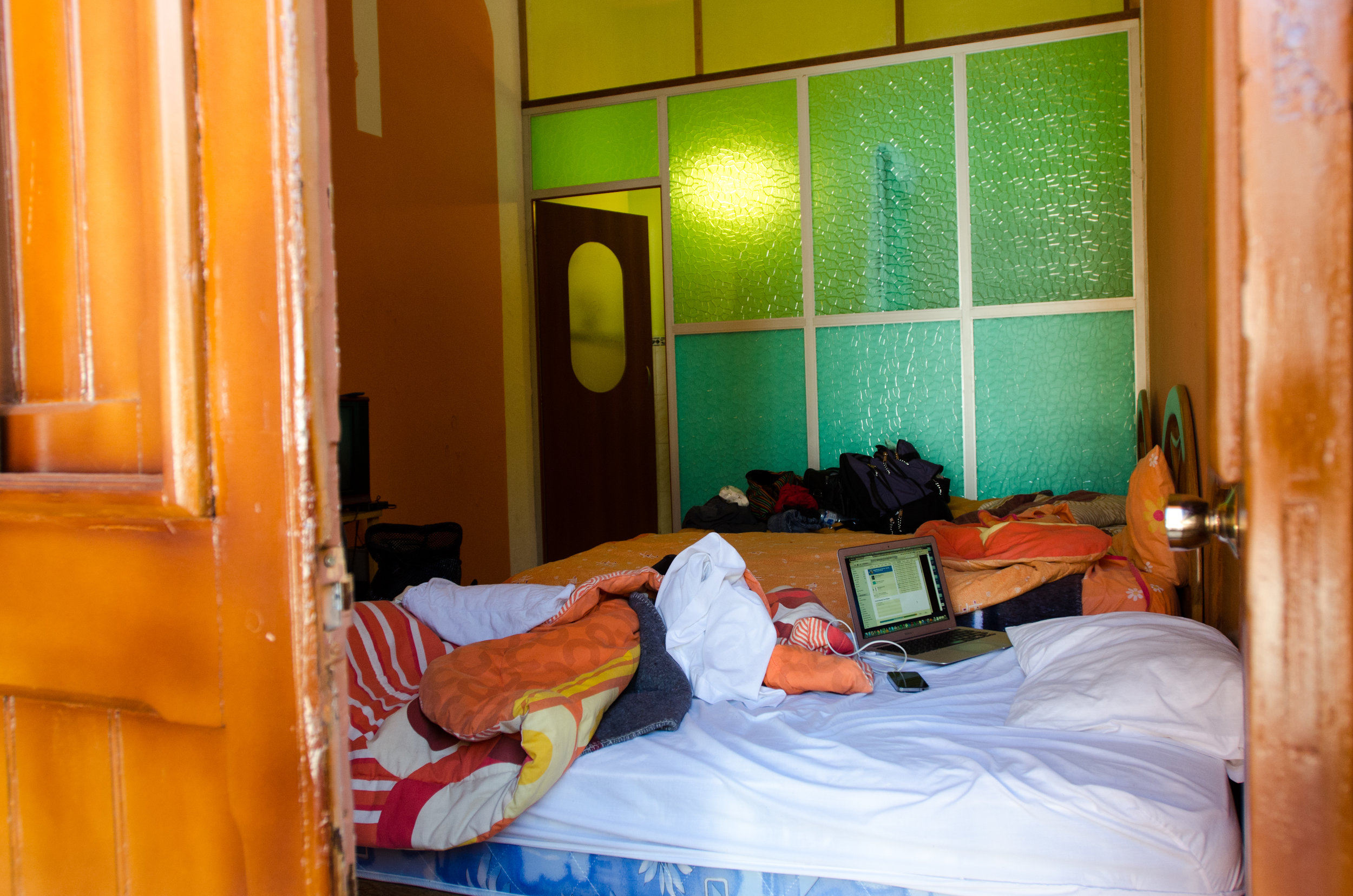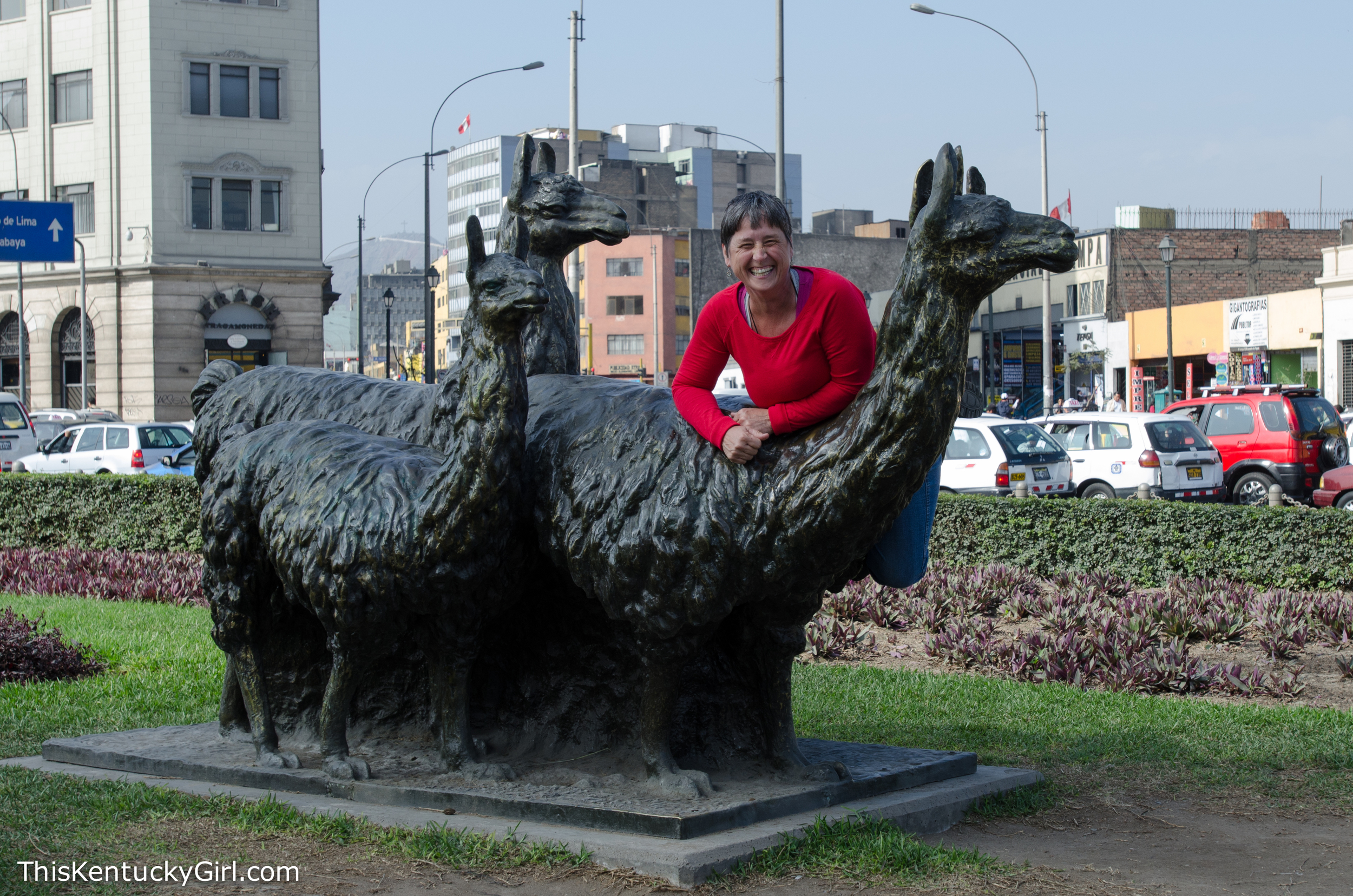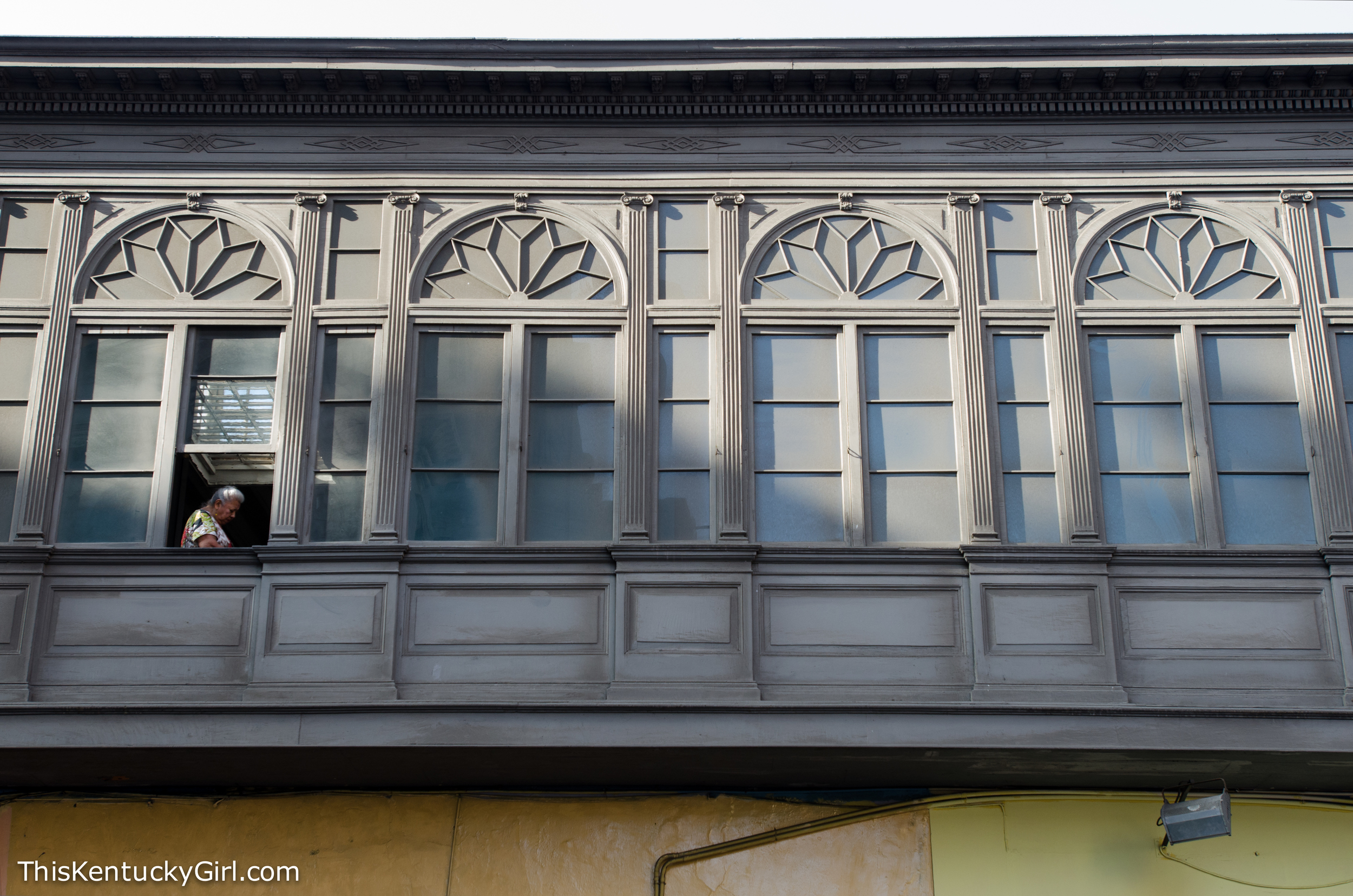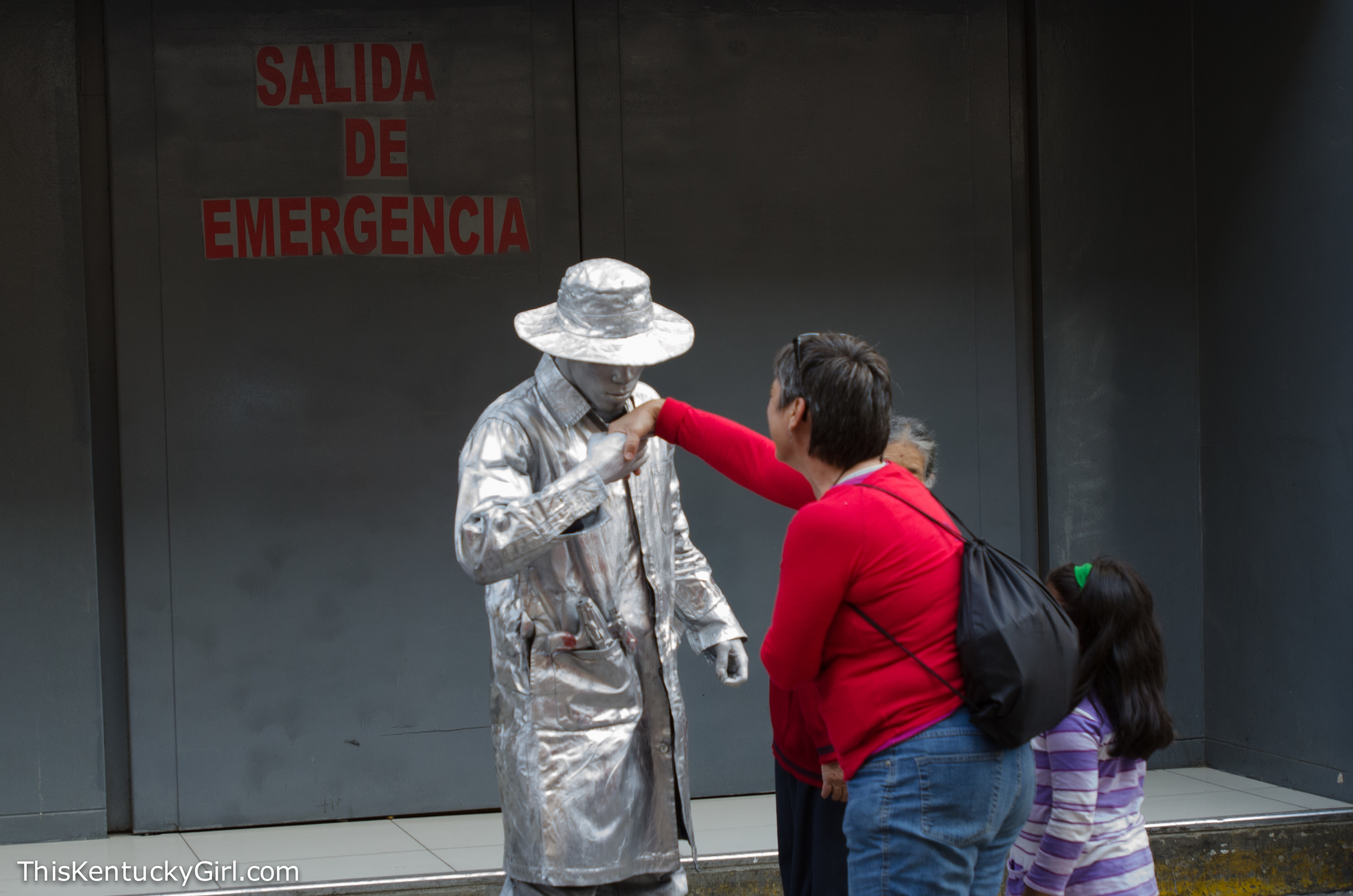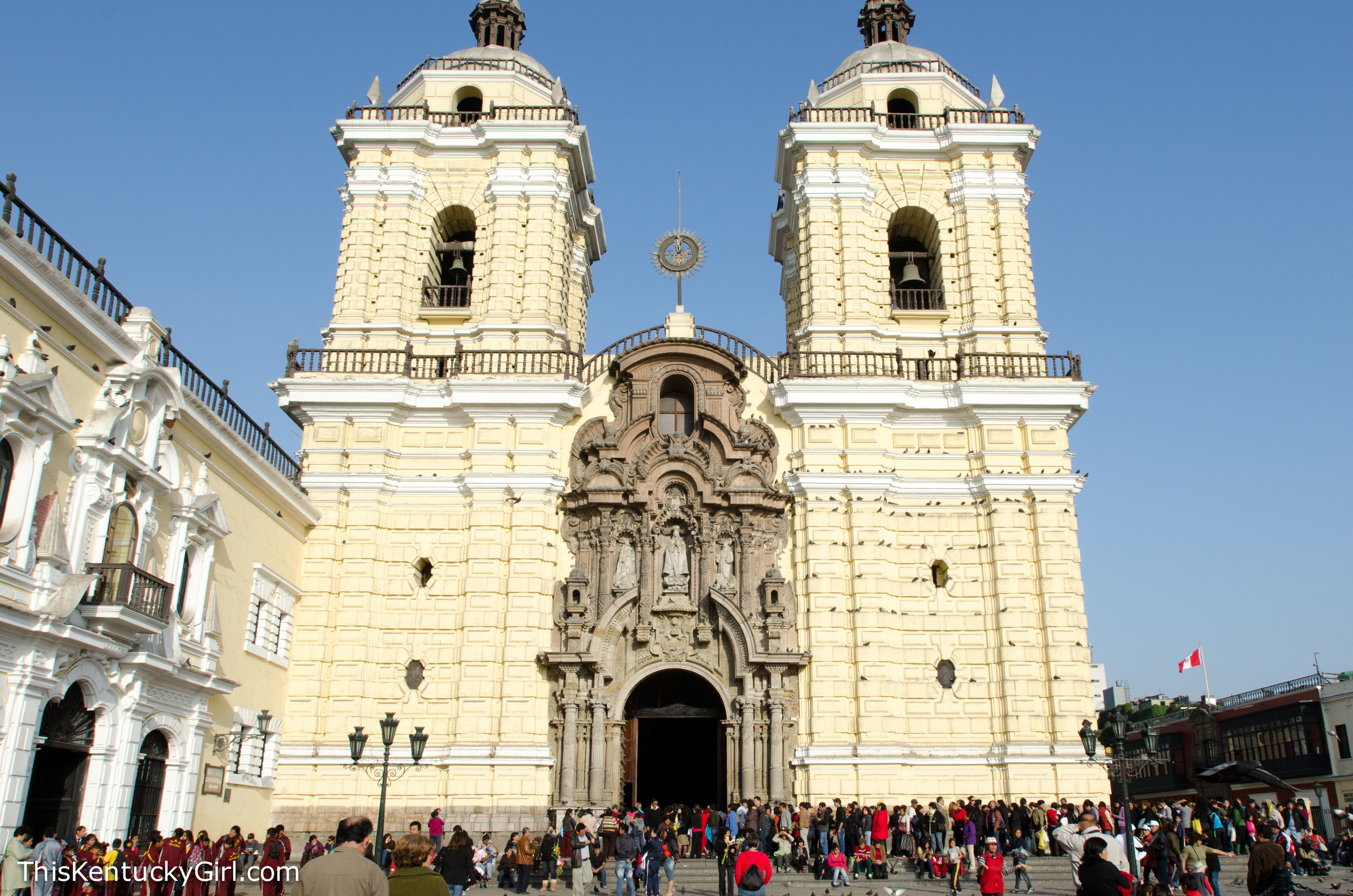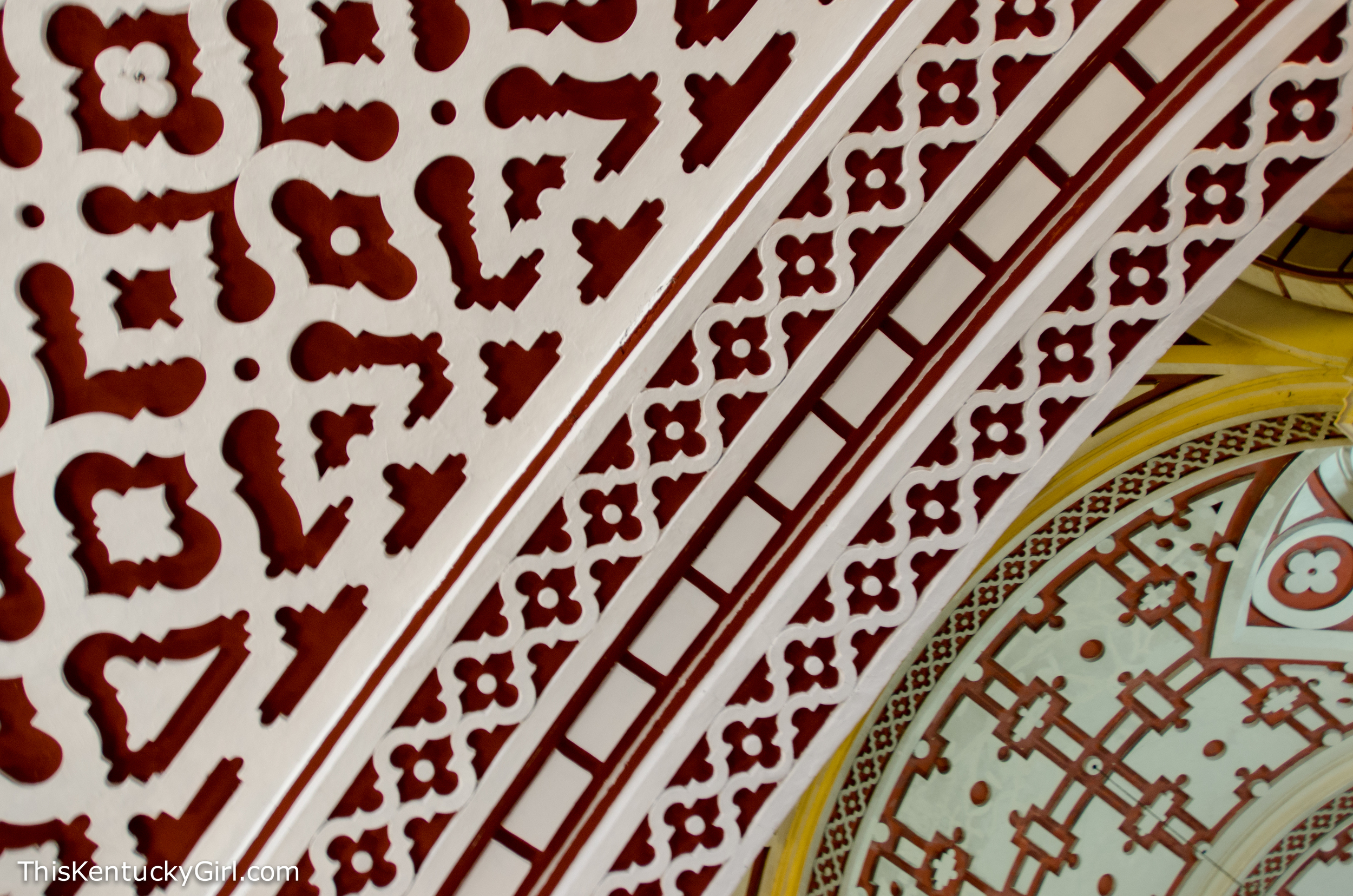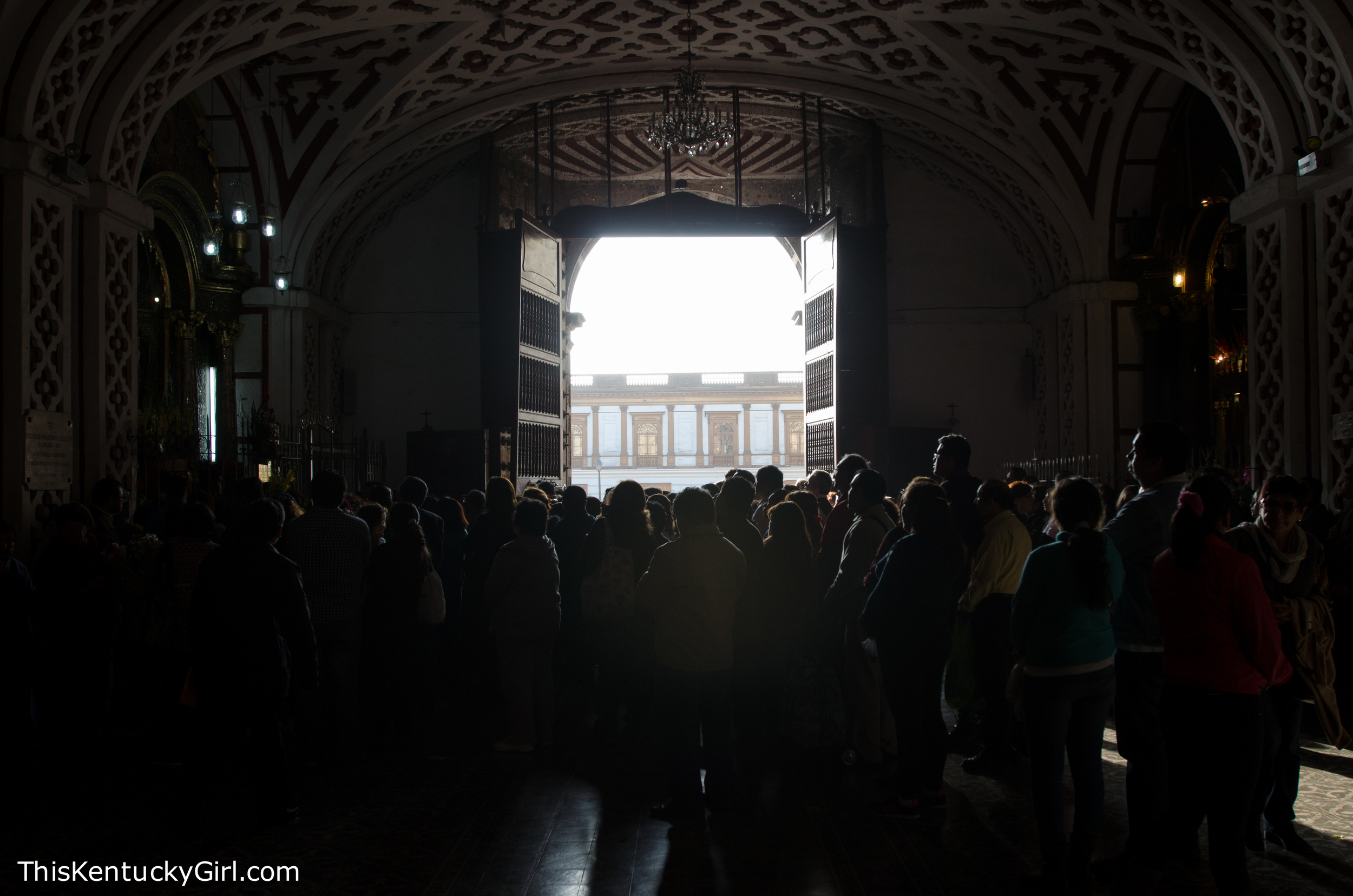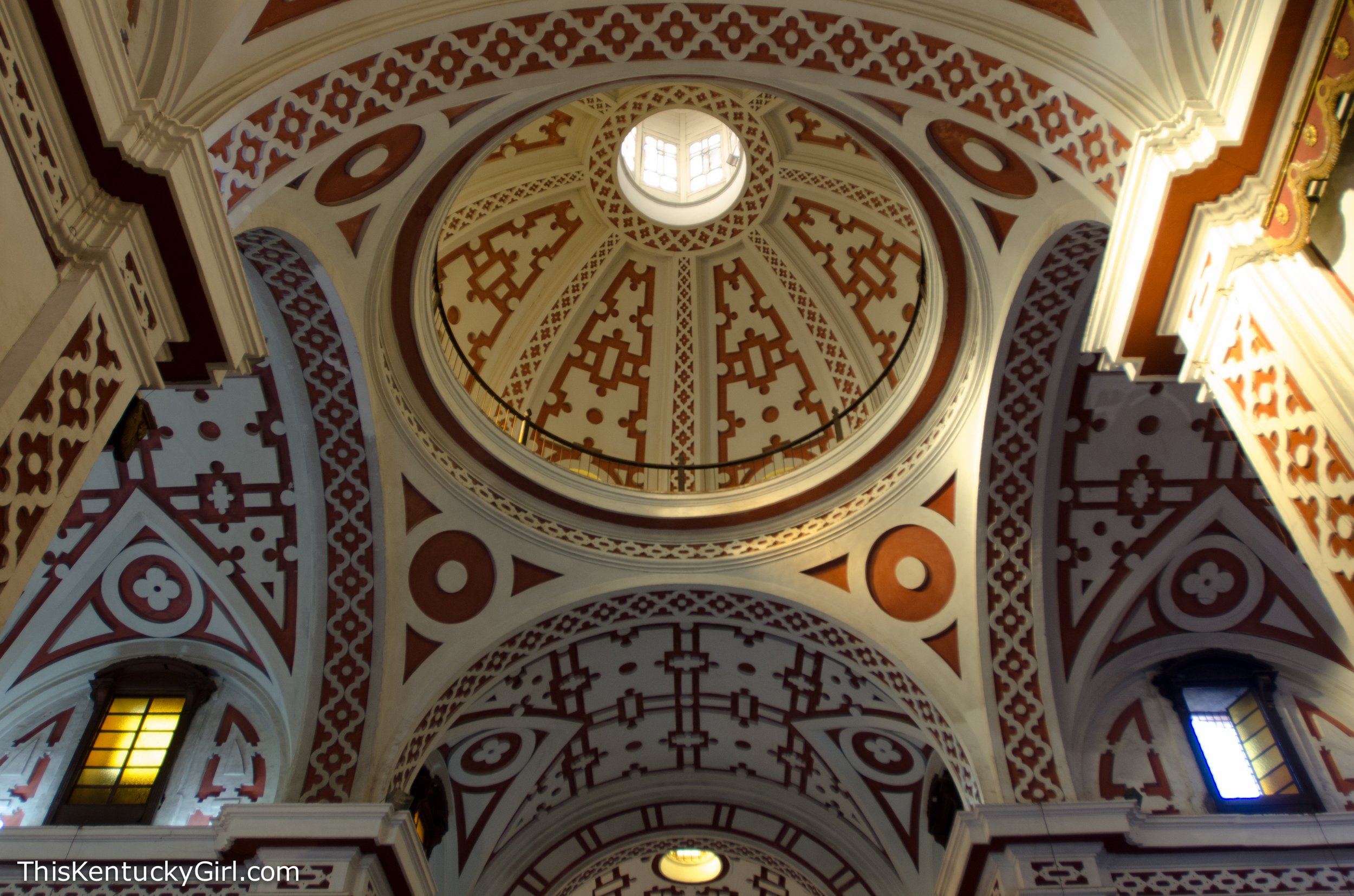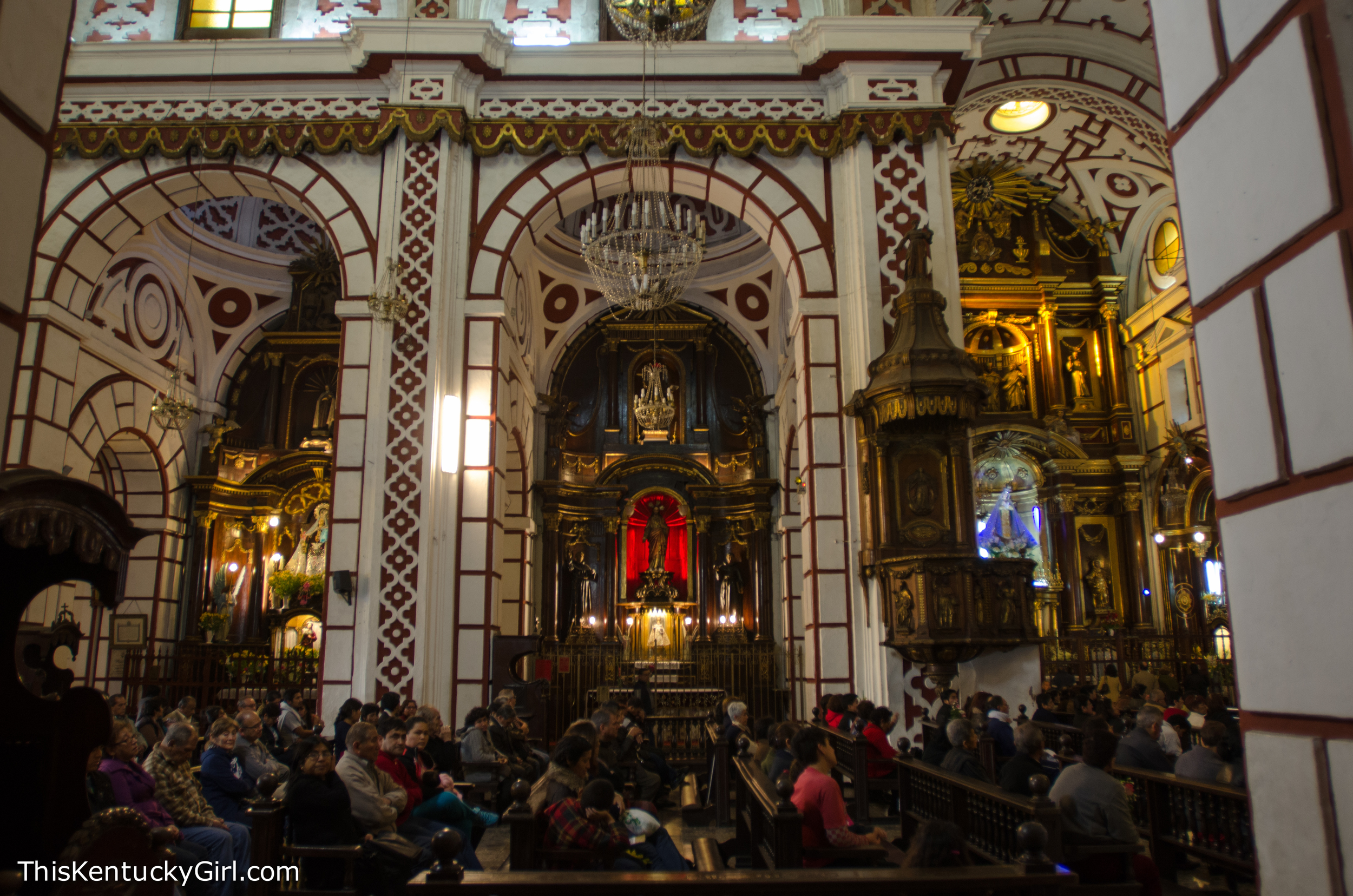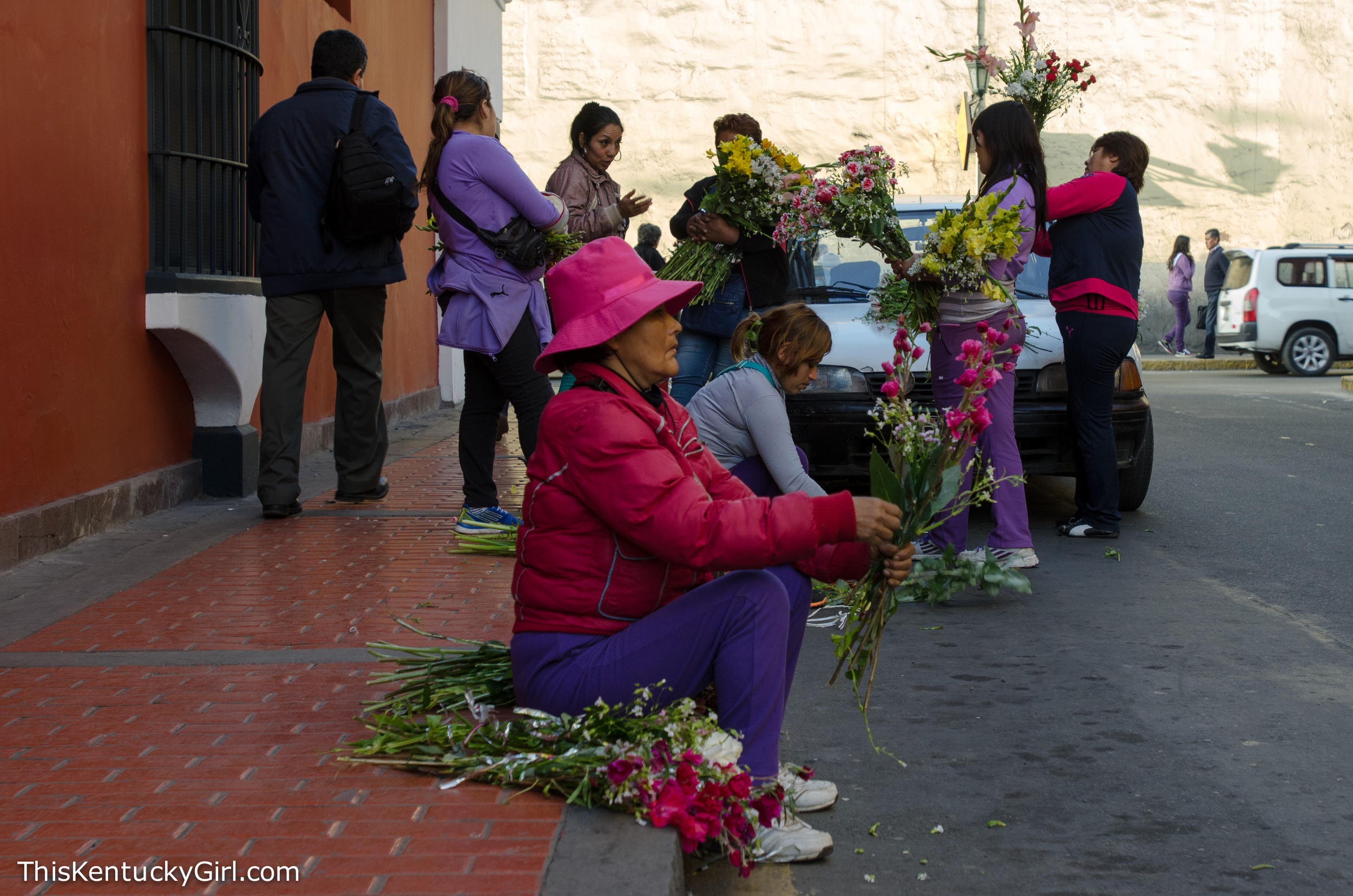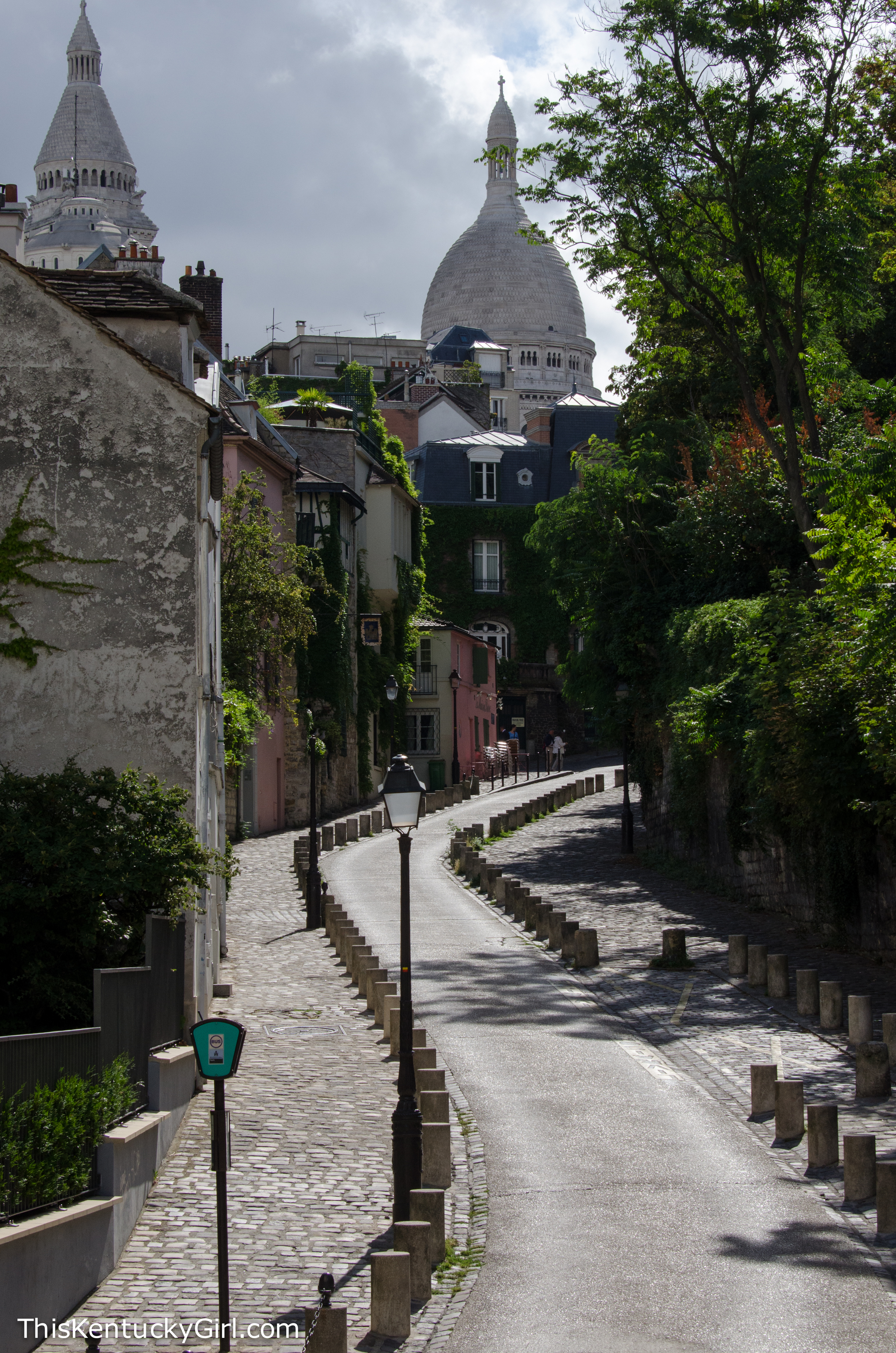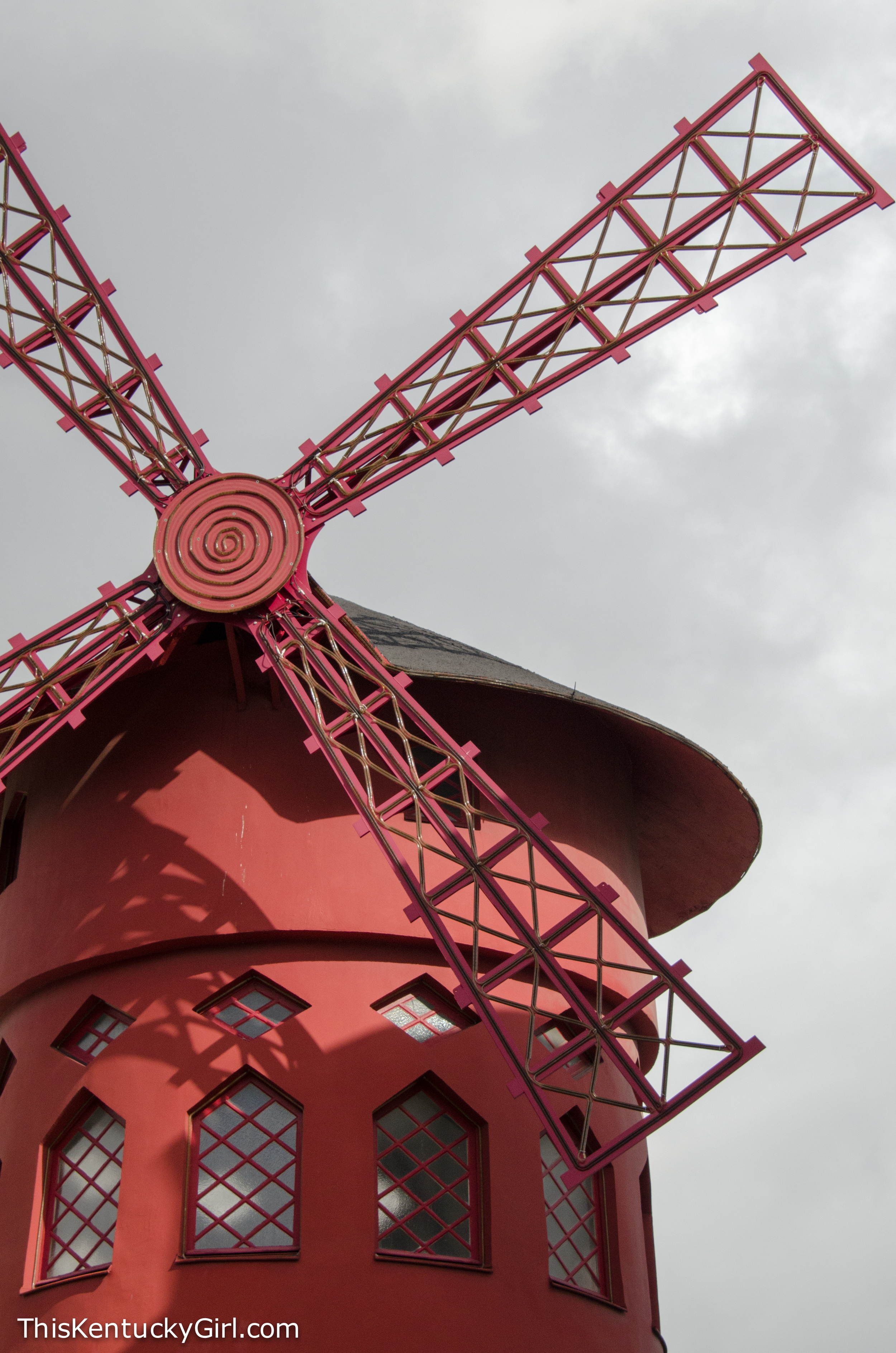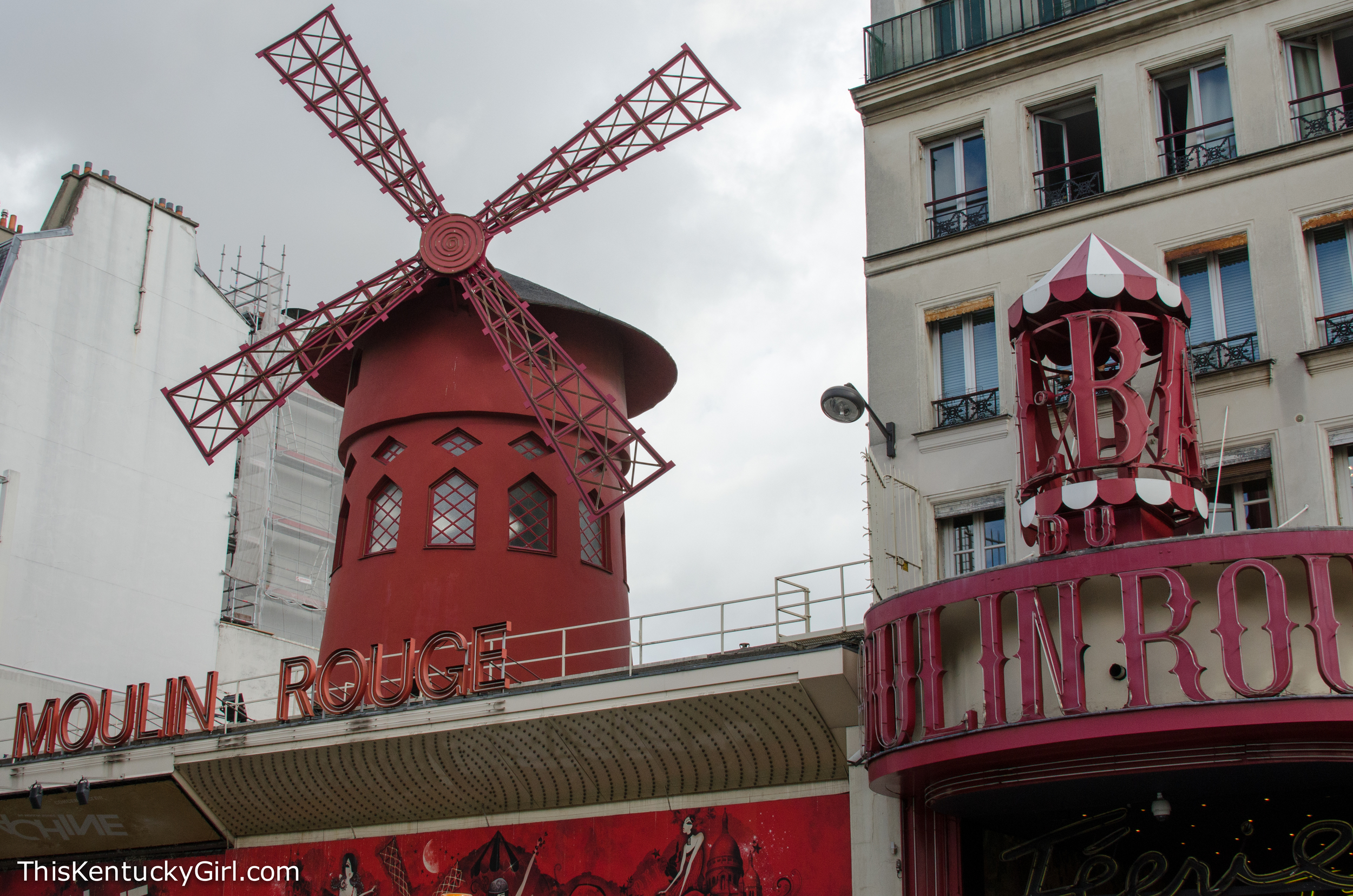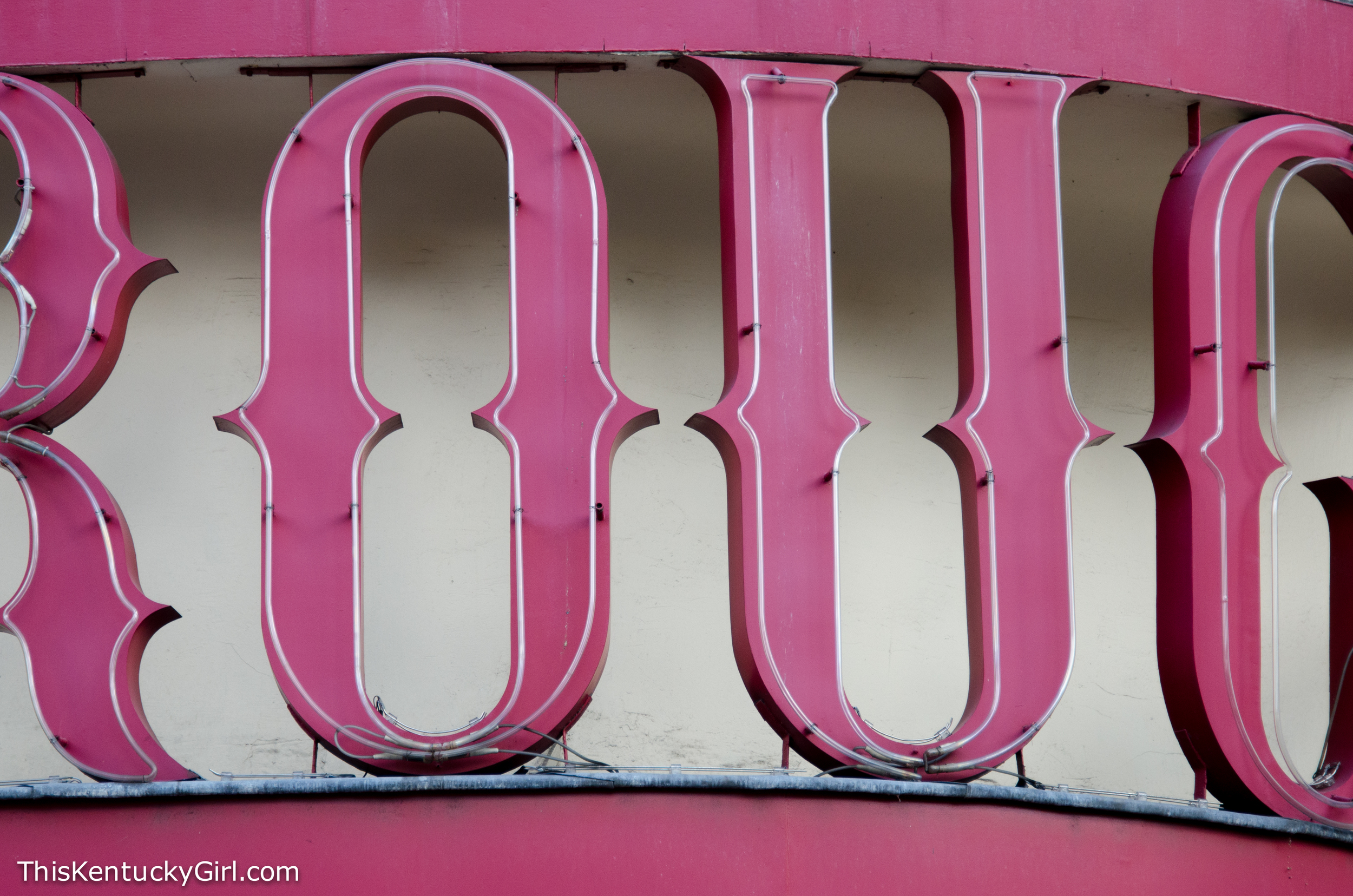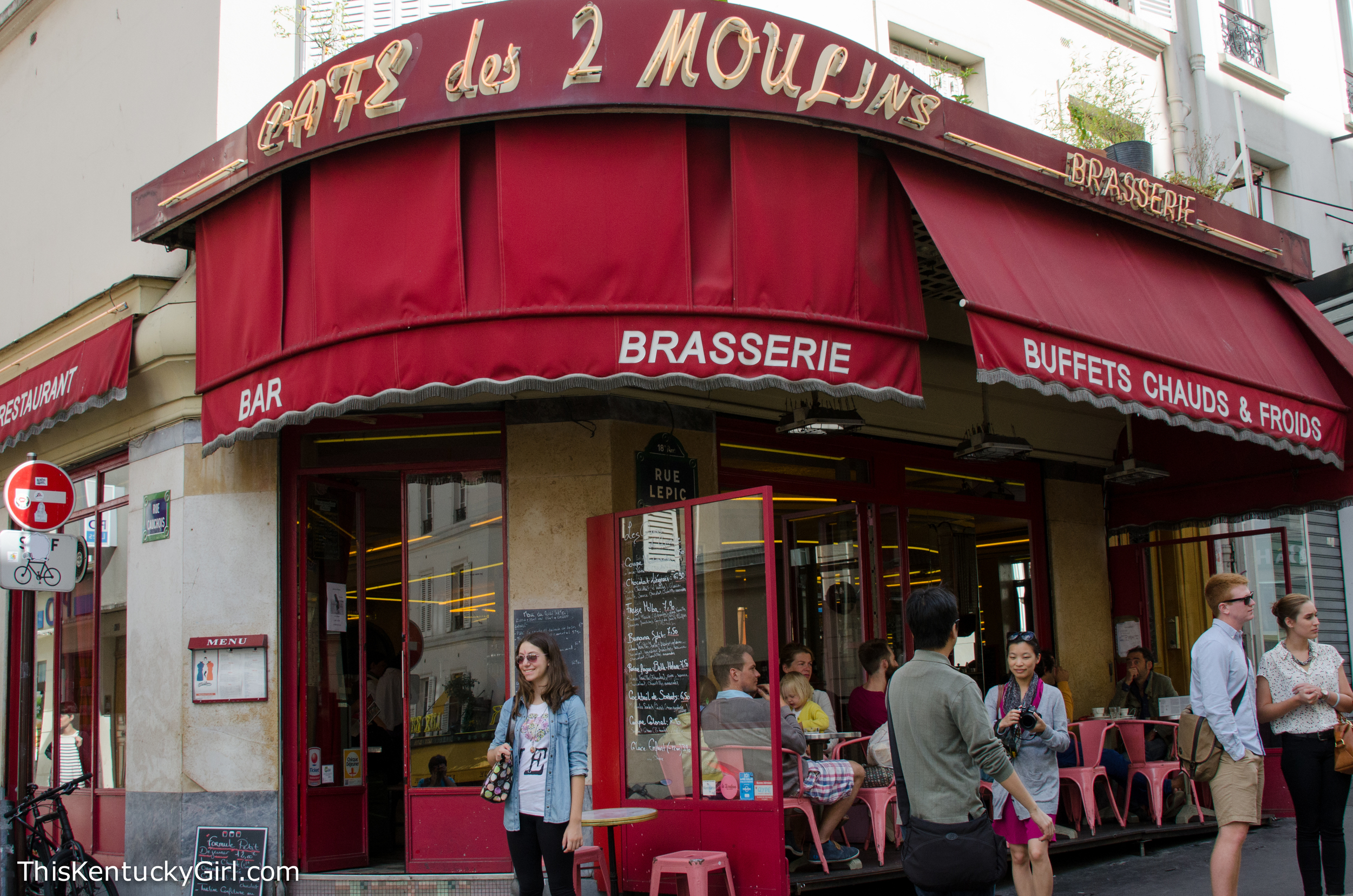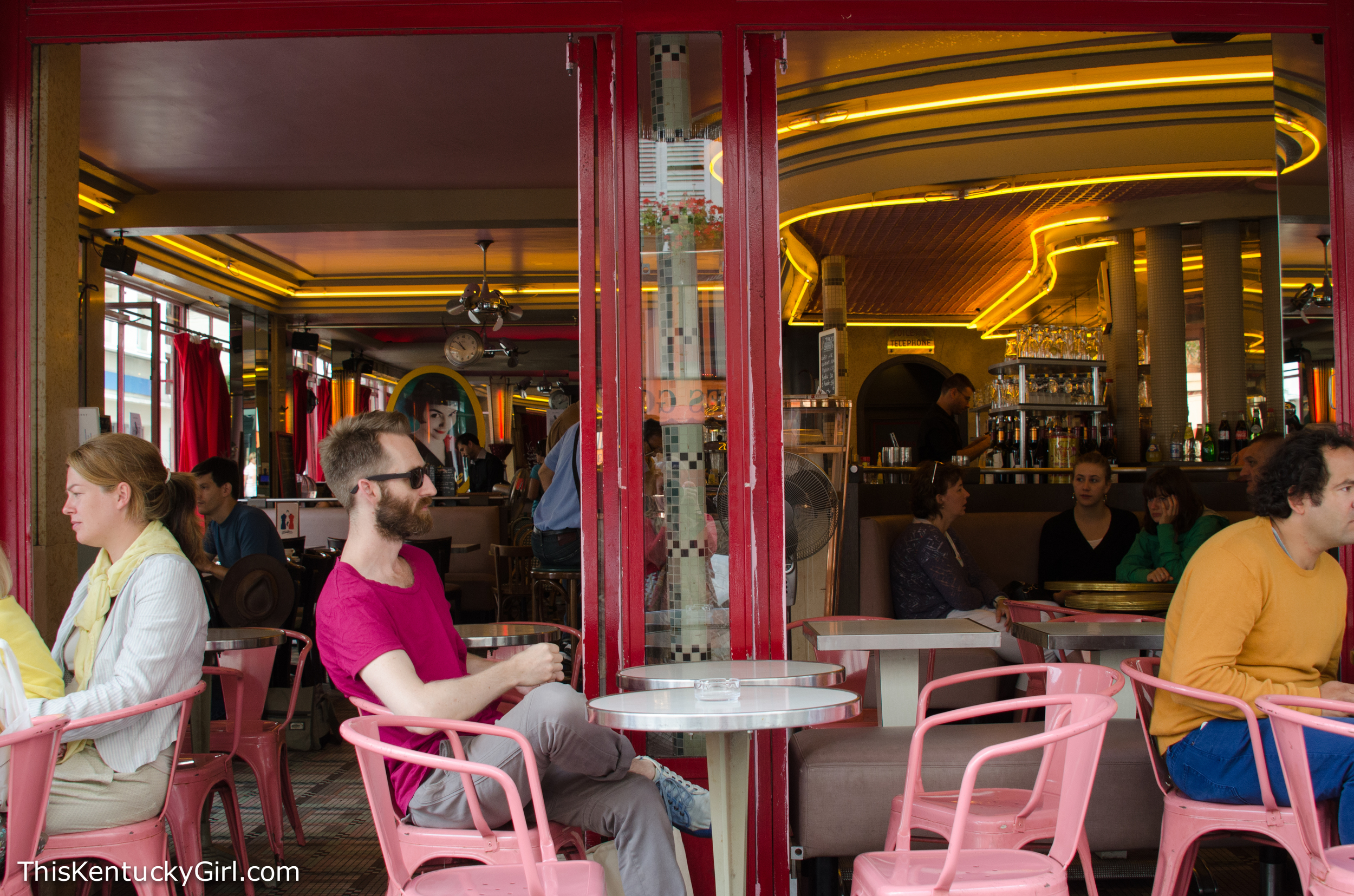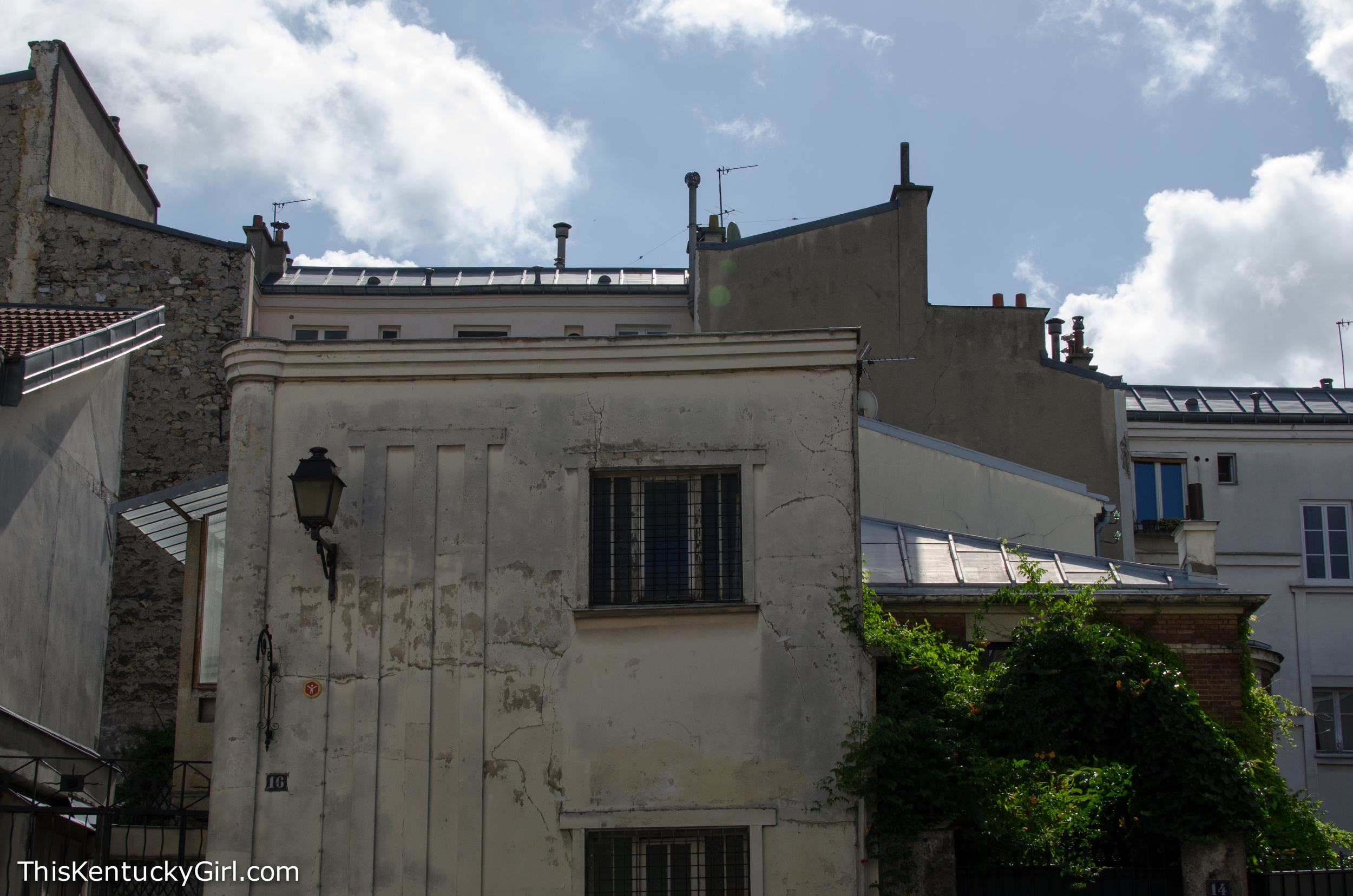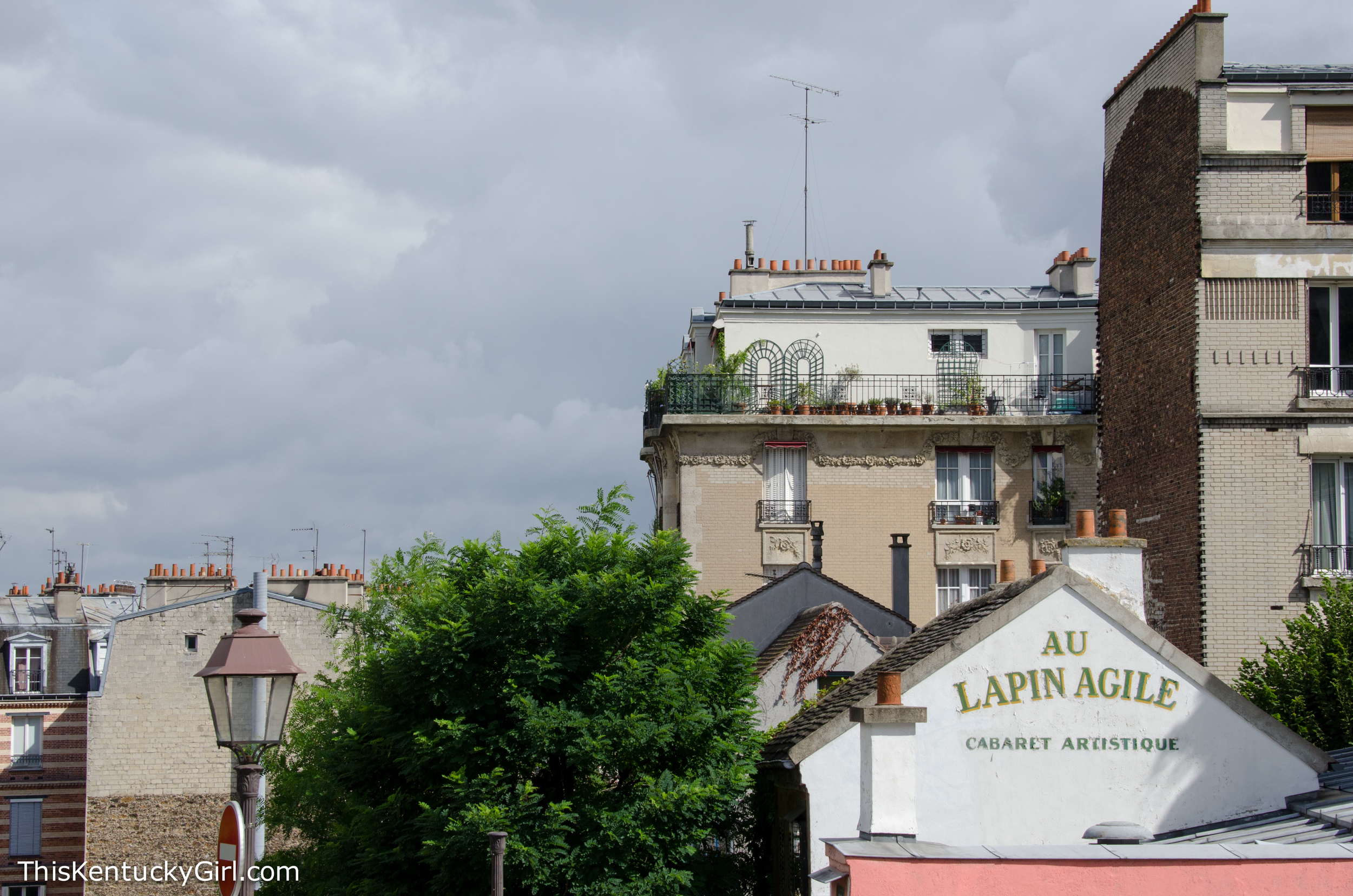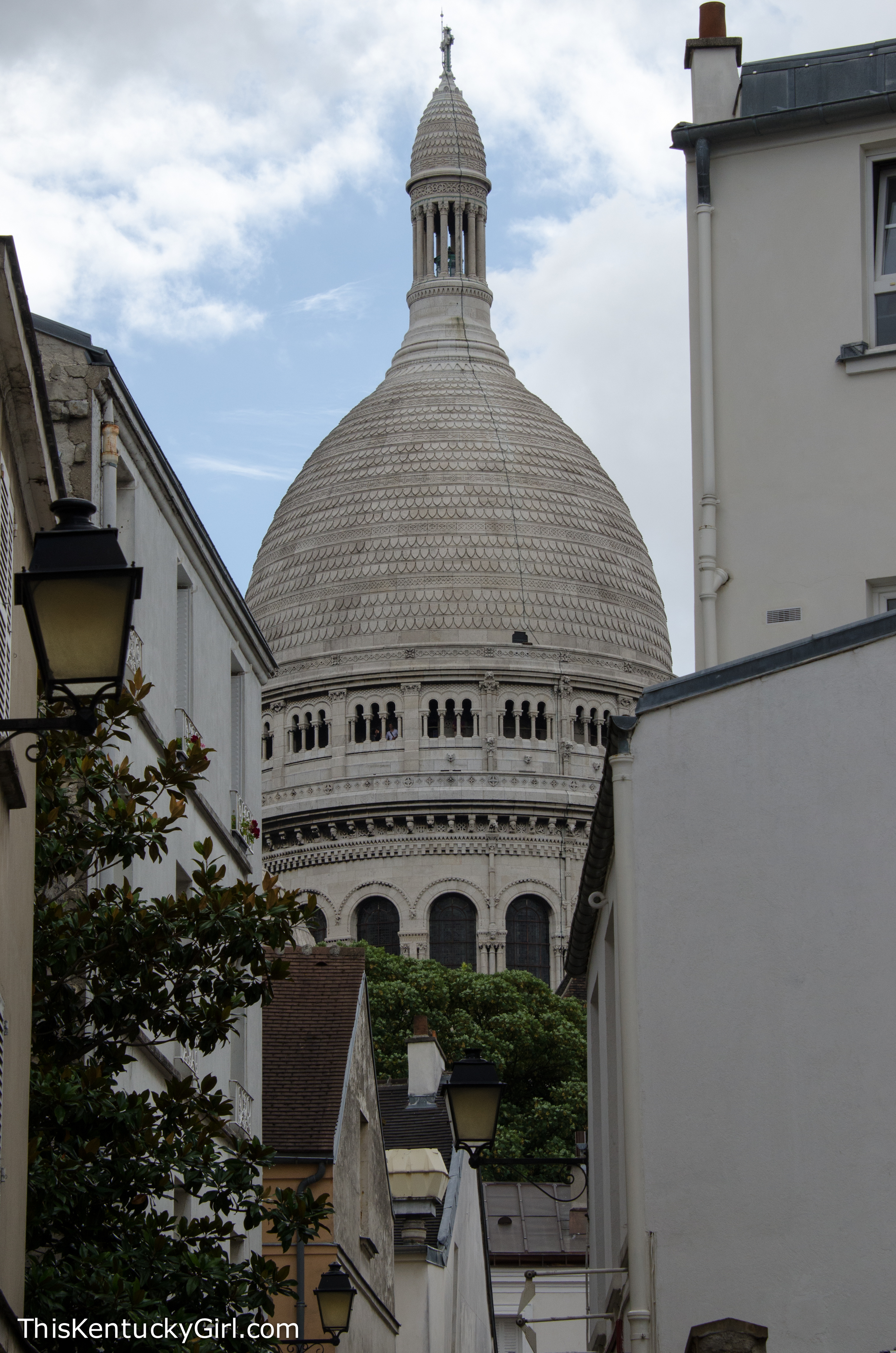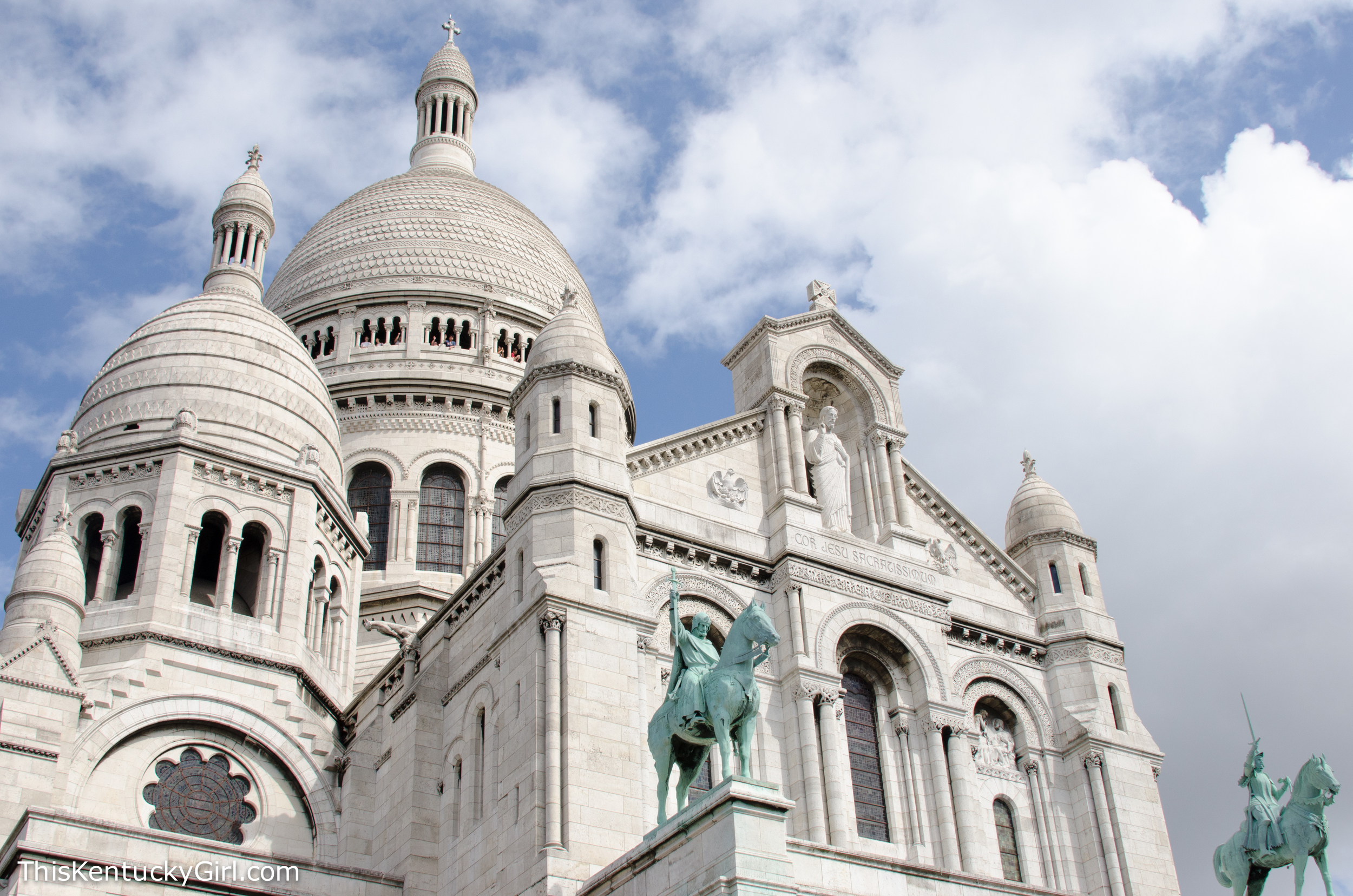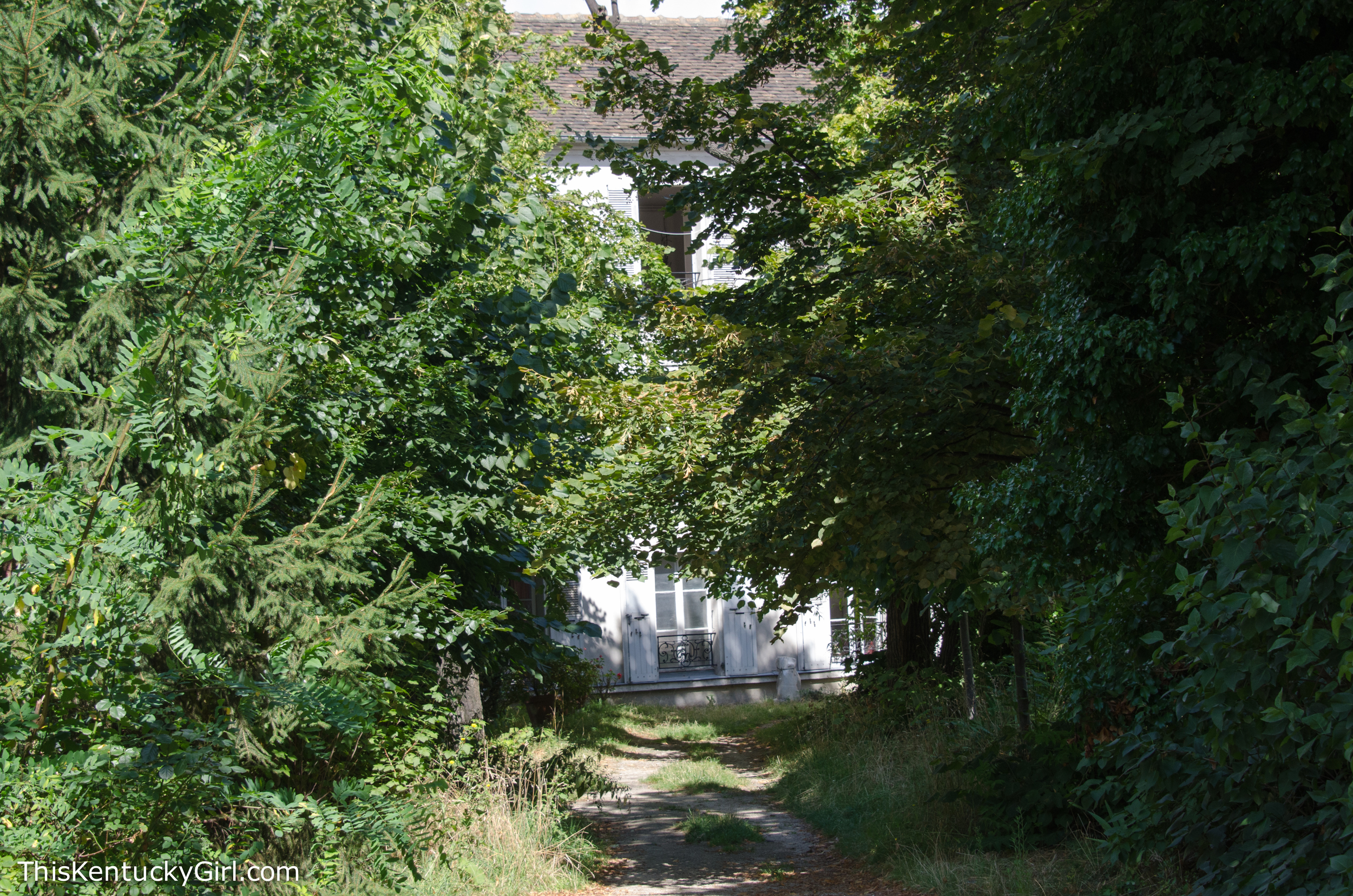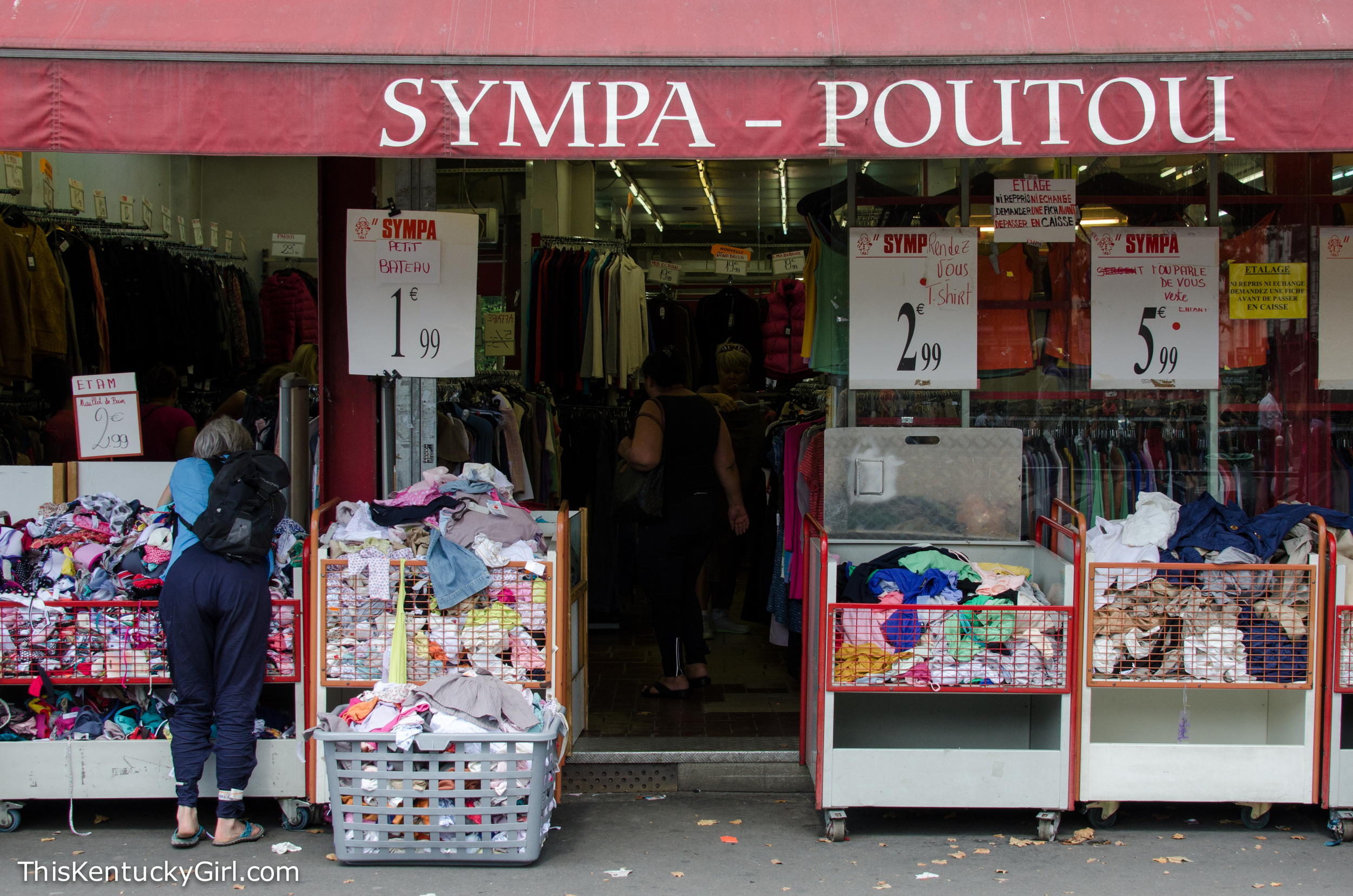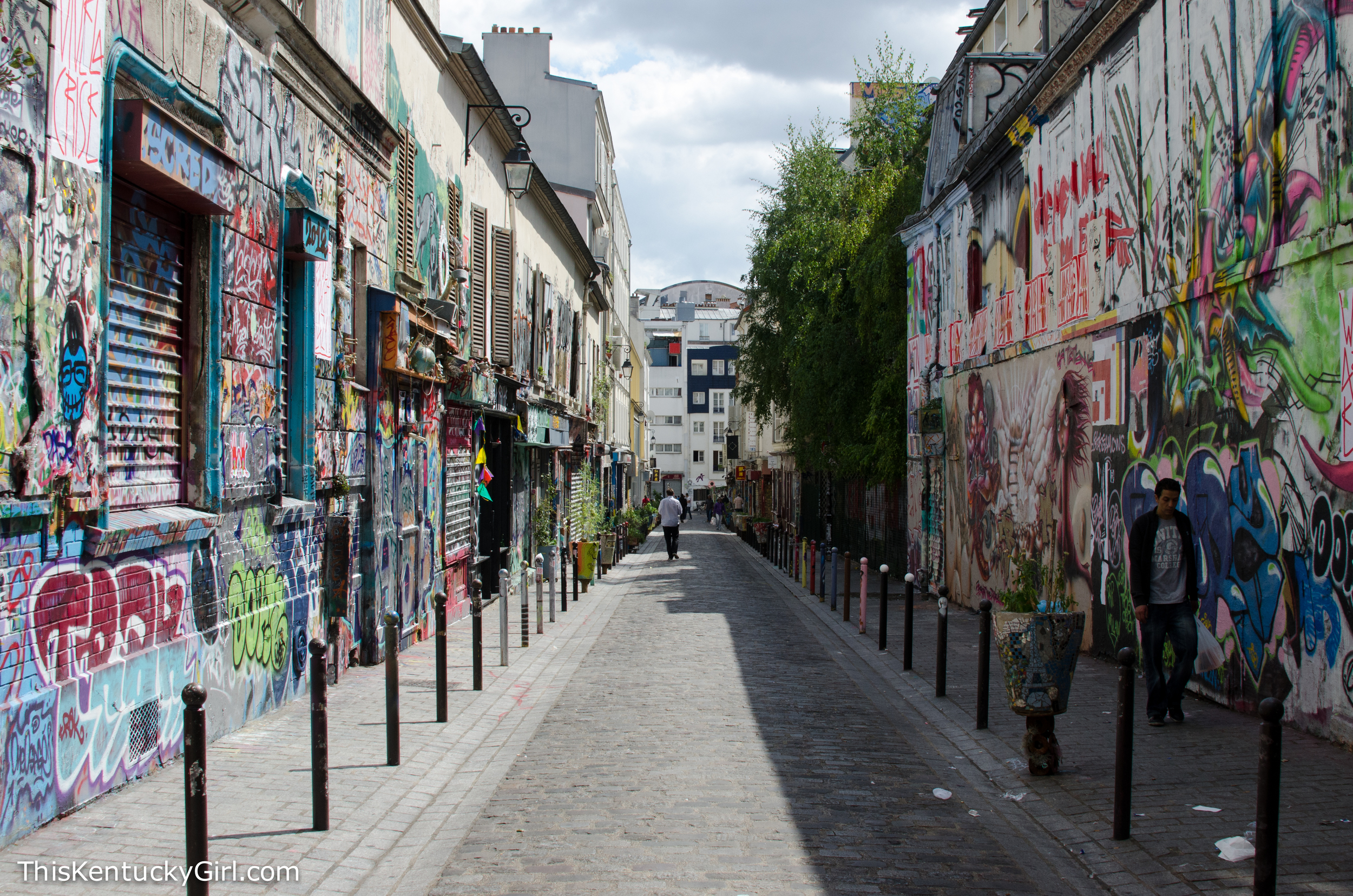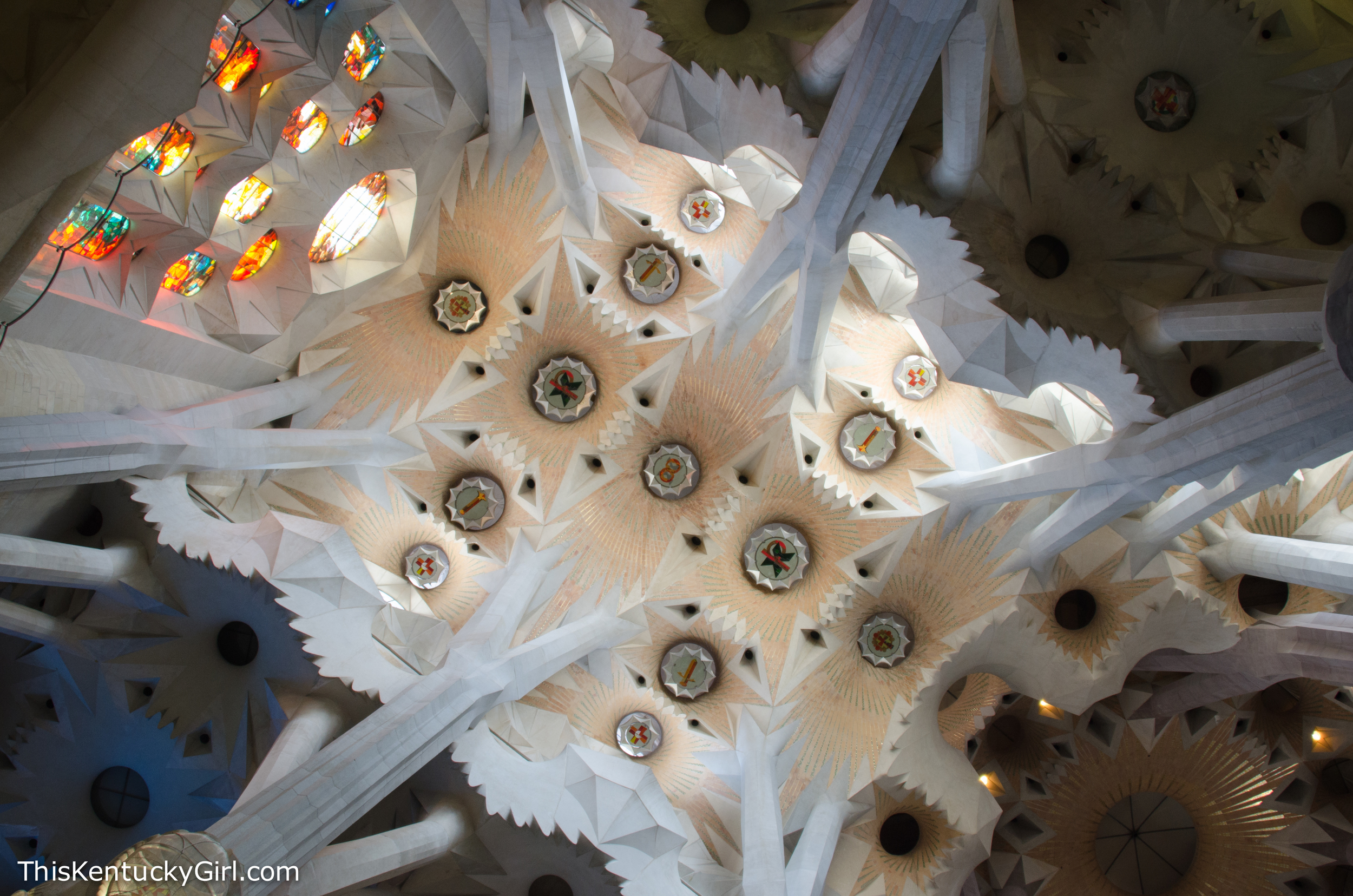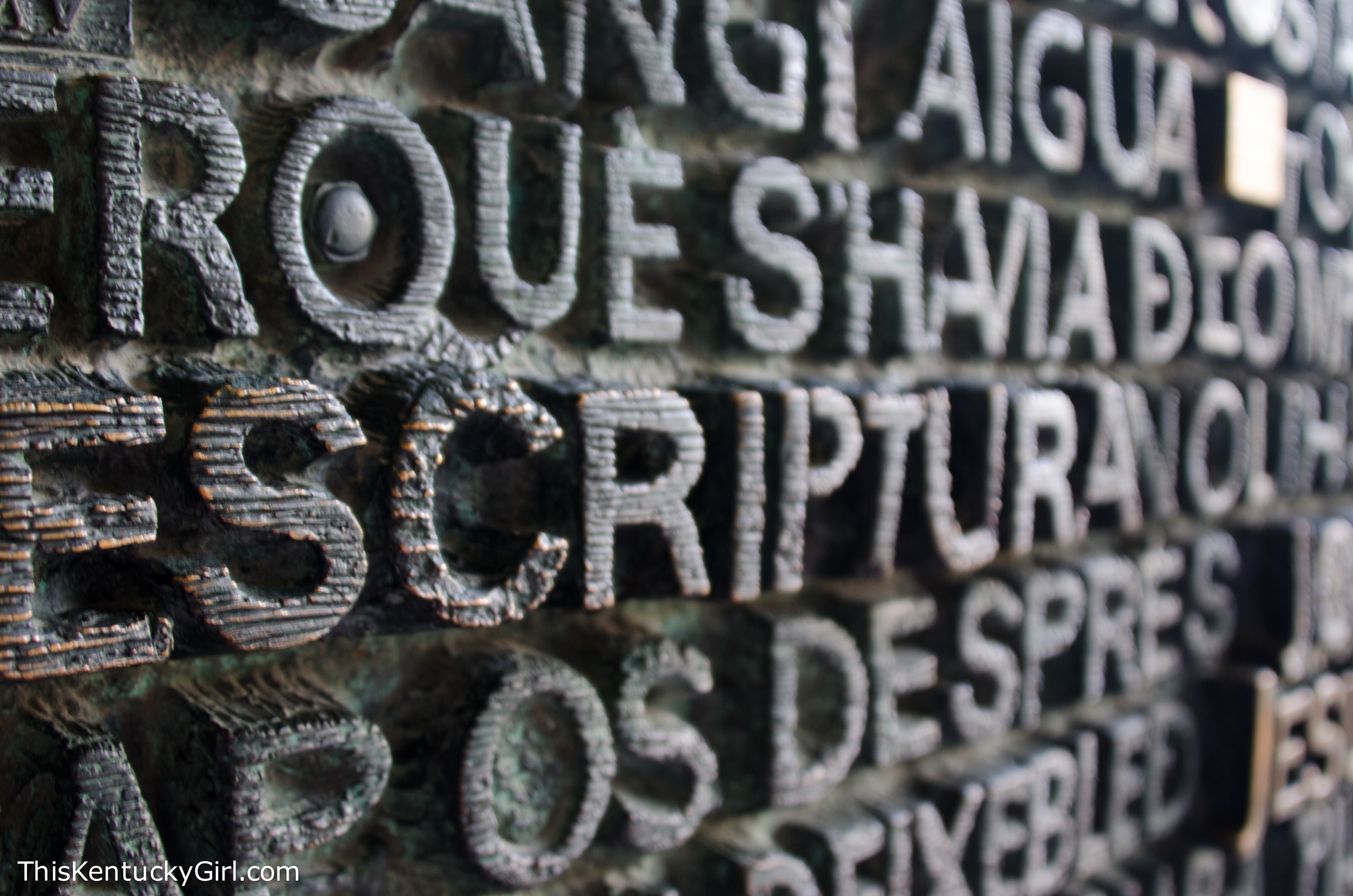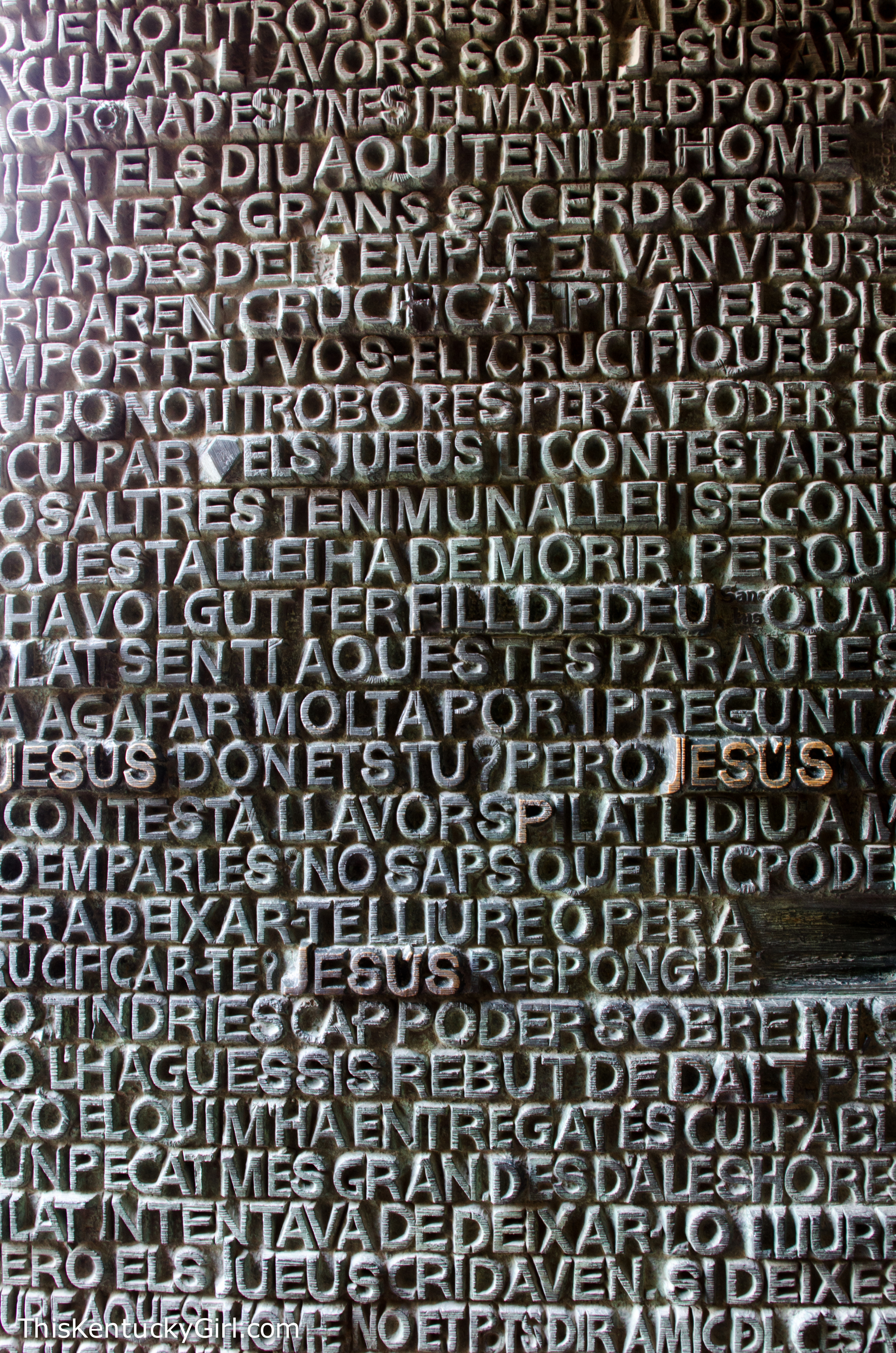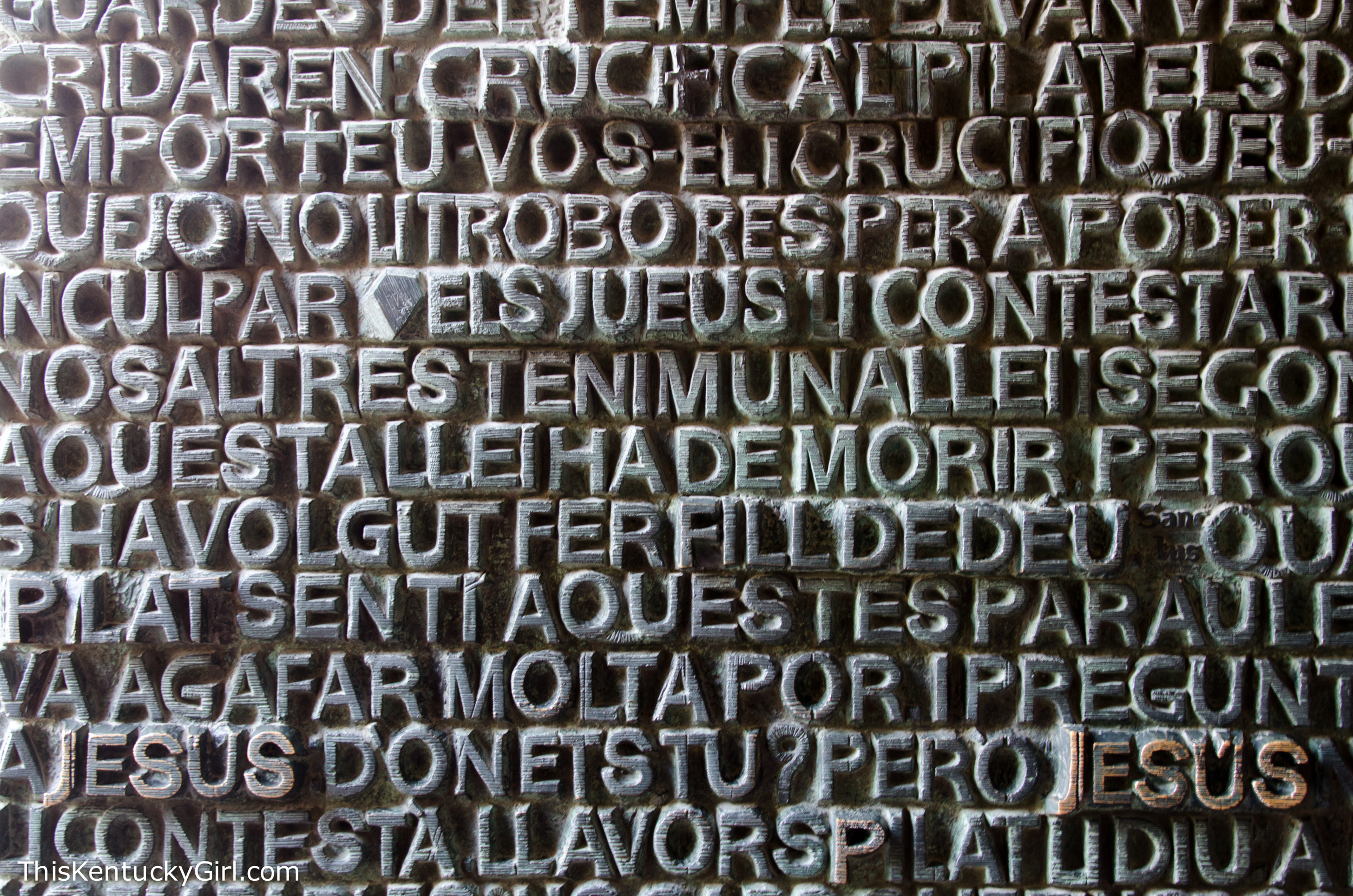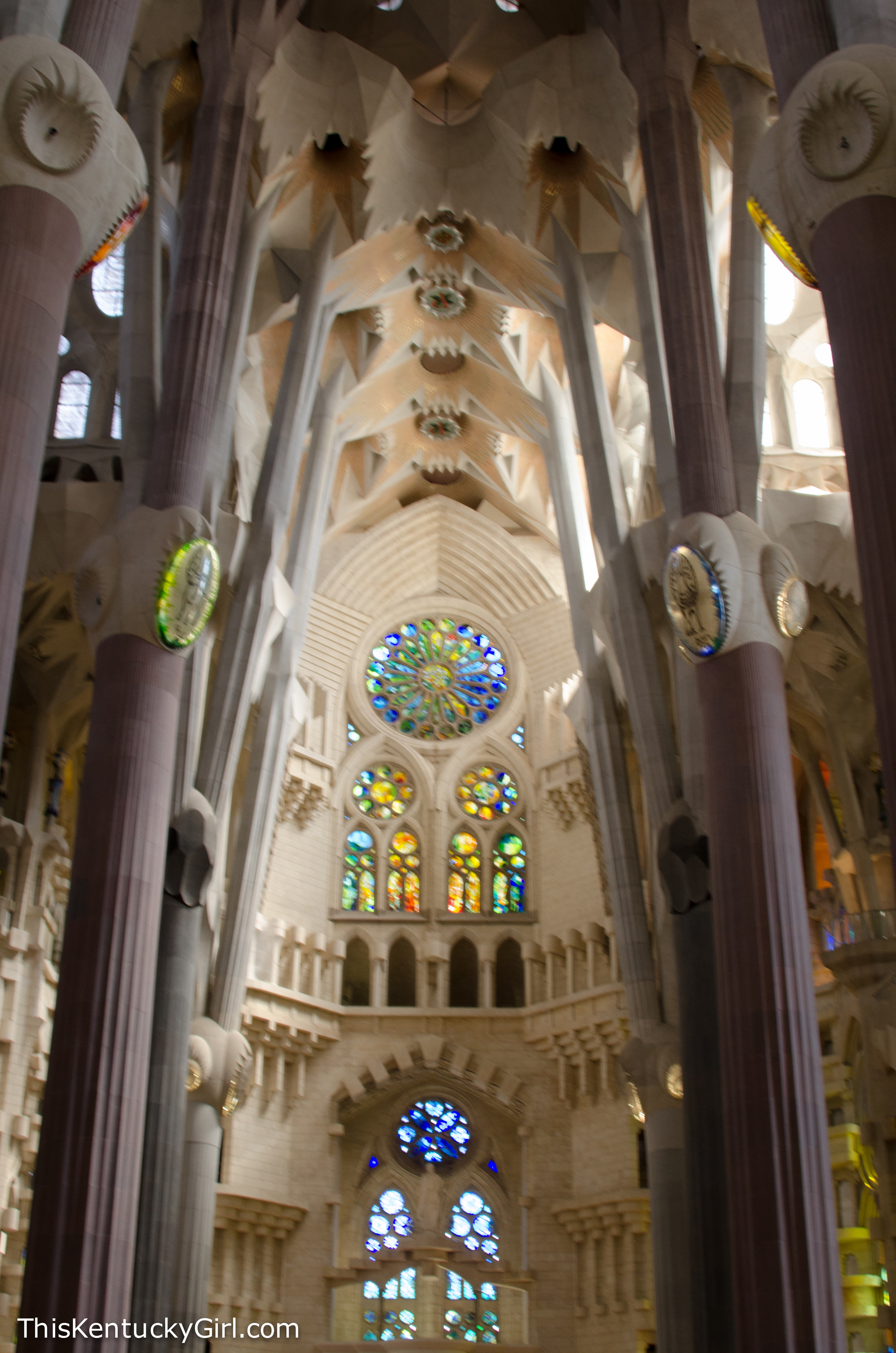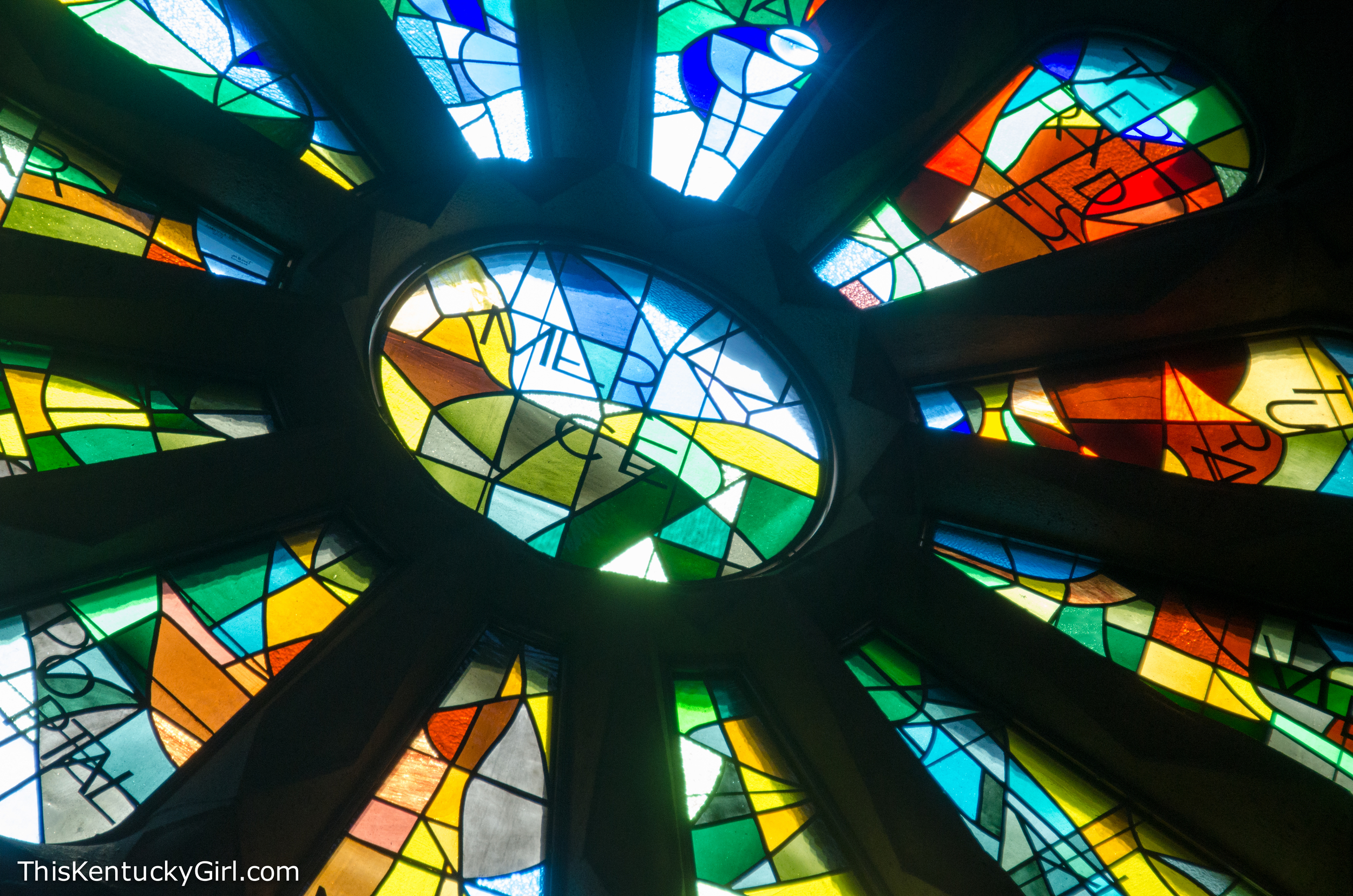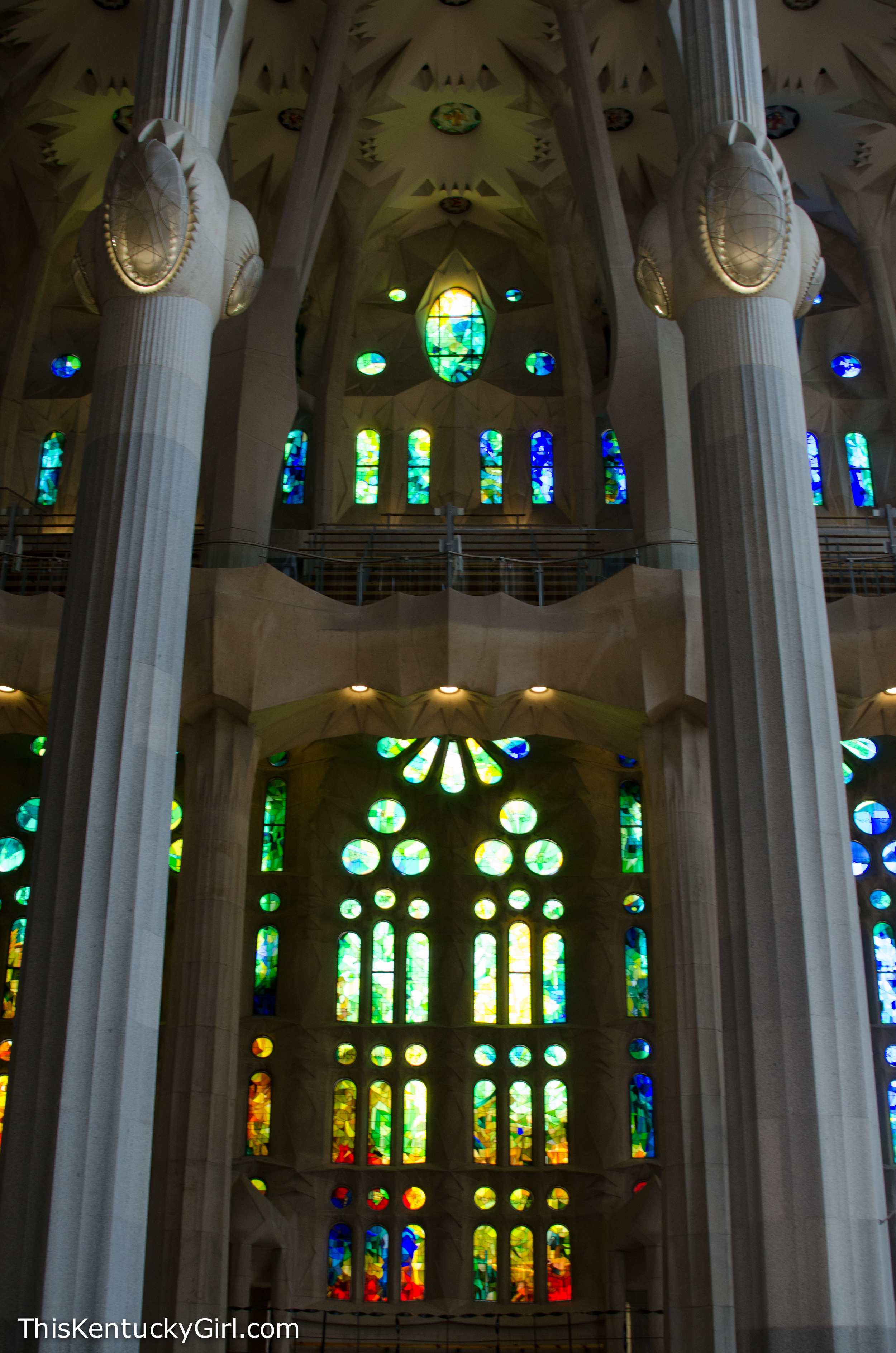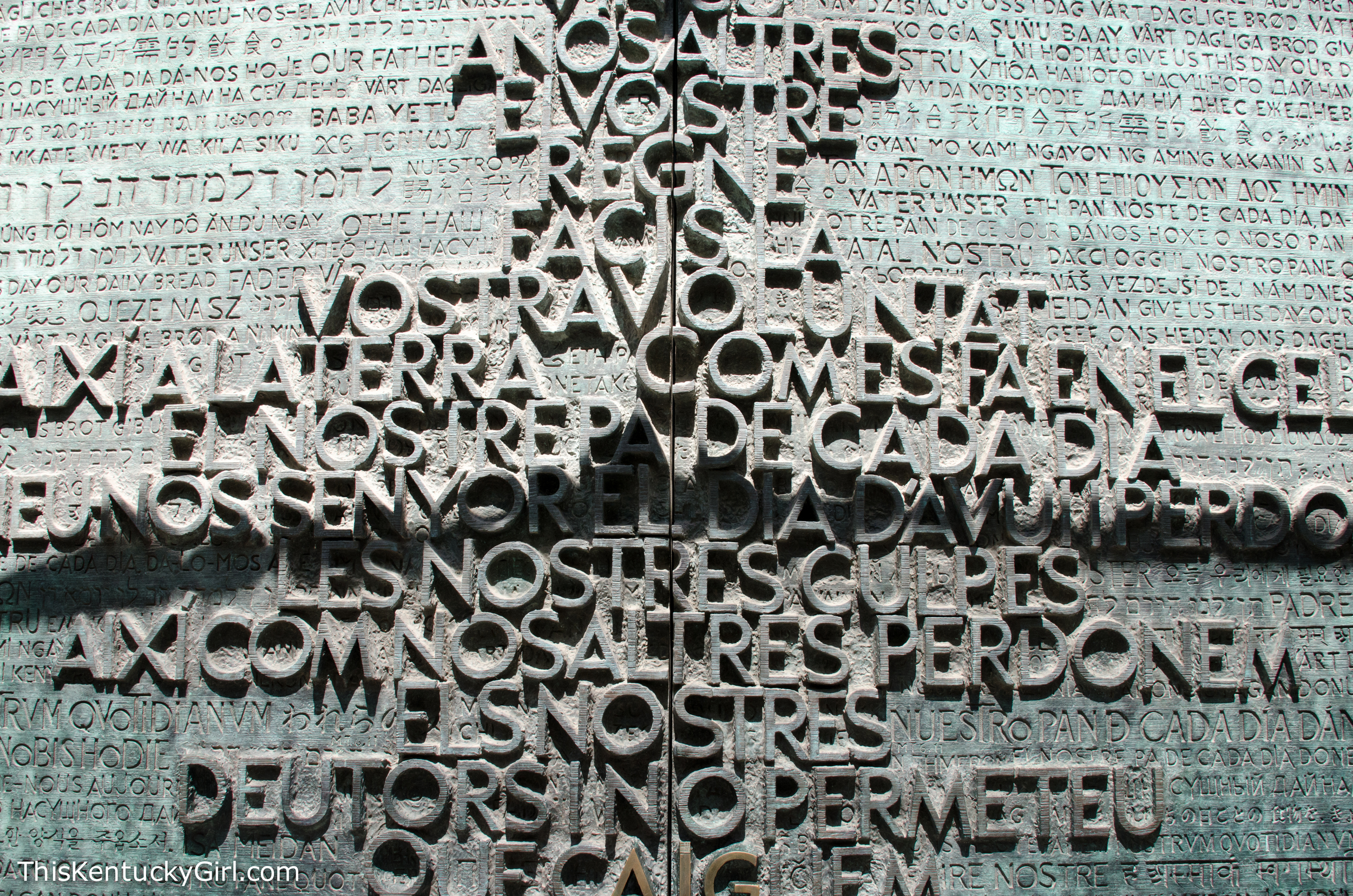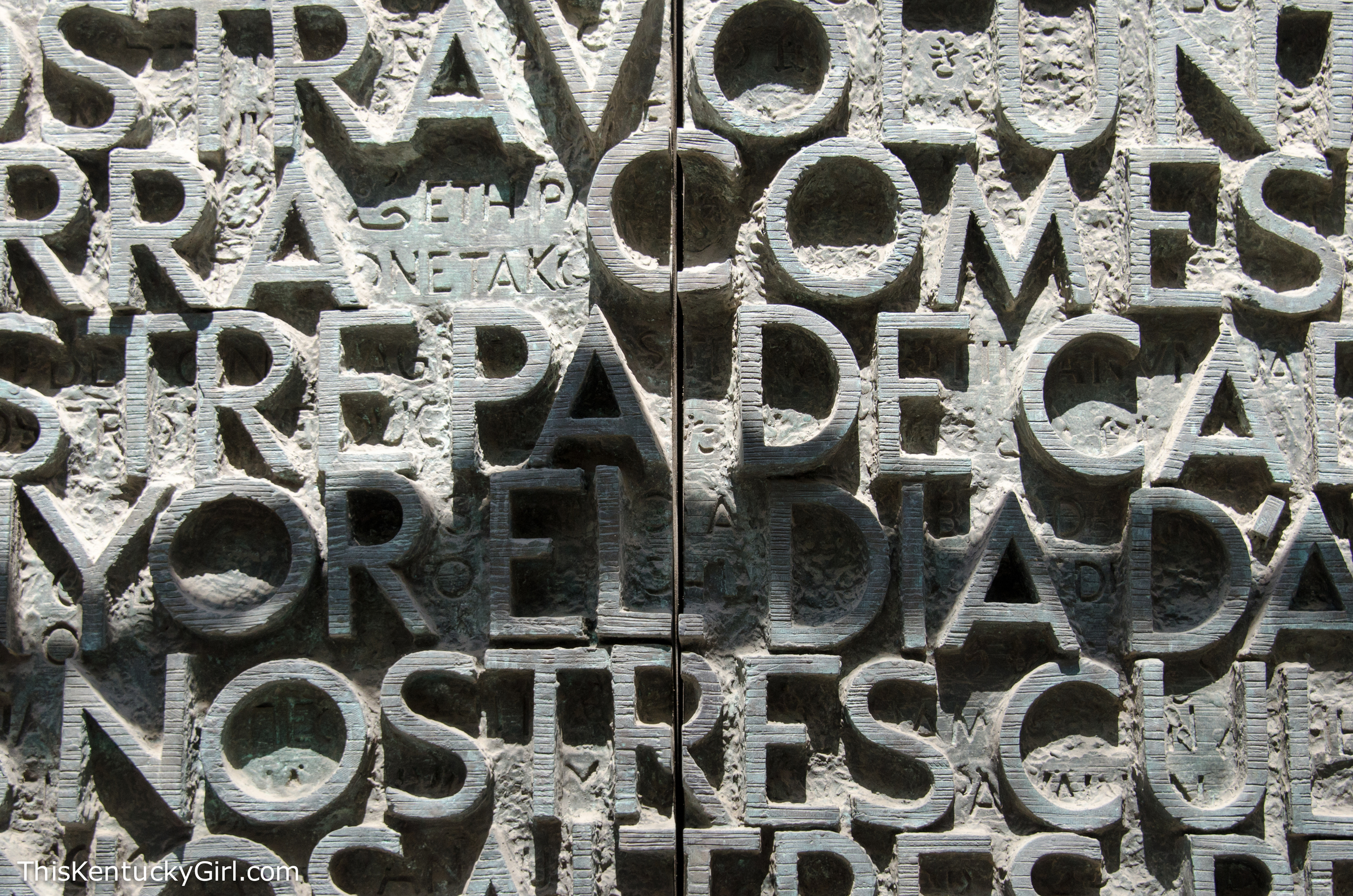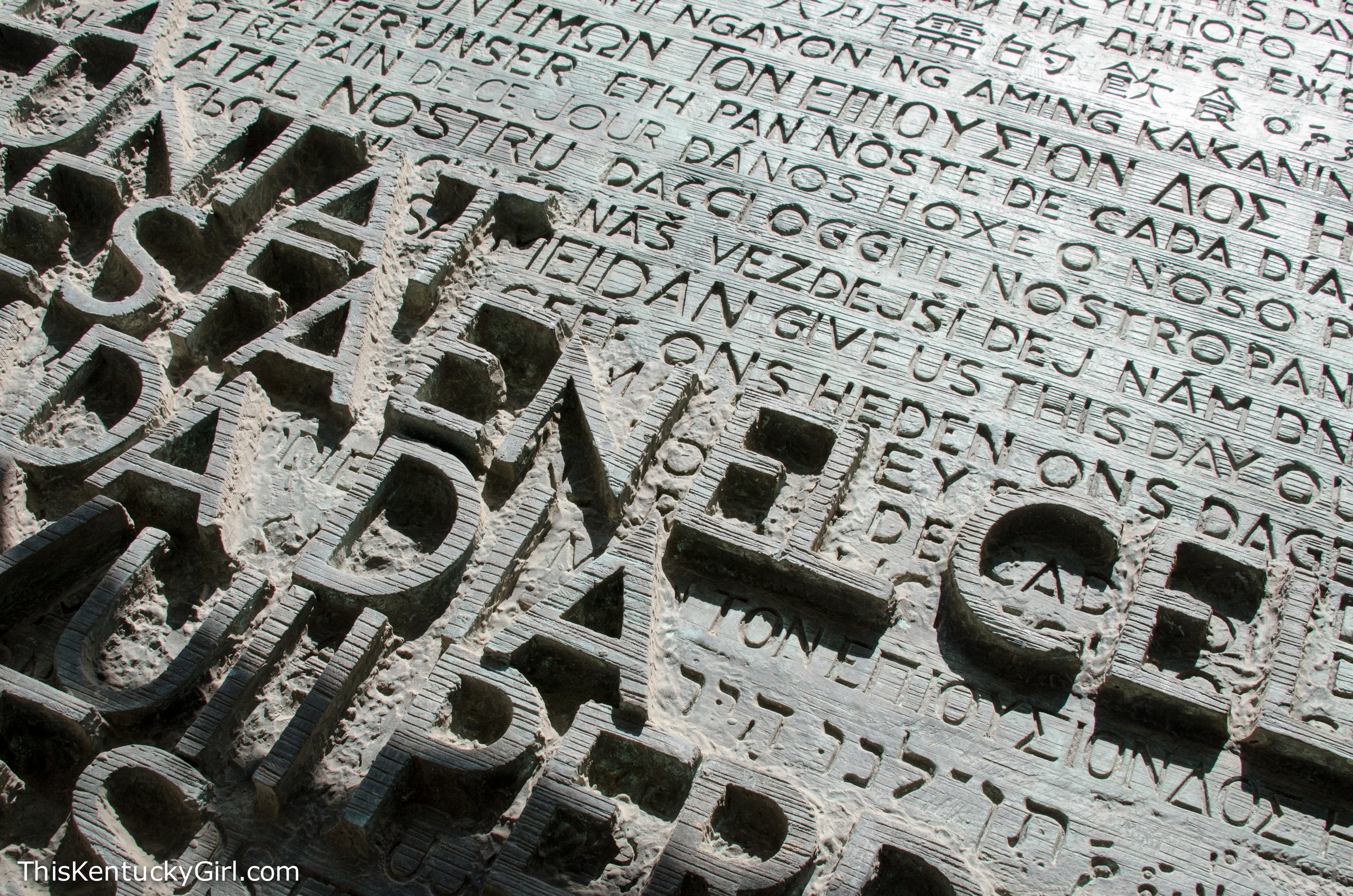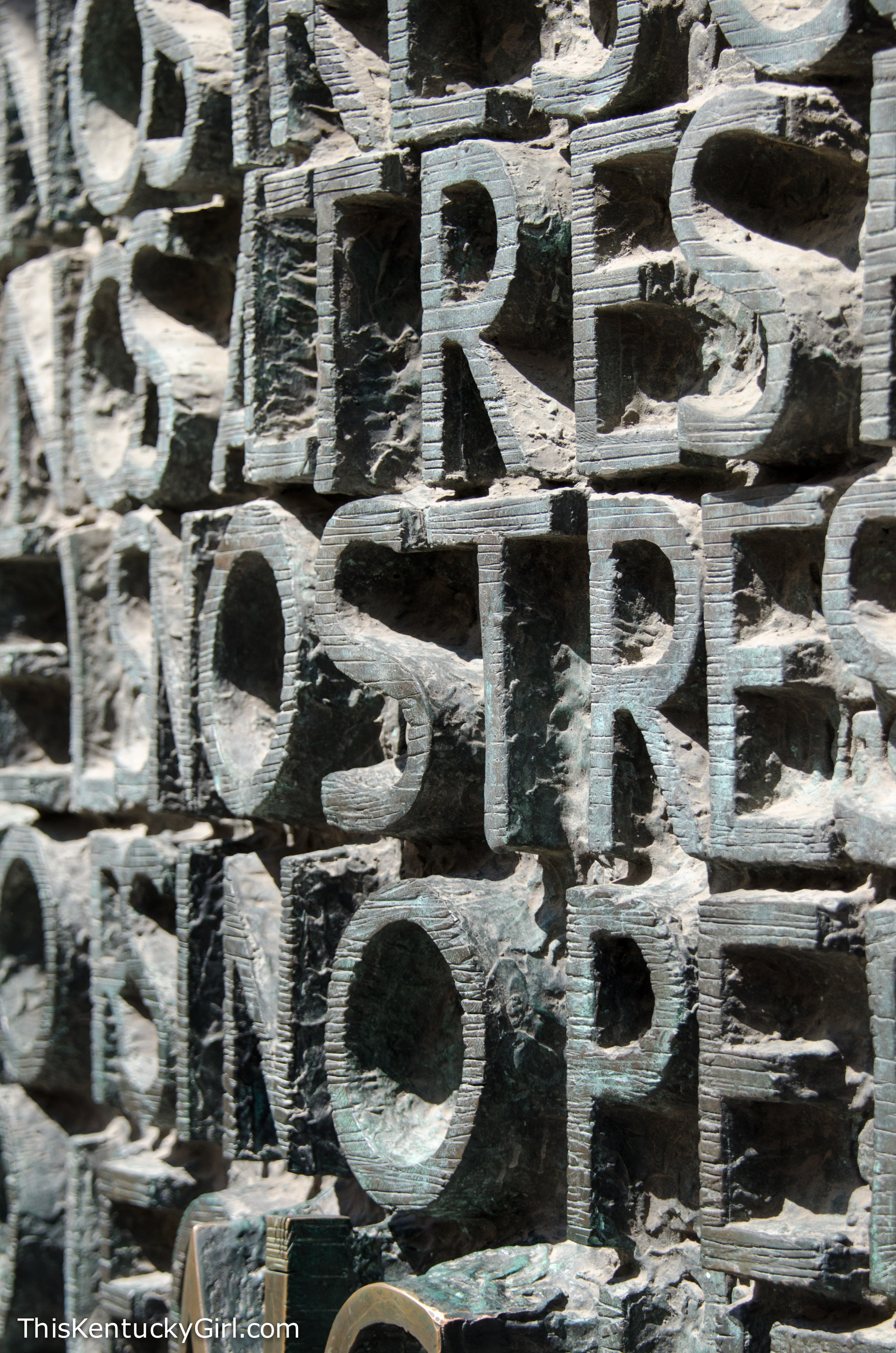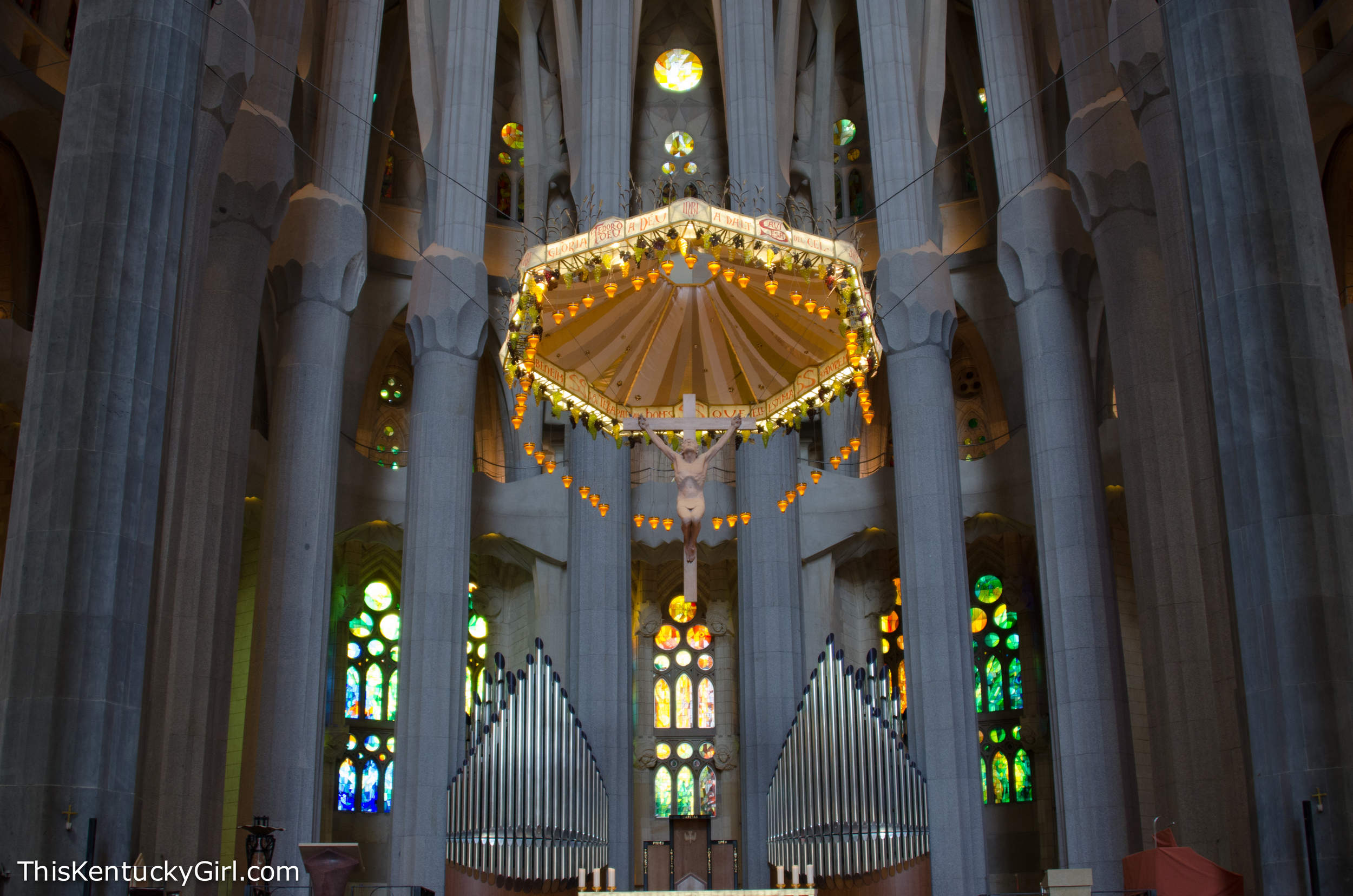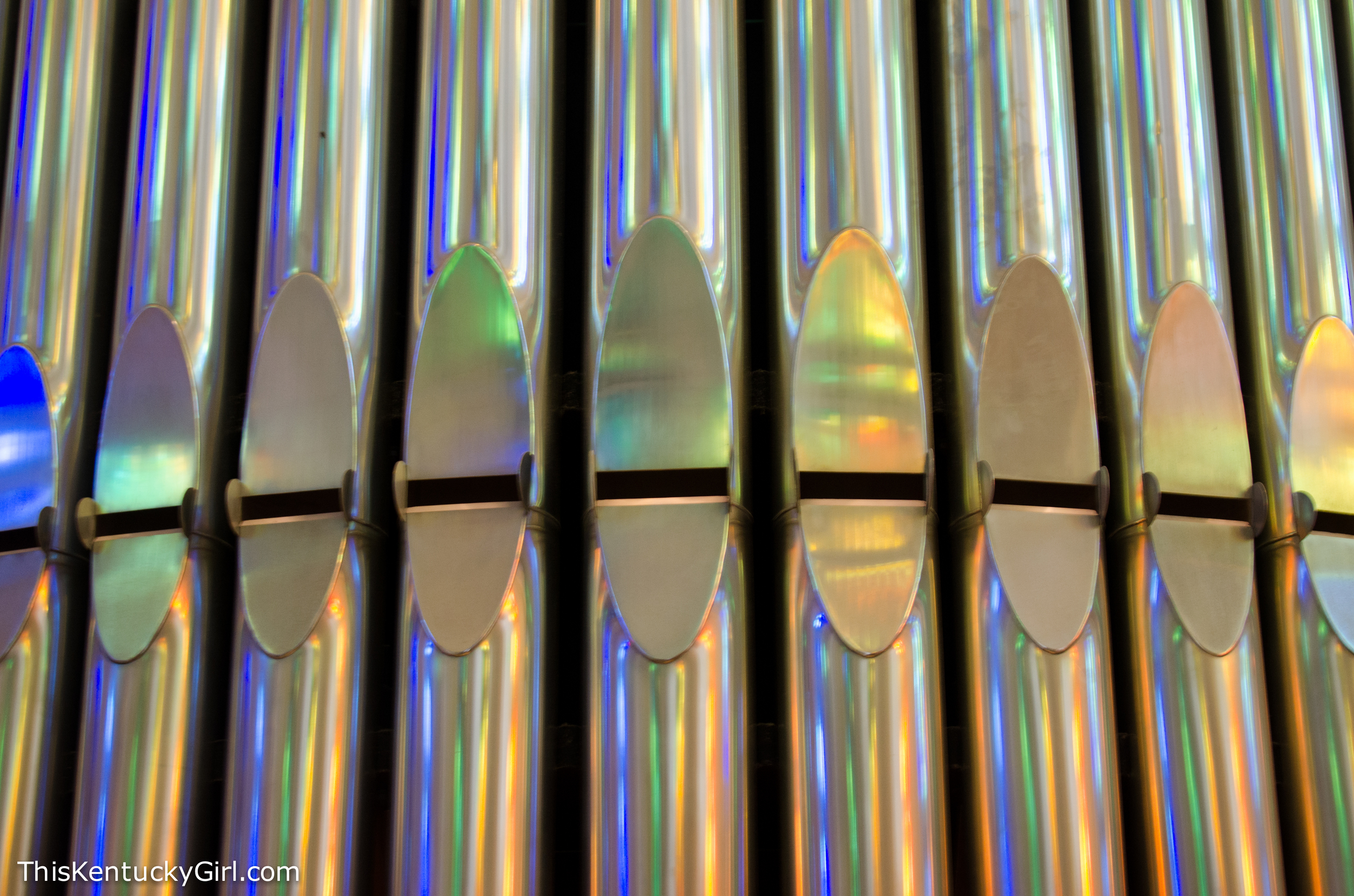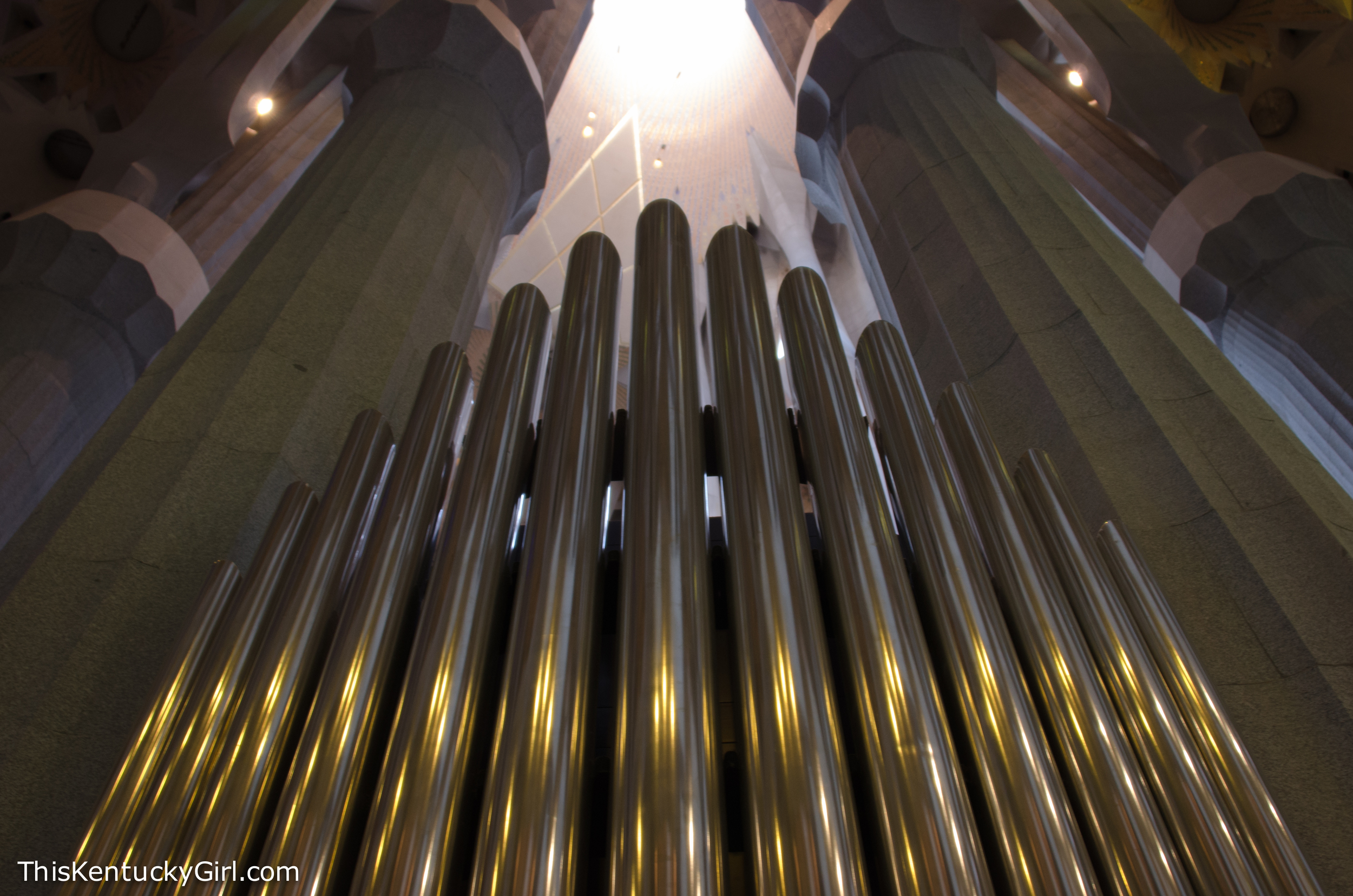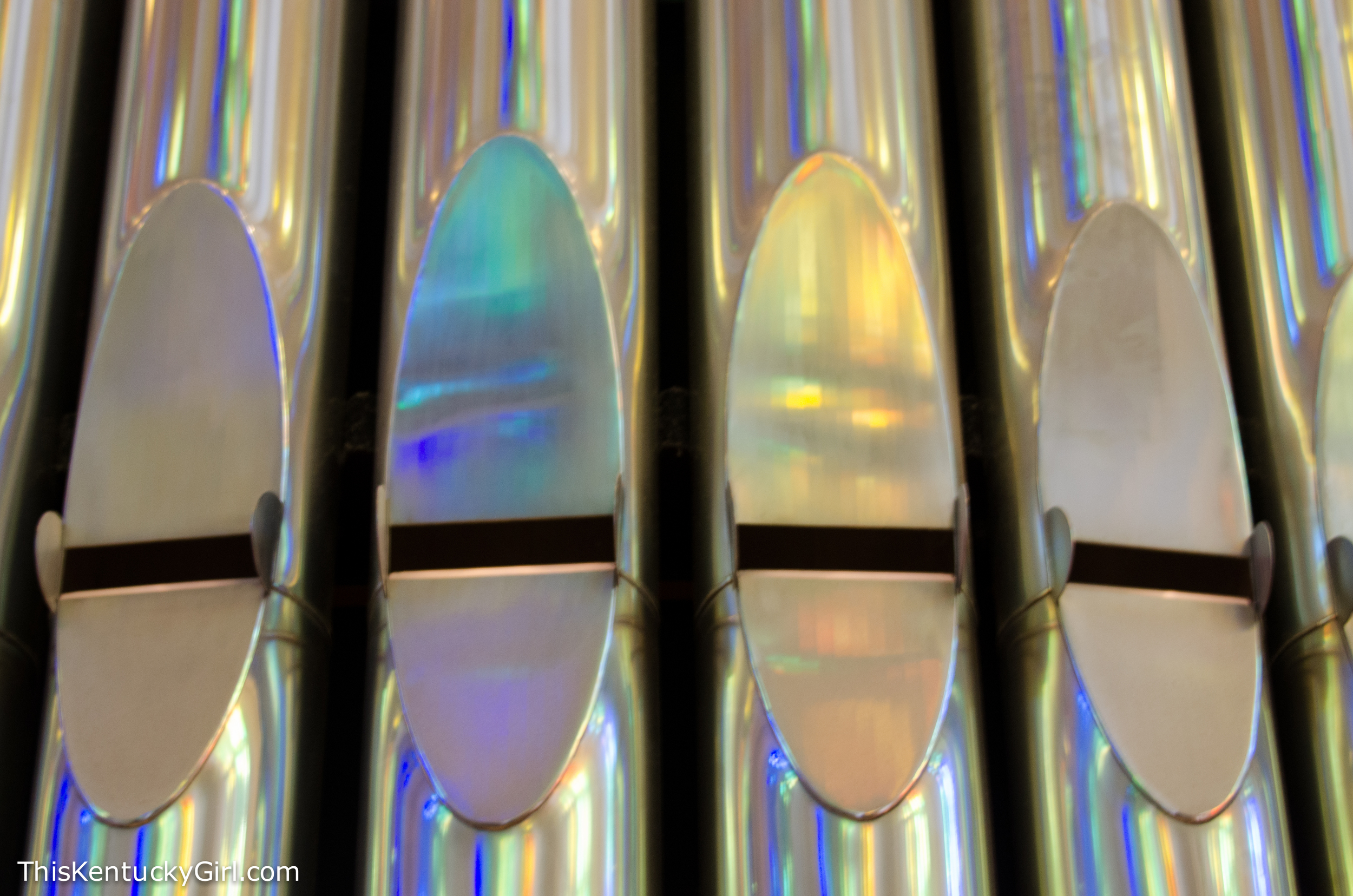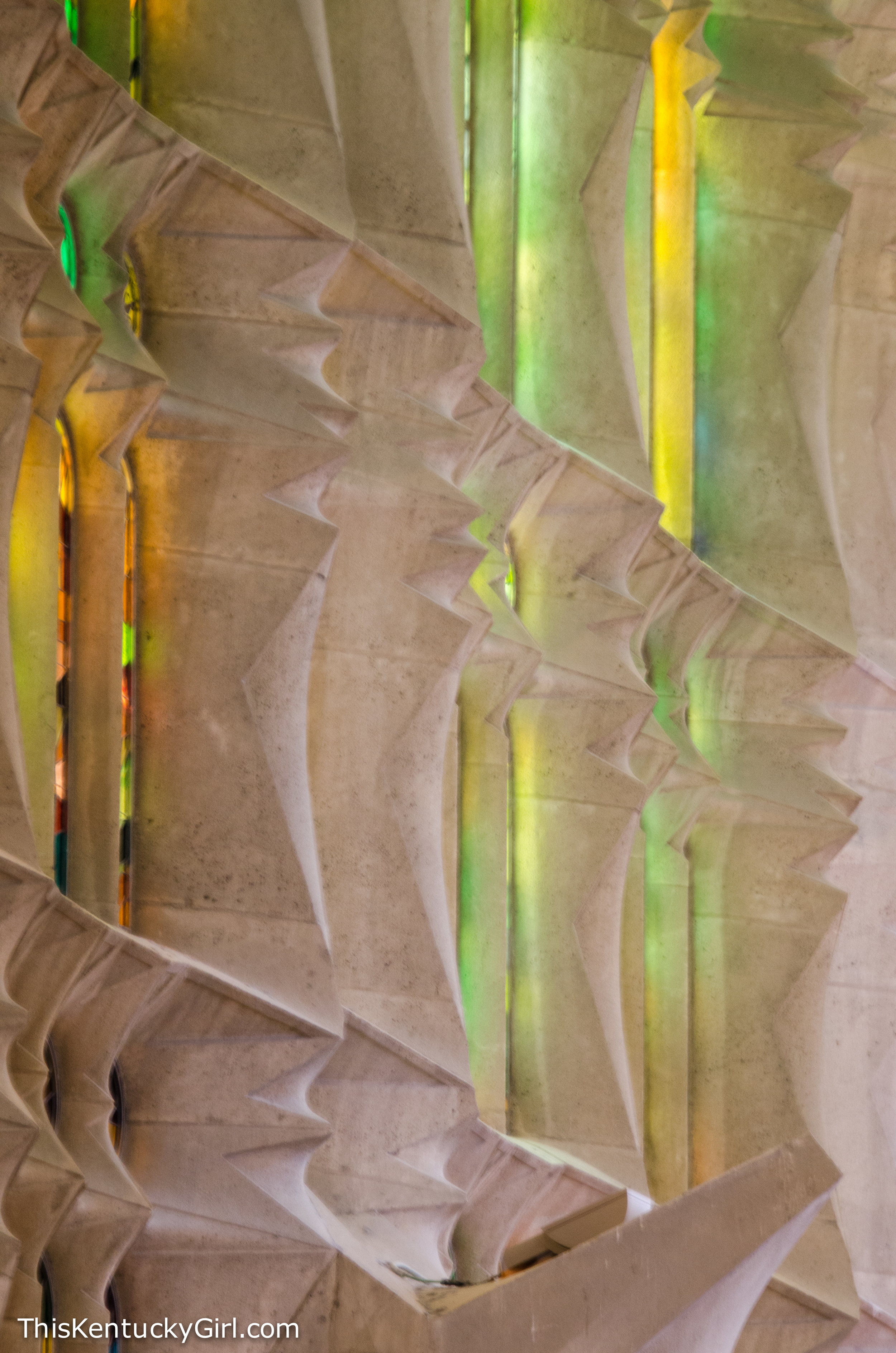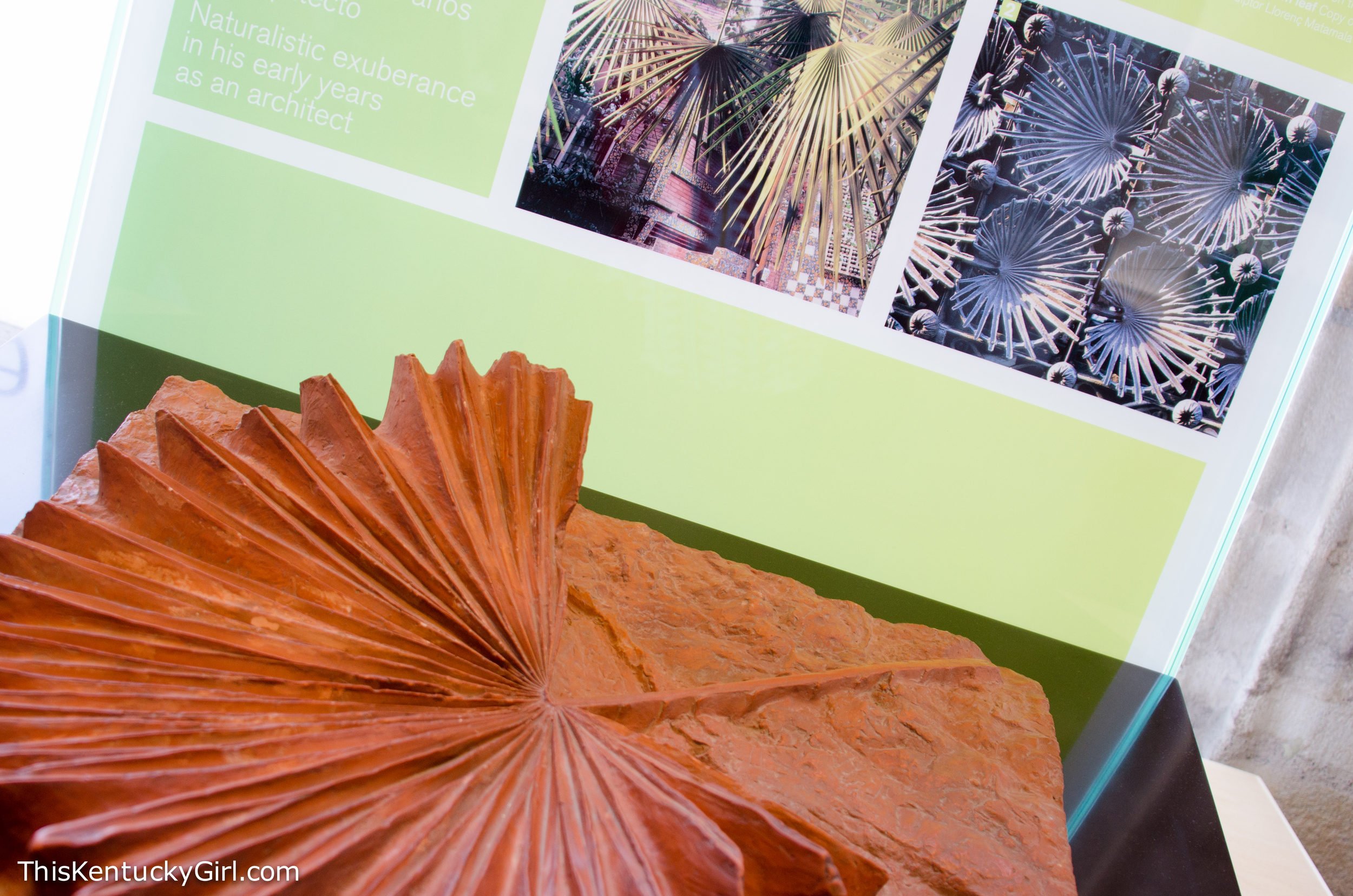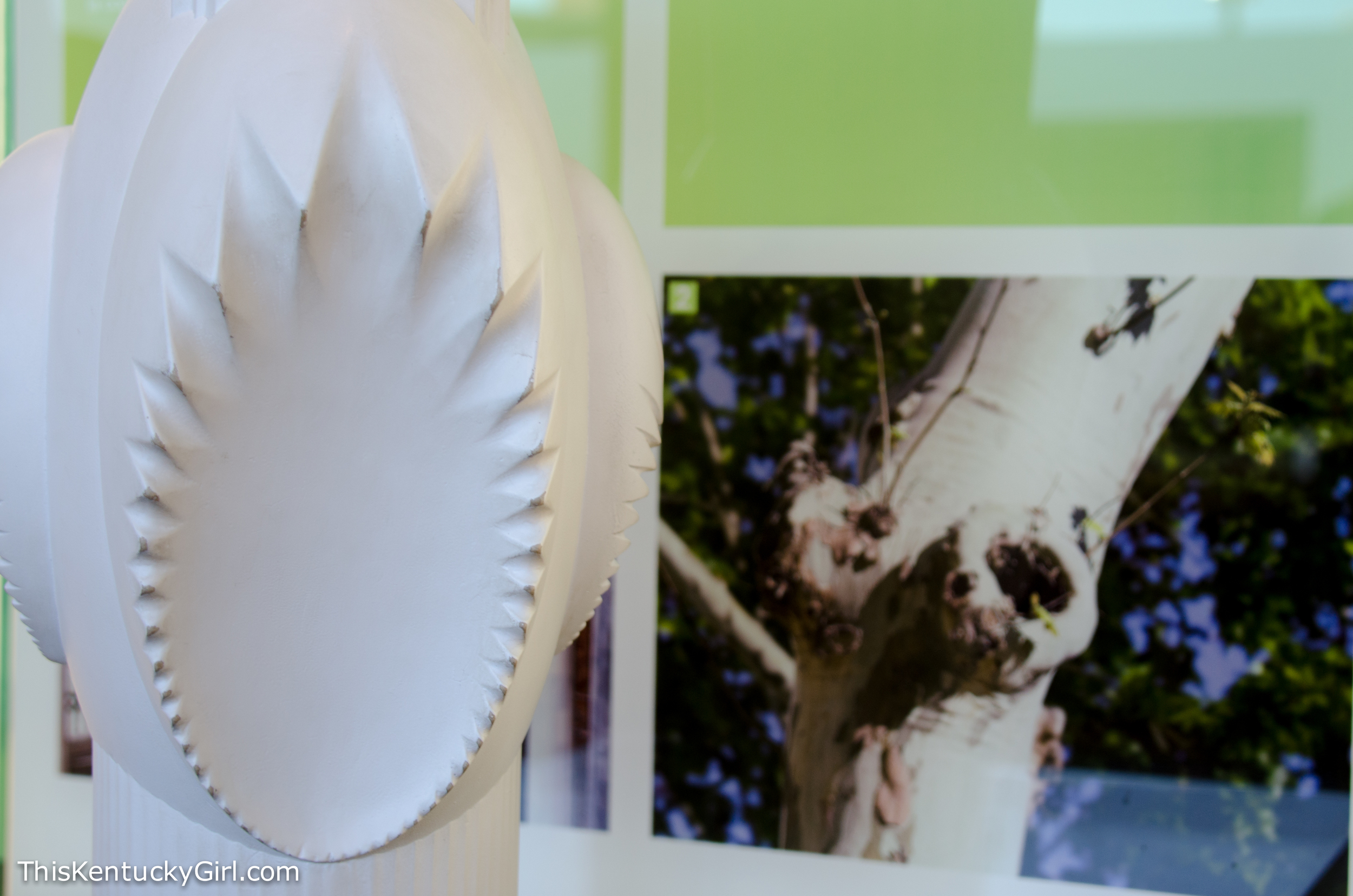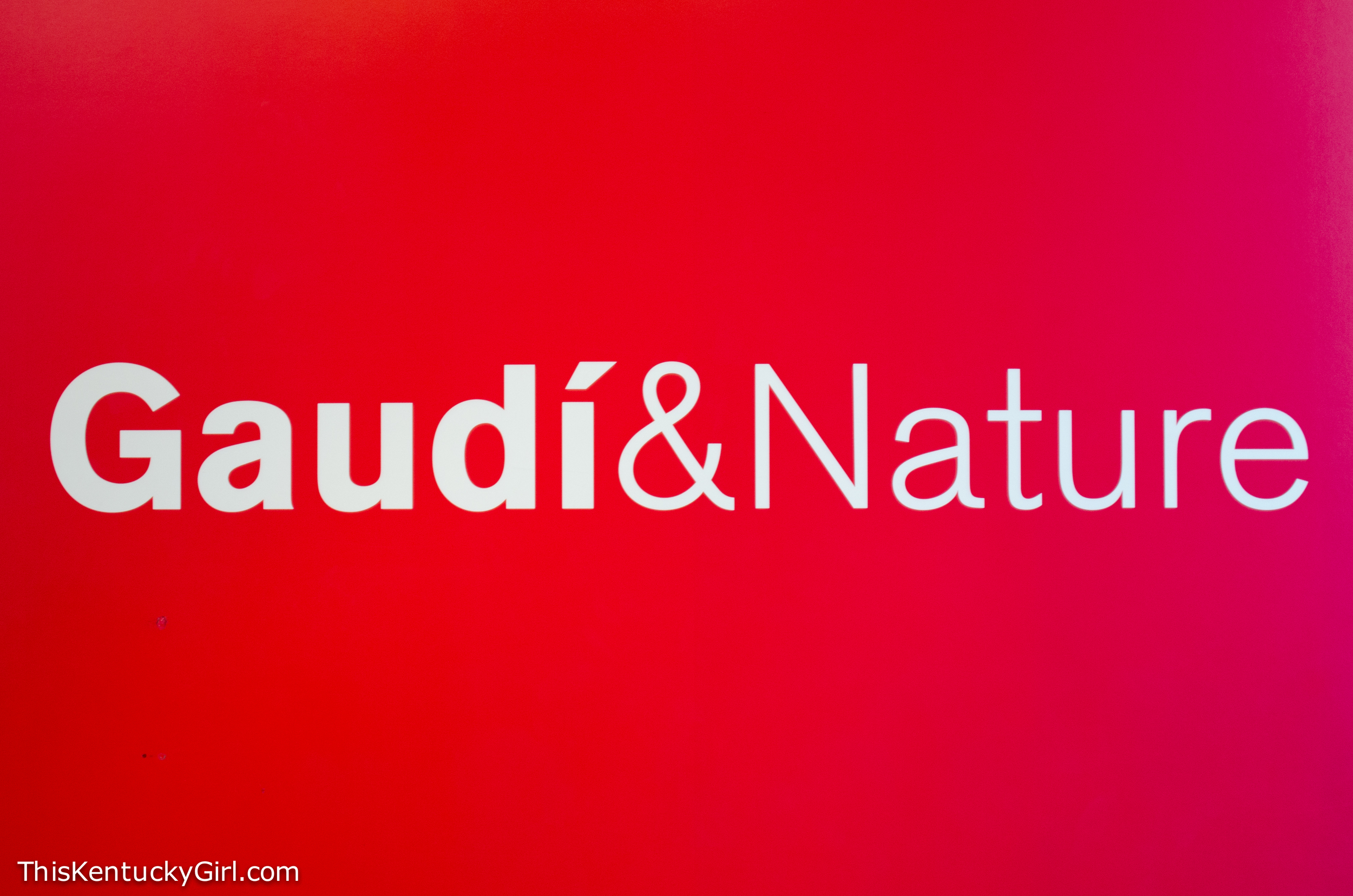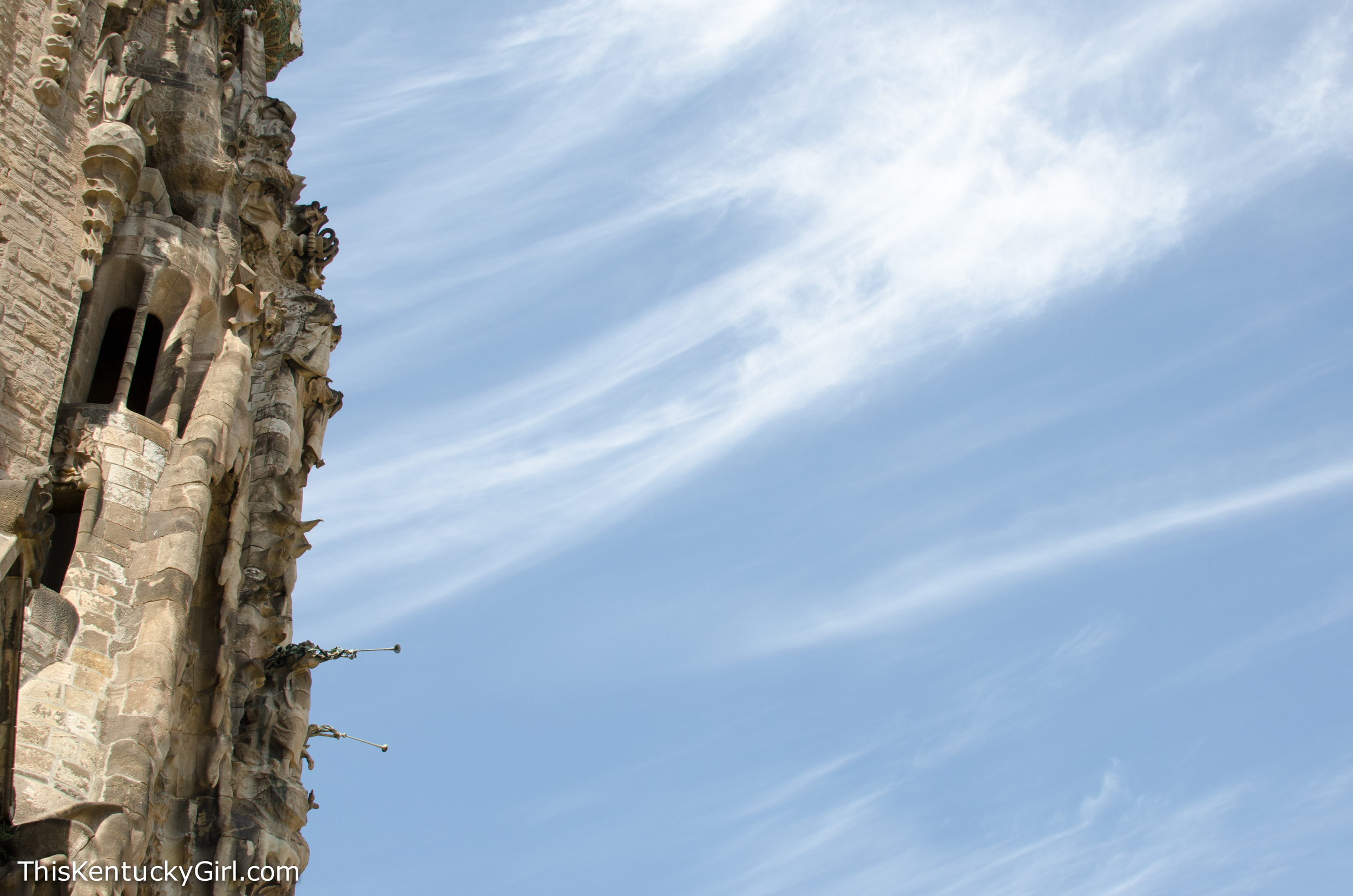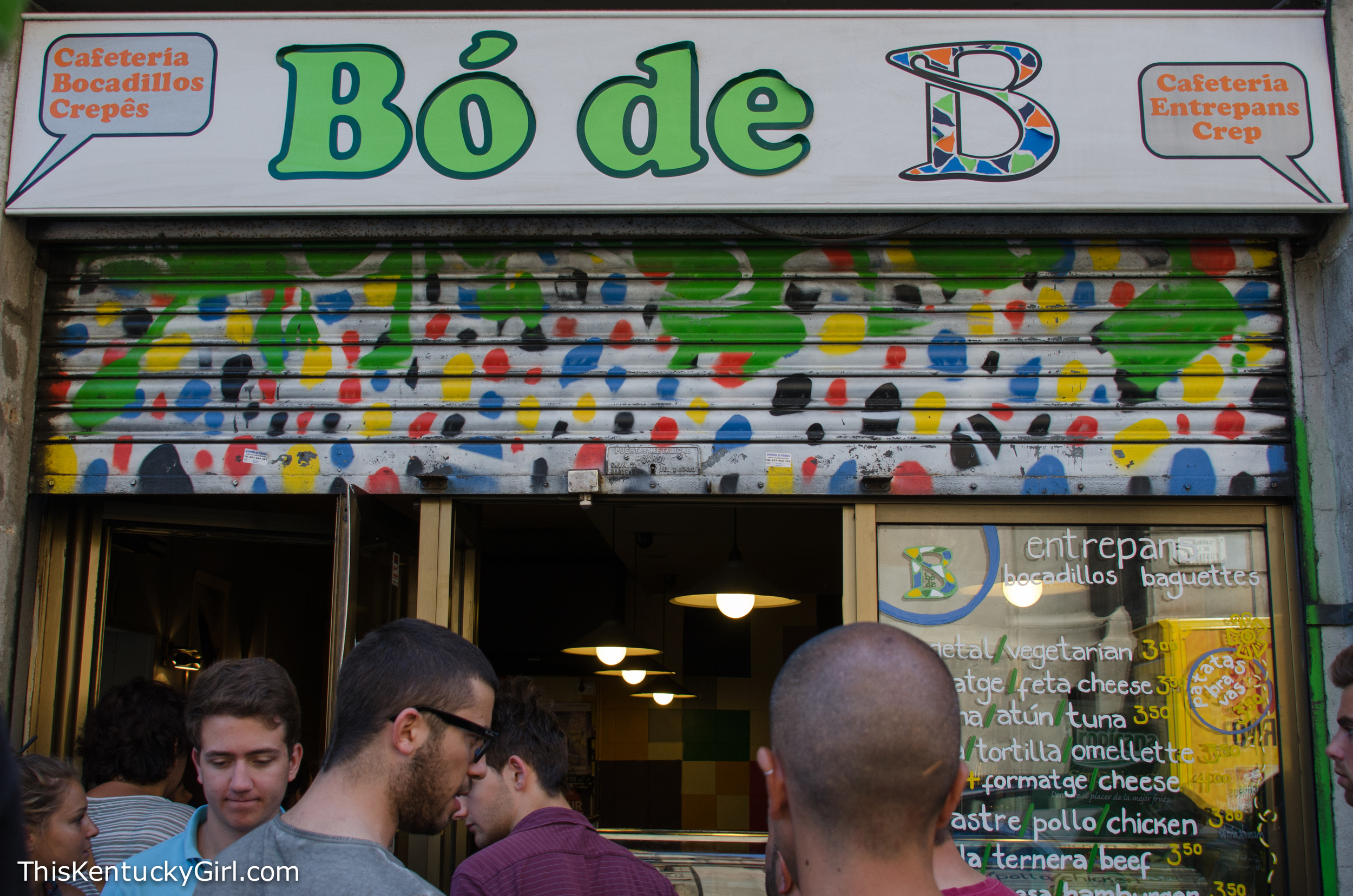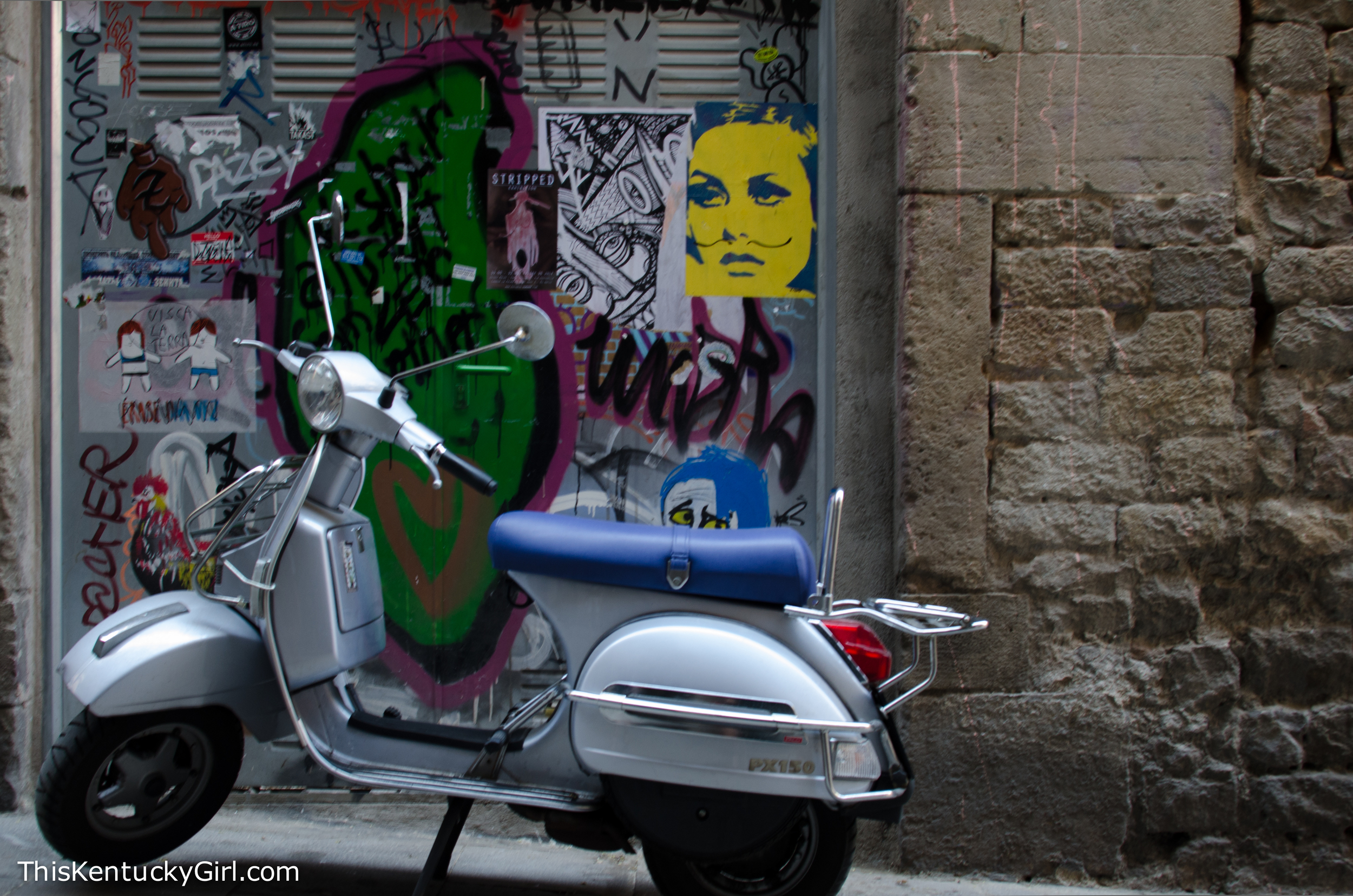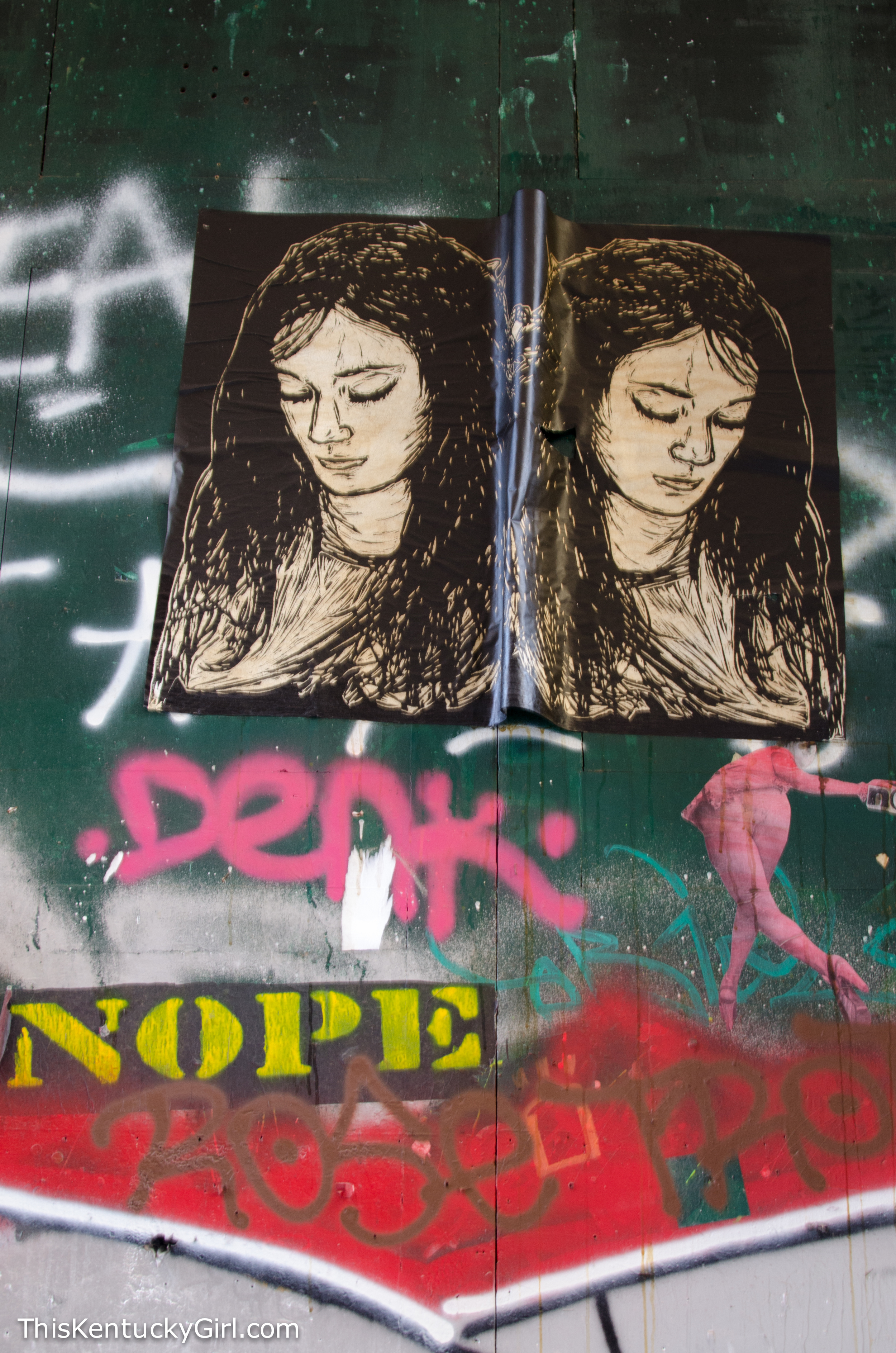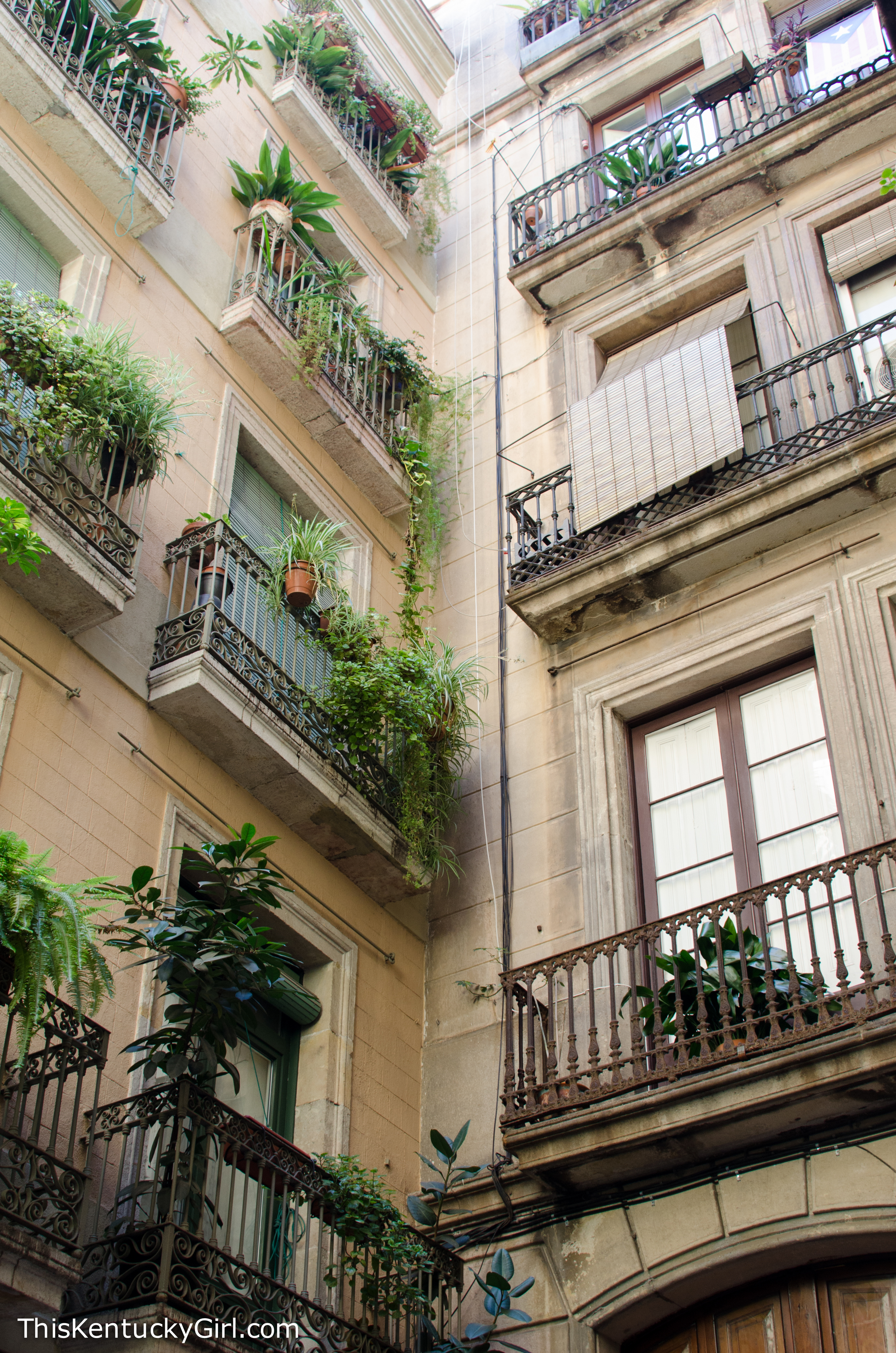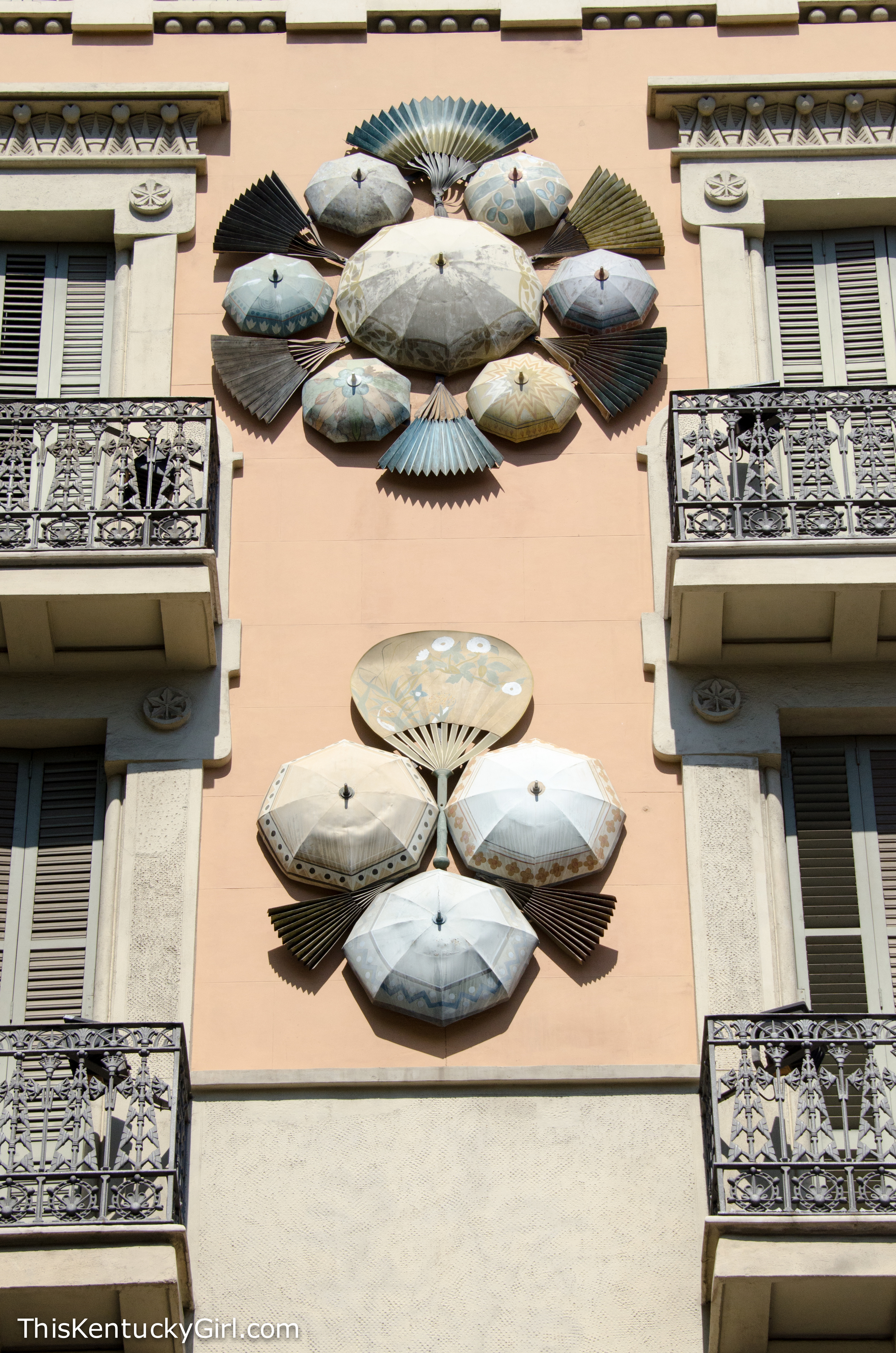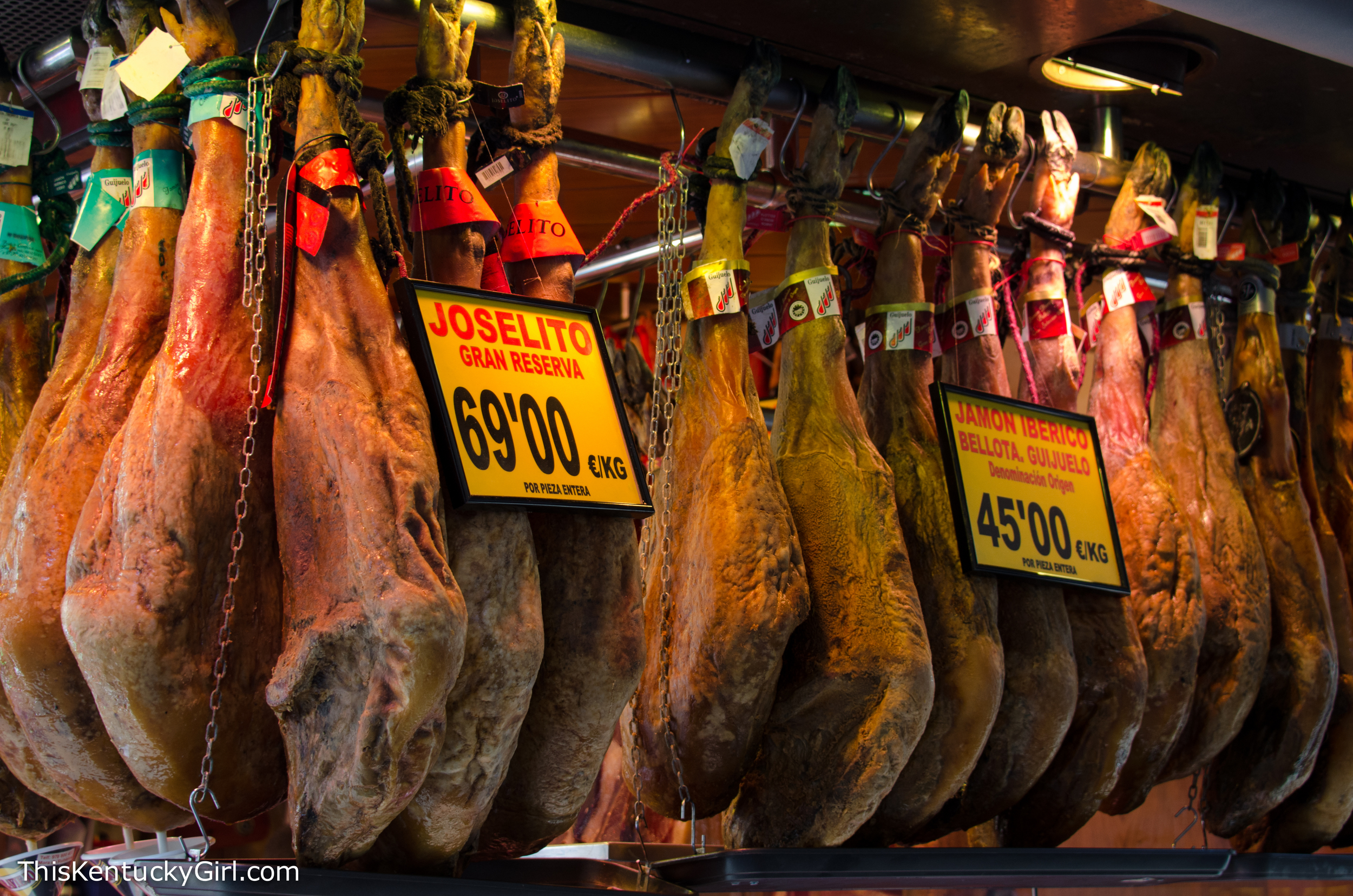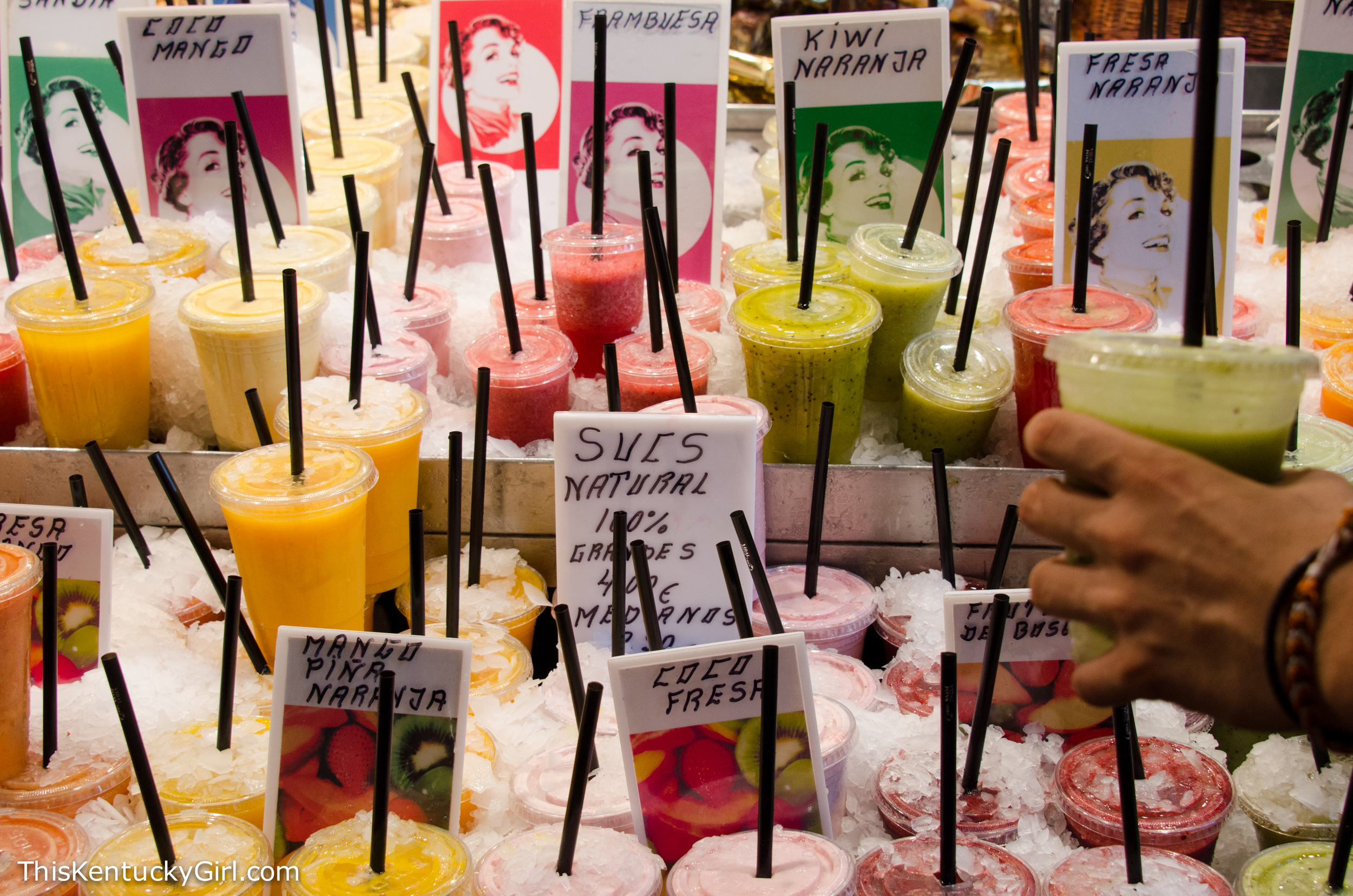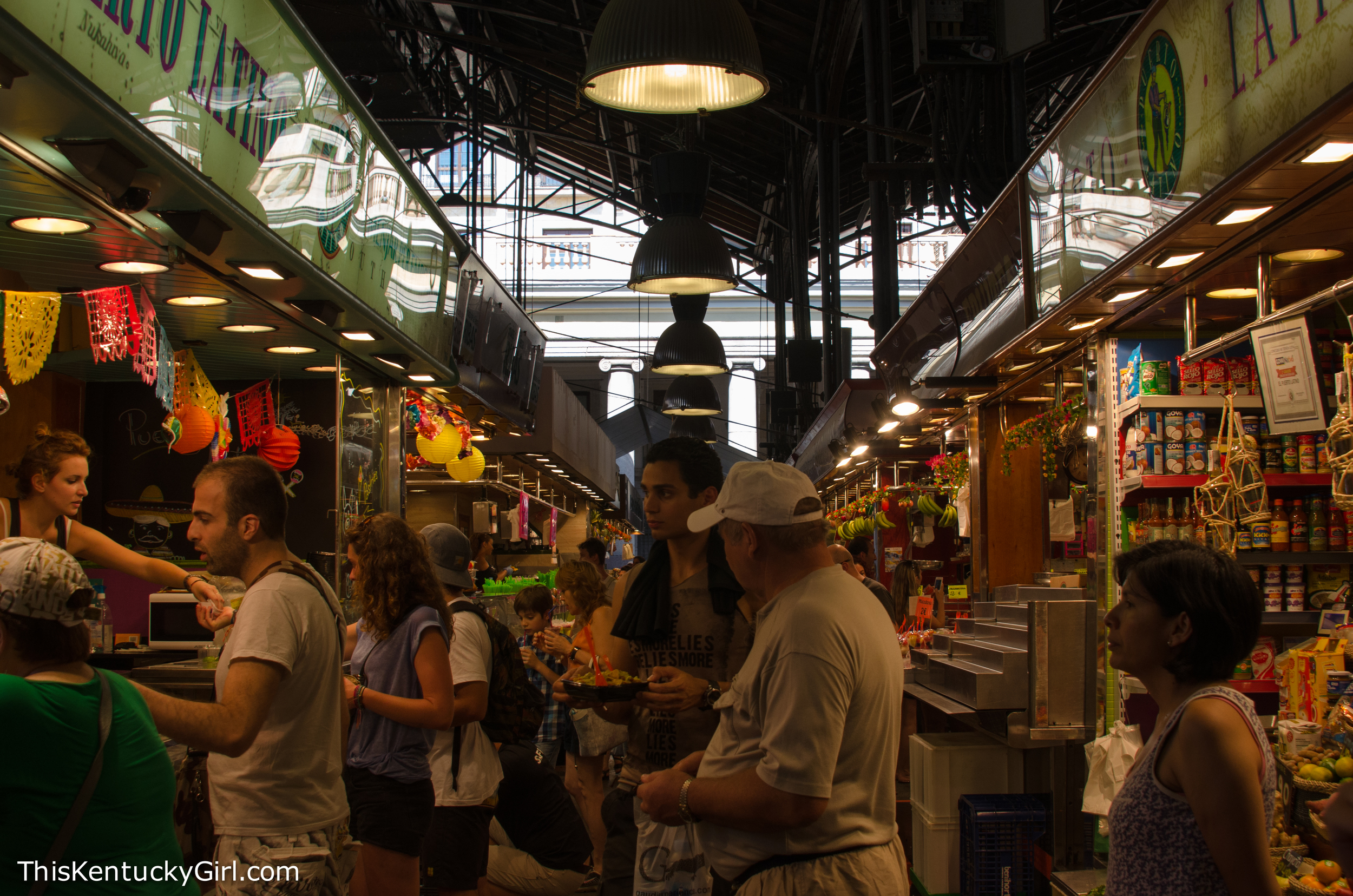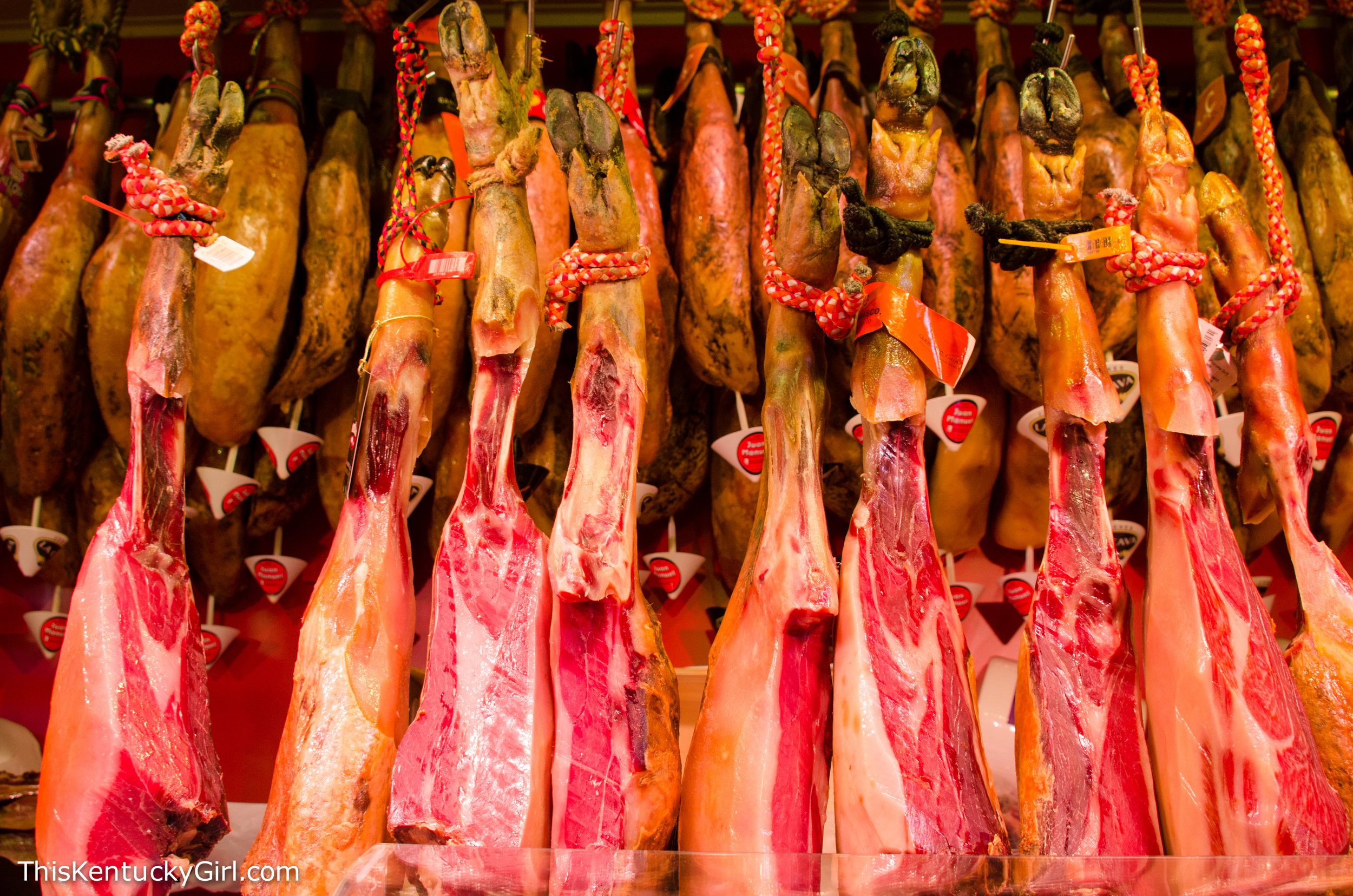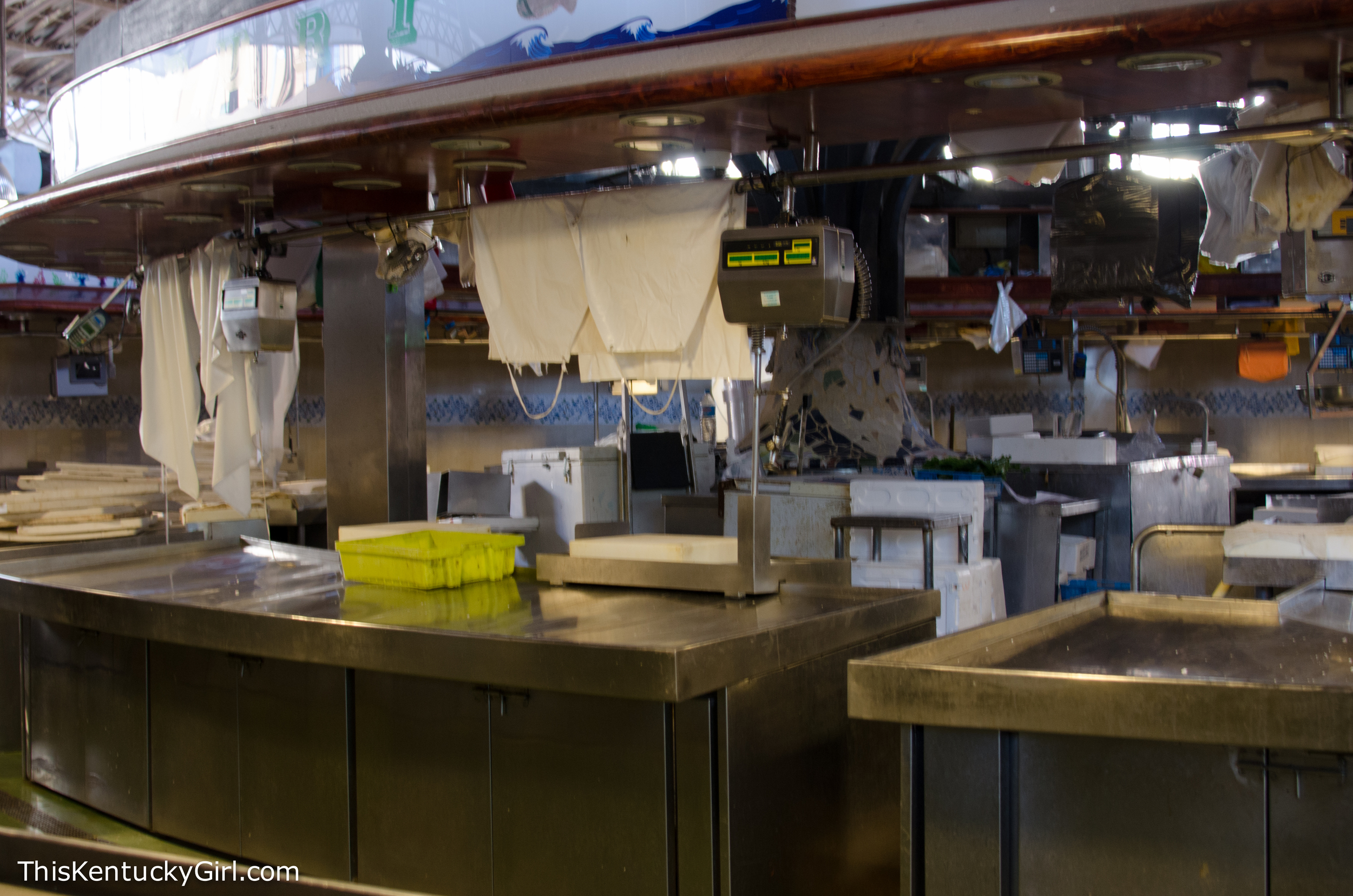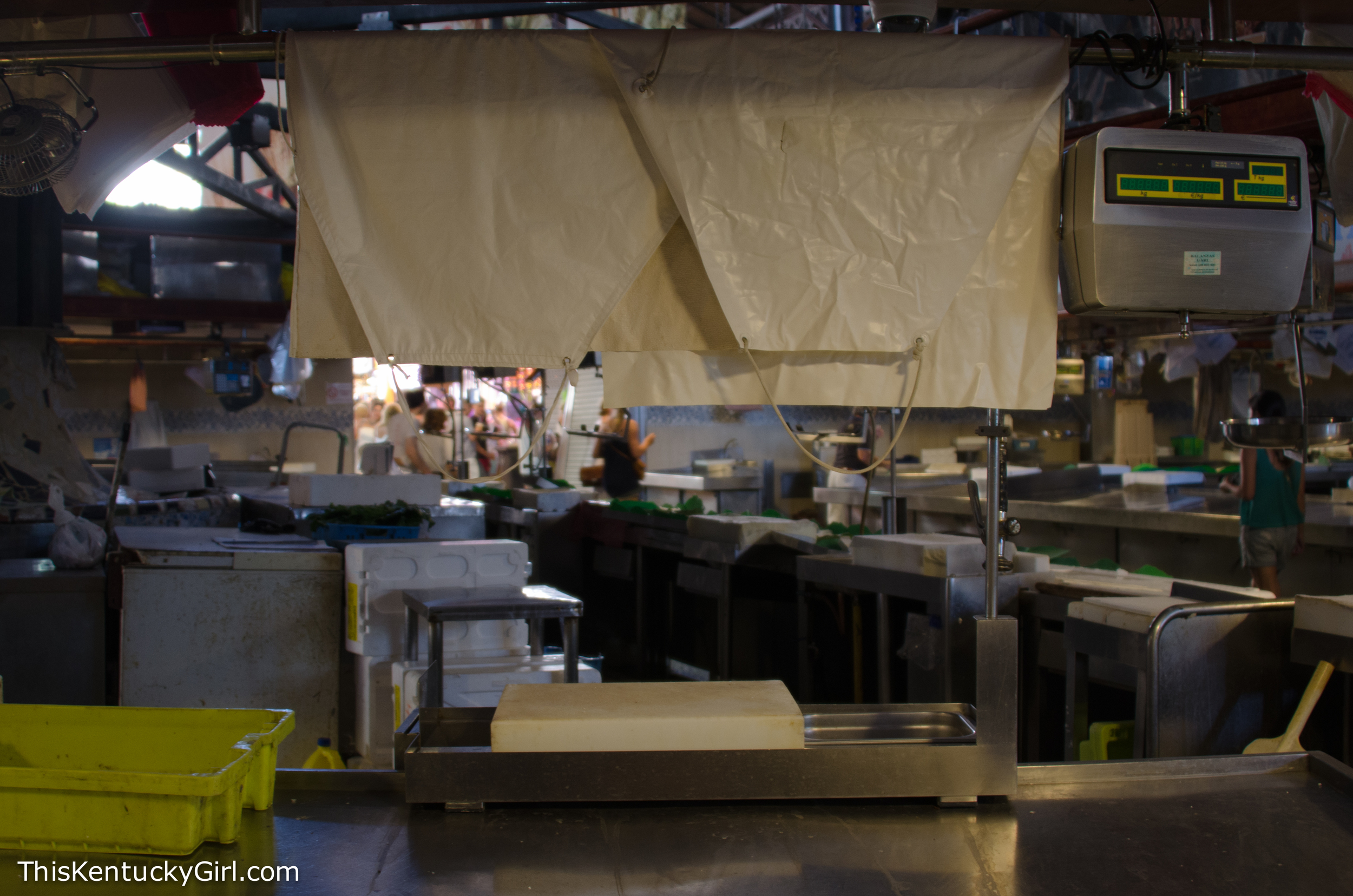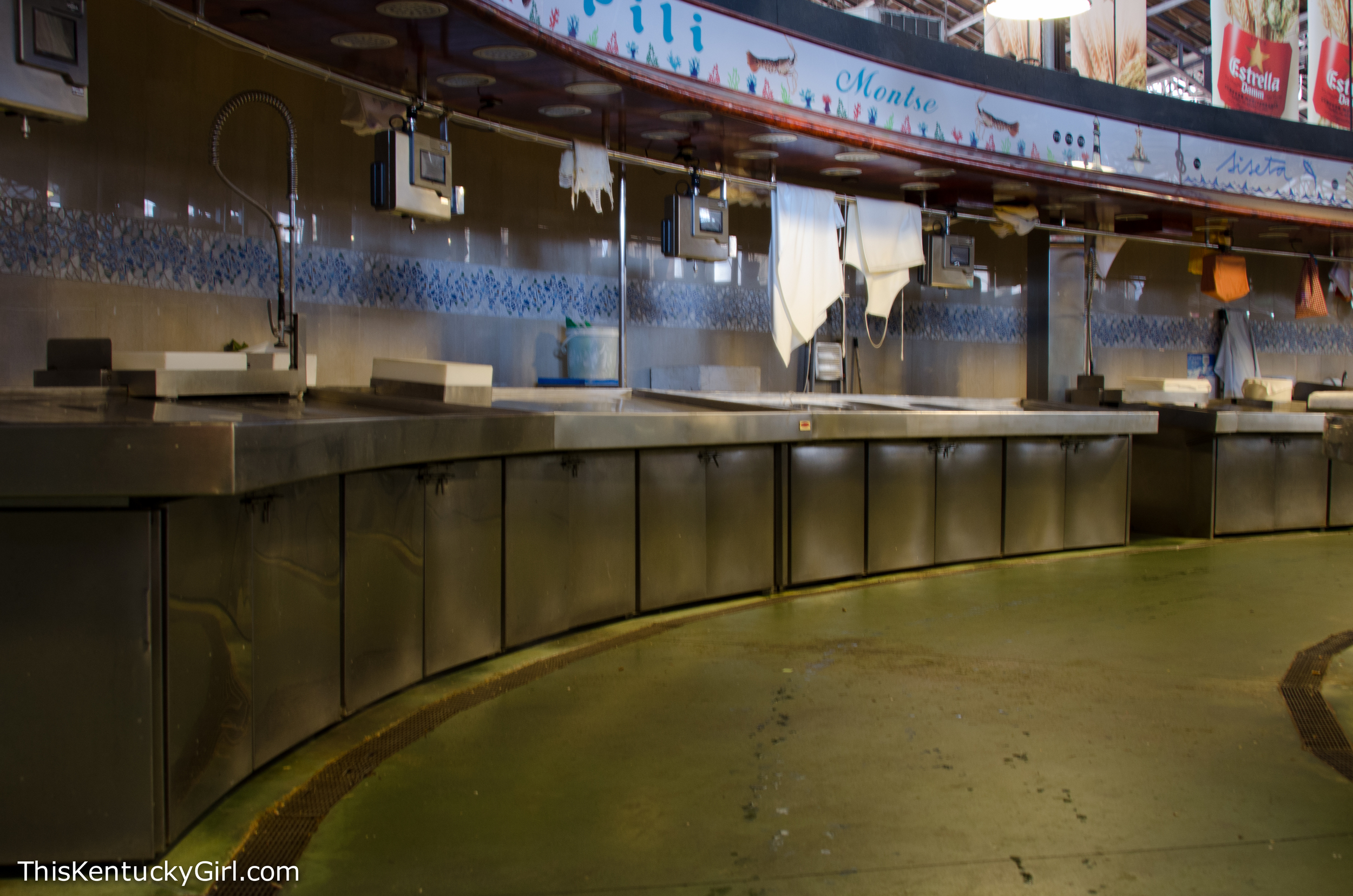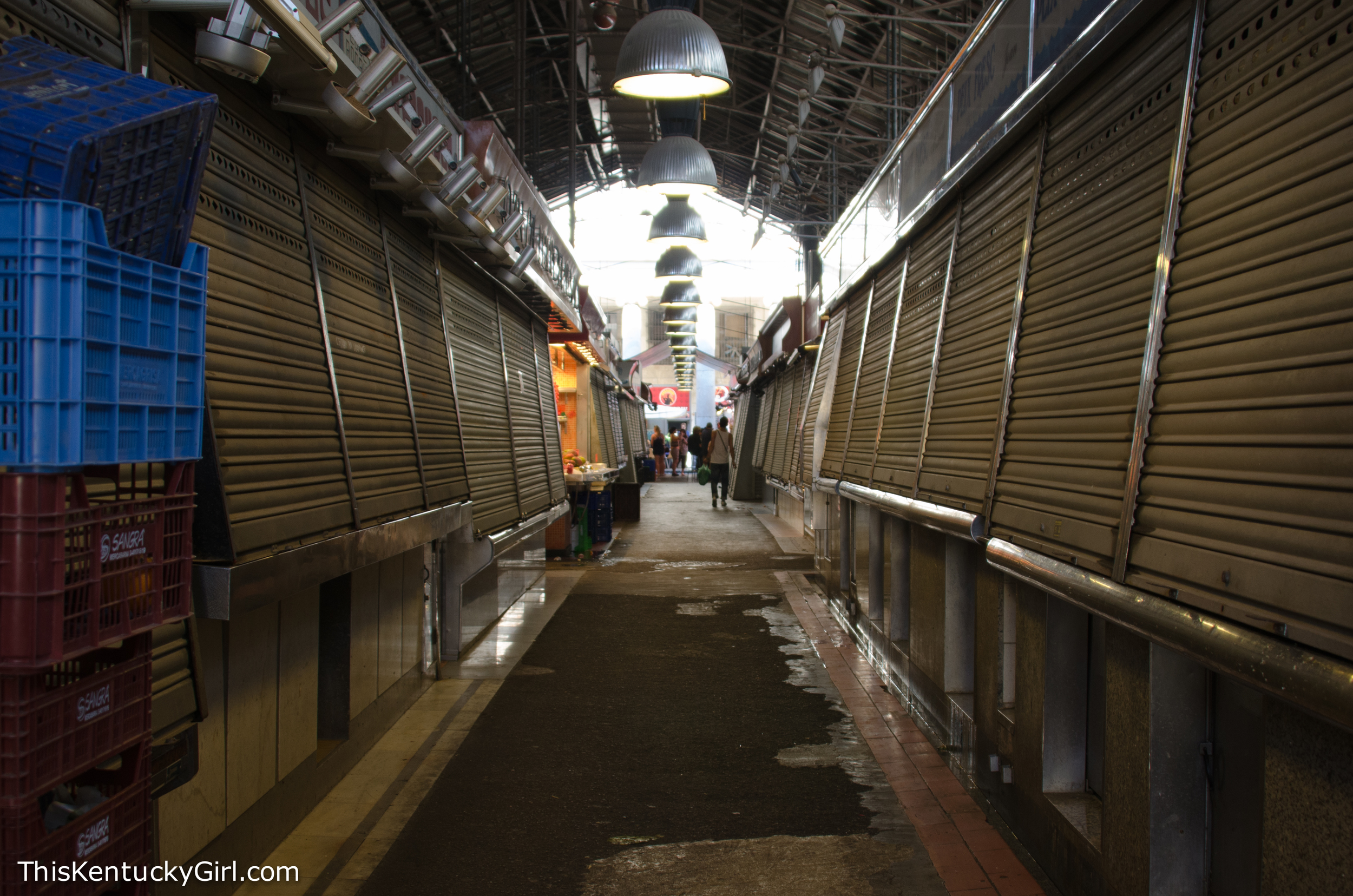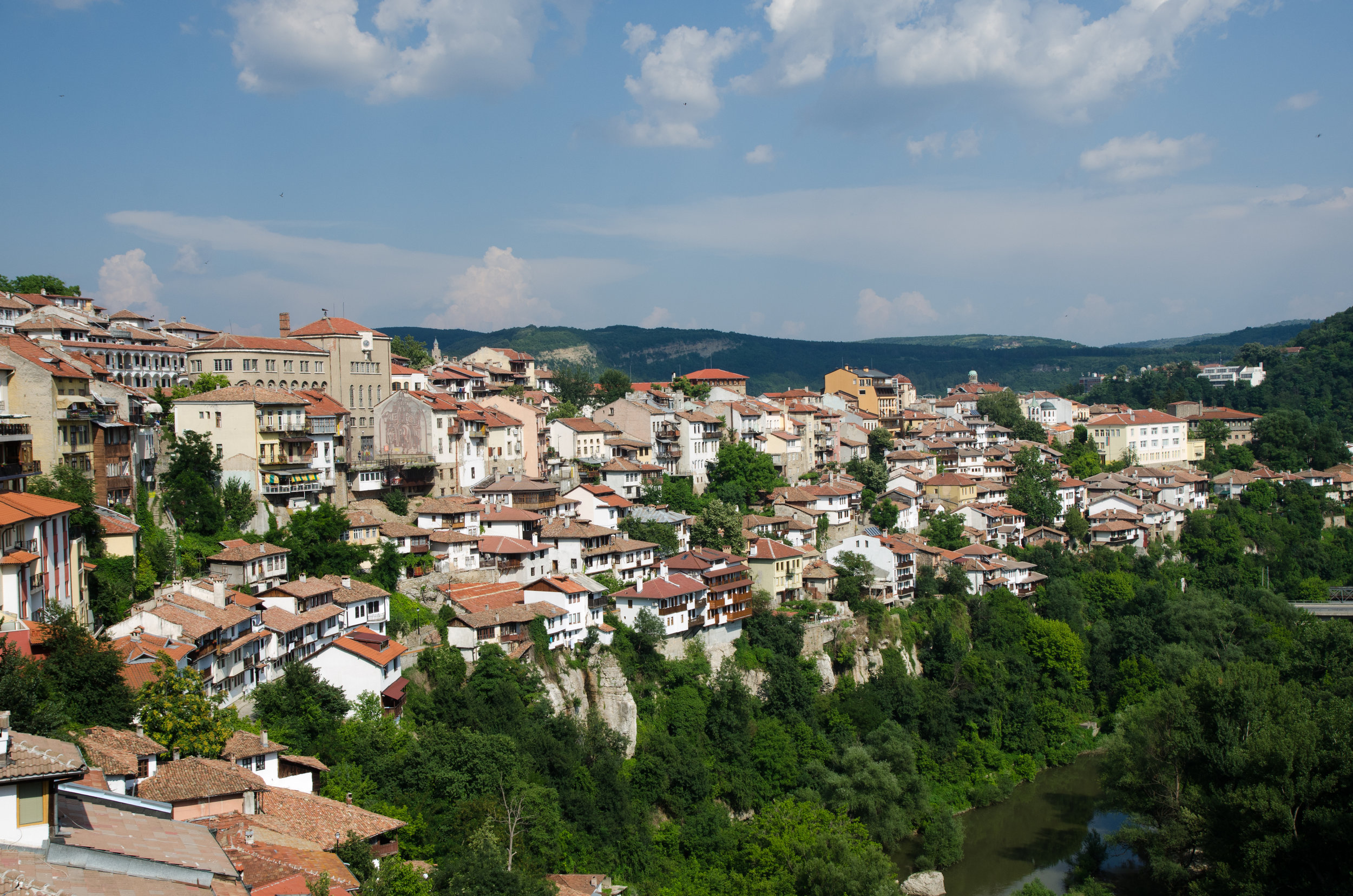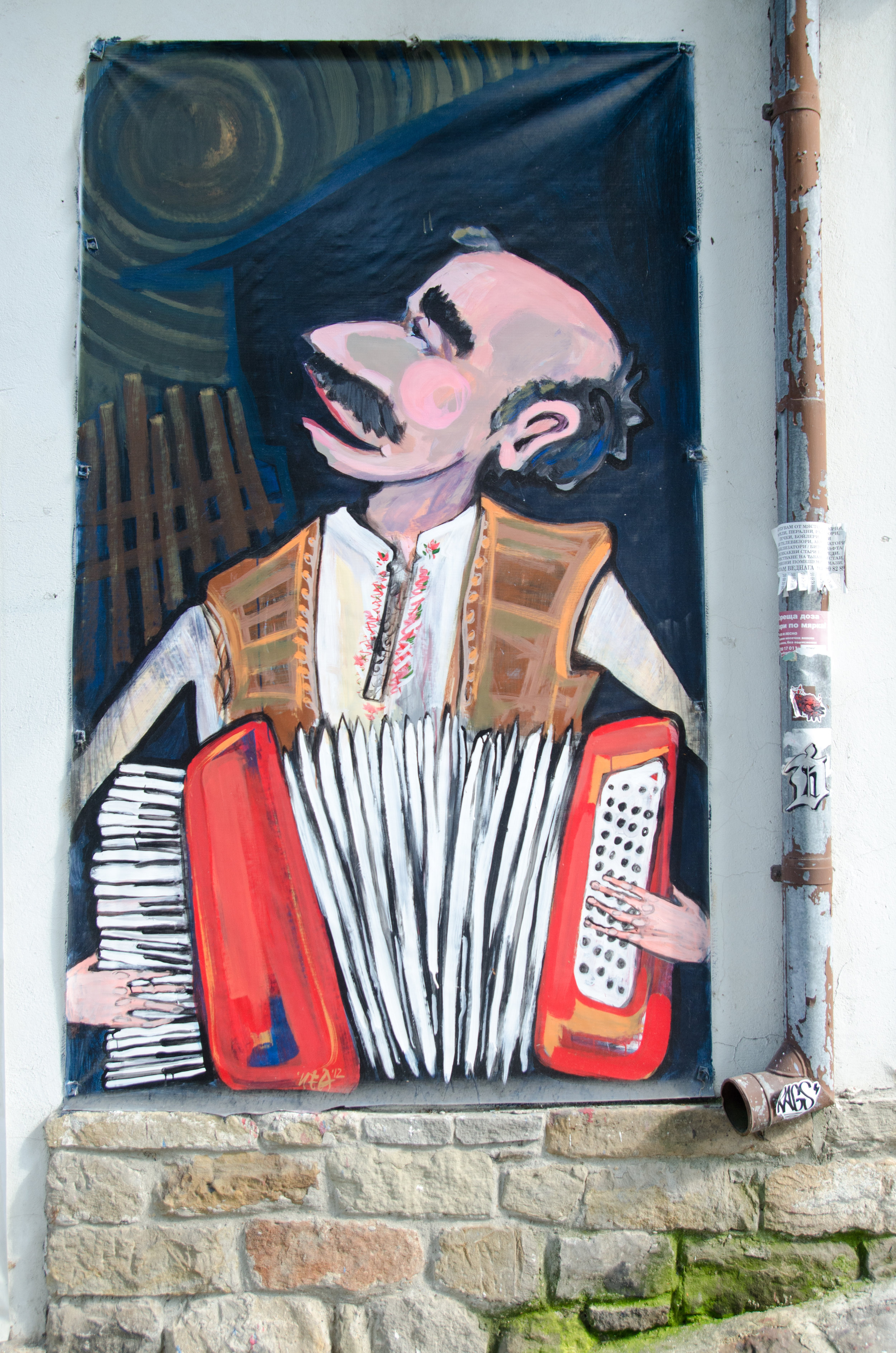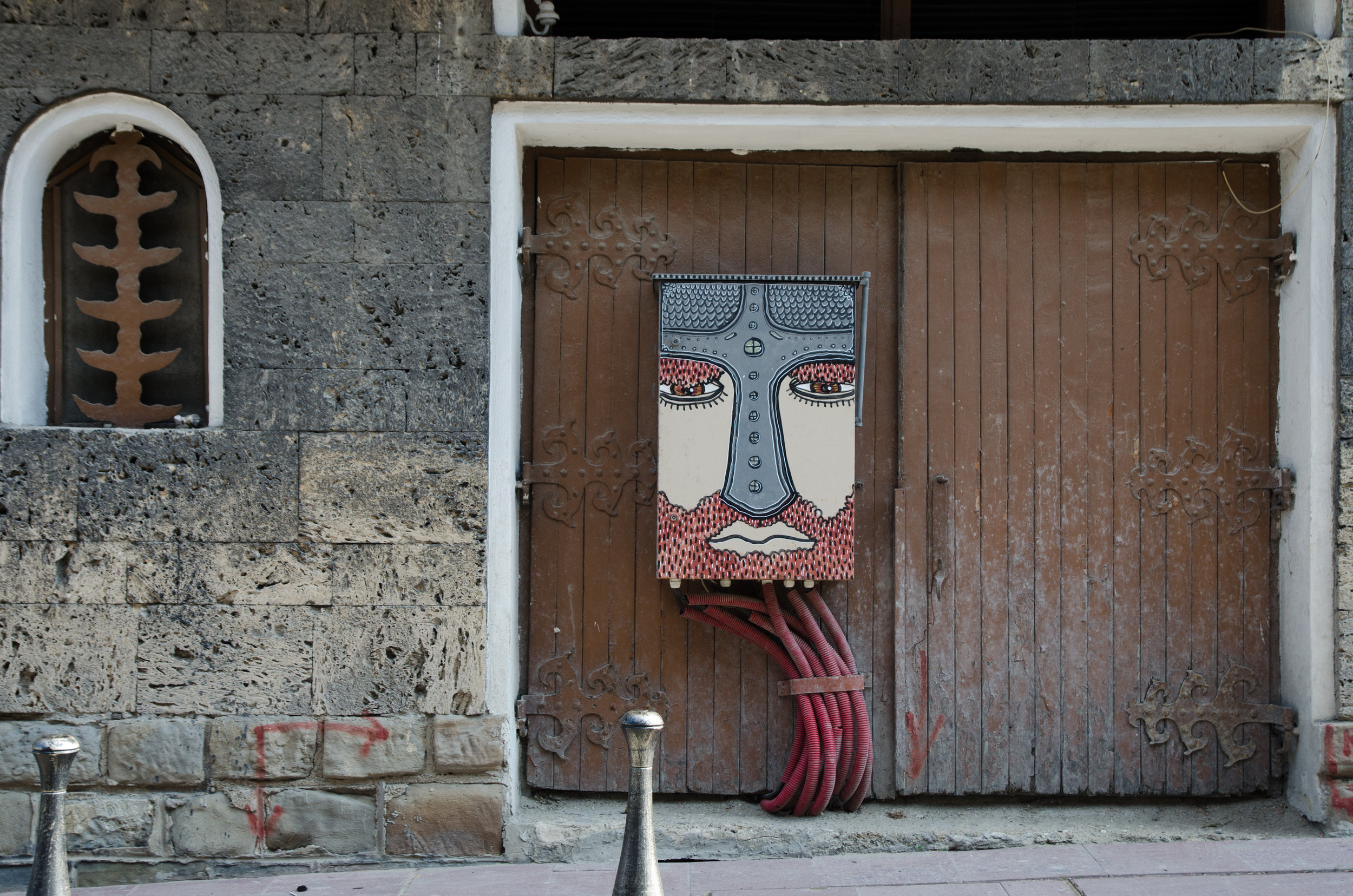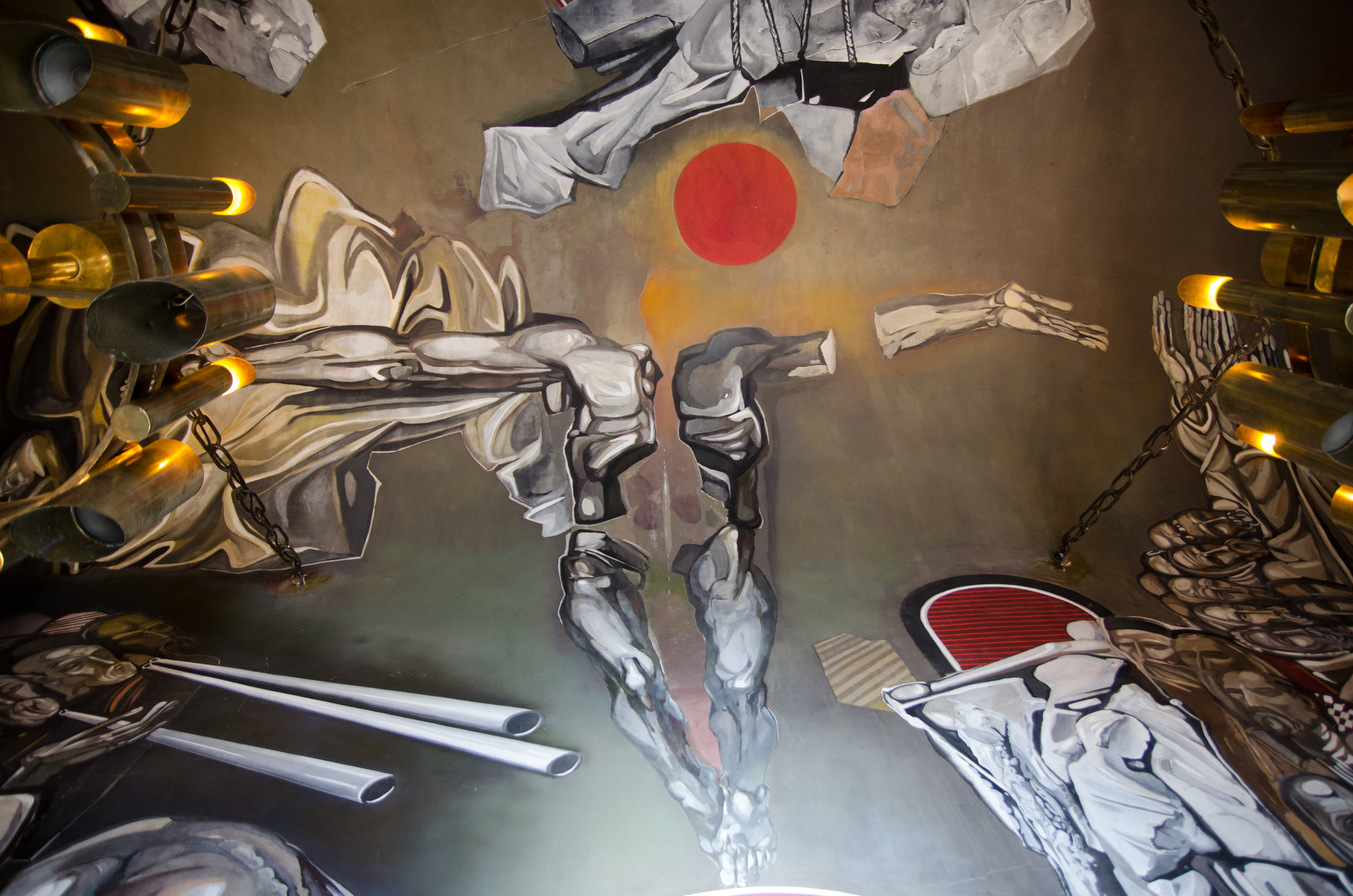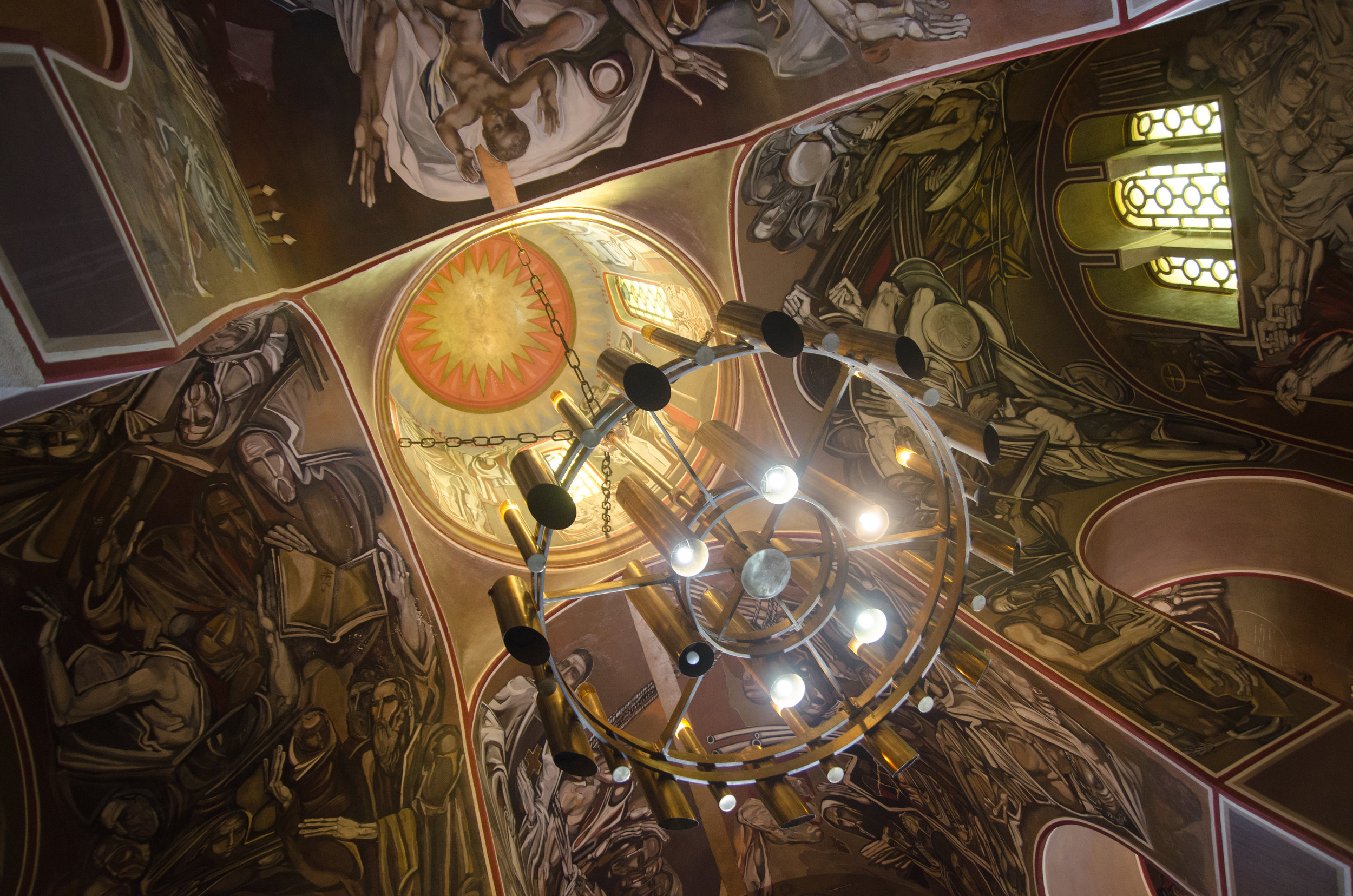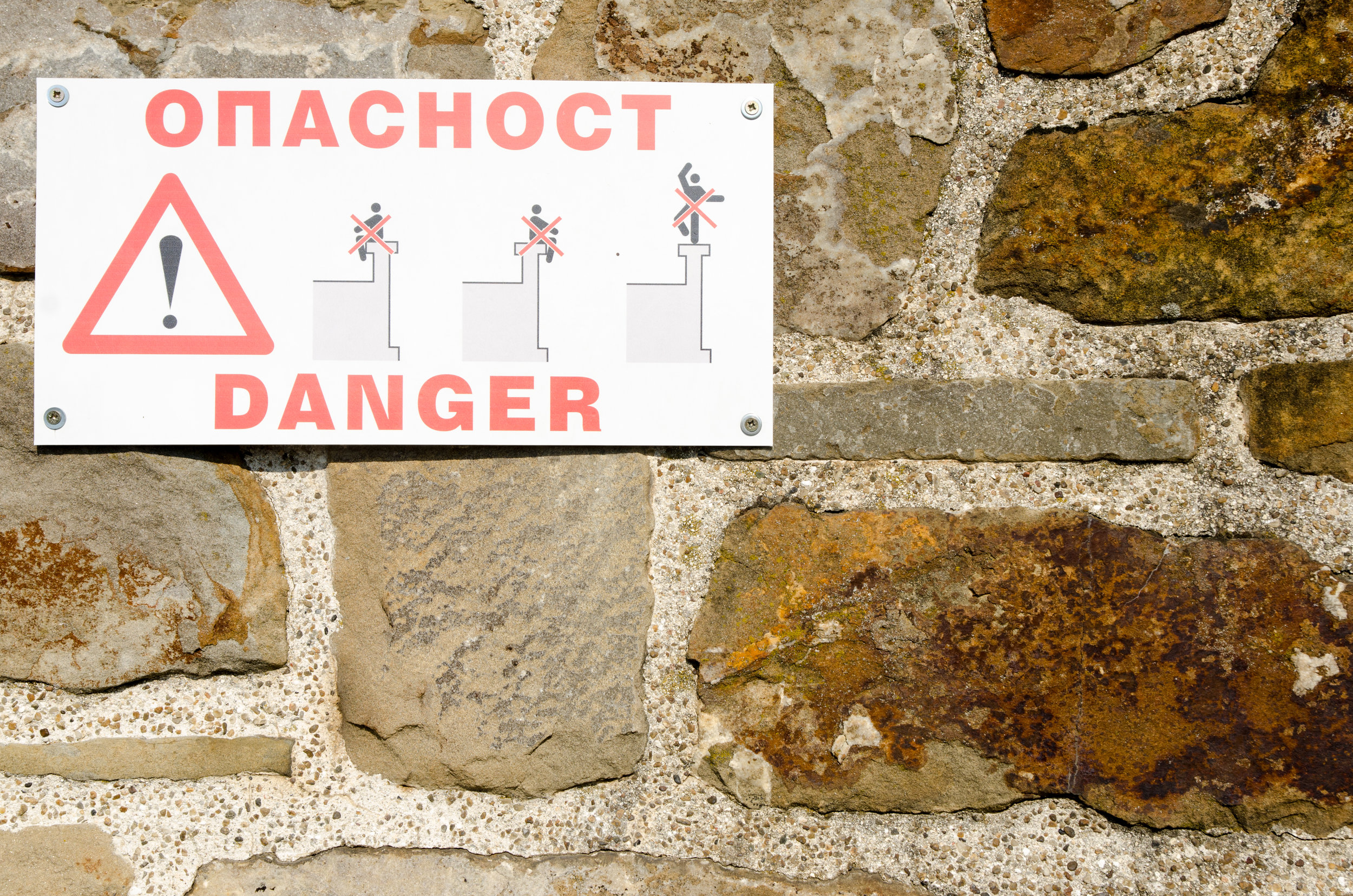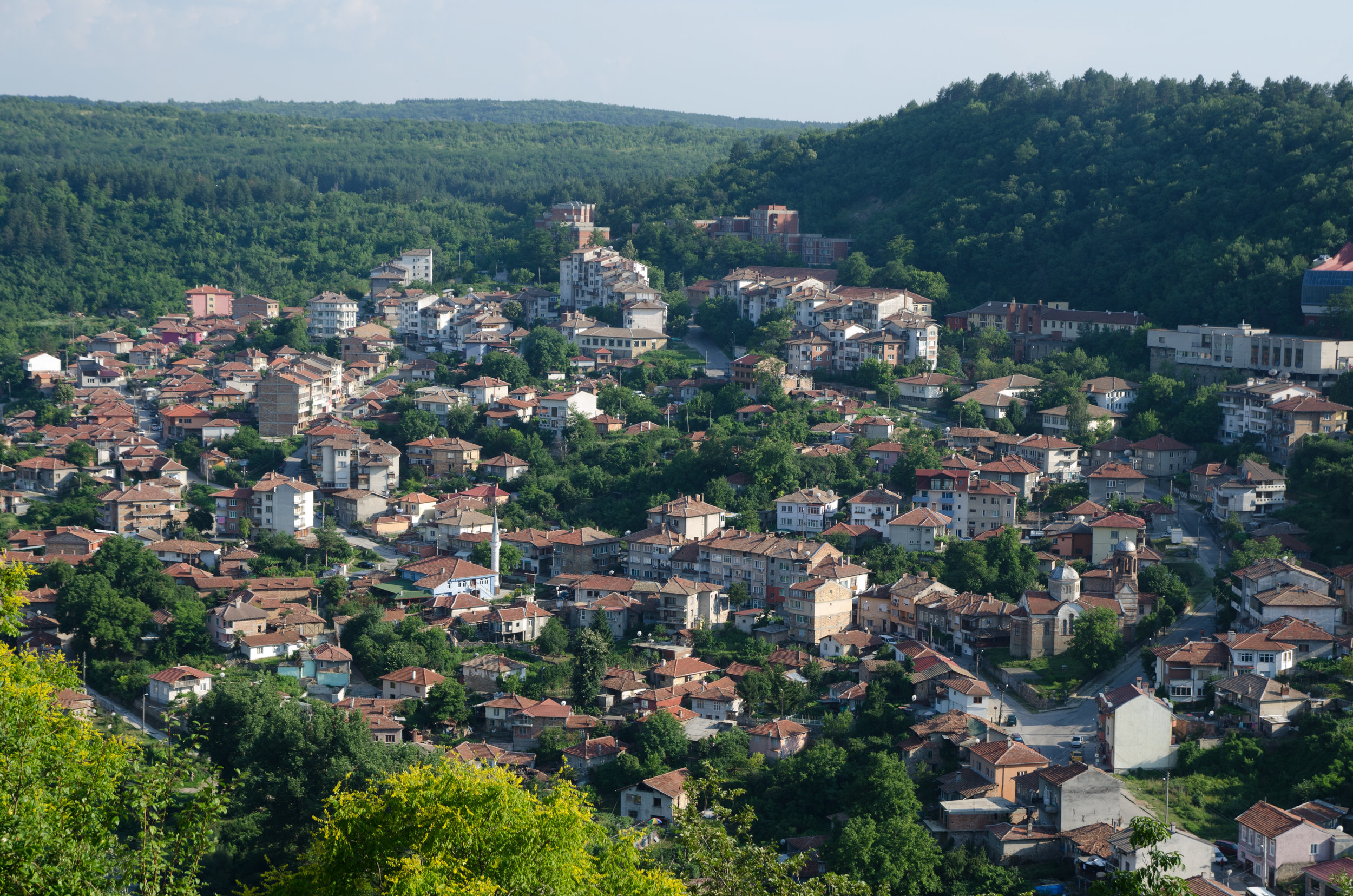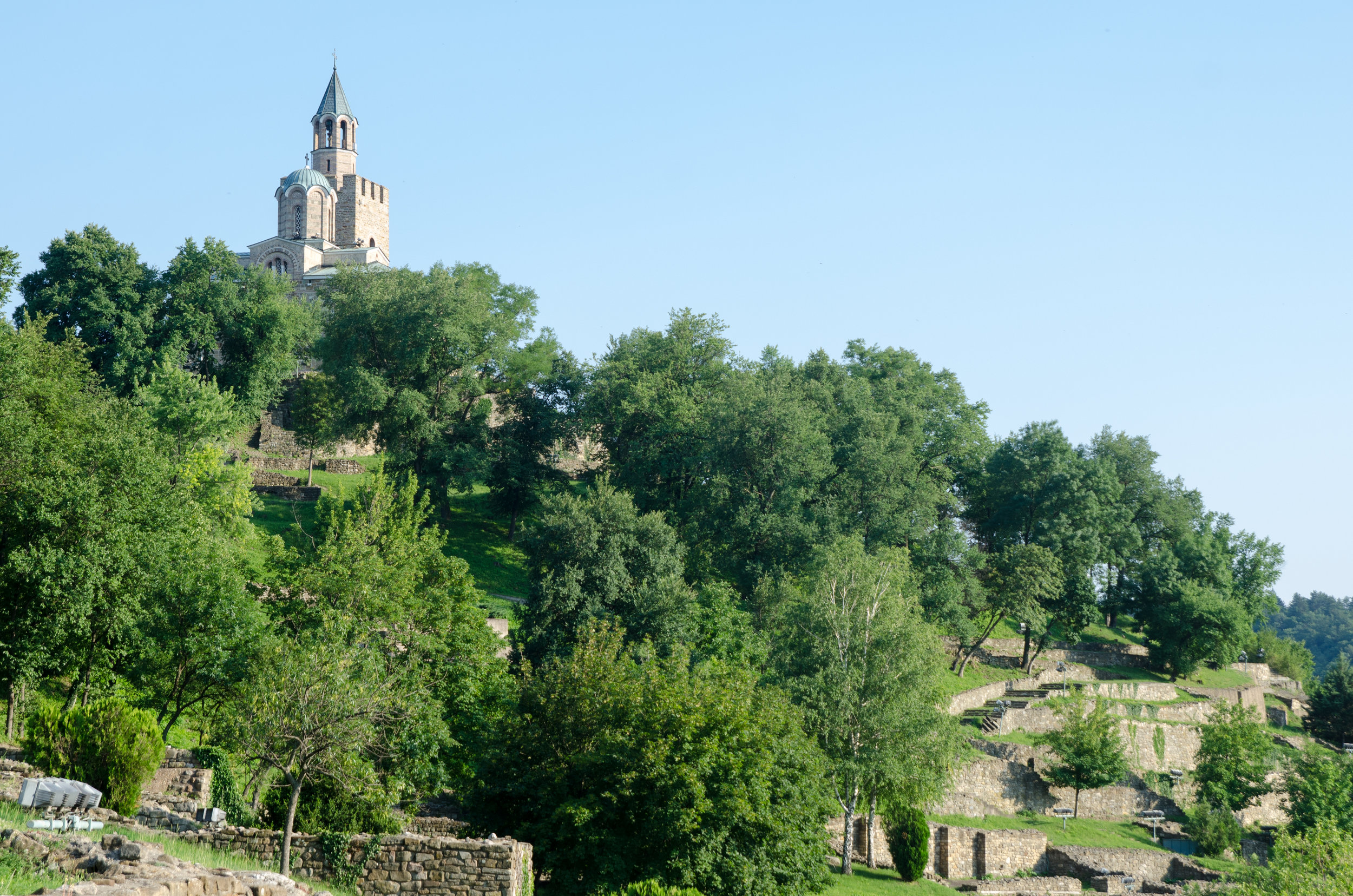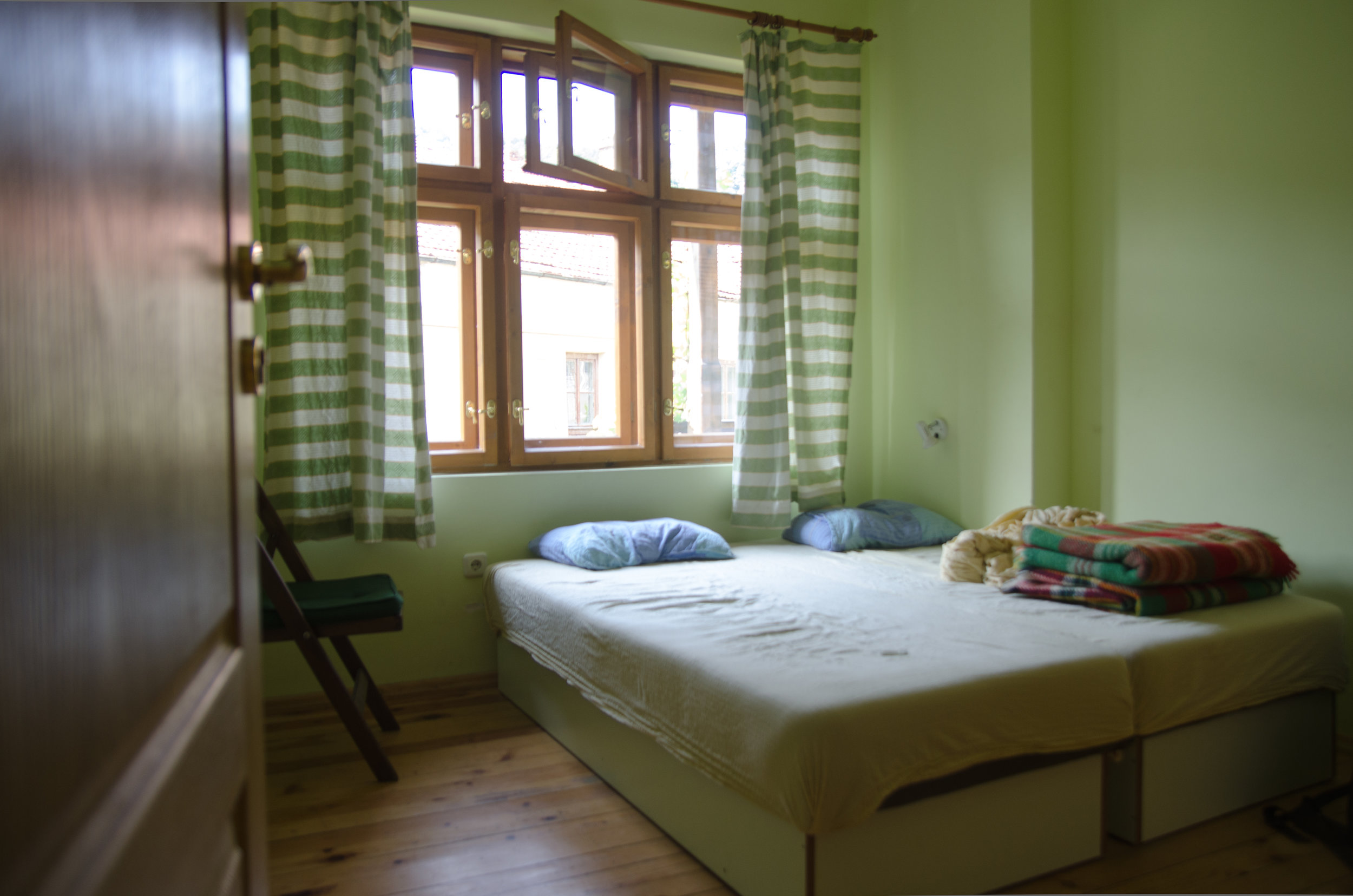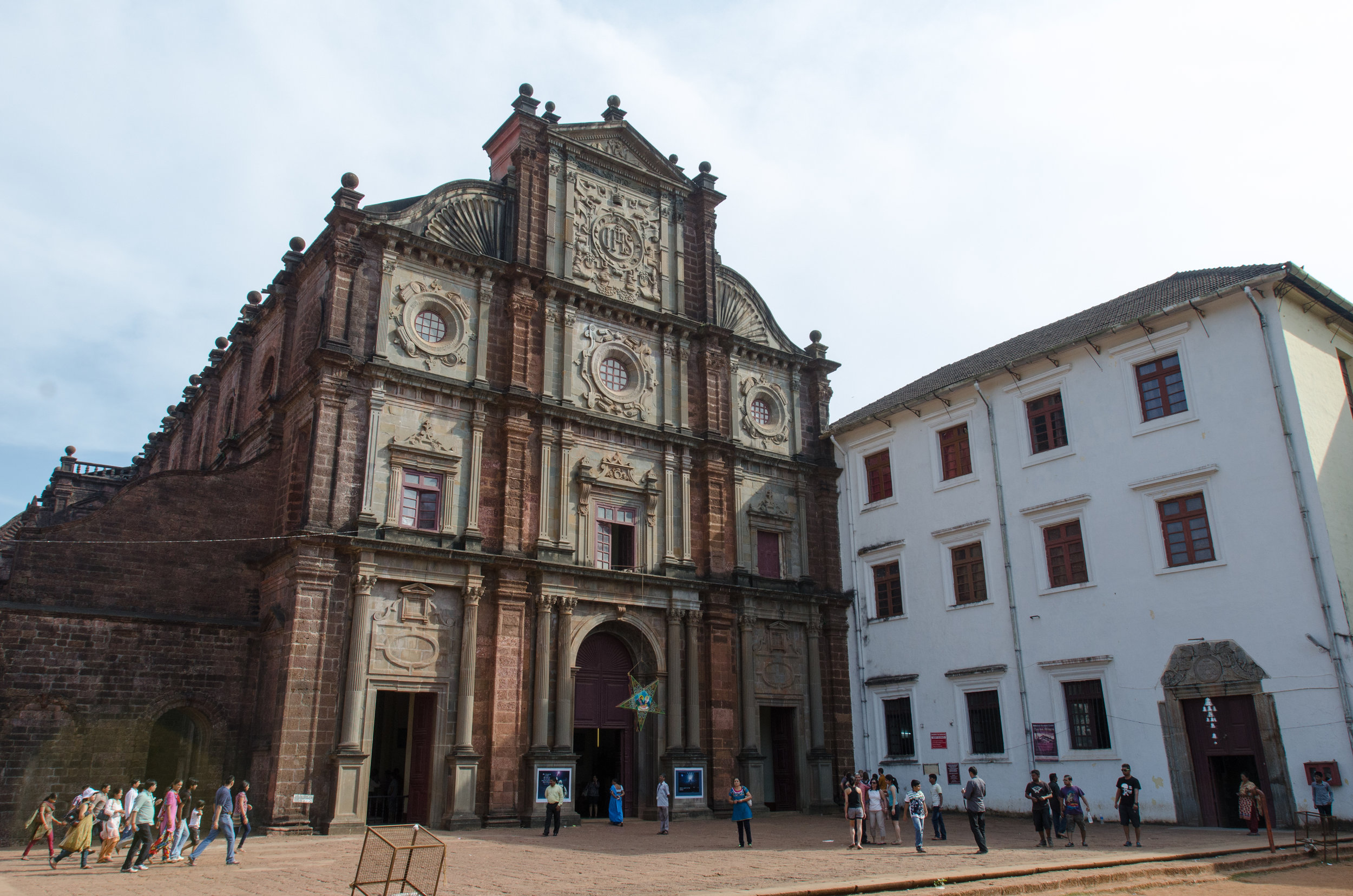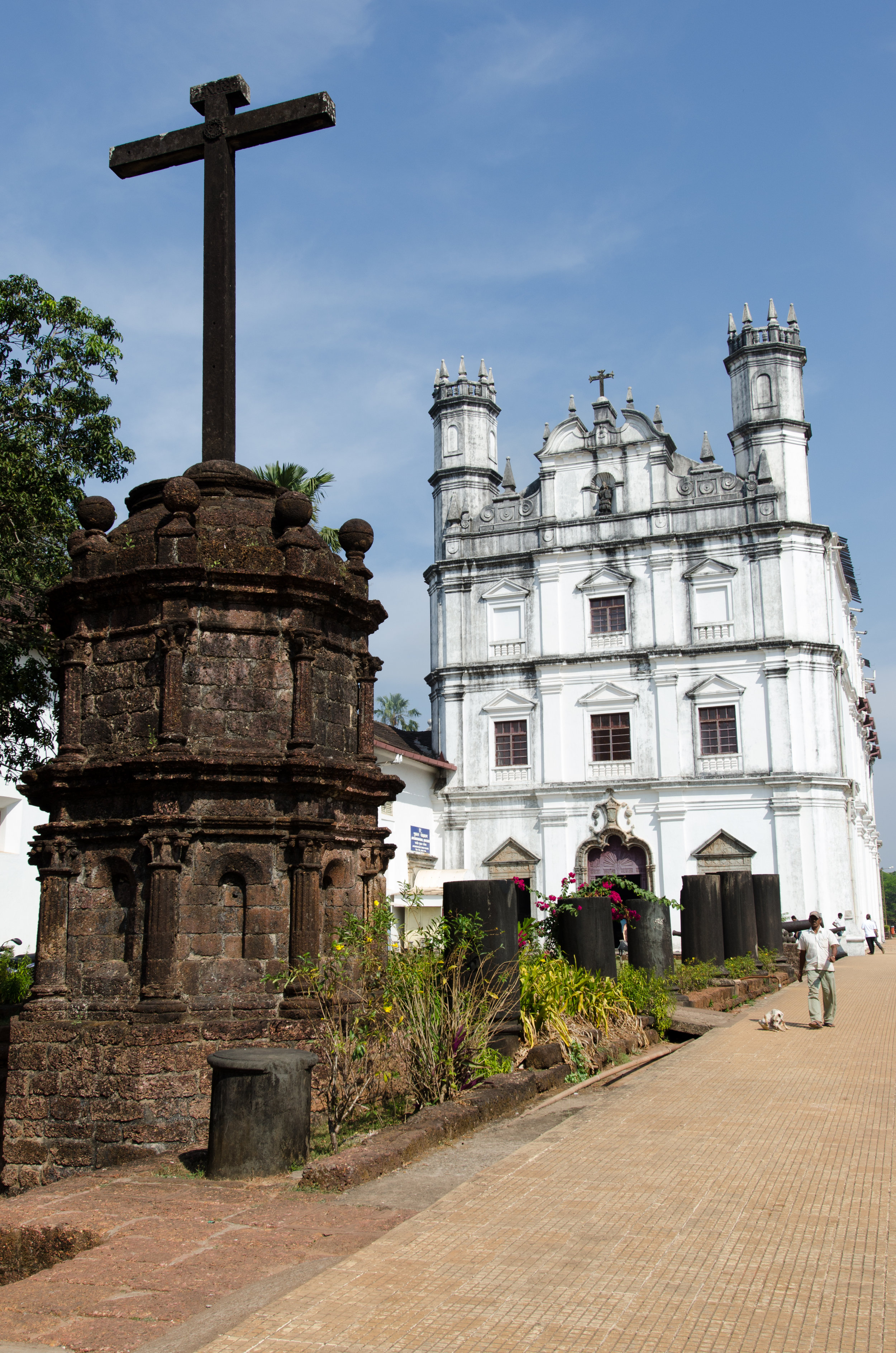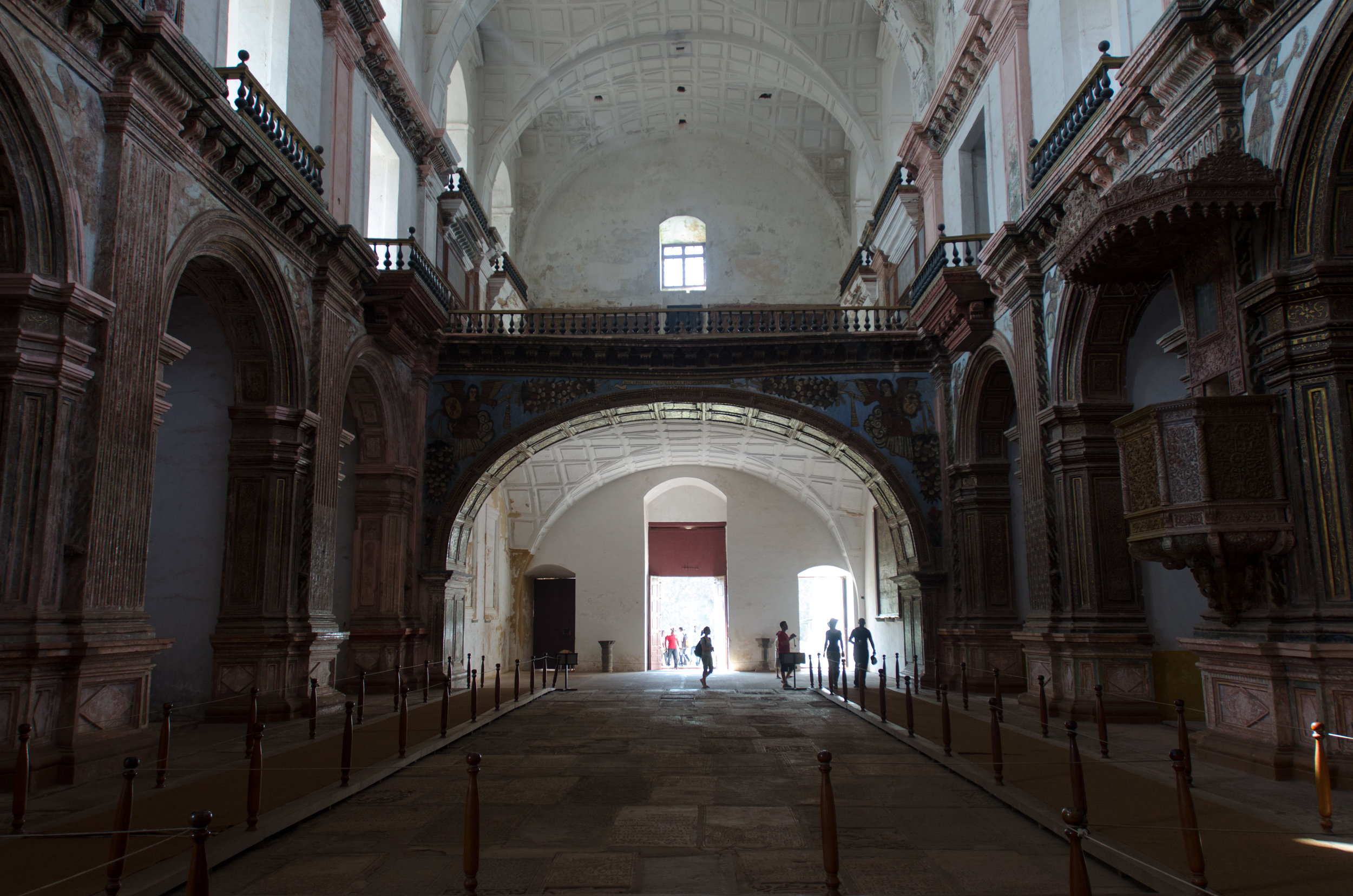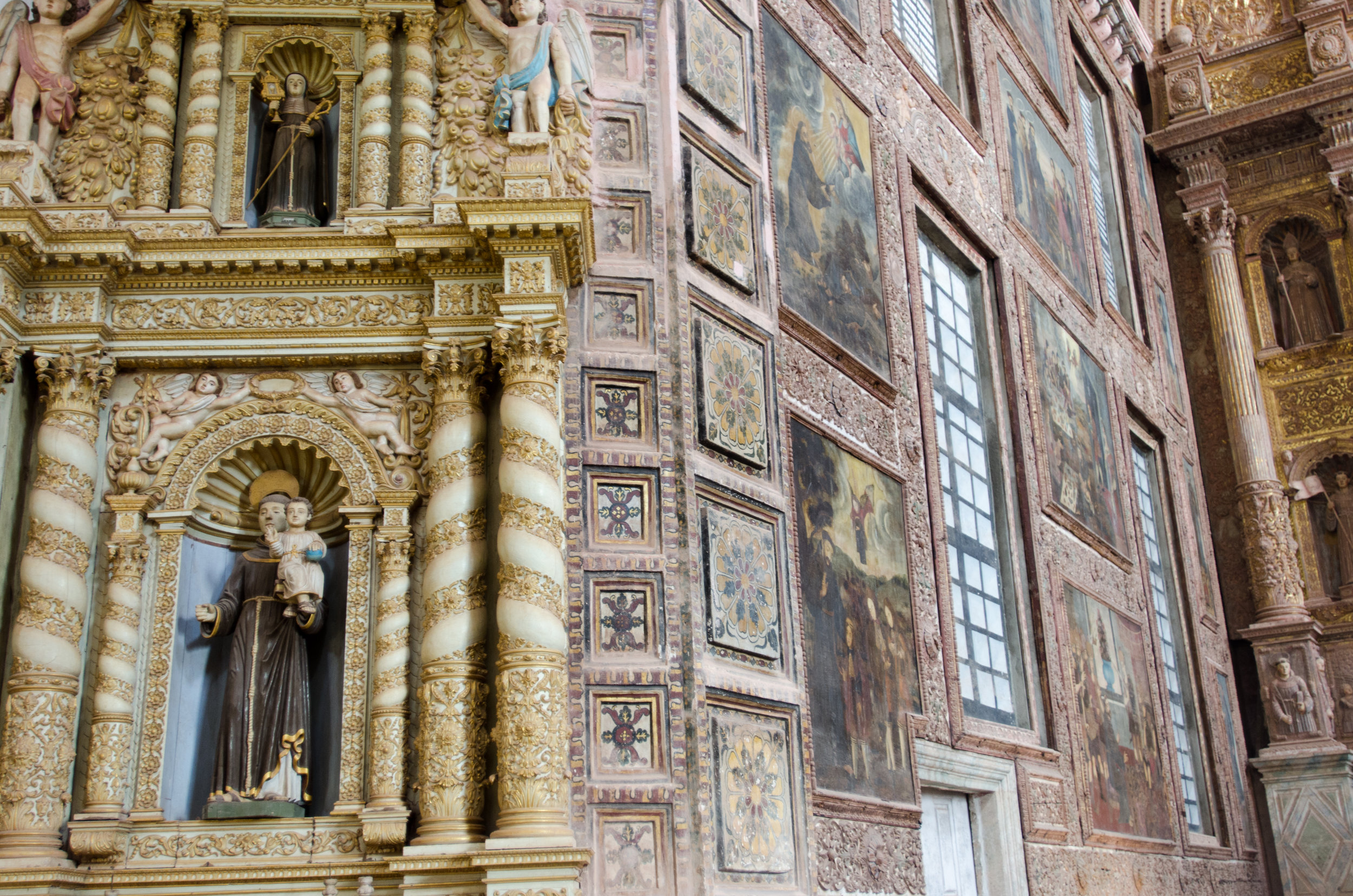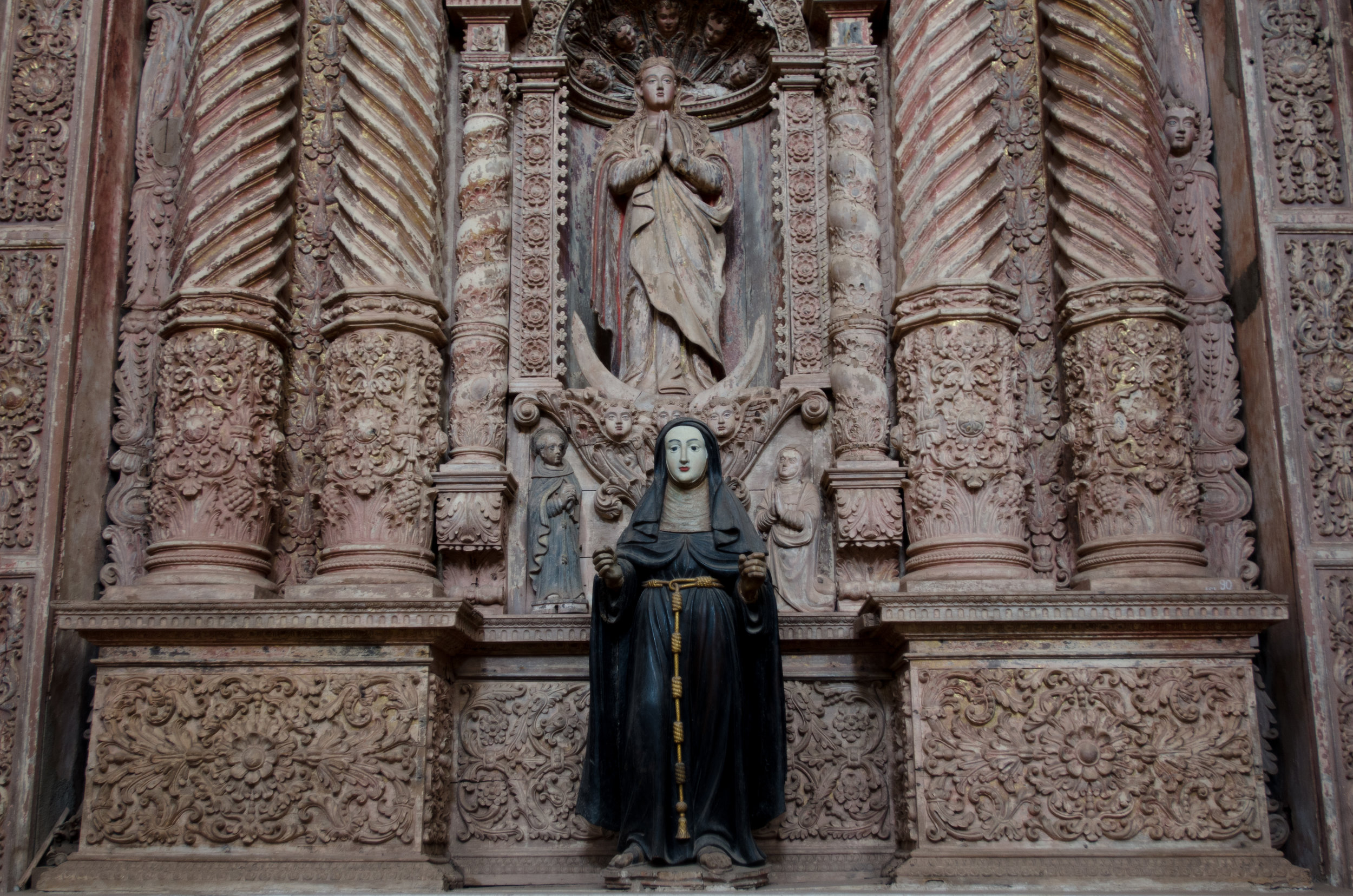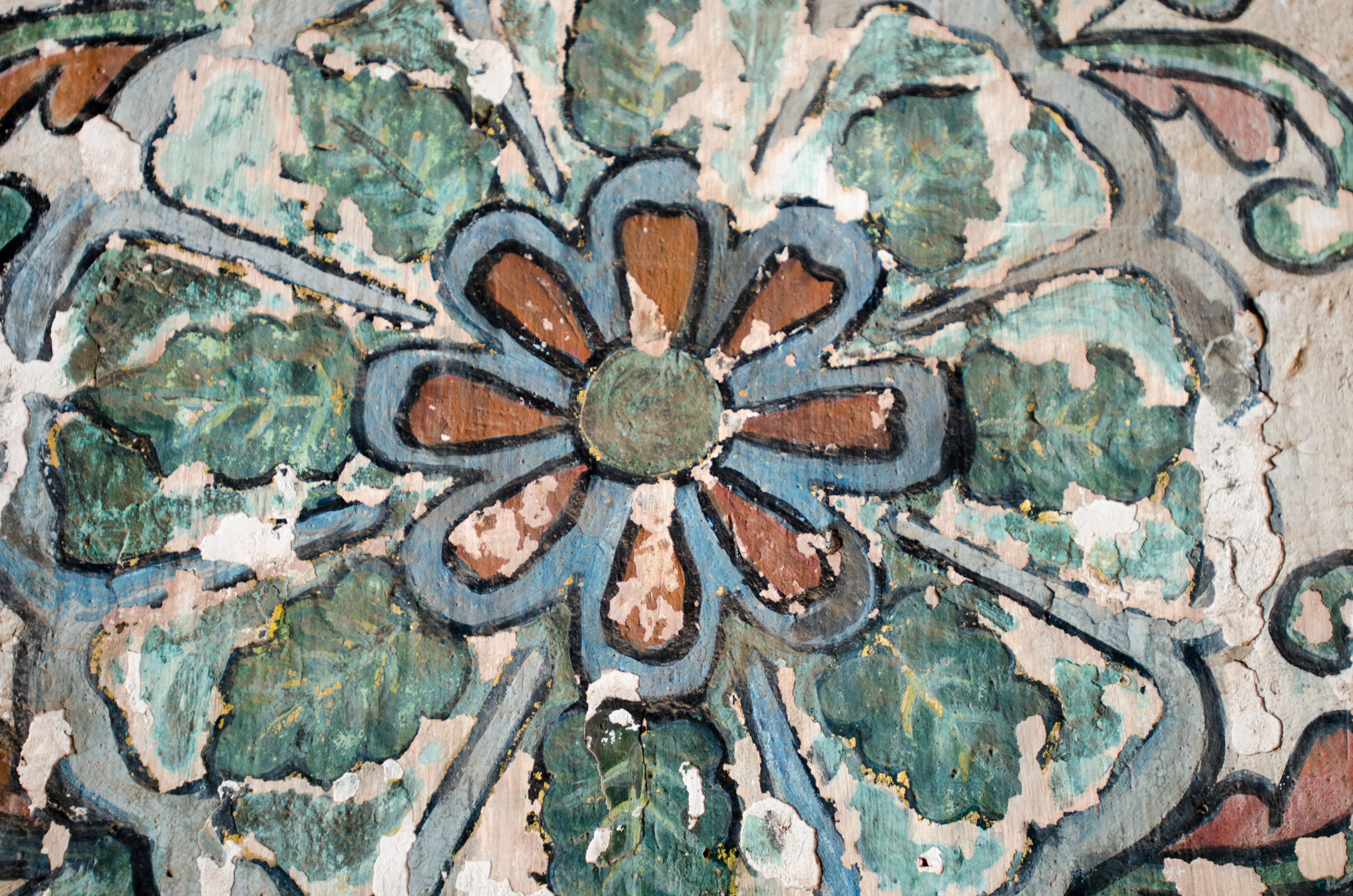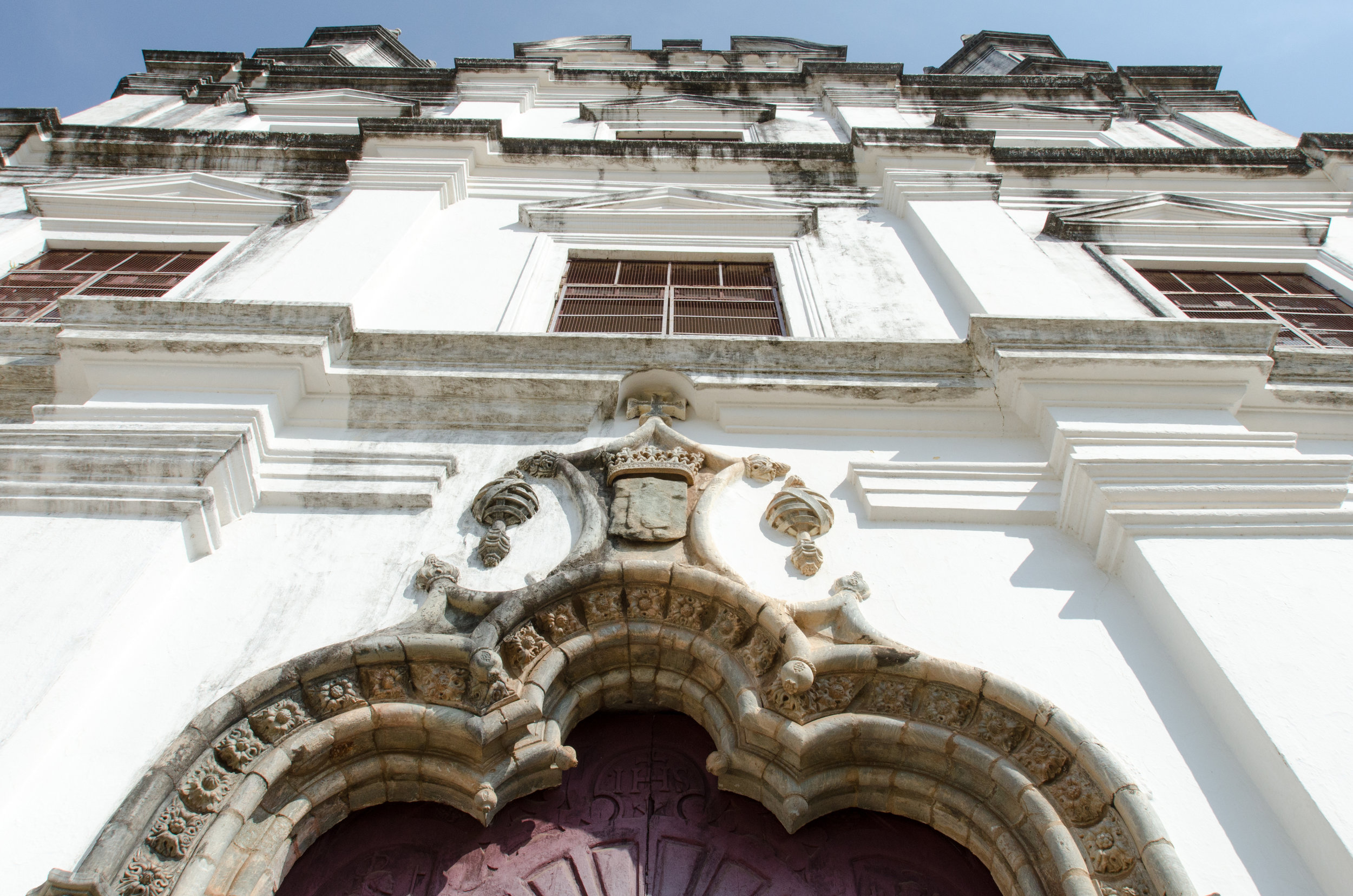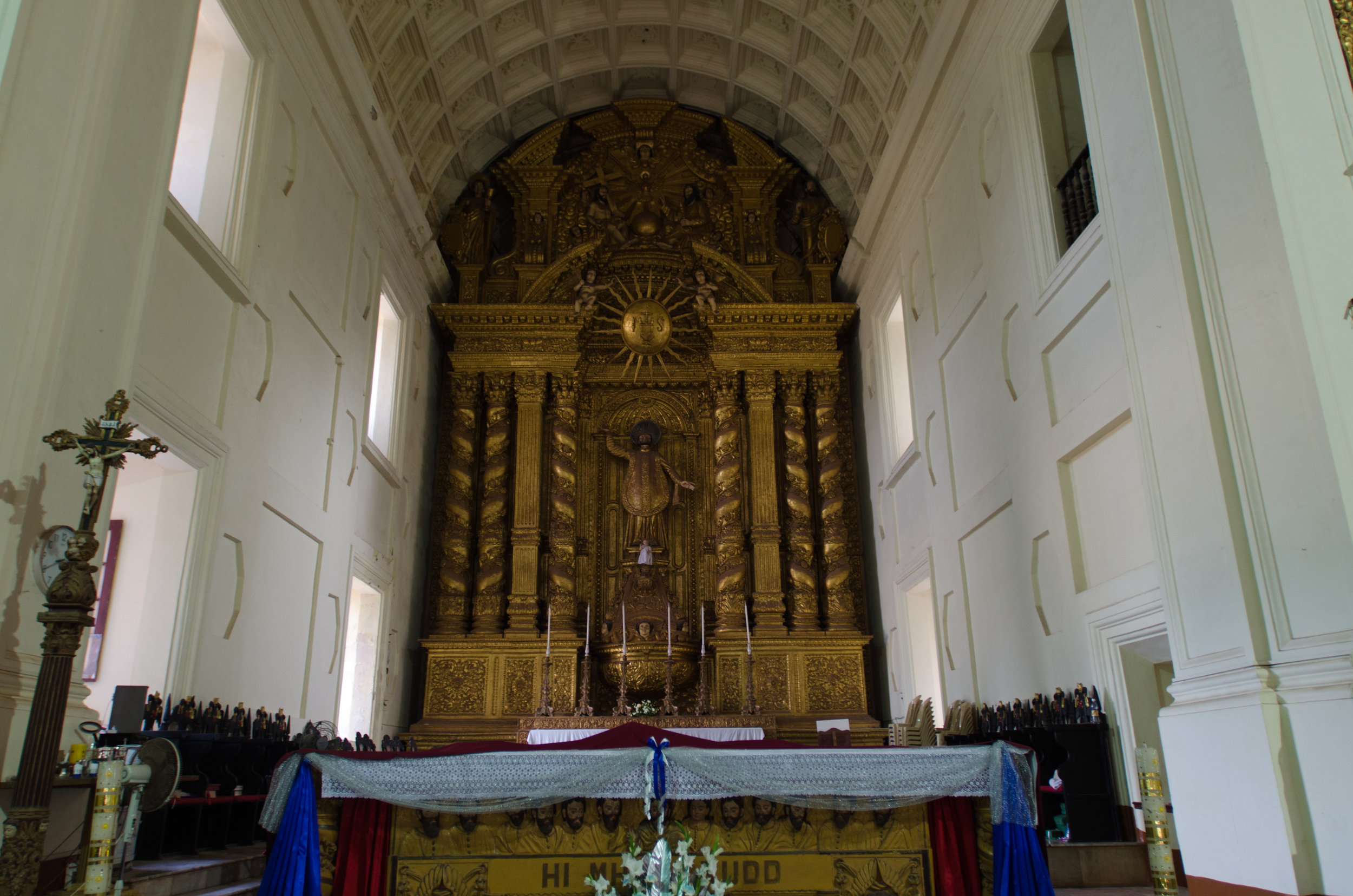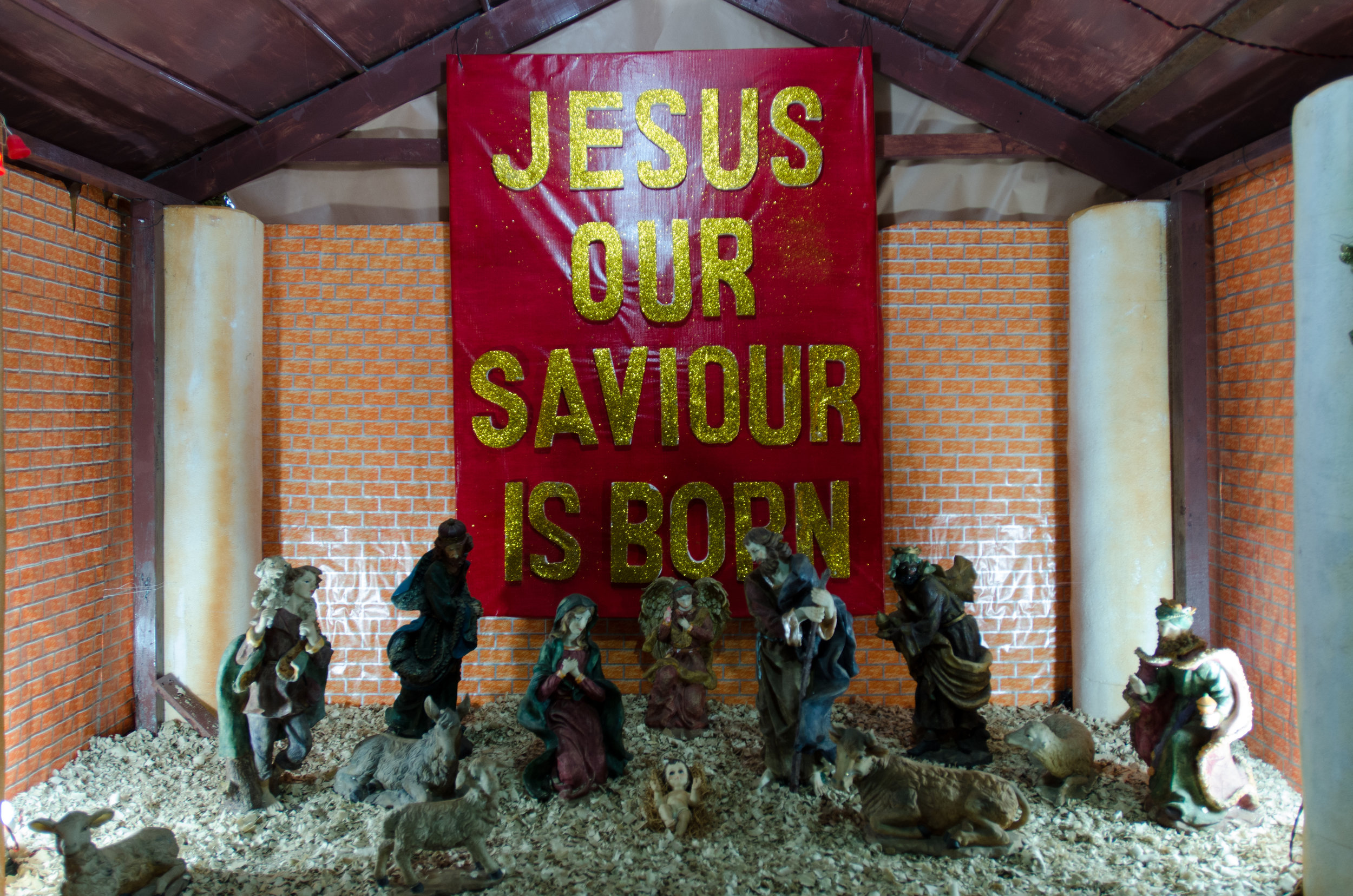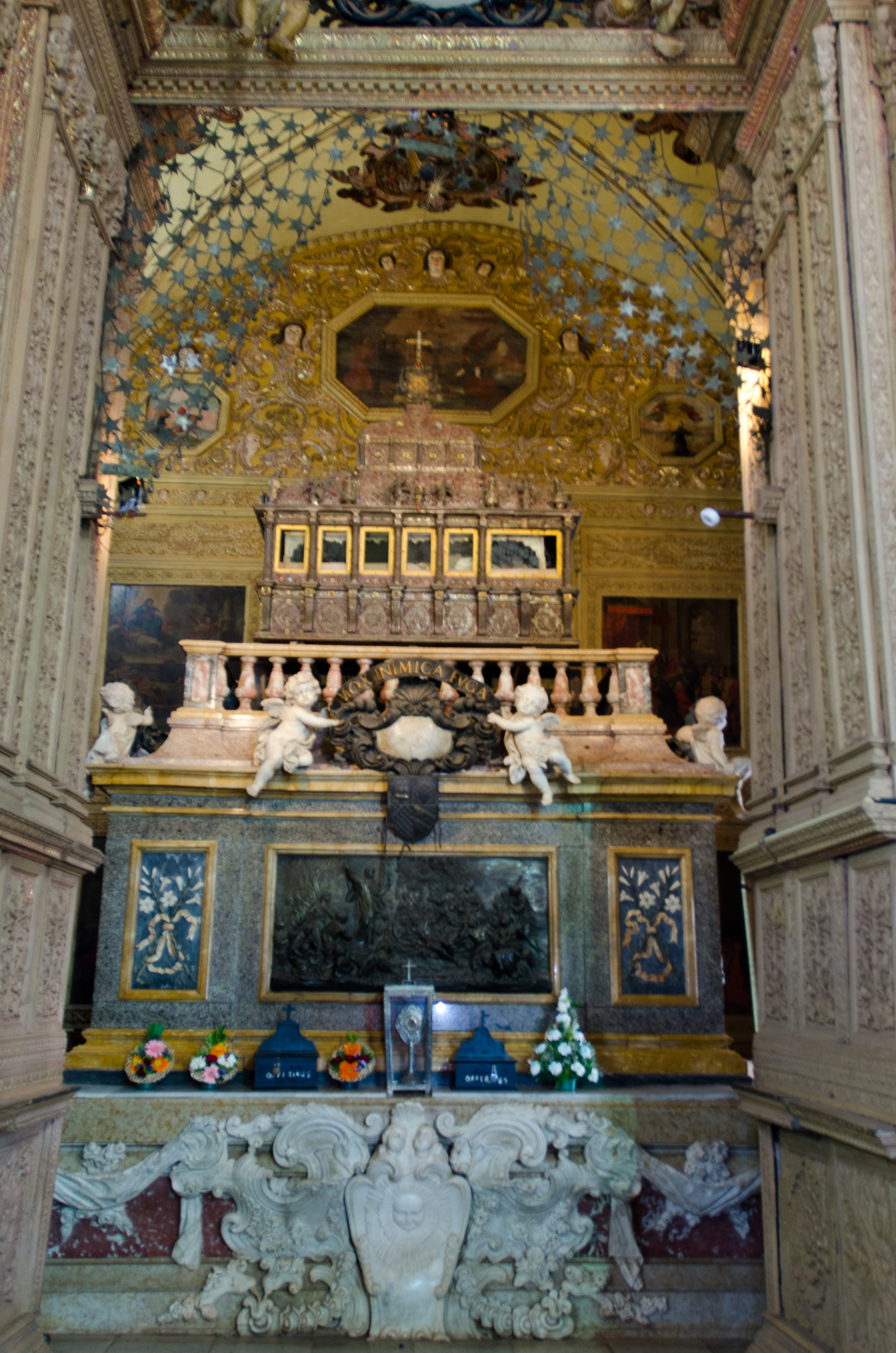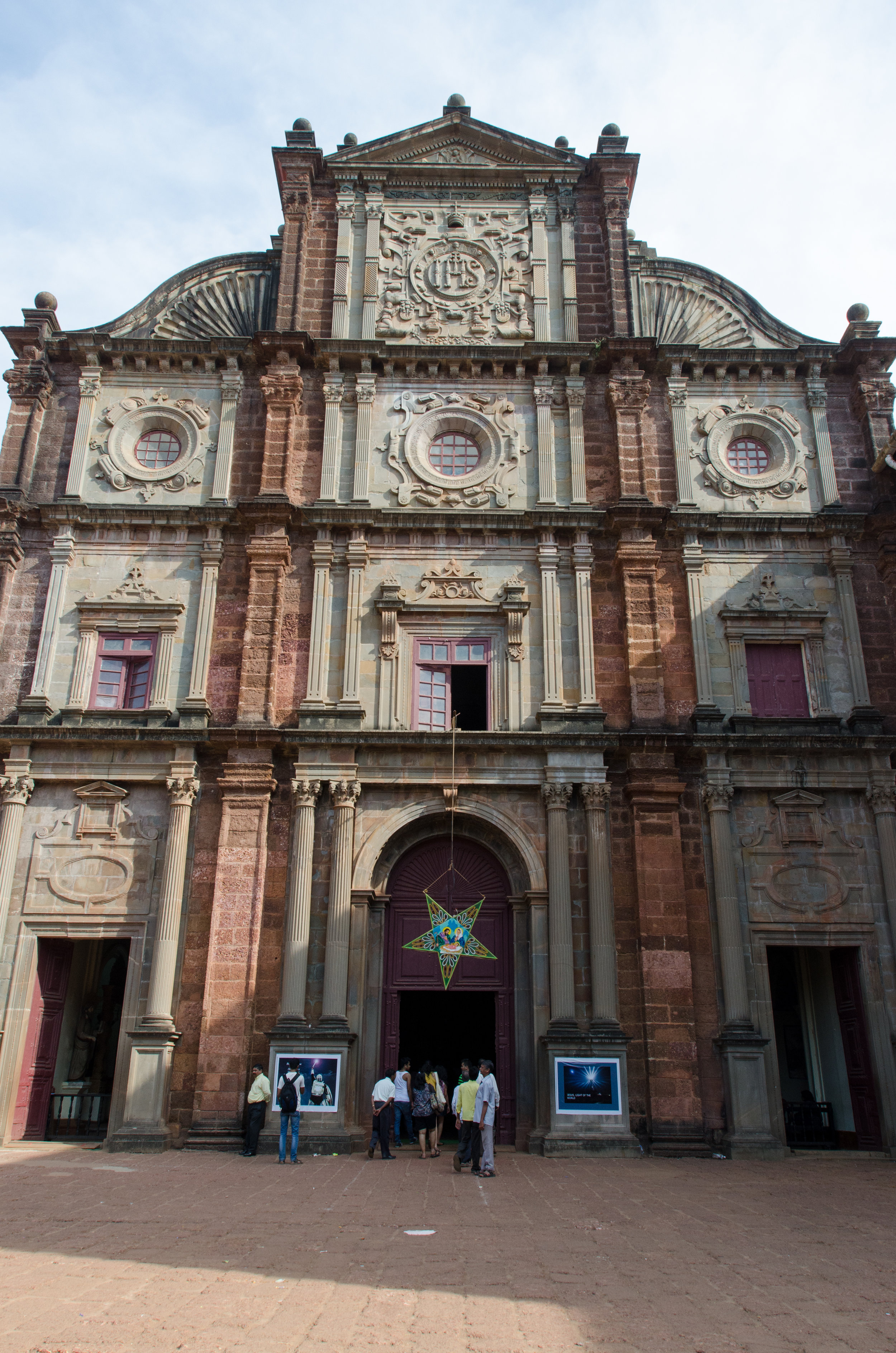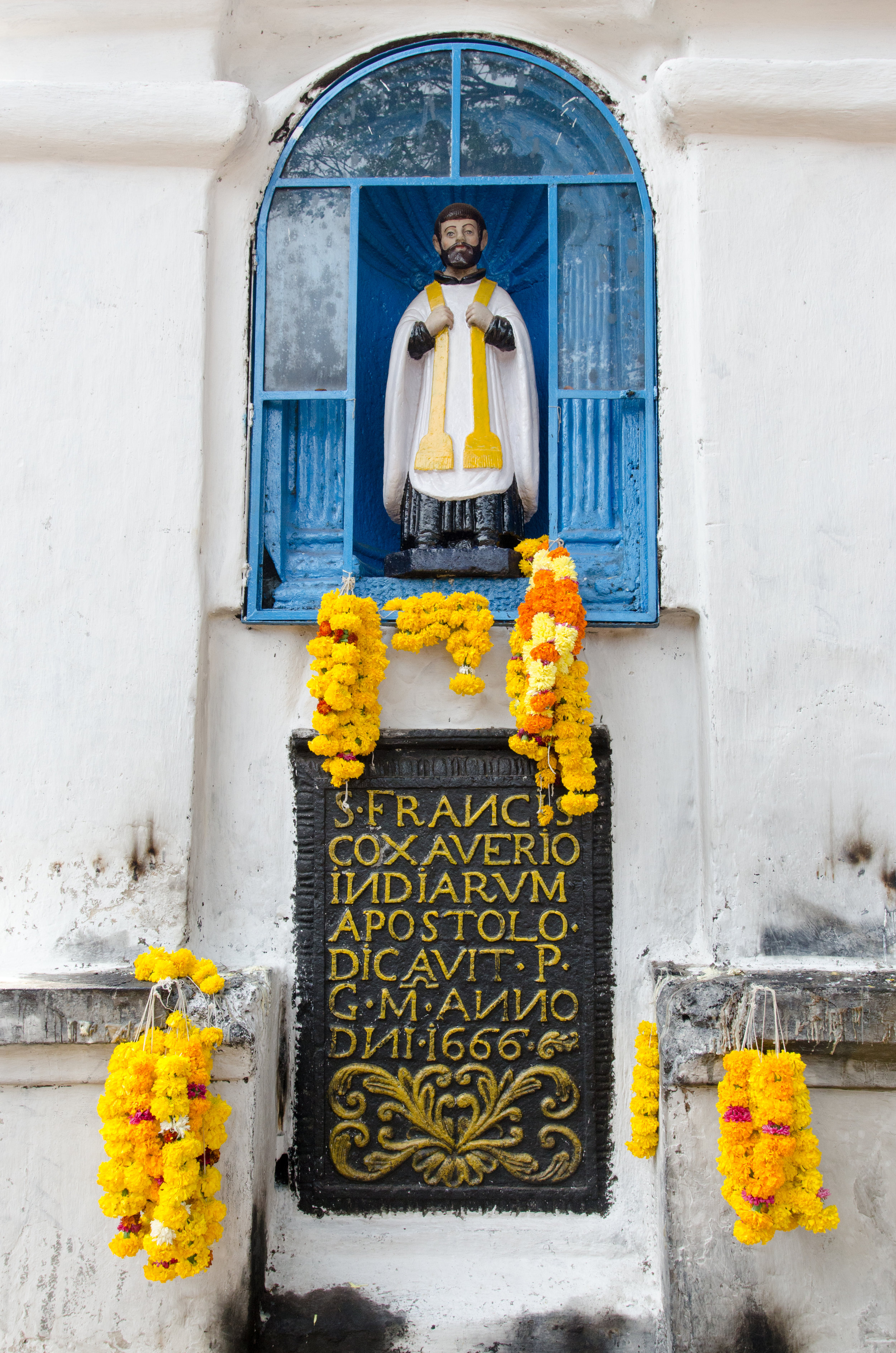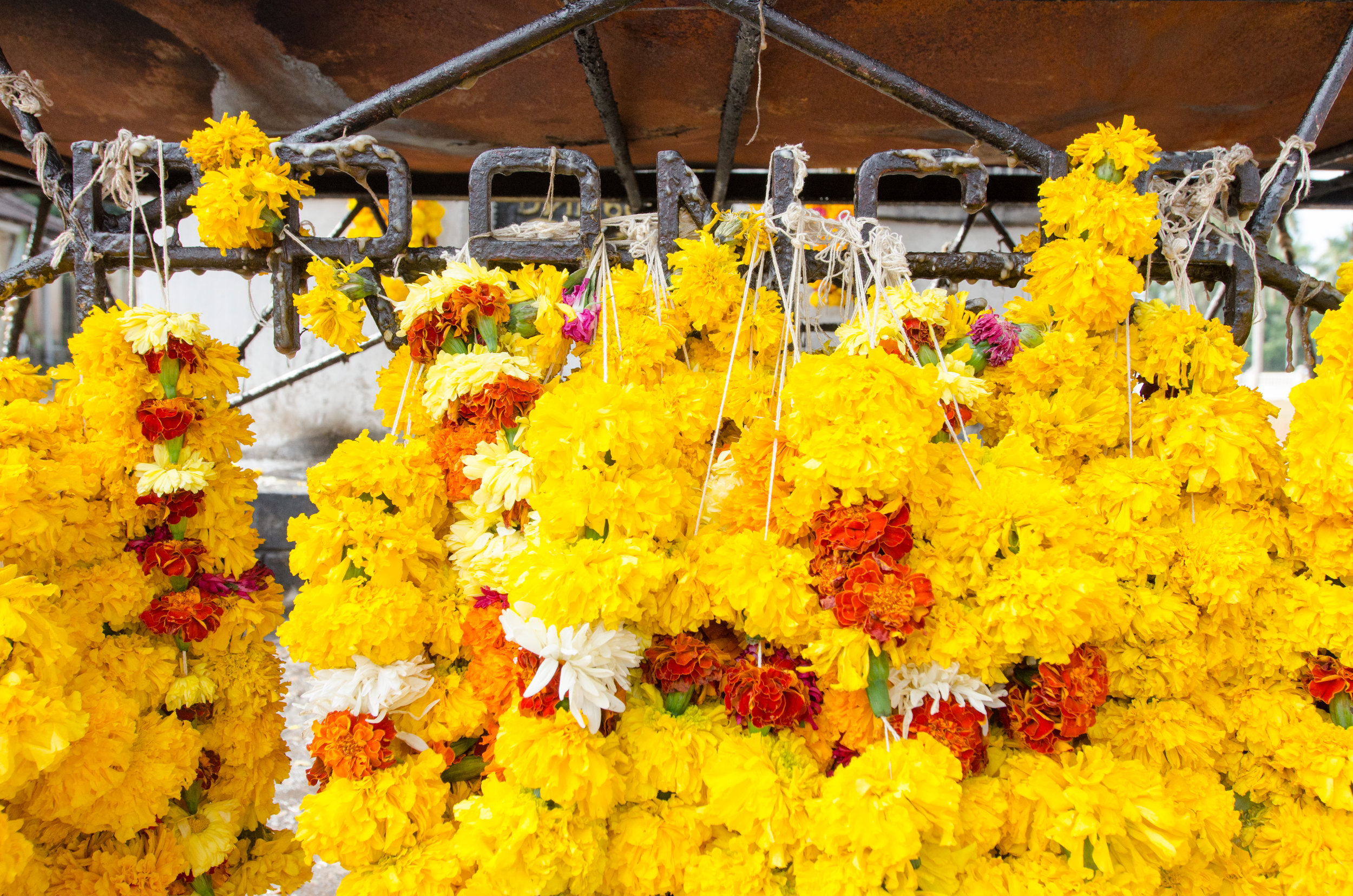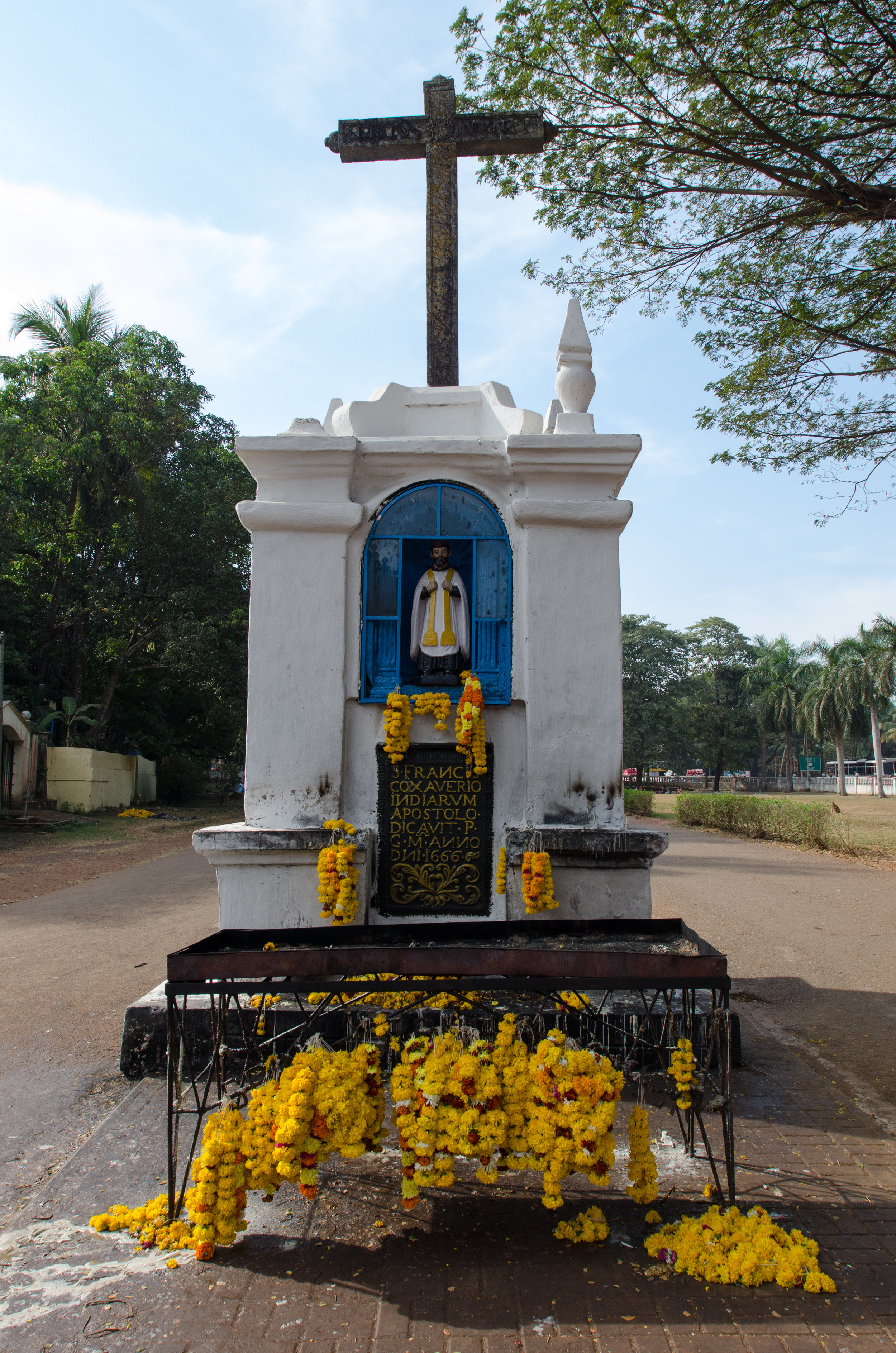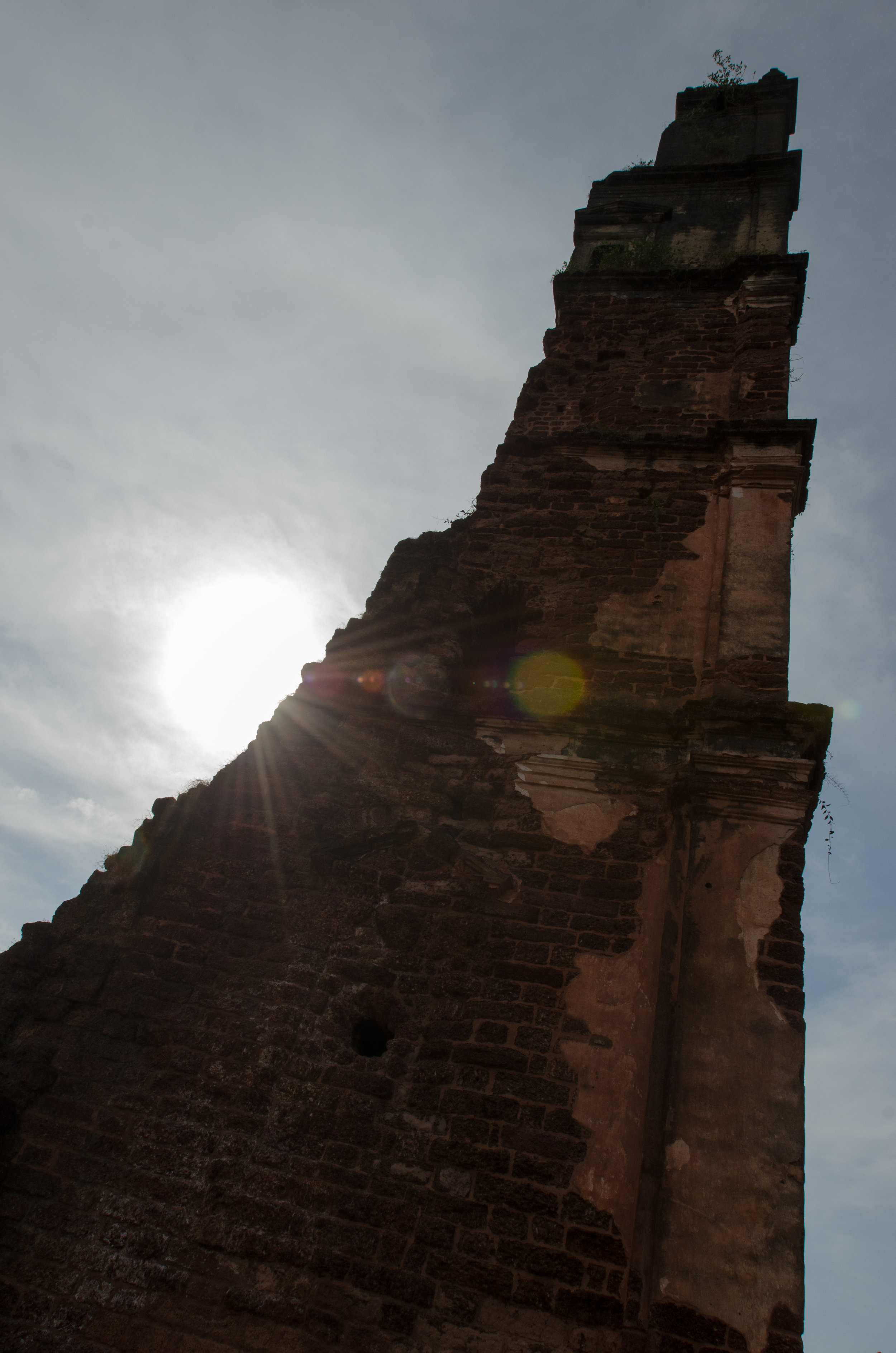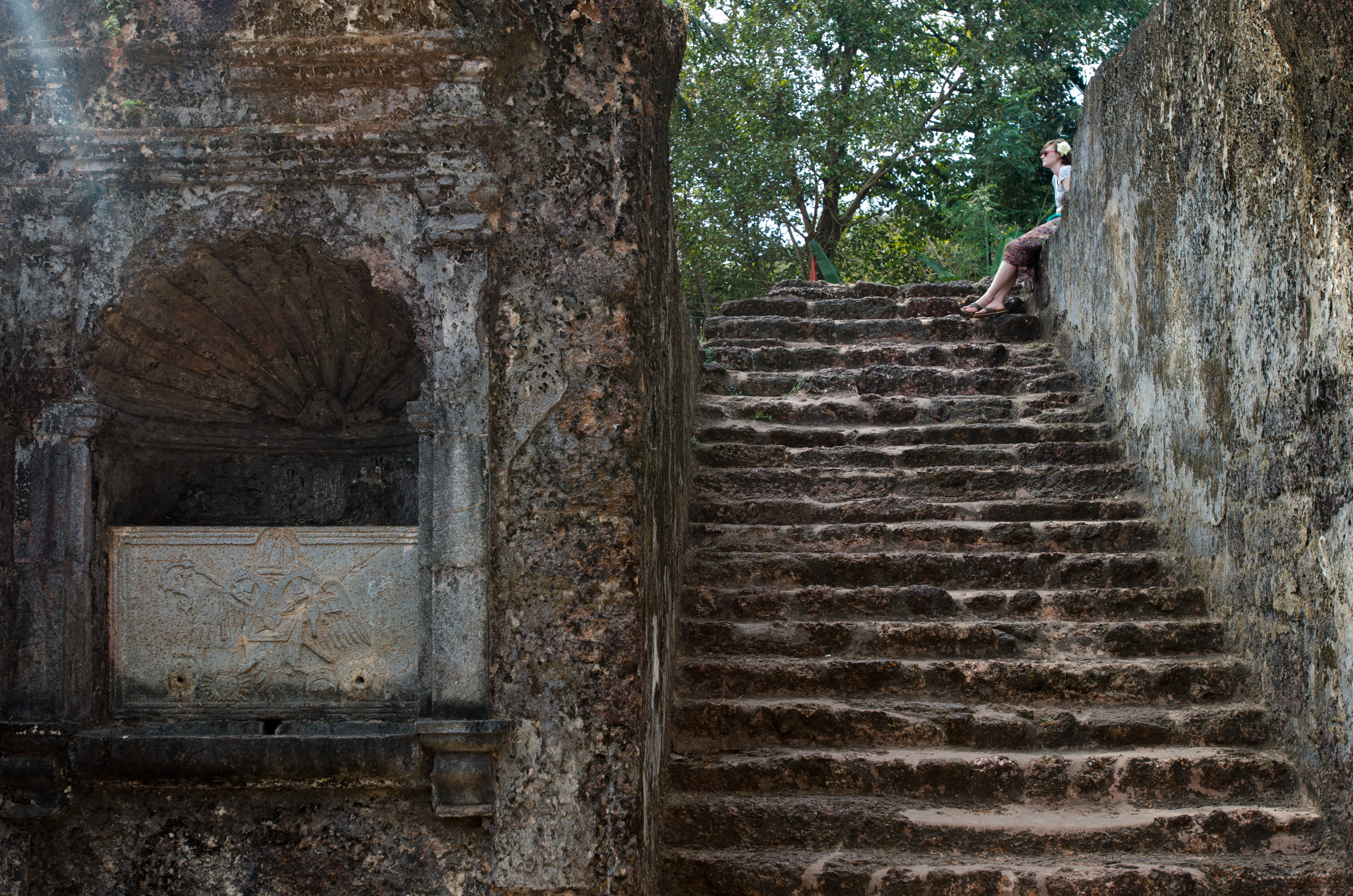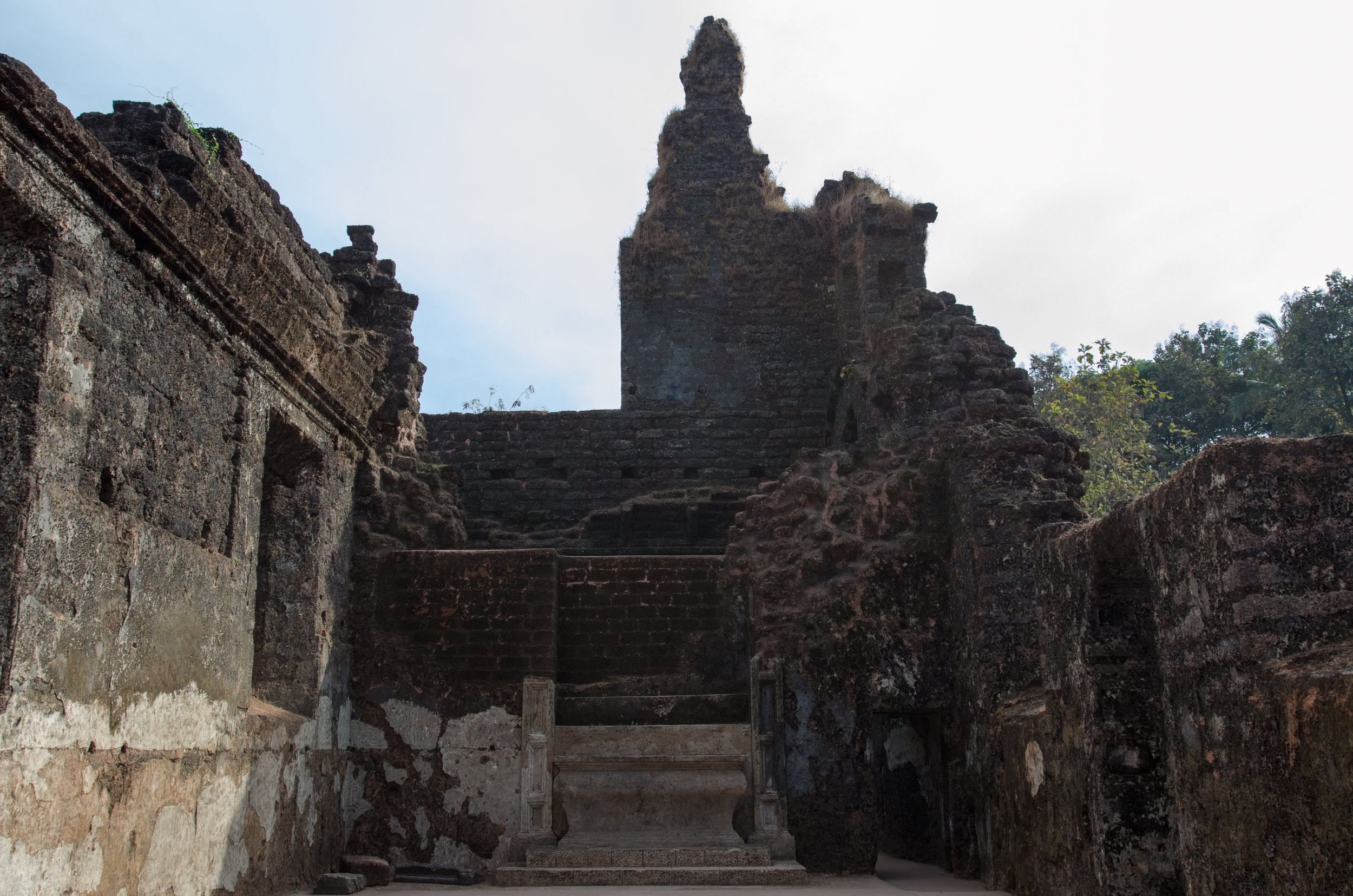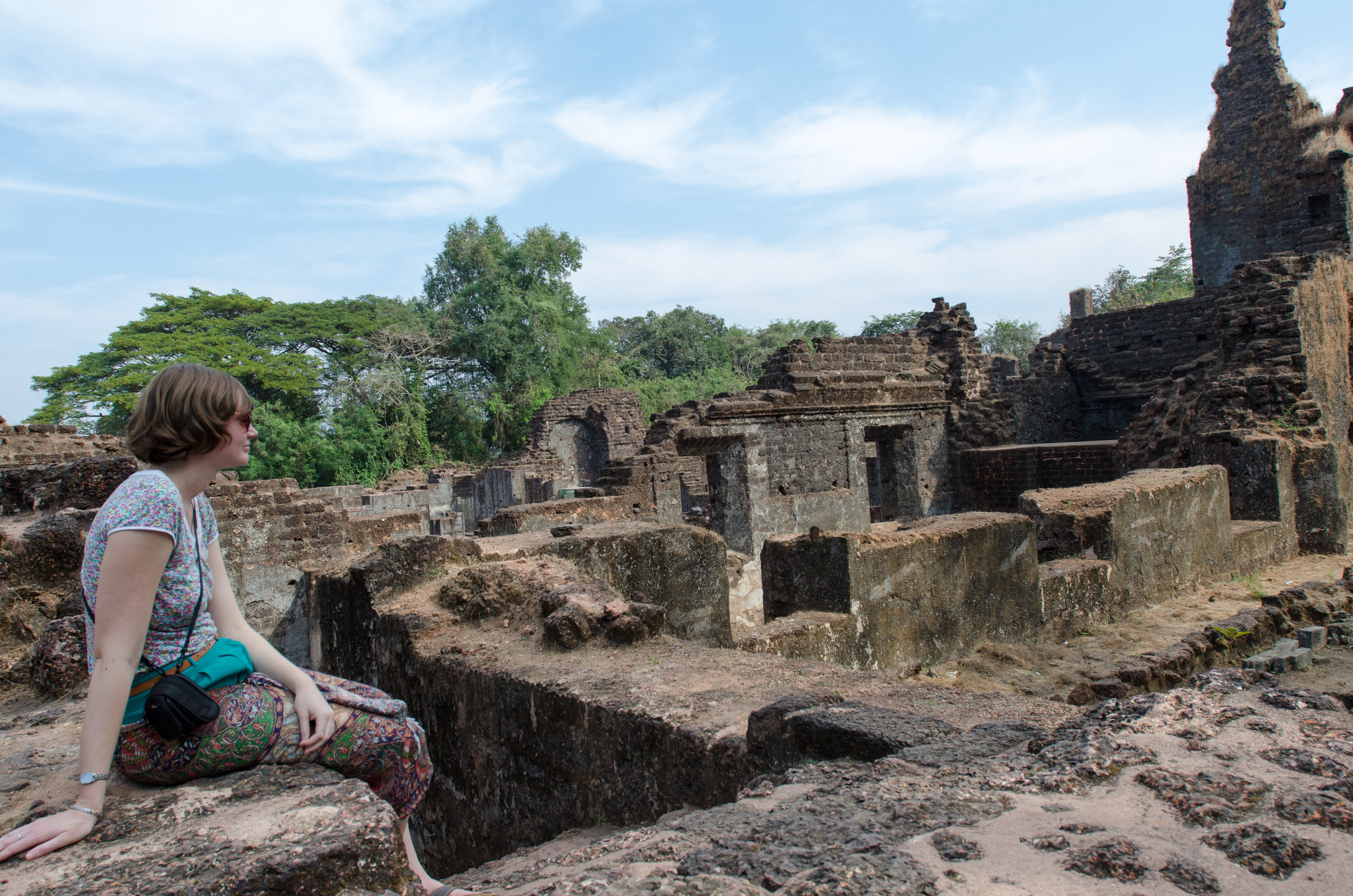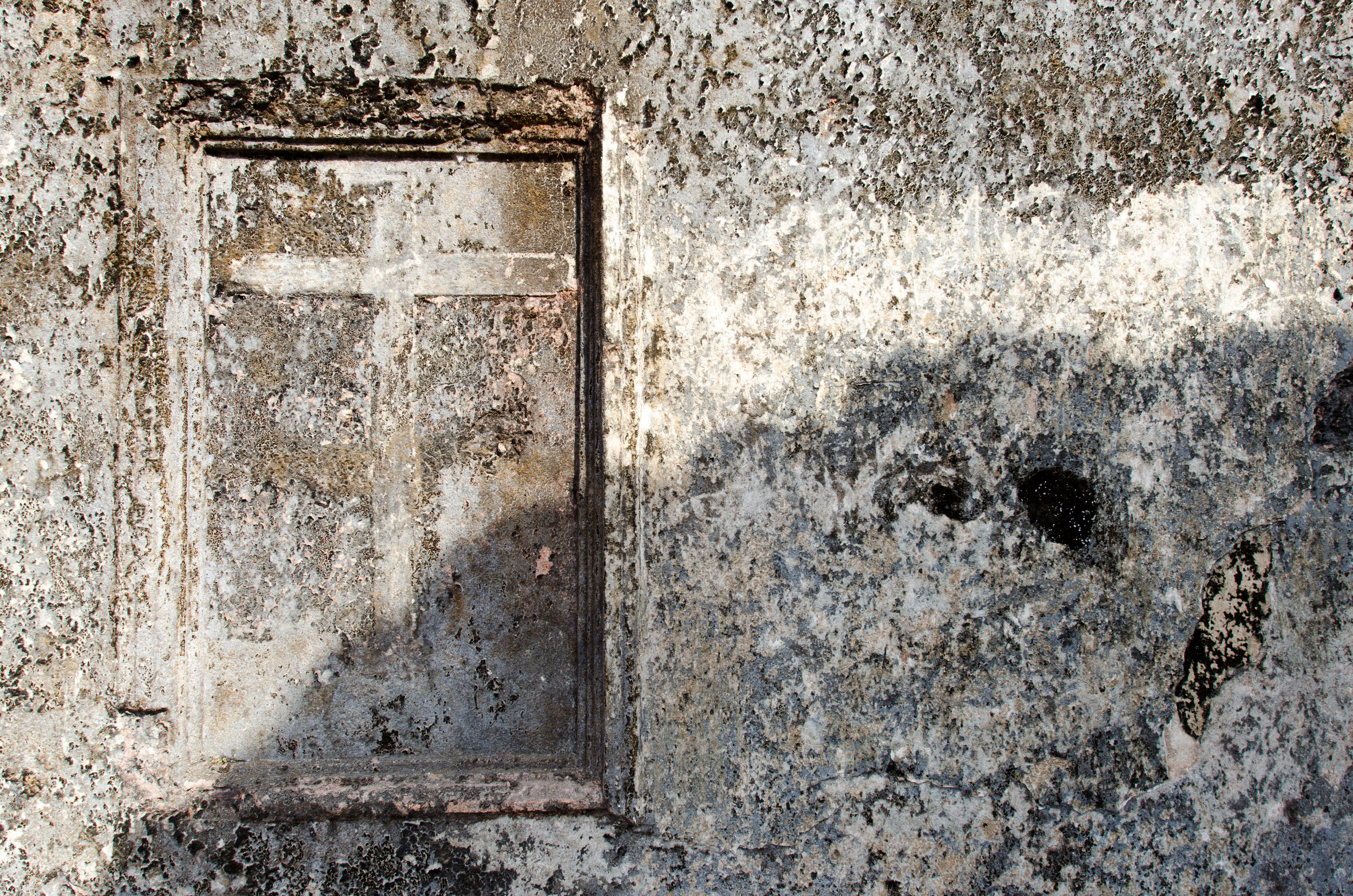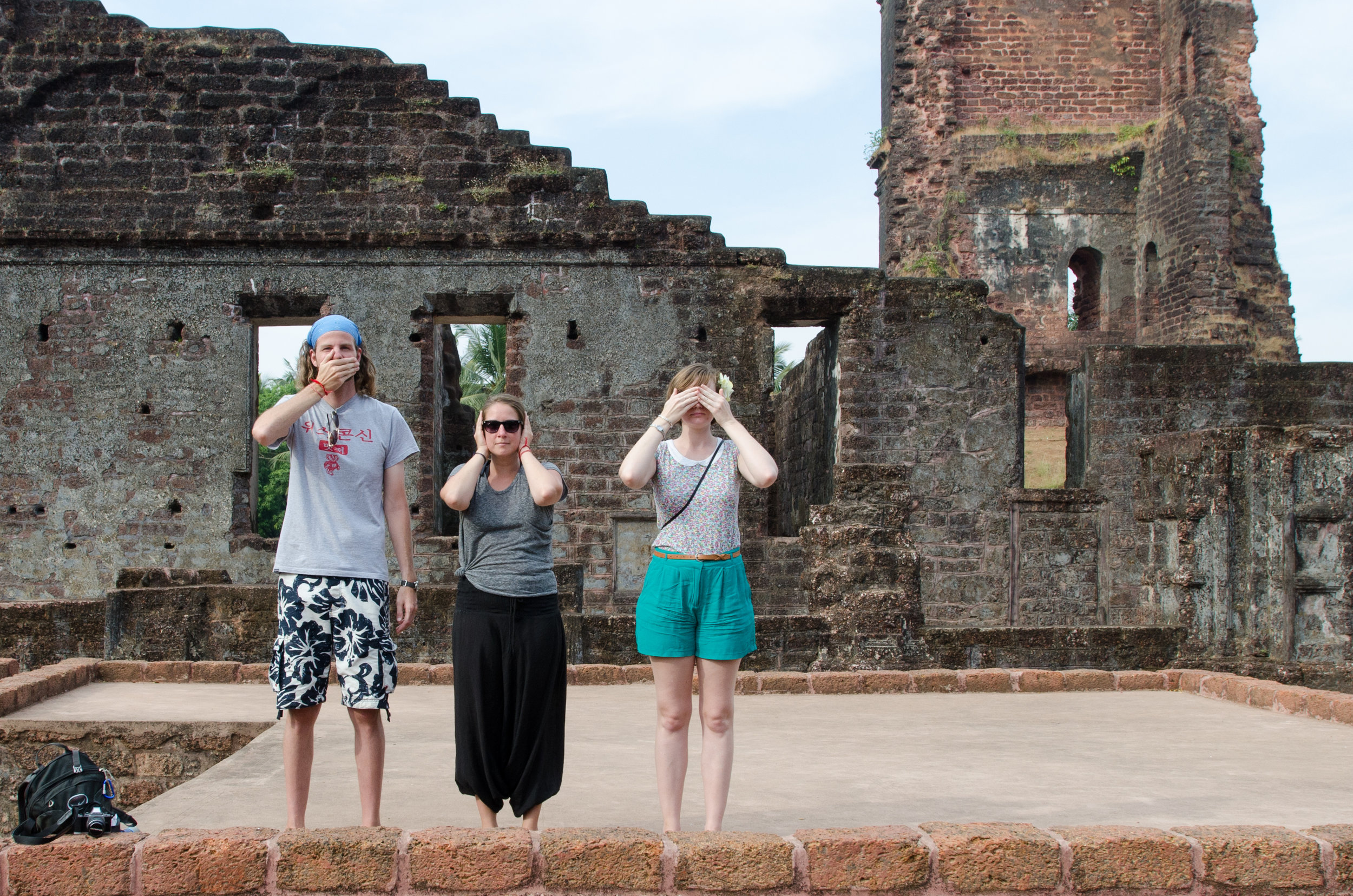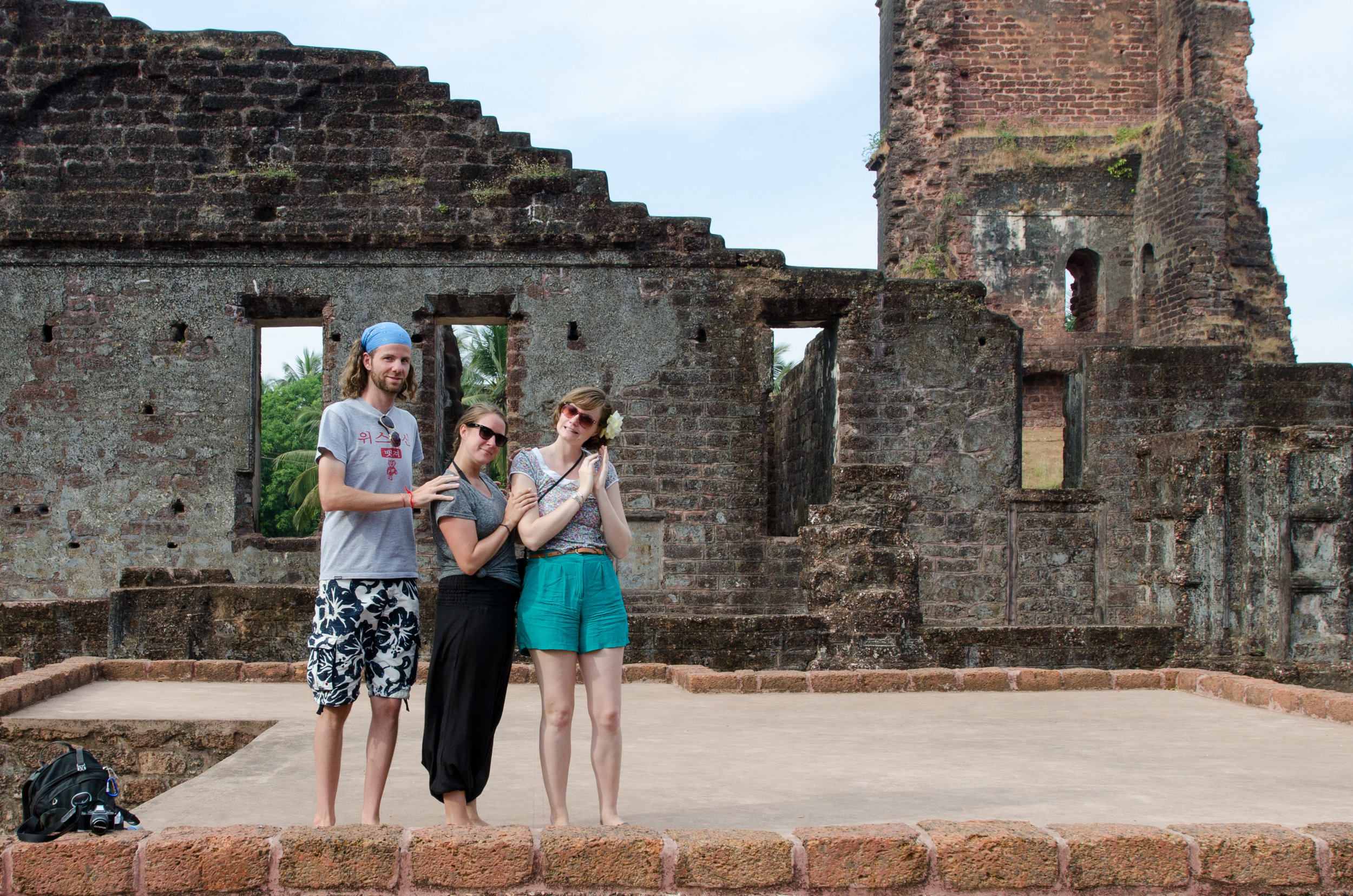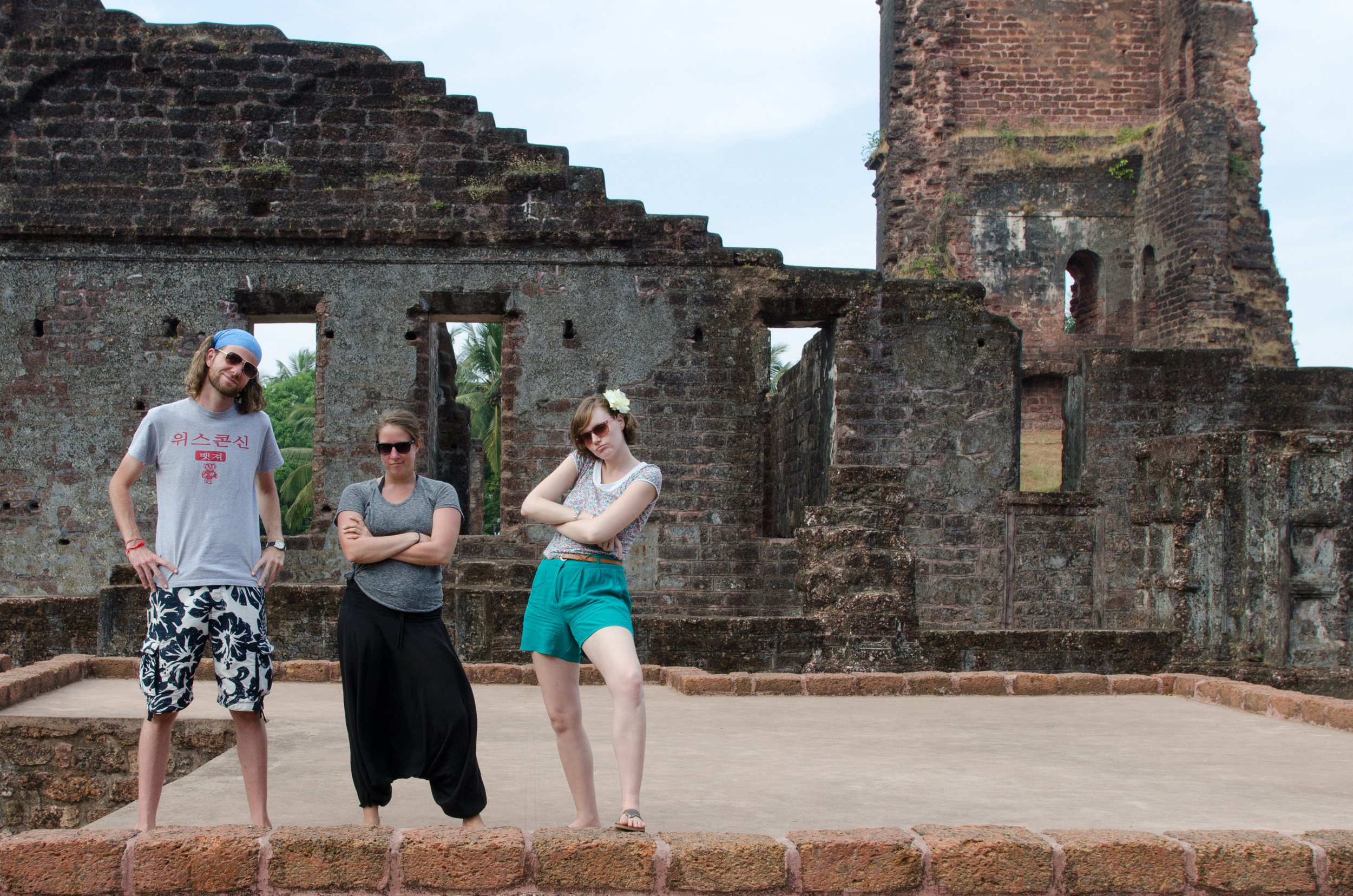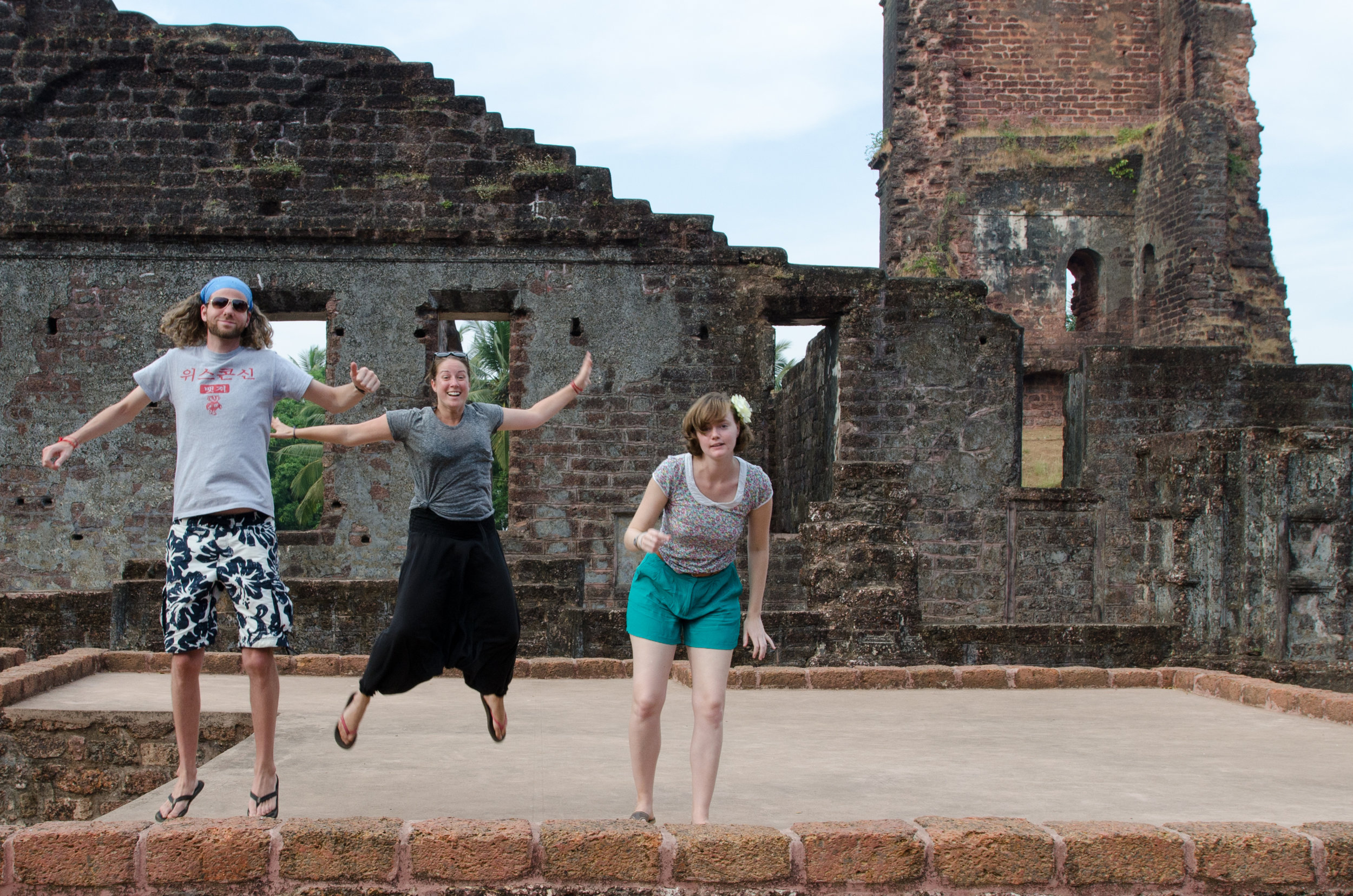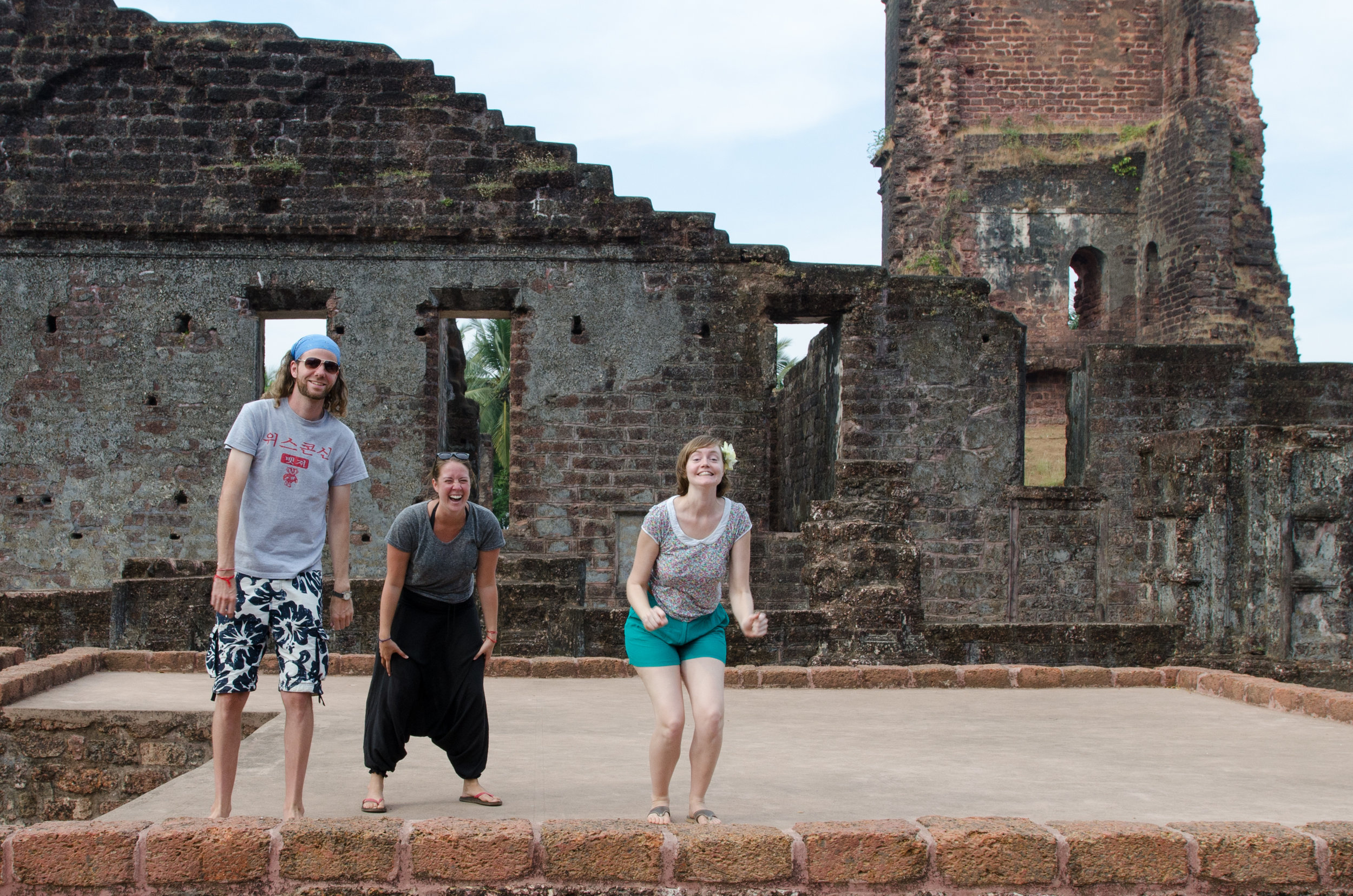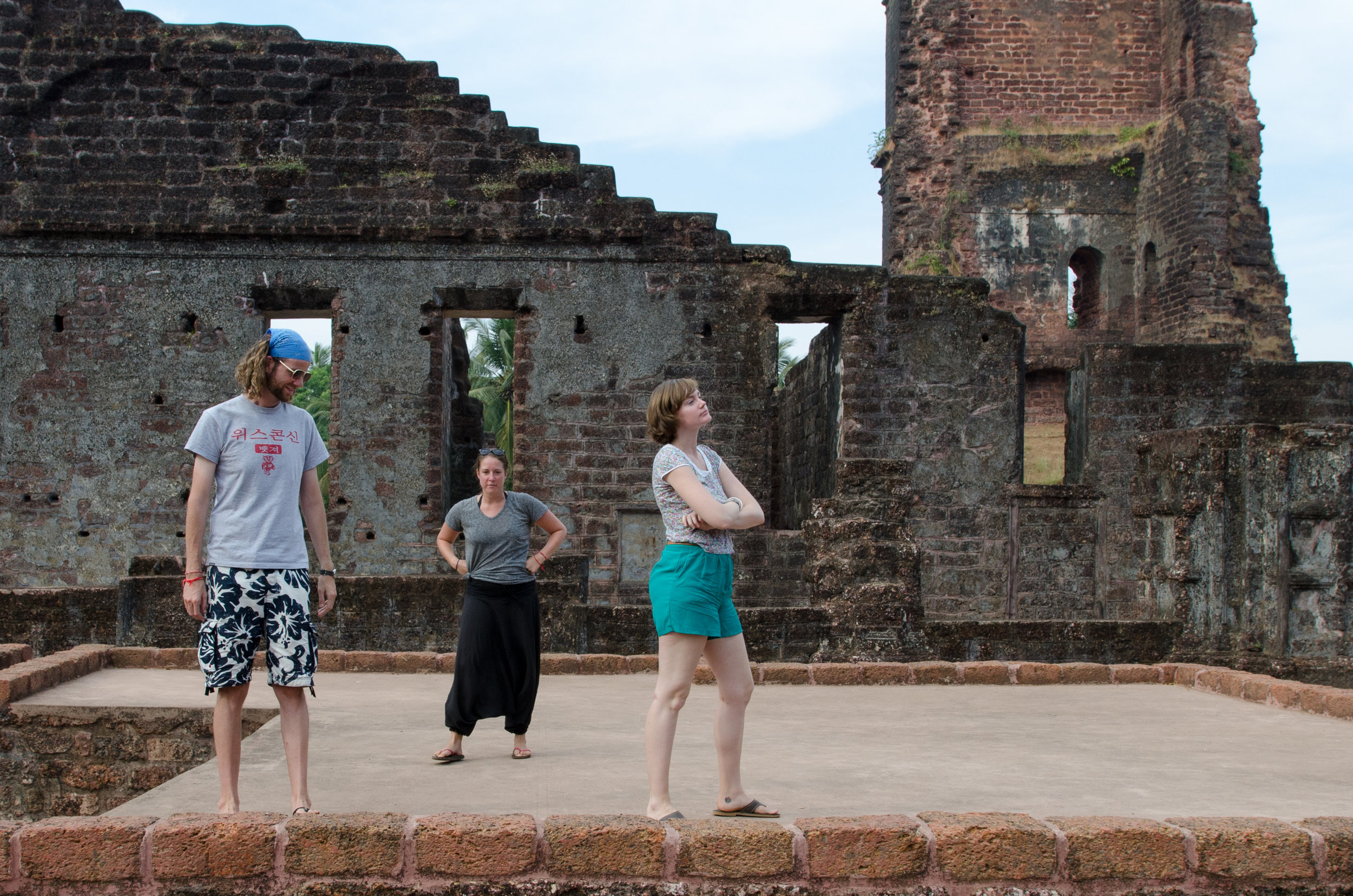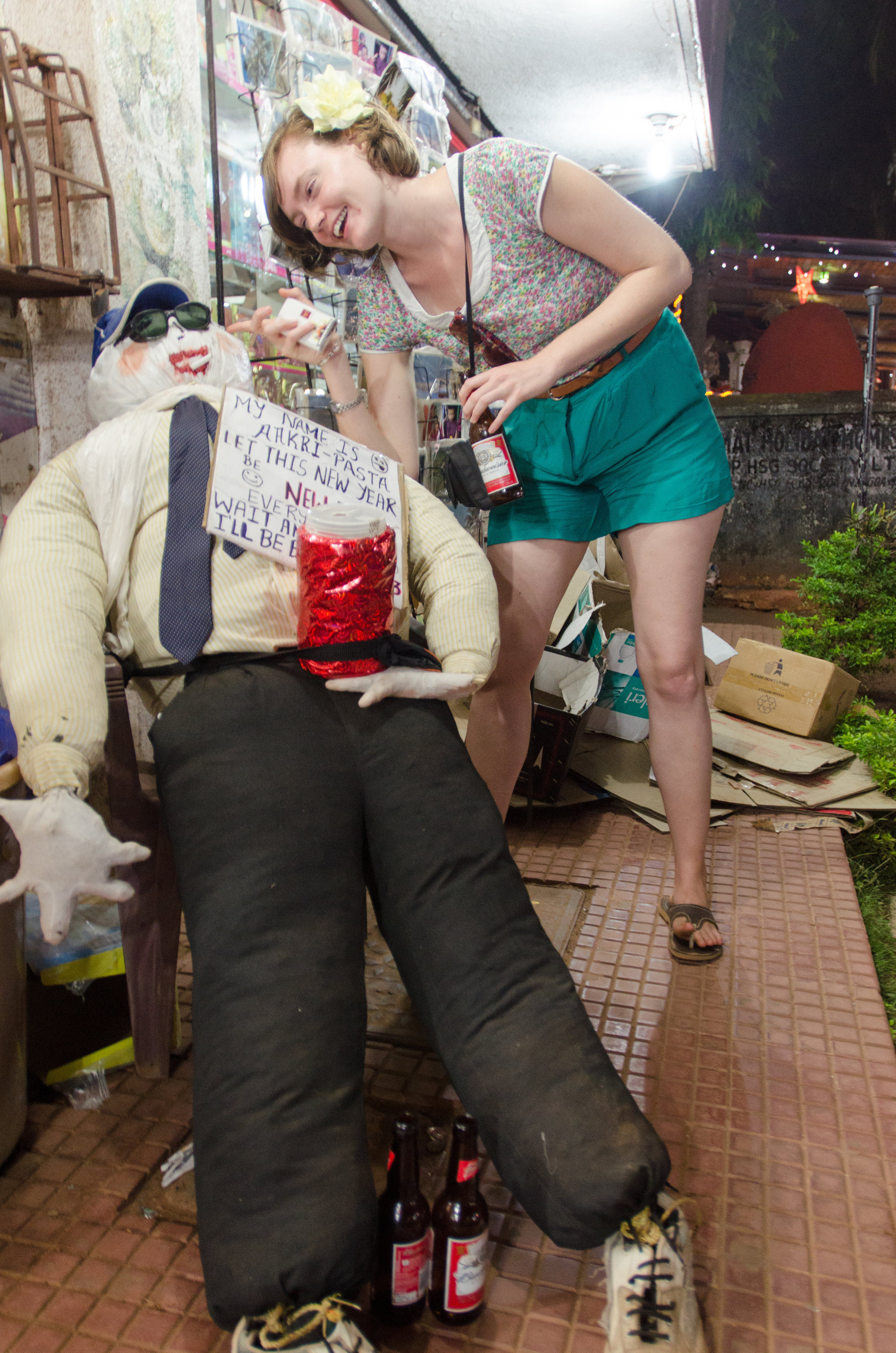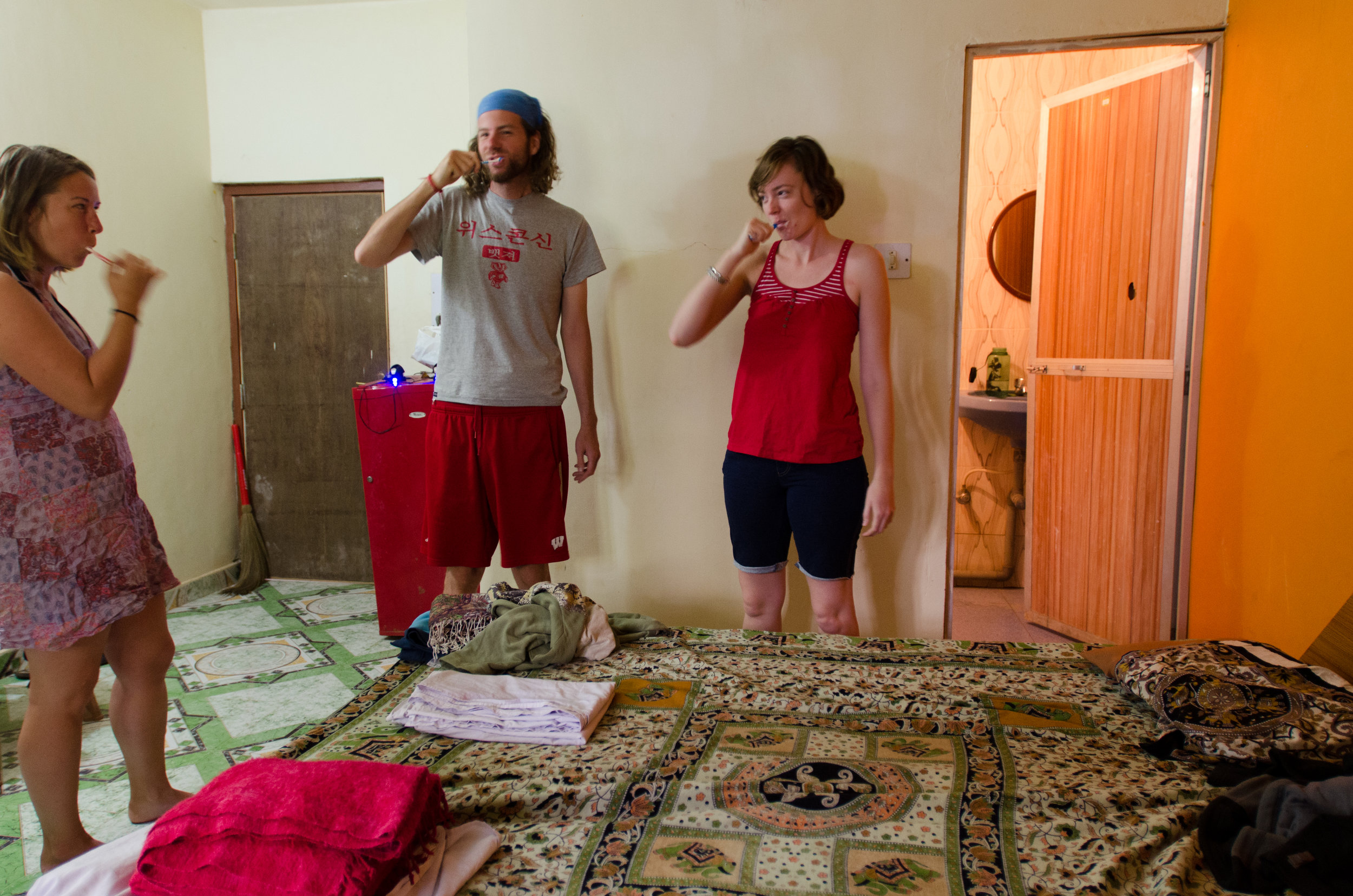First stop: The Moulin Rouge. Just the outside of it… But I have to admit, I’ve been inside to see a show and was aghast when our guide mentioned how expensive tickets were! He mentioned tickets being around 200 euros! I nudged Andrew, insisting it was a good thing I went when I did. Upon closer inspection, however, it’s possible to get tickets for just 50 euros (without dinner of course.) Our guide explained the past of Moulin Rouge, once owned and operated by prostitutes who later figured out they could raise their skirts without putting out and make just as much (and these days more)? All of the current dancers are formally trained in dance and it’s highly competitive to work at the Moulin Rouge. Speaking from experience, their training shows, and seeing a performance while you’re in town is well worth it.
We began our ascent up the hill. Remember Amelie? This is the cafe where she worked! We took a few pictures, and kept going on our way. It seemed like everyone inside was a tourist and no one seemed to mind the photographs being taken over and over again of the façade… At least, I don’t think…
We kept going up, past the house where Van Gogh lived and his view of Paris (which you can see below). Our guide assured us the view has not changed since he resided here. He then took the liberty to talk about how dismayed all of the residents of Montmartre are with the amount of tourists and tours that roll through every day. He continued on (and on and on) about how his friend could no longer afford to live in the area and was moving to Spain. Andrew and I agreed after, as we were on a tour OF Montmartre, it probably wasn’t the best timing to complain to tourists about the amount of tourists in same area…
The Moulin de la Galette is a windmill that was operated to make flour for a certain galette (brown bread) which became very popular. Le Moulin de Galette was established for those living (or coming to) Montmartre for wine, bread, music… in other words, a good night out. Renoir’s famous Bal du moulin de la Galette is a depiction of life at Le Moulin! Currently, it’s one of the two windmills still standing (but not operating) on Montmartre.
Next stop: Lapin Agile. We were told this cabaret wasn’t always known by this name. It wasn’t until an artist asked the manager if he could exchange a painting for dinner (maybe a few drinks?) one night. Yet again, according to Wikipedia: Andre Gill painted the sign that was to suggest its permanent name. It was a picture of a rabbit jumping out of a saucepan, and residents began calling their neighborhood night-club “Le Lapin à Gill”, meaning “Gill’s rabbit”. Right across the street, a small fenced-in vineyard took advantage of the hillside perfect for growing grapes worthy of a good French wine. And before we knew it, we were rounding the corner and walking up a short street to Sacré-Cœur!
Sacré-Cœur is, in my opinion a beautiful church and as you might have noticed, I think it makes for a beautiful picture even if in the distance from other locations around France. The tiles are self-cleaning, which might explain how it stays so white! Our guide informed us that Parisians were not fond of the architecture and design of the church, as it’s a bit of a melange of so many different styles – both inside and out. We ducked in for a few minutes, but photos were prohibited, so you’ll just have to visit the beautiful church to see what the inside looks like! (It’s definitely not nearly as bright as the outside, that’s for sure!)
We began to descend the hill walking through what we hoped were the lesser traveled streets. Past the crêperie and past the many, many poster and trinket gift shops, stopping only for a photo or two. It was beautiful, yet we were exhausted. There are some days on this trip that no matter how magnificent they are, they can be equally exhausting. We had moved our things across town yet again the night before, didn’t get a great night of sleep, and then were up early to catch this tour. We had already checked out or our hotel because we had booked an overnight bus from France to England that night. The tour ended around noon, which left us with precisely 12 hours to kill before our bus, which normally would have been fantastic, but we were exhausted. I began to cry, Andrew abruptly turned around in the middle of a beautiful Parisian street with a marvelous view, and began to hug me.
I always feel incredibly silly when I get sad, or simply tired and let my emotions get the best of me on this trip… But it happens. Thankfully, Andrew understands the grind (as he’s right there with me) and never holds my tears against me. He reminded me we were going to see our good friend James the next morning and how he was going to take care of us in England for a few days. He also, as always, reminded me I was just tired and would feel better after food and sleep.
Later on, we met up with the girl who let us crash in her apartment while she was out of town. She had traveled through Asia on her own and while we were trading stories, she laughed about how some days she would be so tired she would be more interested in a bench in the park (to sleep on) than a famous site in front of her that she was supposed to see. I nodded in agreement, understanding all too well.
On our way down, we walked down Rue Seveste. It was dedicated to all things fabric! Instead of channeling Project Runway, I took a picture and vowed that next time I would pick up a yard or two. Also, lots and lots of thrift stores. Not the kind you go to when you’re as tired and hungry as we were though. You clearly had to dig for a good find here! Again, maybe next time!
We jumped on the metro and headed across town towards the Vietnamese/Chinese neck of Paris. It was a bit grungy, but again, a new side of Paris and I was anxious to see it and take care of a noodle craving. Per Andrew’s research of which was the best, we ended up at Cyclo. It was… ok. I try to keep in mind that not everyone has sat on the side of the street in the likes of Hanoi or Hoi-An or even Saigon on a little plastic chair eating noodles out of a bowl that may or may not have been washed after the person before you. Not everyone knows that you should be given an additional bowl full of fresh mint, another of freshly cut limes, and a squeeze bottle so full of hot (like really hot) sauce to season your noodles and beef broth to taste. Perhaps the editors of TimeOut Paris simply don’t know what they are missing. But when two bowls of noodles were delivered to our table sans mint, lime, and hot sauce… I was sad not because of how tired I was, but because my noodles were going to lack the flavor they deserved. Maybe this is why everyone else eats French food in Paris… and not lackluster Vietnamese… like we did.
Luck was simply not in our favor for the rest of the afternoon. We attempted to go to one of the many markets in and around Paris that I have not had the luxury of being able to stroll through. I had done my homework (i.e. several Google searches) the night before. I found a pretty detailed Time Out list (although maybe after the Vietnamese fiasco, we should have thought otherwise). We headed to Marché aux Puces de St-Ouen, only we were way too late. Everything was closed. I assured myself it was for the best. The last thing I needed was an antique I simply couldn’t live without that was larger than a bag I could carry-on an airplane (my favorite kind of souvenirs). We walked around before giving up, retrieving our bags, and heading across town yet again, only this time to meet our couchsurfing host for a drink before boarding our midnight bus to London.
